Post by kerouac on Aug 12, 2012 11:14:30 GMT -5
While I consider these gardens to be lovely all by themselves, I think that if you know a bit about Albert Kahn first, it makes the experience all the more exceptional.
He was born in Alsace in 1860 in a cattle family, and his mother died when he was 10 year old, the year the Alsace and Moselle were annexed to Germany. The family moved west to stay French and settled in the Marais in Paris when Albert was 16. Perhaps already understanding things to come, it was at age 19 that he became Albert Kahn -- his birth name was Abraham.
He worked at various jobs, went to university, and entered the banking profession. He was very much ahead of his time in terms of globalisation because he became very wealthy in 1893 by speculating on gold and diamonds in the Transvaal and founded his own bank in 1898. Still totally global, he invested massively in the Far East and more particularly Japan. He became friends with the ambassador of Japan, so much so that he even came to the notice of the Japanese imperial family.
Banking and finance was not at all his principal passion, however. In 1893 he rented a mansion in Boulogne, just outside of Paris. In 1895, he bought it along with 4 adjoining parcels of land and started building a garden. He continued buying the surrounding land until 1910 -- another 20 parcels and the houses that were on them. And his garden grew.
First there was the French garden, including a conservatory and then an ornamental orchard. Next came the English garden and then the Japanese garden. Japanese gardens were all the rage, because his neighbour Edmond de Rothschild already had one. But he brought gardeners directly from Japan to create his garden and even imported Japanese houses to place in it, including a tea pavilion. The largest addition was a 5-story pagoda, which was destroyed by lightning in 1952.
He was not finished yet, because he added woods to the garden. There was the "blue forest" with cedars from the Atlas mountains and Colorado spruce, which he hoped would symbolise harmony between the African and American continents (you can't get everything right!). He created a forest from the beloved Vosges mountains of his youth, even going so far as to have two sides to it -- fir and spruce with granite on the side representing Lorraine and pine and sandstone to represent the Alsatian slopes. There was also the"golden forest" with birch trees, a meadow and a swamp. These were his "gardens of the world" and of course he invited all of the personalities of the time to come and see what he had done. A rich man's folly.
But wait... the gardens were not even his principal interest. He really had a lot of money, so he made a trip to Japan in 1897 where he found his friend the former ambassador and various nobility. At the University of Tokyo, he was presented with 3 golden bowls, a gift from the Emperor himself.
And in 1898, he created a system of incredible travel grants. Young future professors -- both men and women -- were given the means to travel the world for more than a year in order to gain first hand knowledge about the planet. In 1907, he extended these grants to scholars from Japan, Germany, Great Britain and Japan. The recipients were frequently invited to Boulogne to share with the other what they had learned and seen.
But there was still more to come. In November 1908, Albert Kahn left on a voyage to Japan and China, via the United States, and brought along stereoscopic cameras and Lumière motion picture cameras to capture what he would see. He already understood that the old world was disappearing and needed to be documented.
In fact, after his return from the first trip, he left again in 1909 to South America, where he visited Uruguay, Argentina and Brazil, this time accompanied by professional photographers and film makers. The photographs were by a revolutionary new process -- autochromes, also invented by the Lumière brothers. Colour photography in 1909! And until 1931, he continued to send other photographers around the world to capture "the aspects, the practices and the fashions of human activities which will fatally disappear within a matter of years." Autochromes were made of China, Mongolia, the British Raj (India and Pakistan), as well as 20 countries of Europe, including France.
The Albert Kahn collection consists of 72,000 autochromes (largest collection in the world), 4000 black & white photographs and about 100 hours of films from 50 countries. Albert Kahn called this collection "the archives of the planet."
Meanwhile, he heavily financed the University of Paris, but his main interest, just like the contestants in the Miss America pageant, was world peace. This was because of the trauma he experienced from the war of 1870. During the peace conference of 1919, he hosted the Japanese delegation at his residence and took Crown Prince Hirohito to visit his ancestal Alsatian village of Weitbruch.
The world has no place for dreamers. His entire forture was wiped out in the stock market crash of 1929. All of his possessions were seized by his creditors and the government. The government bought the house, gardens, and image collection in 1936 and 1939. The gardens were already opened to the public in 1937. He was allowed to continue living in his house, however.
But in 1940, he died (age 80) right after France surrendered to Germany. So much for world peace. Everything that was left was scattered to various places -- the French national library, the national archives, etc. -- or confiscated by the Nazis since they were "Jewish war spoils," and what the Nazis had taken was later taken by the Soviet Union.
Everything was taken except the image collection, which the woman in charge somehow managed to keep. And so all of that is still in Boulogne. So the gardens are combined with an image museum, displaying various elements of the autochromes and films month after month. At the moment, the autochromes being displayed are from Mongolia around 1912, a lost world in colour. However, there are computer stations at the disposal of the public to allow one to look at anything in the entire collection at will.
I have perhaps babbled on long enough, since the whole point is to show you some of the gardens.
I knew there was one section that I had not yet properly visited, but what else might I have missed? I pulled out my map (you get a good brochure with the 3€ entrance fee) to look at where I had been and where I might go, because I knew that I had only walked on maybe half of the paths in the gardens.
One thing that I really like about the gardens is that they have not been made too "safe" with guard rails everywhere and a completely secure path. There is quite clearly the possibility of tripping and falling if you take some of the more uneven passages. But of course there are plenty of completely flat areas as well so that people with mobility issues are not deprived of anything.
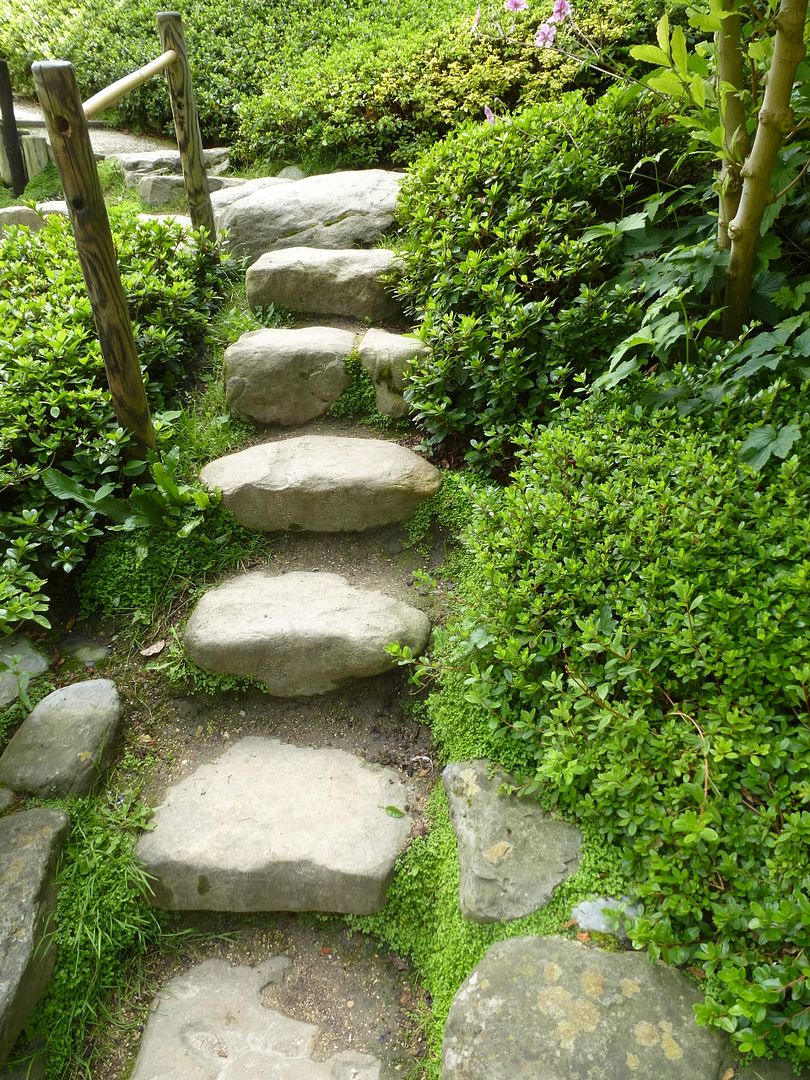
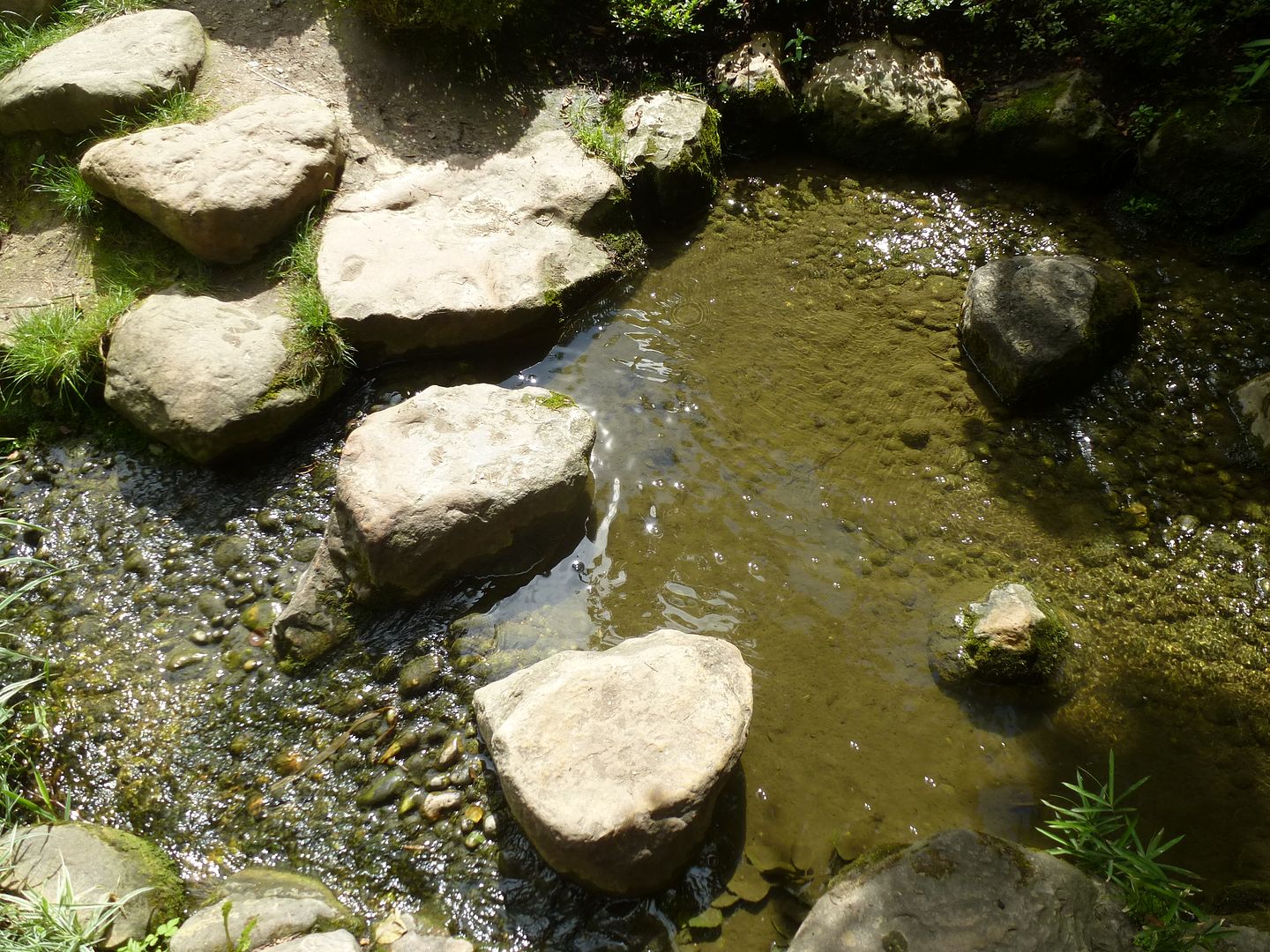
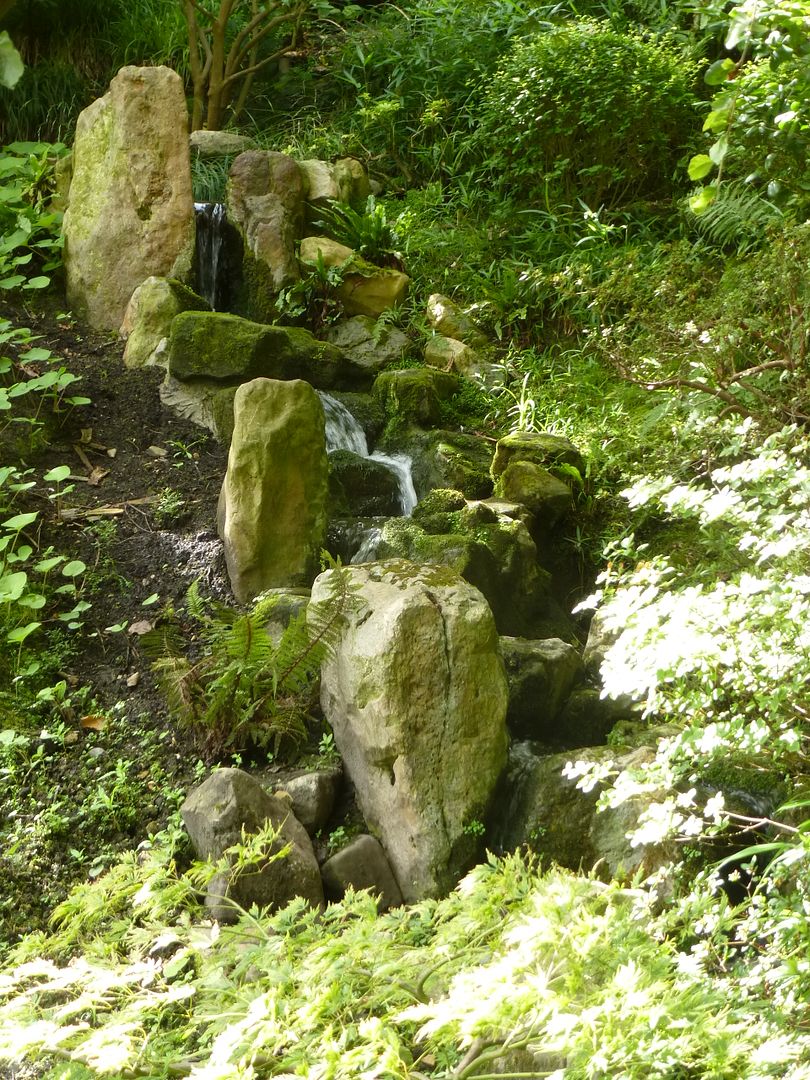
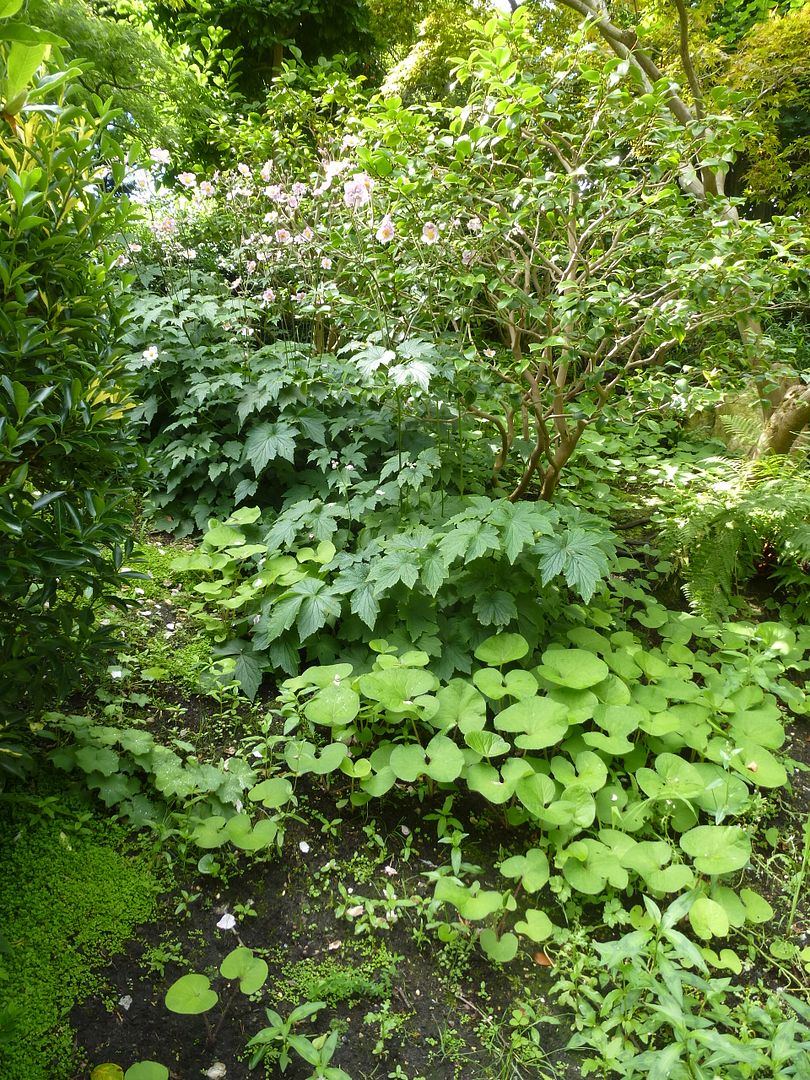
This is the view from that hill that the people were on.
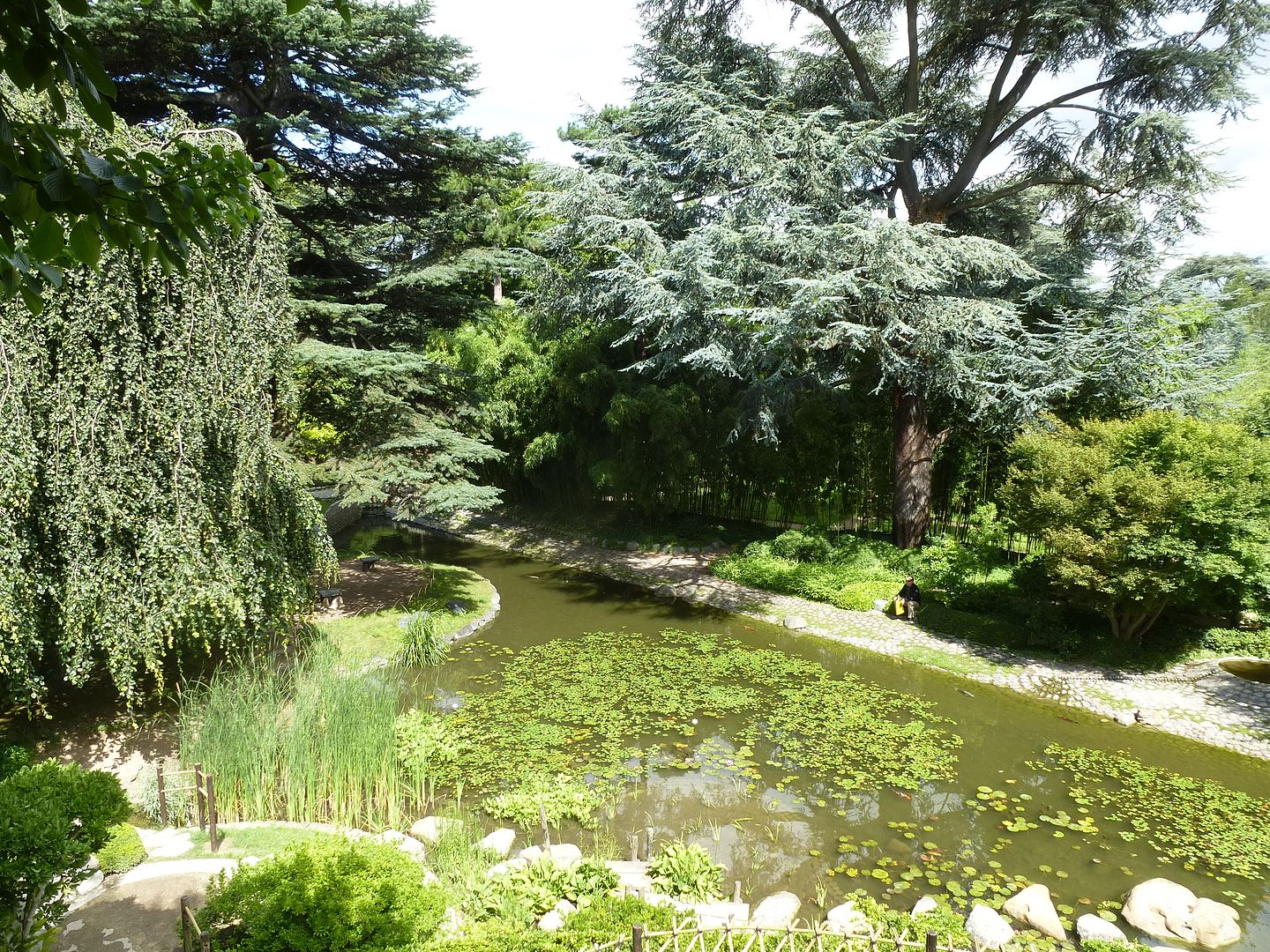
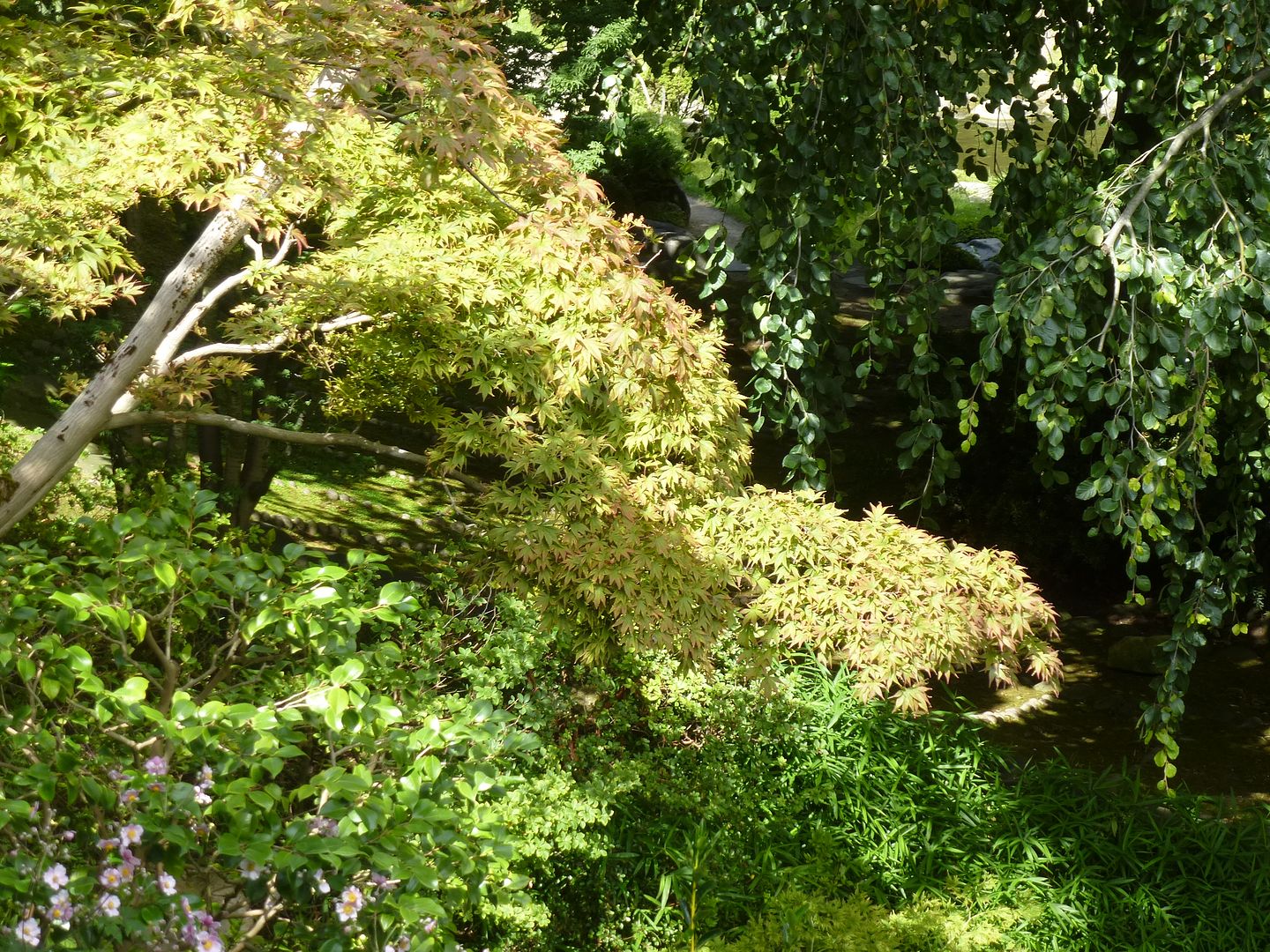
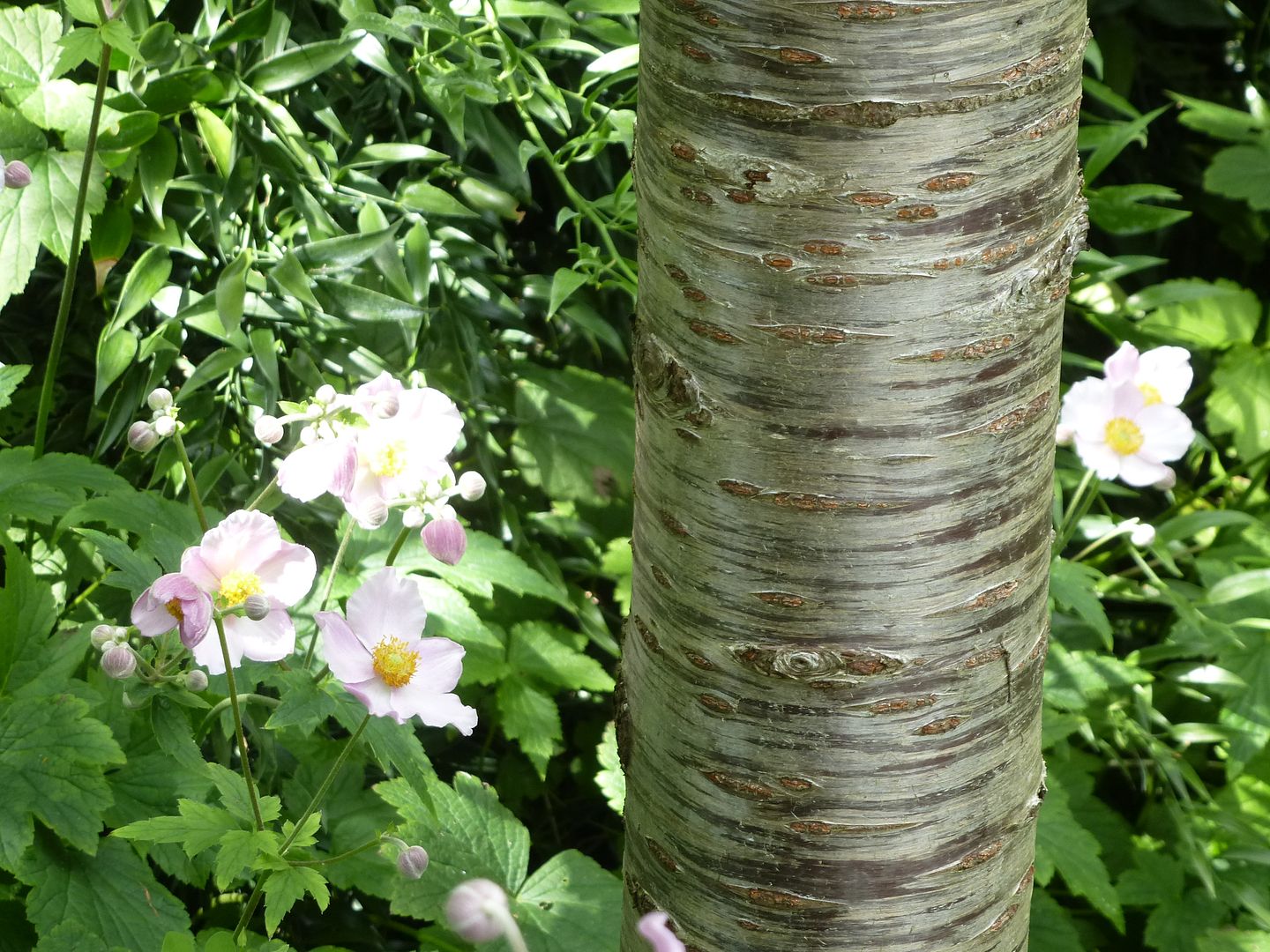
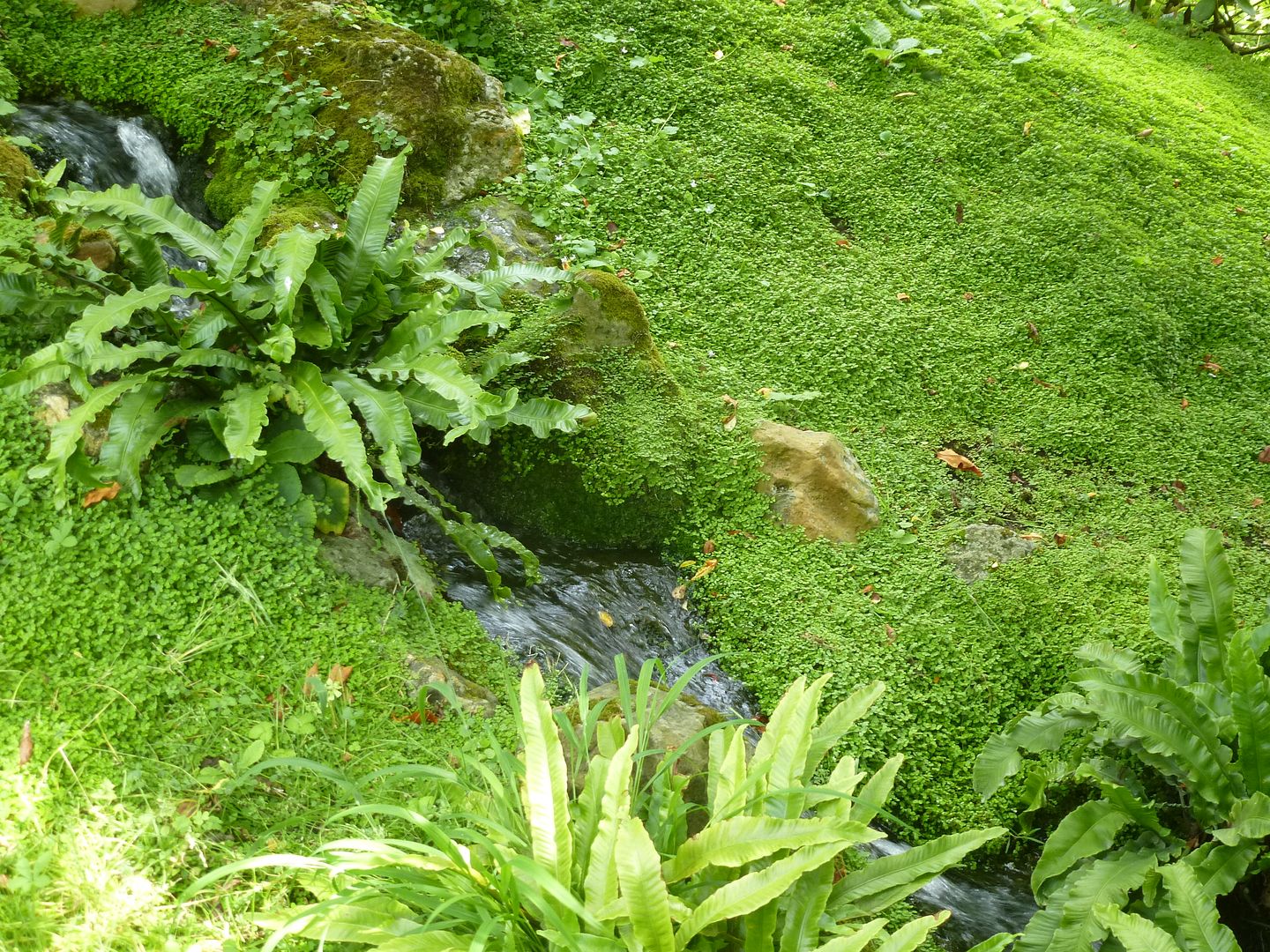
The English meadow does indeed remind me of the park where David Hemmings photographed the mysterious activities of Vanessa Redgrave in Blow Up.
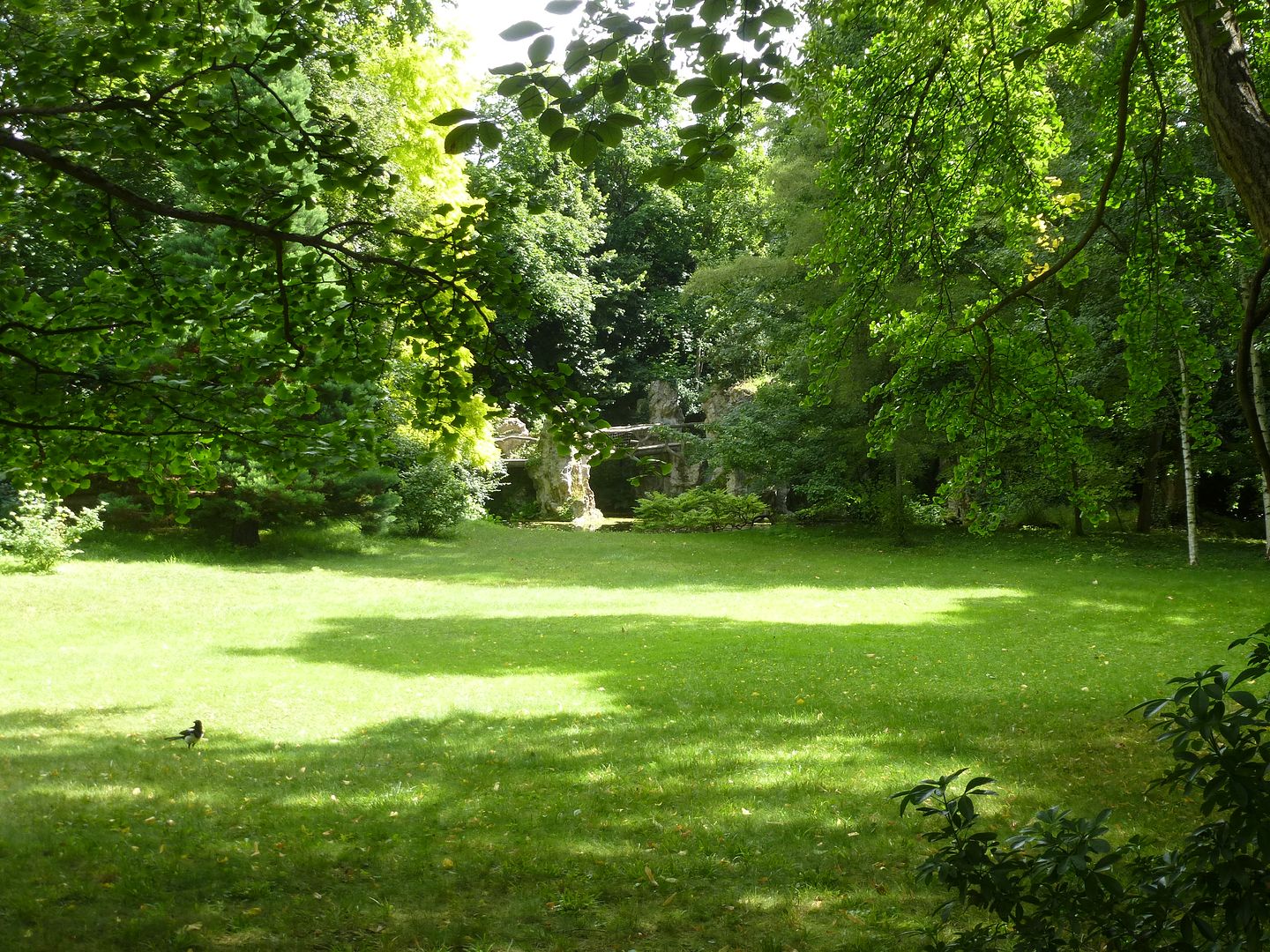
Today only a magpie was going about its business.
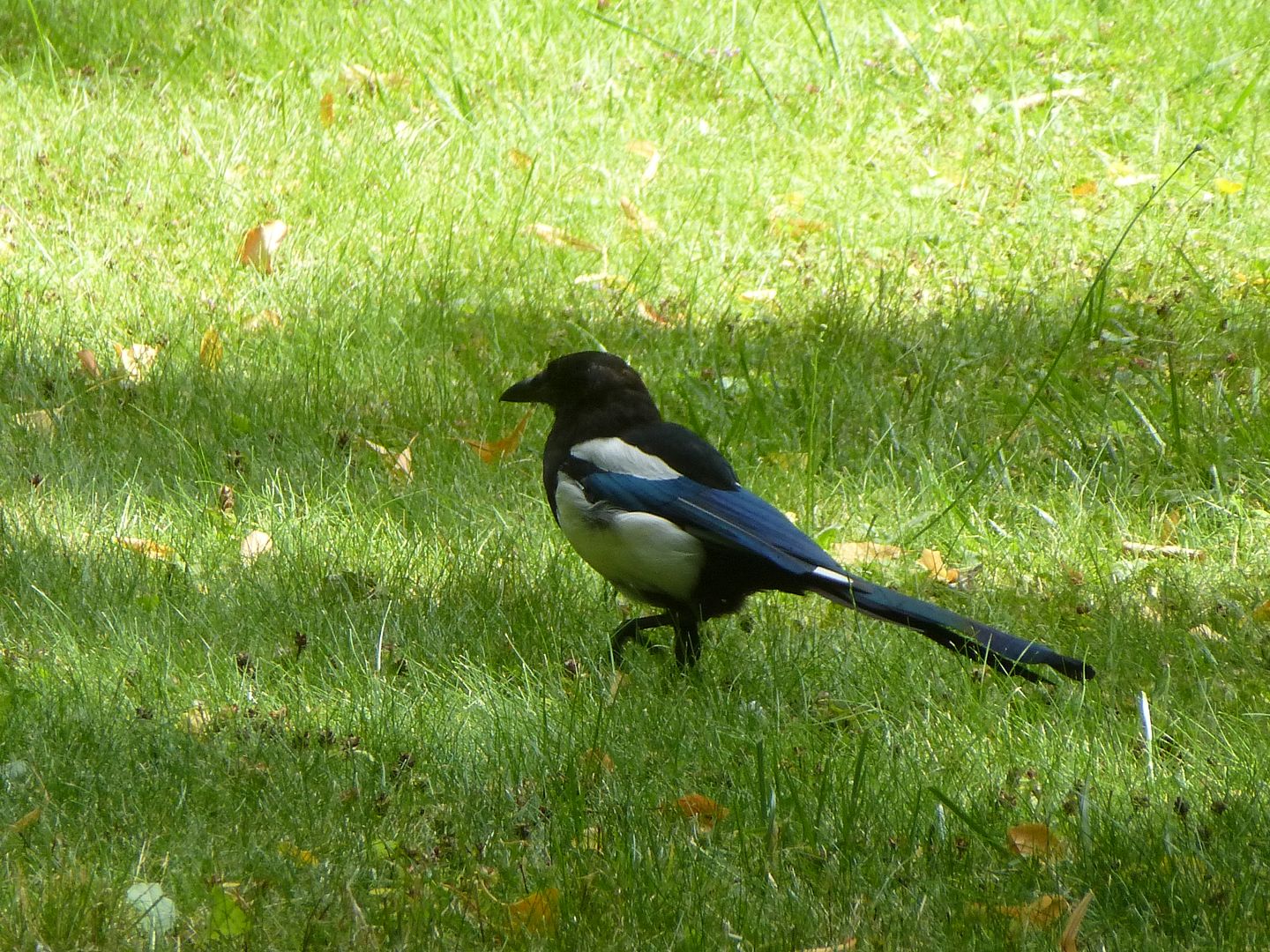
I was drawn back into the Vosges area, which had the most magnificent aroma.
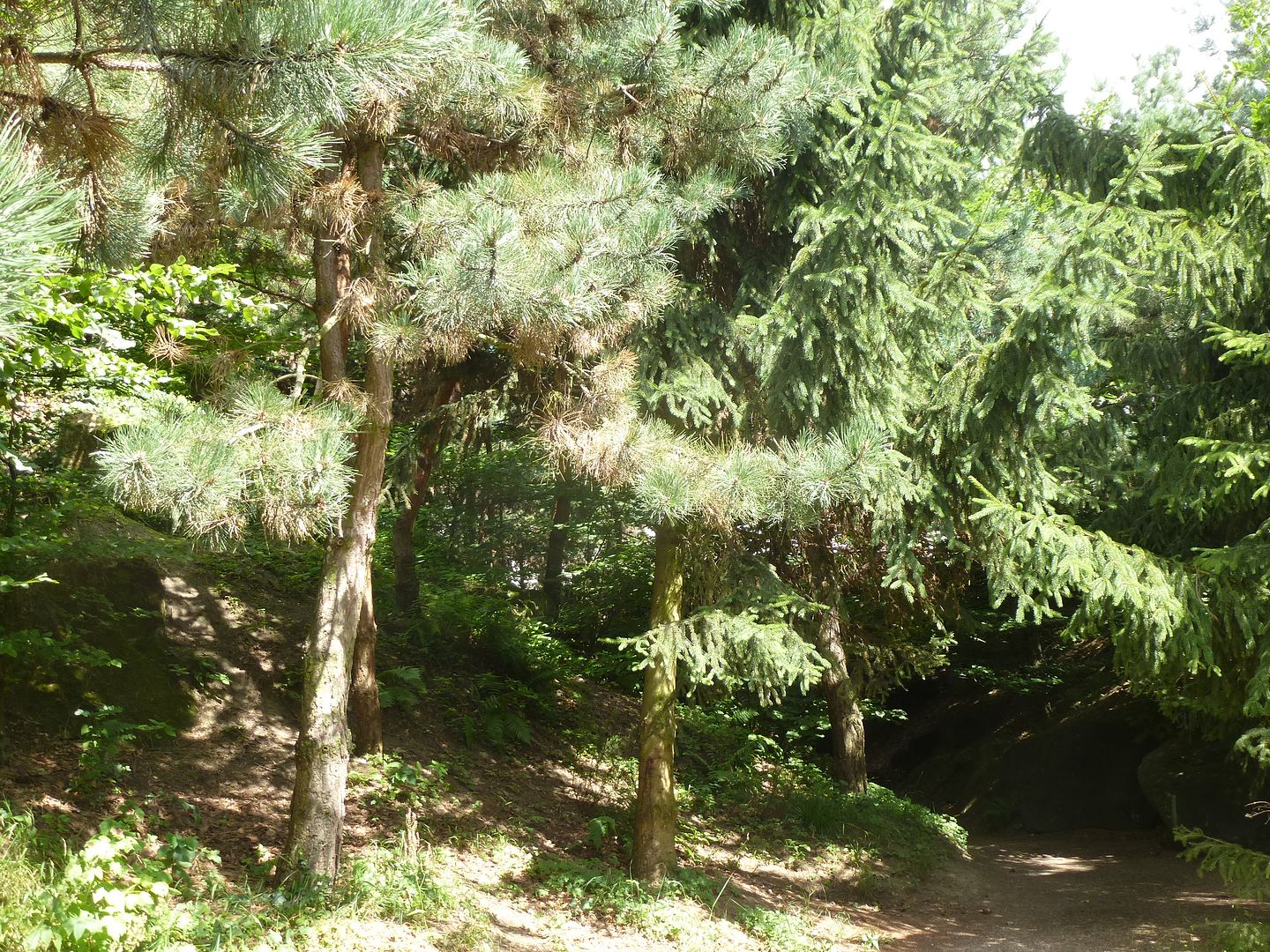
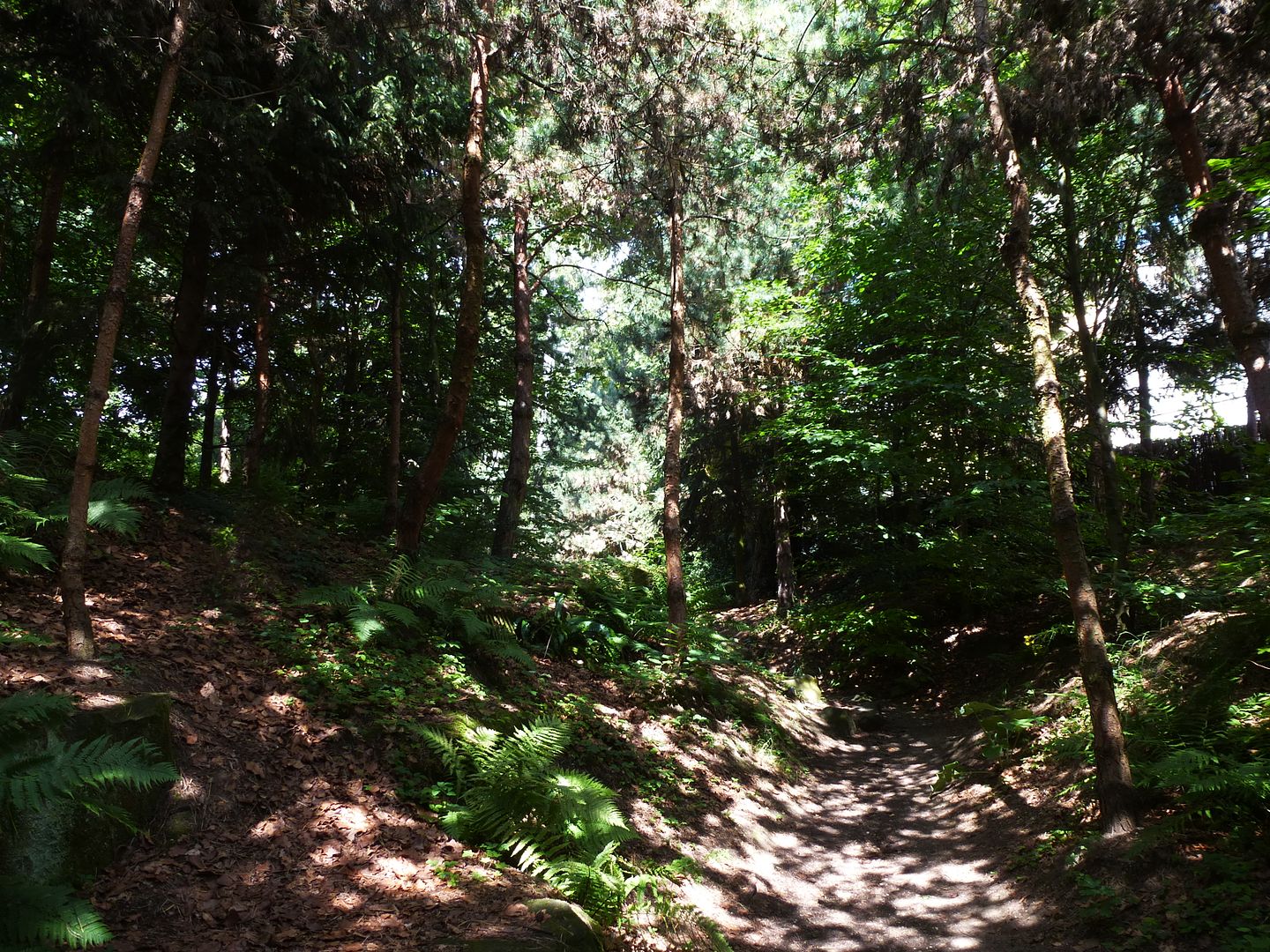
In 1999, most of this section was destroyed by Lothar, the same storm that devastated the real Vosges forests a few hours later. I made a report about it with a few pictures a couple of years ago, because my grandmother and all of her ancestors were from the Vosges. Anyway, they have replanted, and fir trees grow quite quickly -- which is also why they are so fragile in high winds.
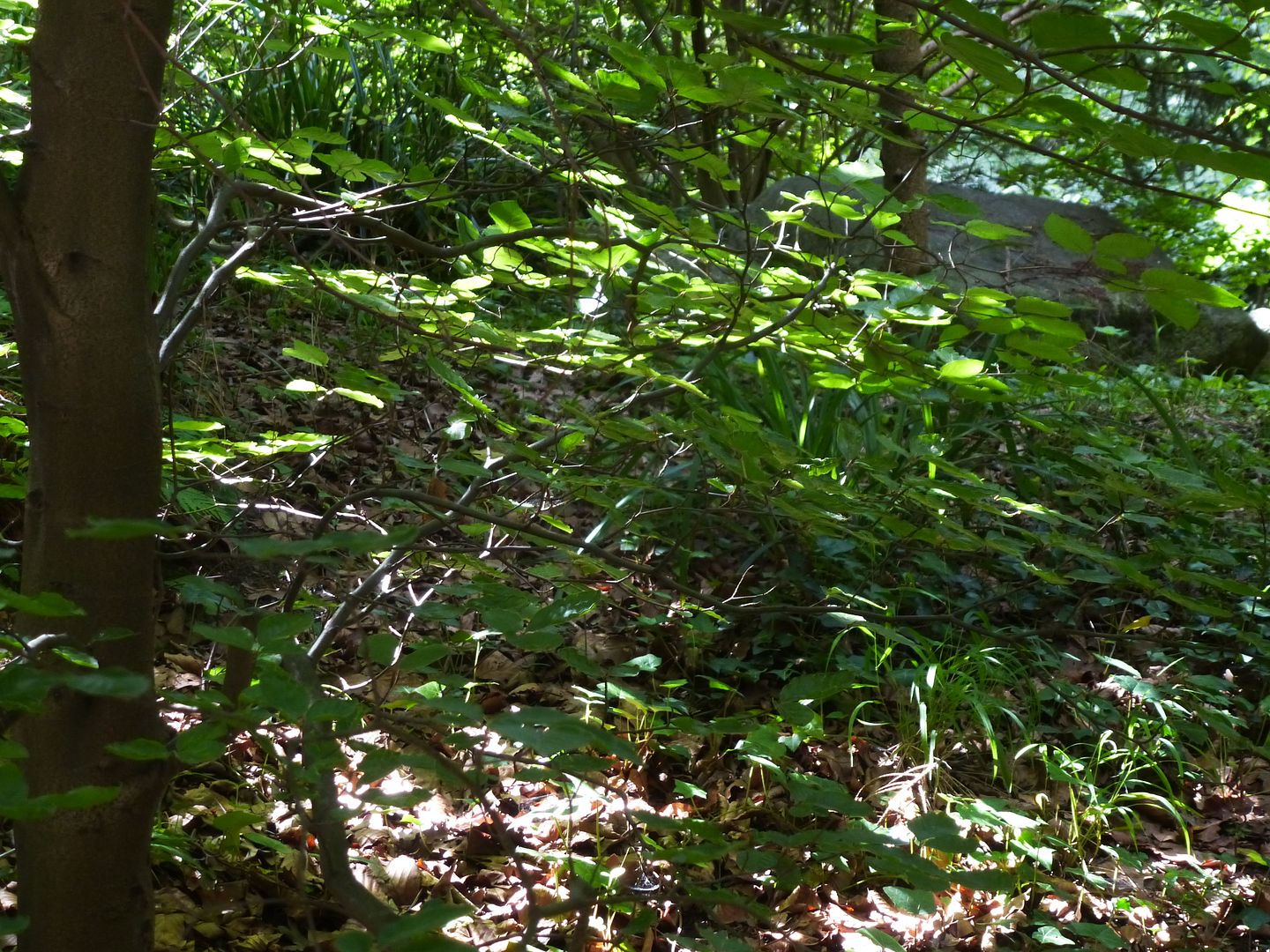
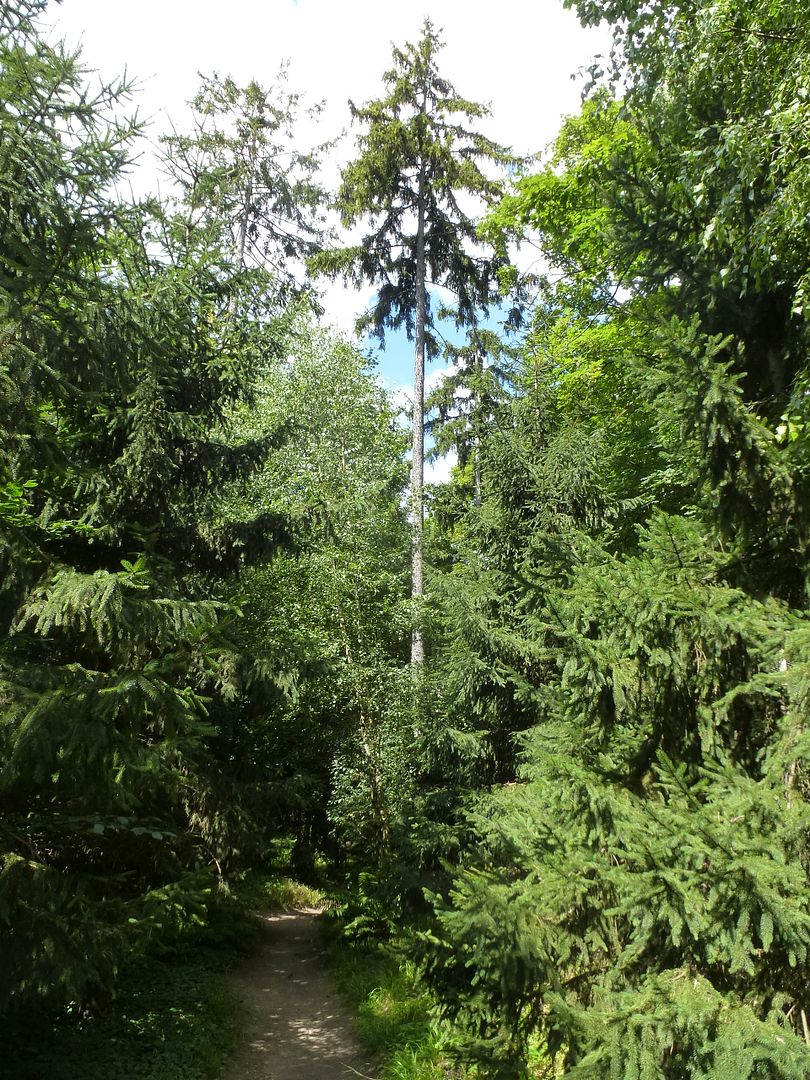
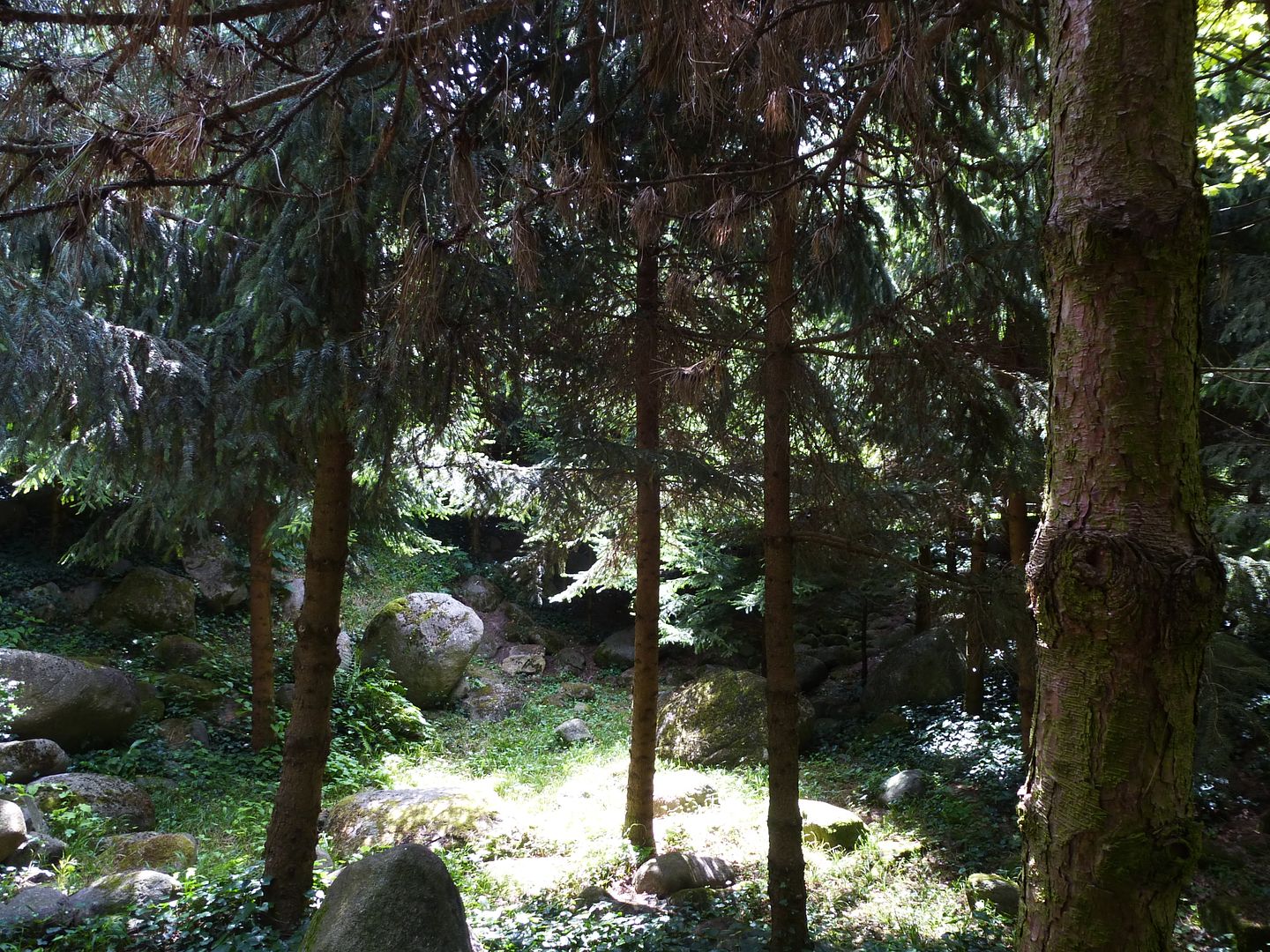
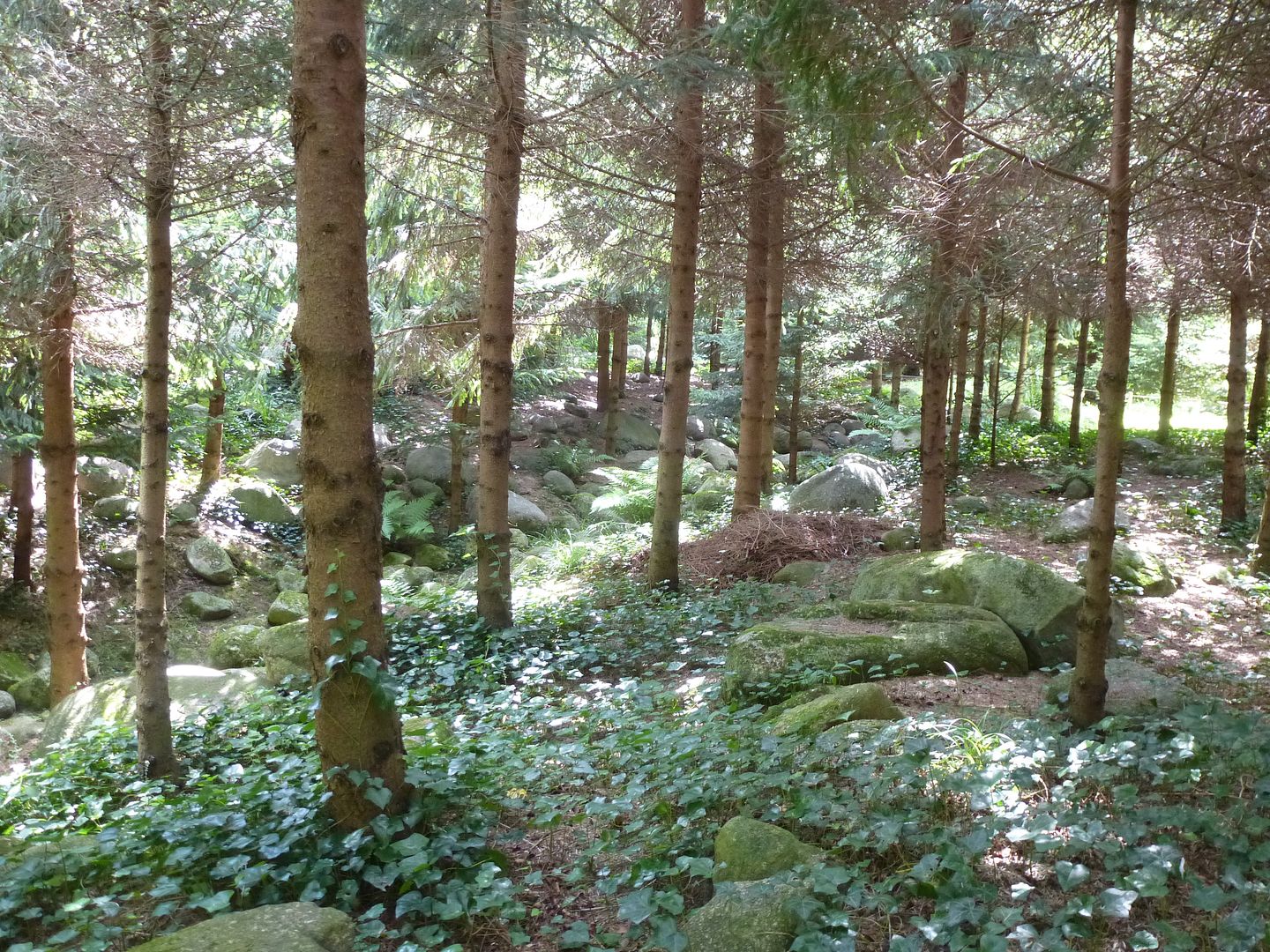
Leaving the Vosges I passed through the corner of the golden forest of birch...
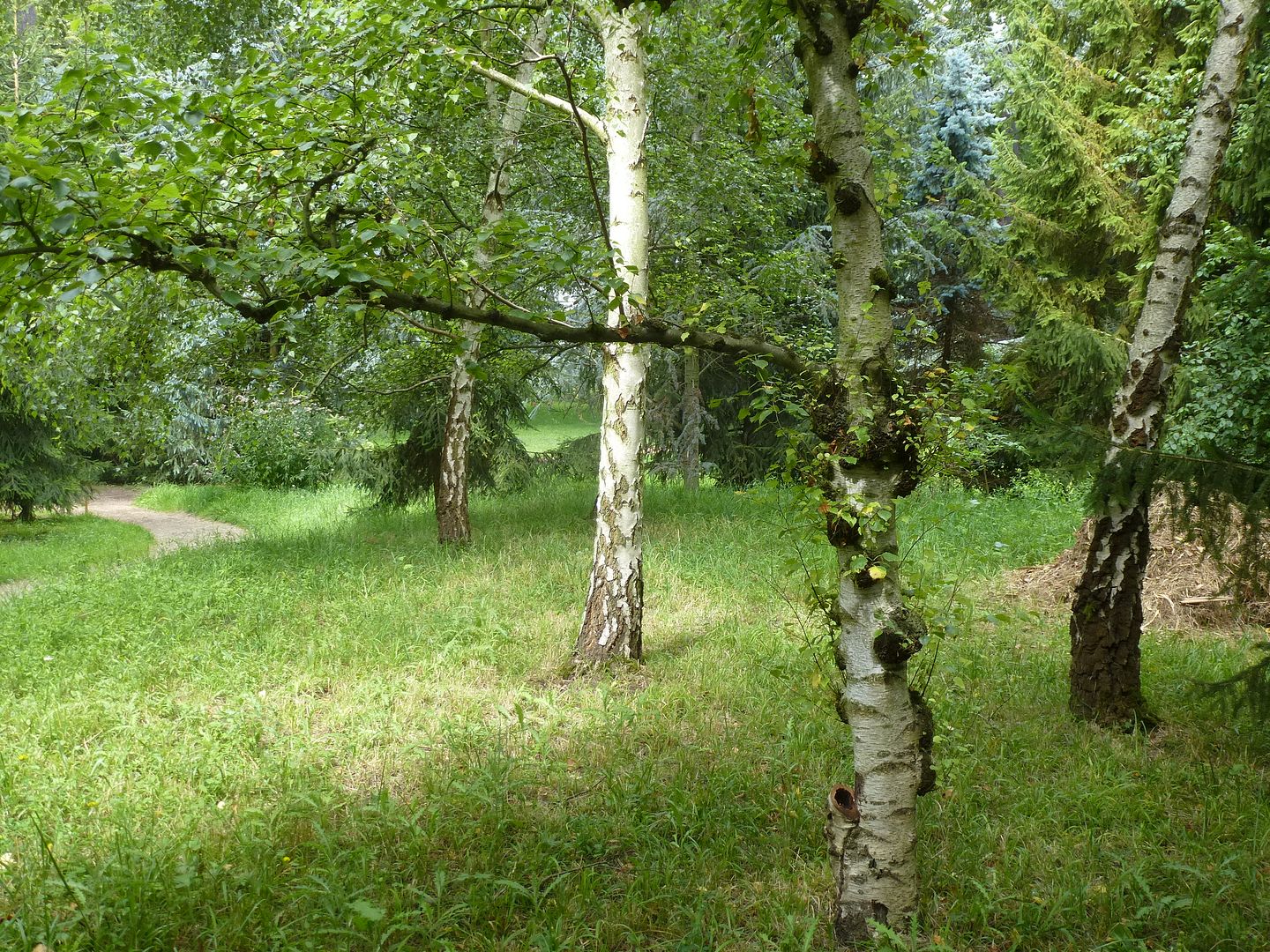
... to finally visit the blue forest properly.
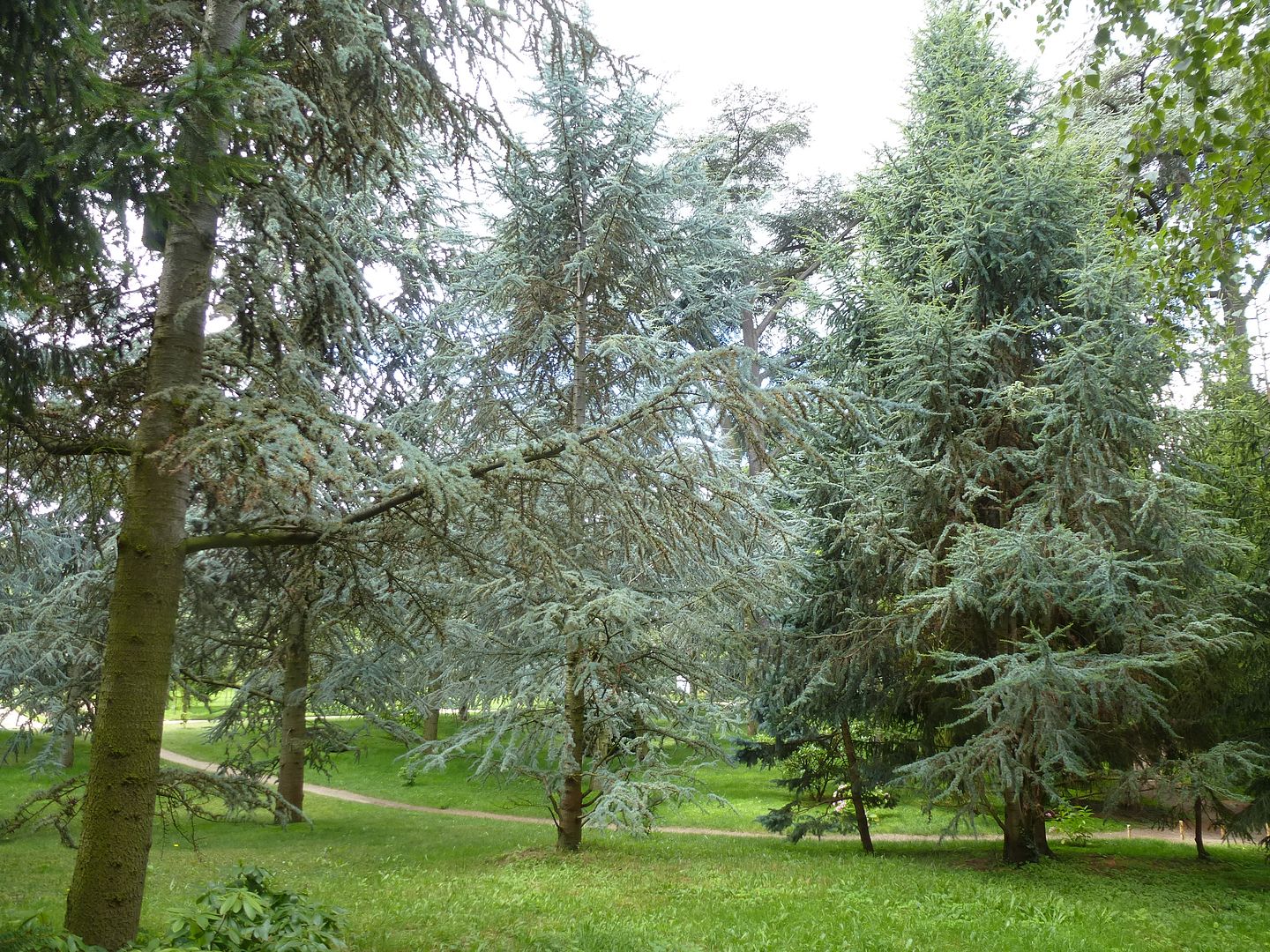
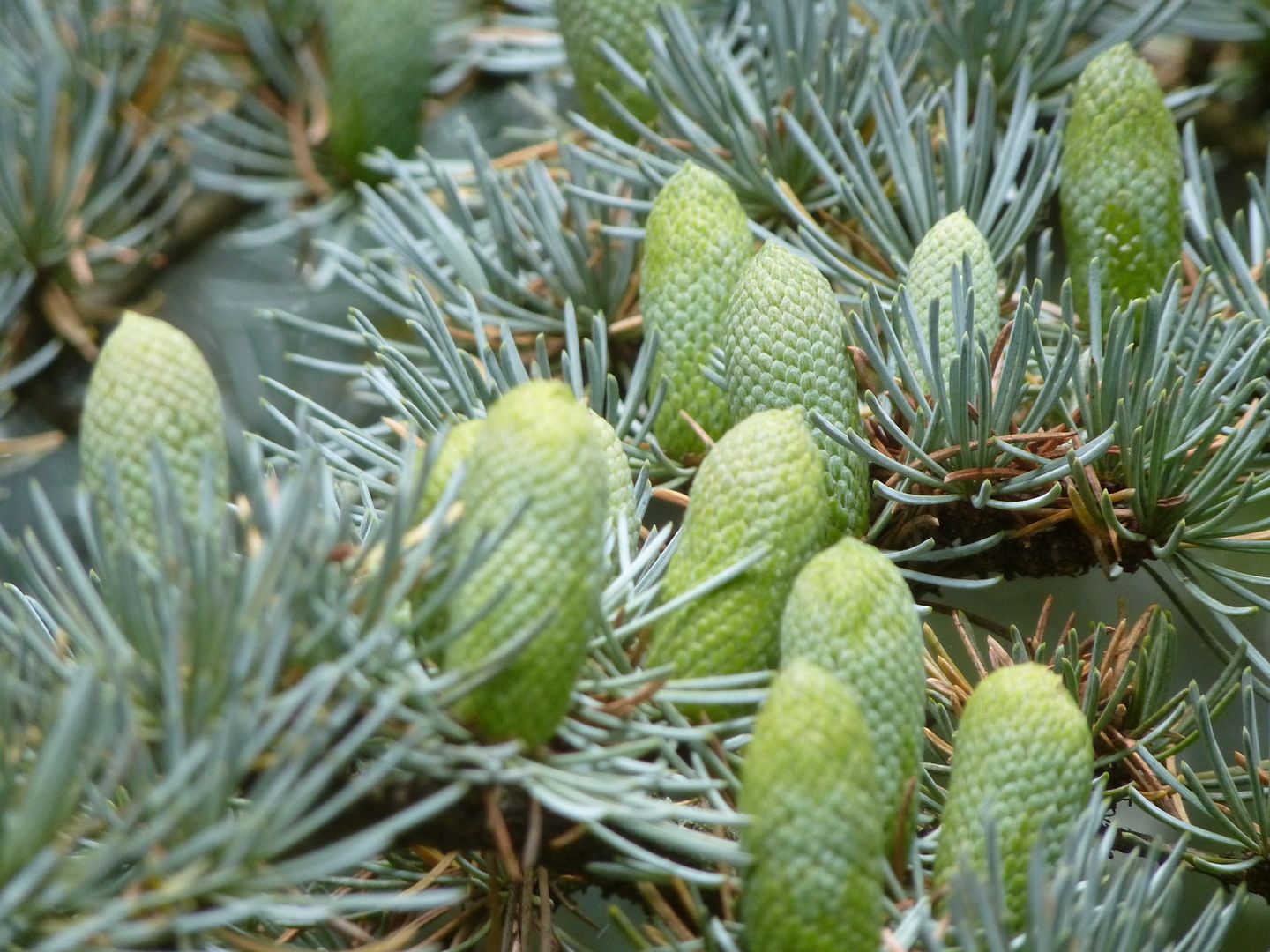
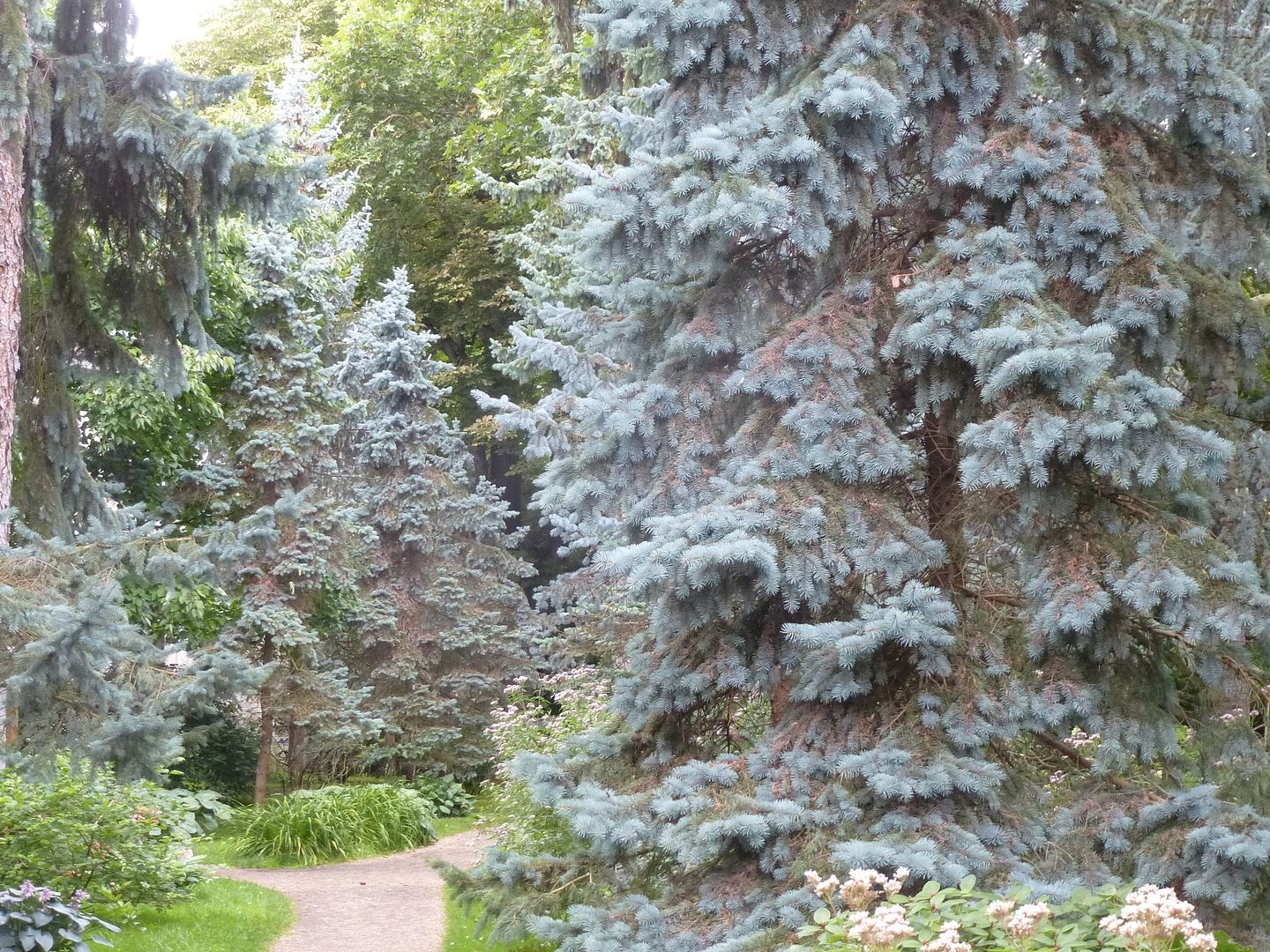

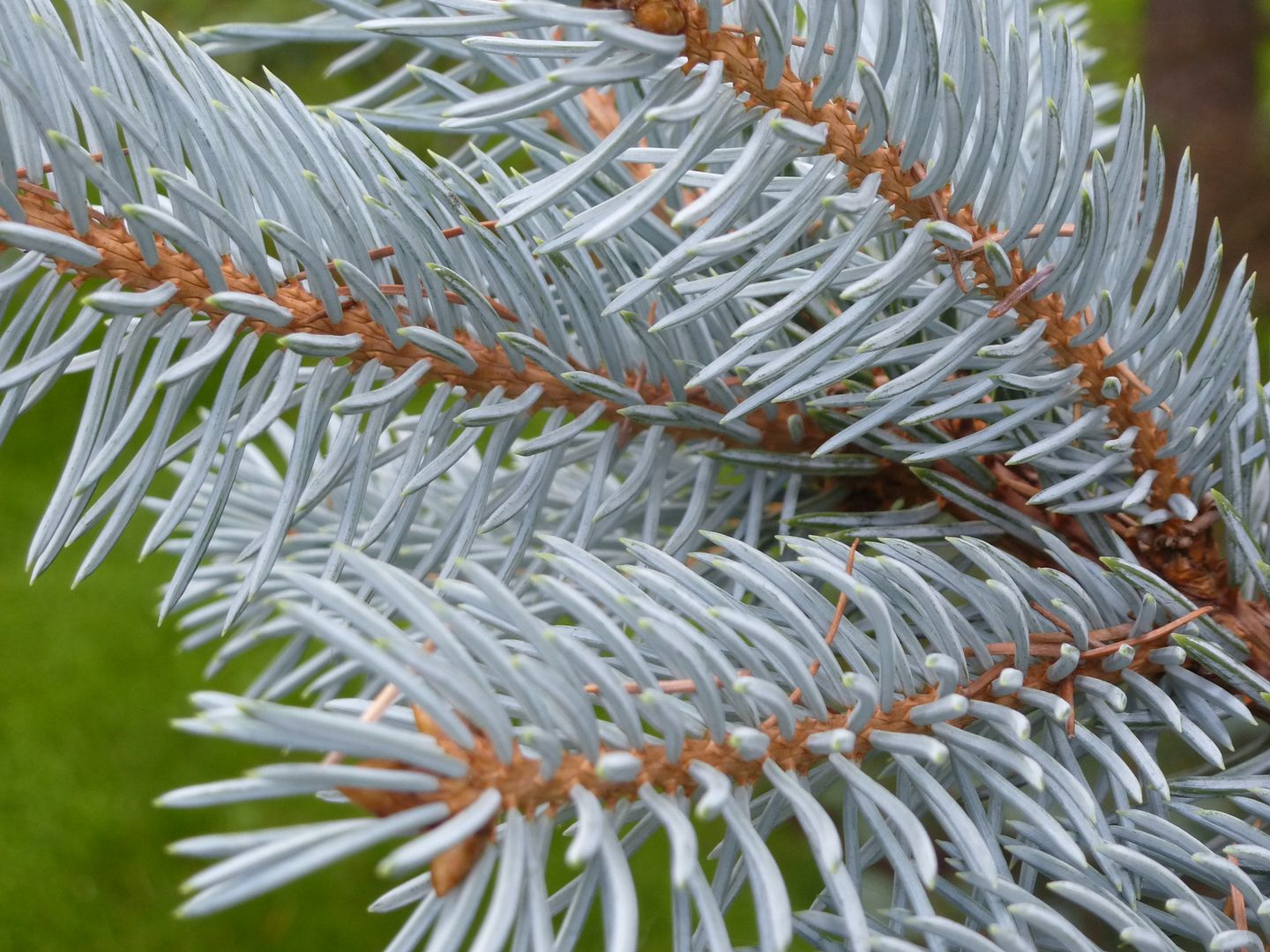
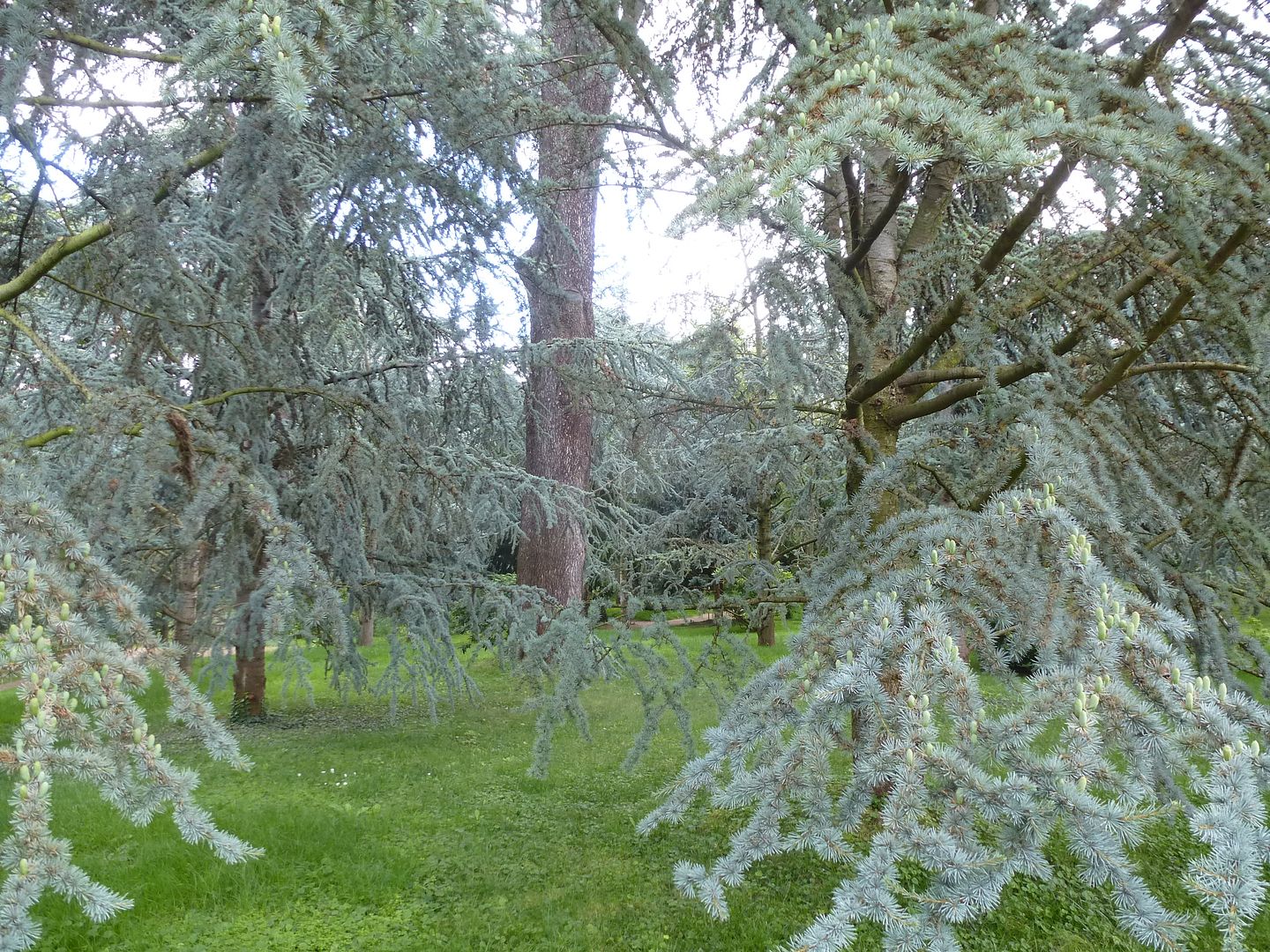
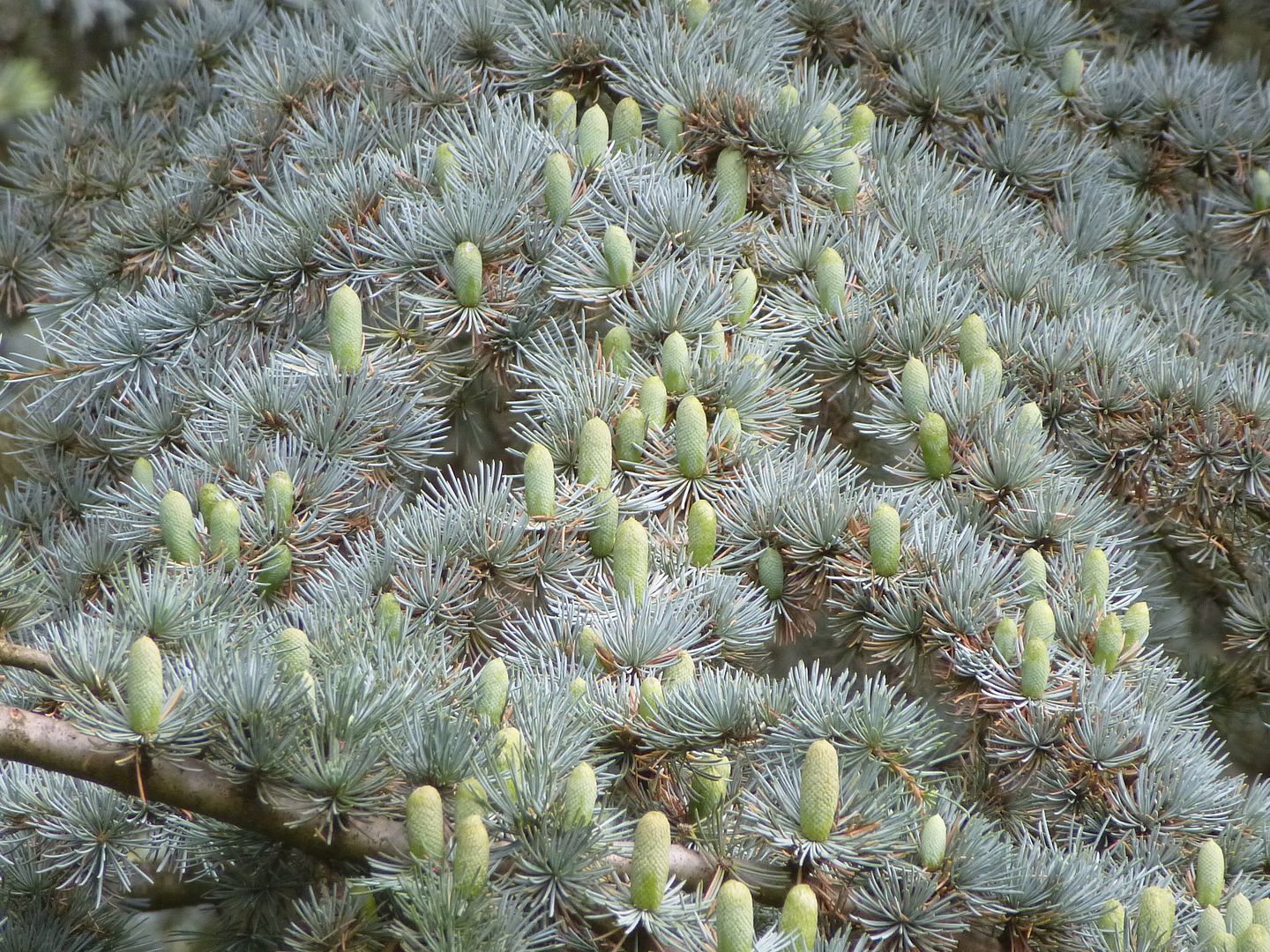
And had I paid enough attention to the marsh? Probably not.

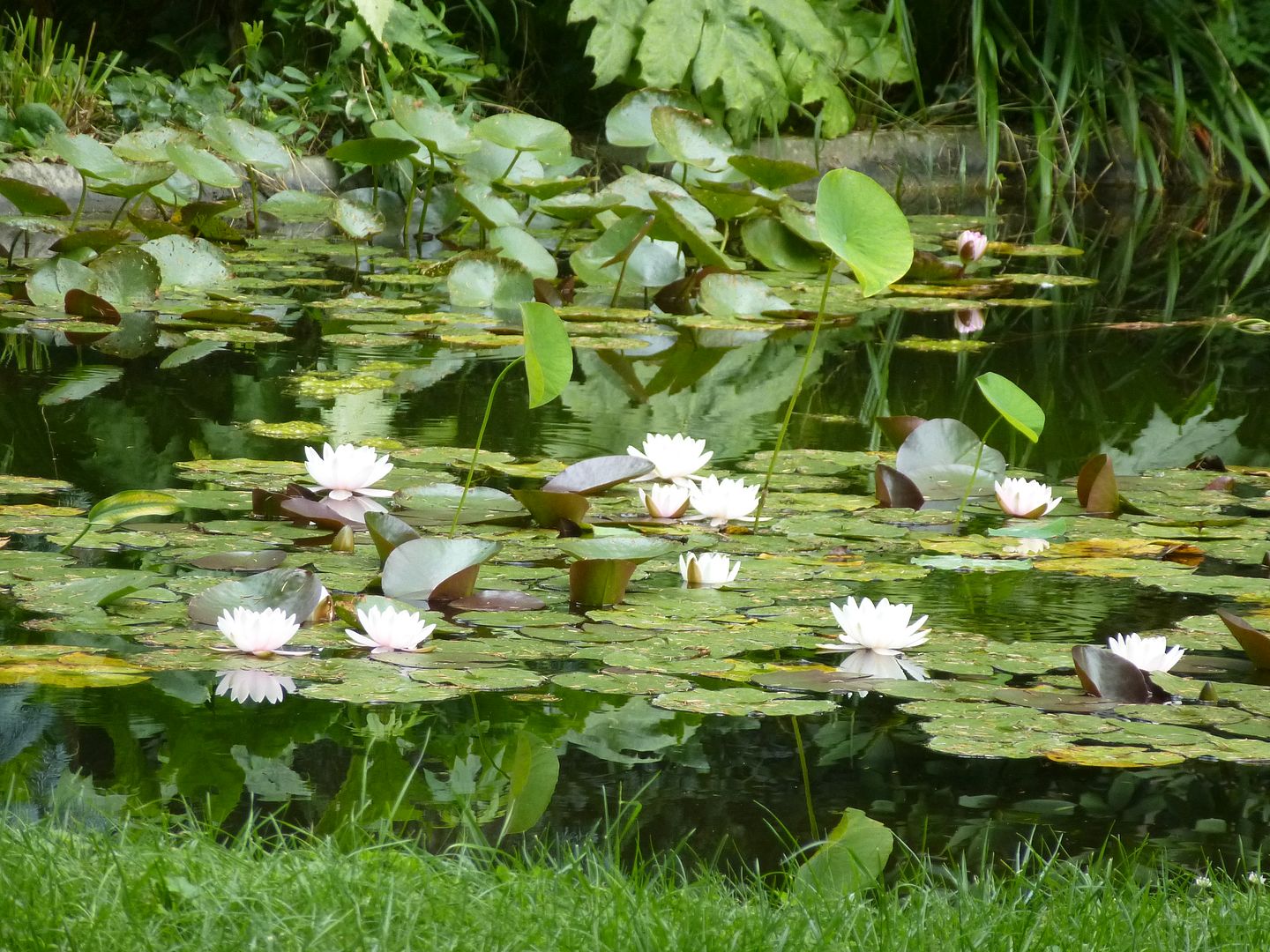
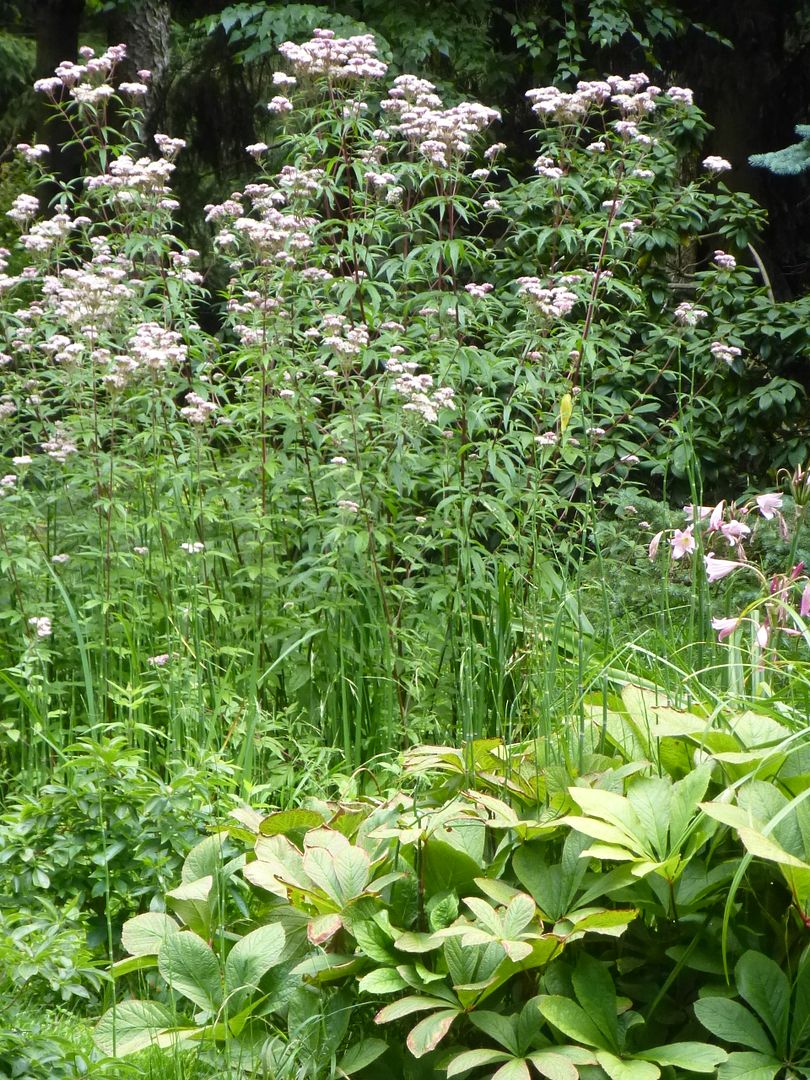
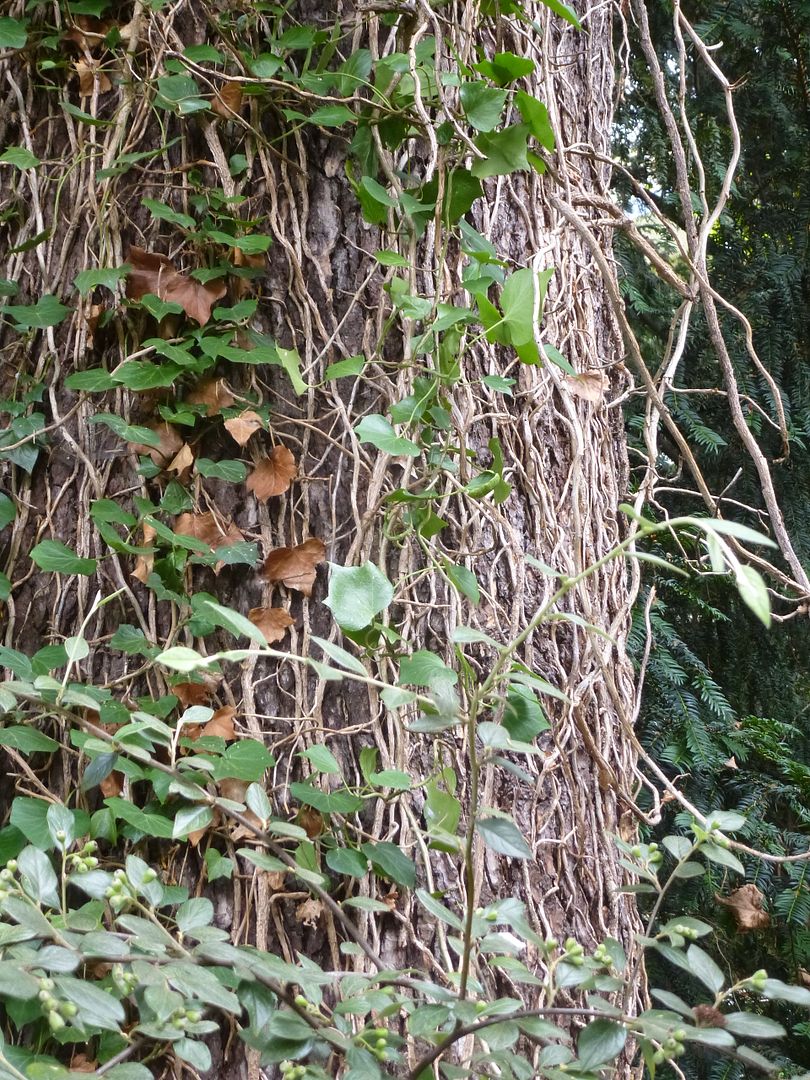
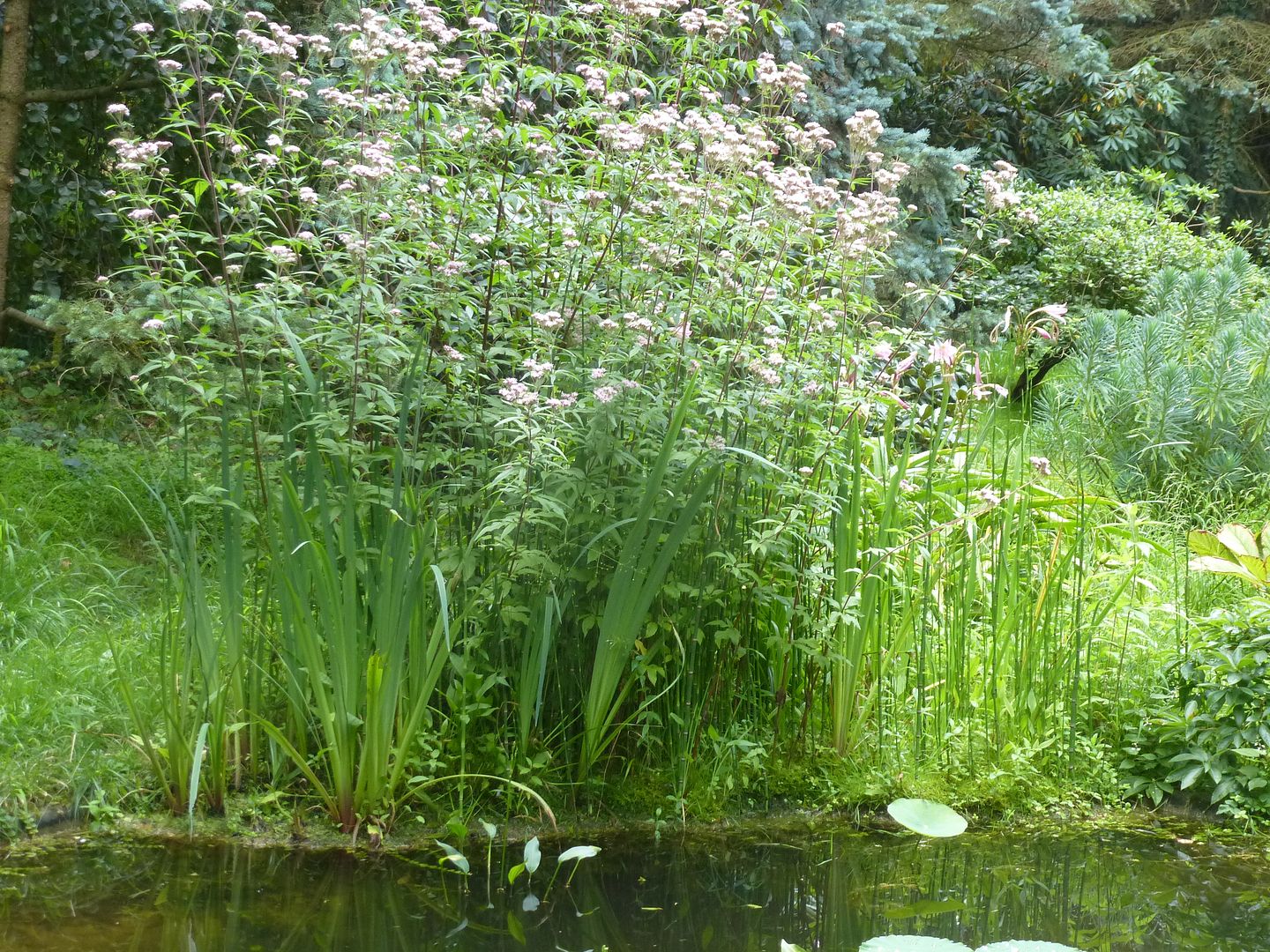
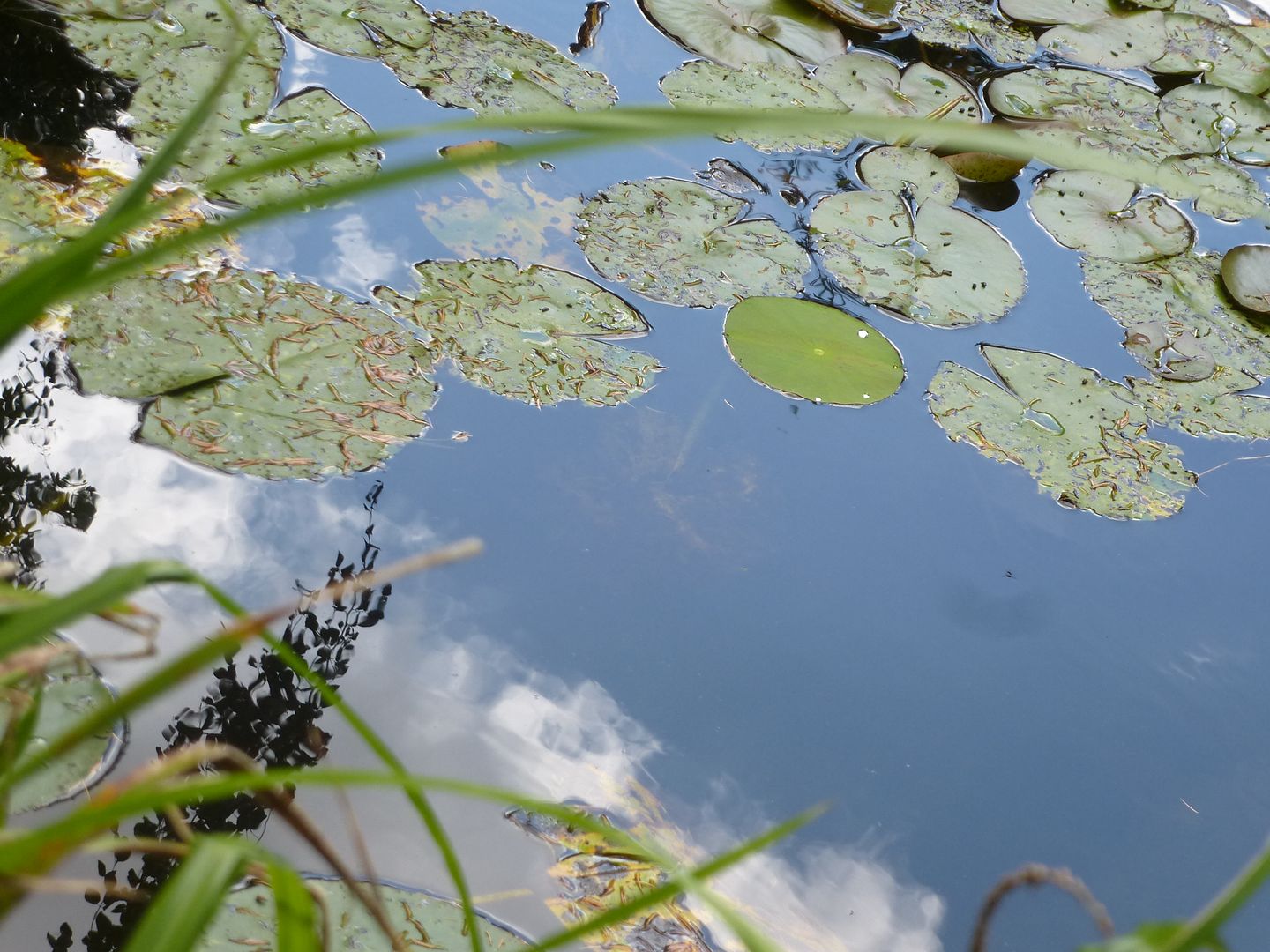
Now that I have tried everybody's patience with my disorganisation, I will wrap this up.
Just inside the door, there was a big sign indicating the upcoming garden season 2012-2013. However, my picture is pretty bad, so it's probably better to check the details on the Albert Kahn website.
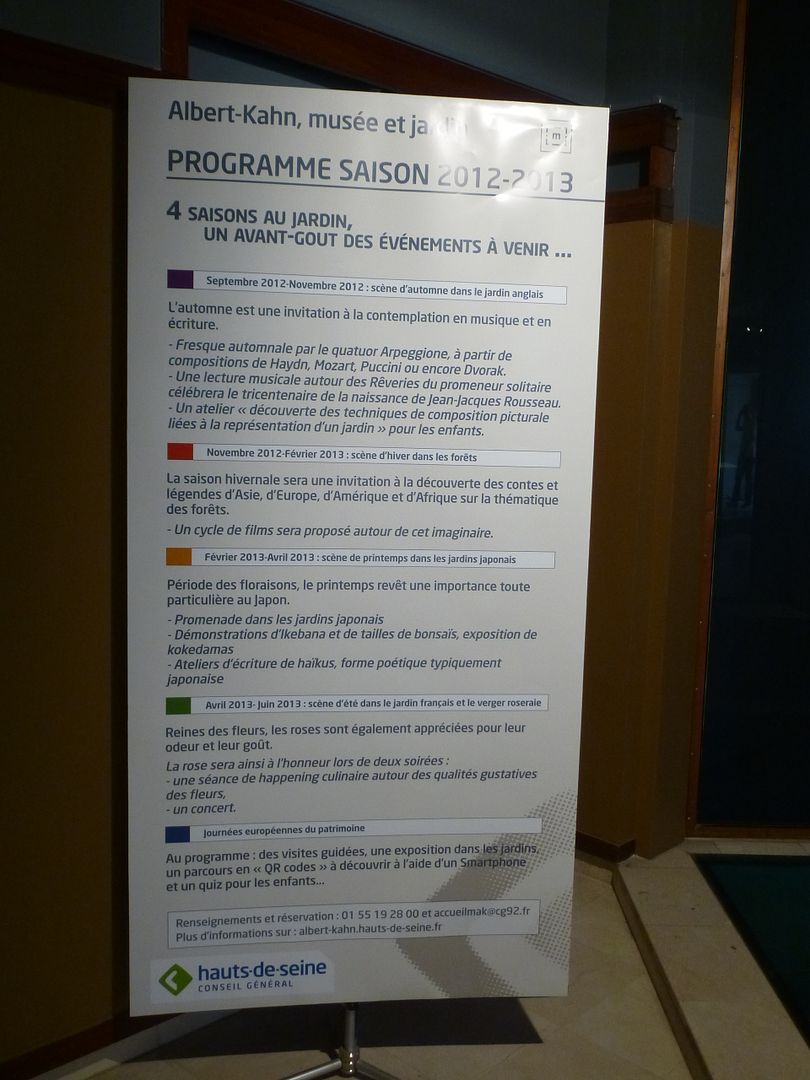
The small museum is obviously worth a glance.
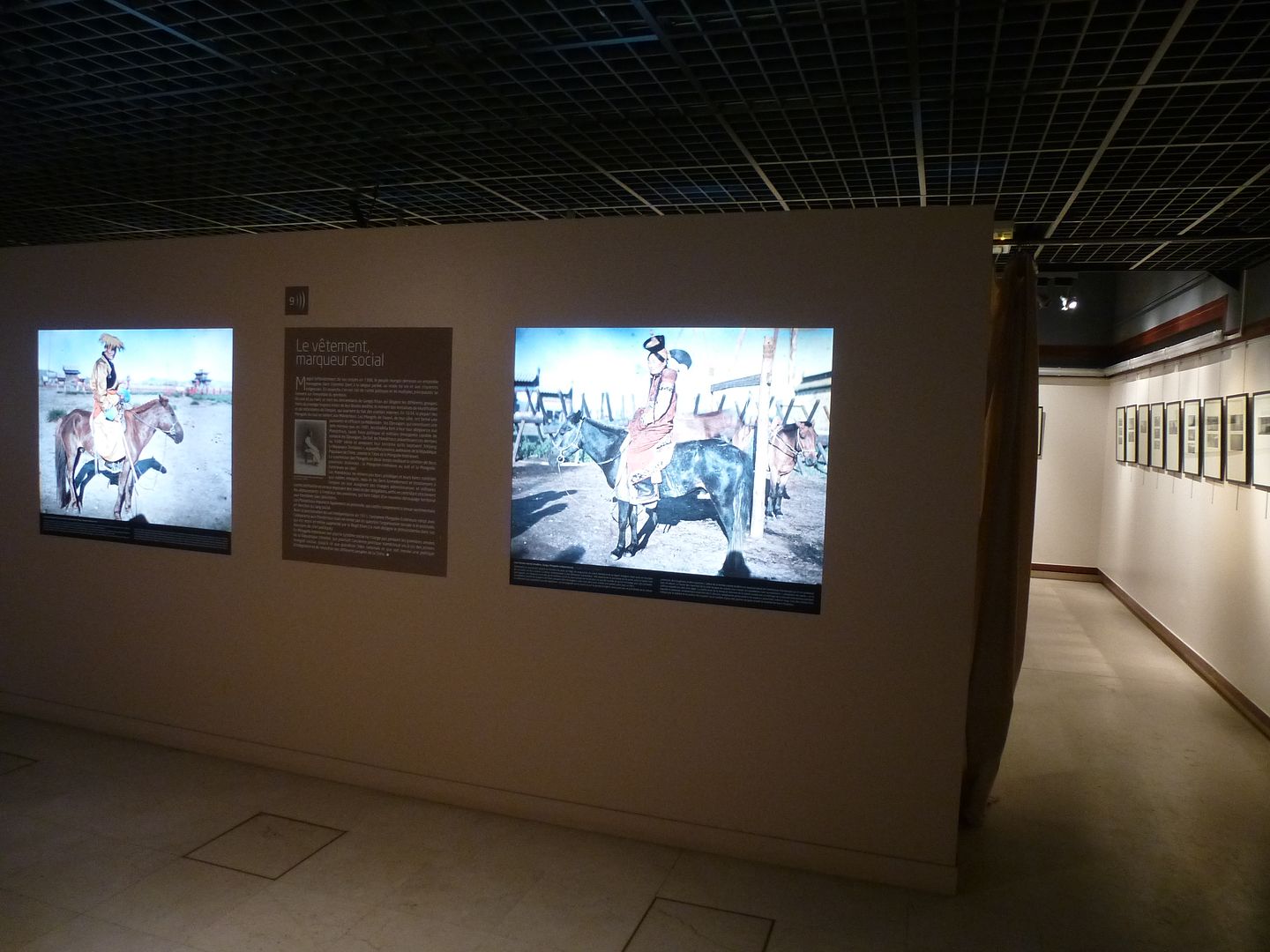
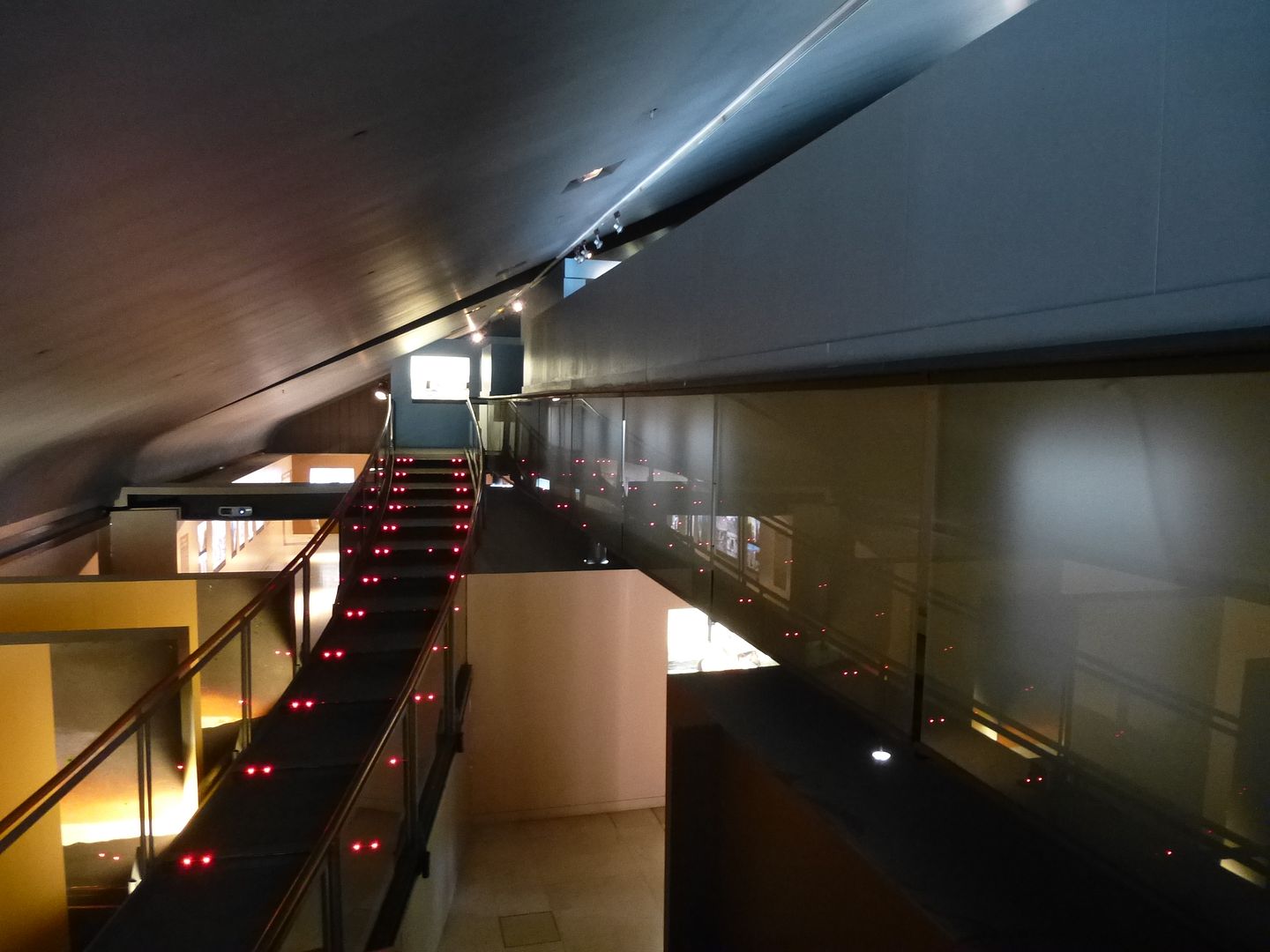
There are just a few small objects to help illustrate the autochromes.
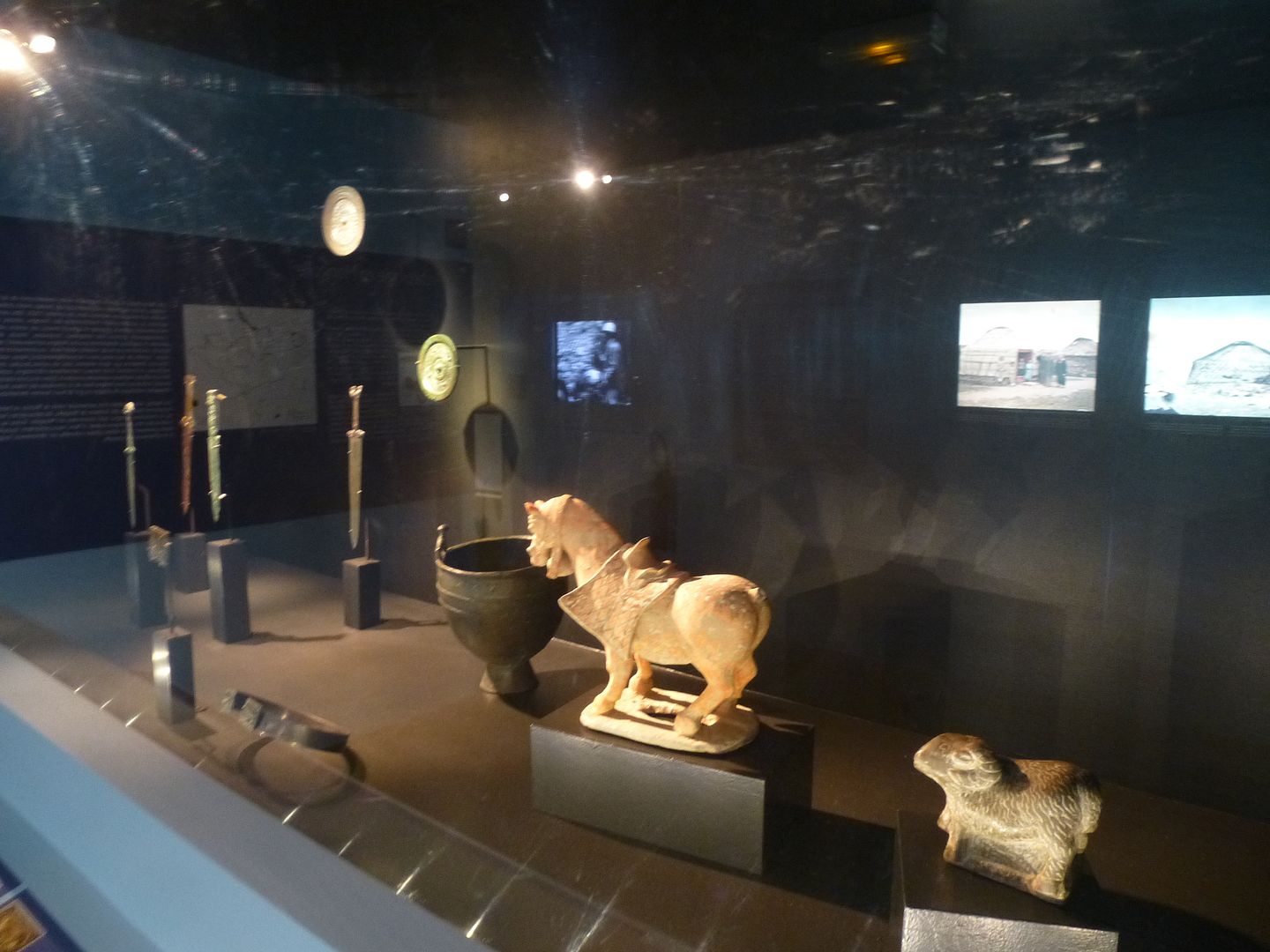
And what did colour photographs look like 100 years ago?
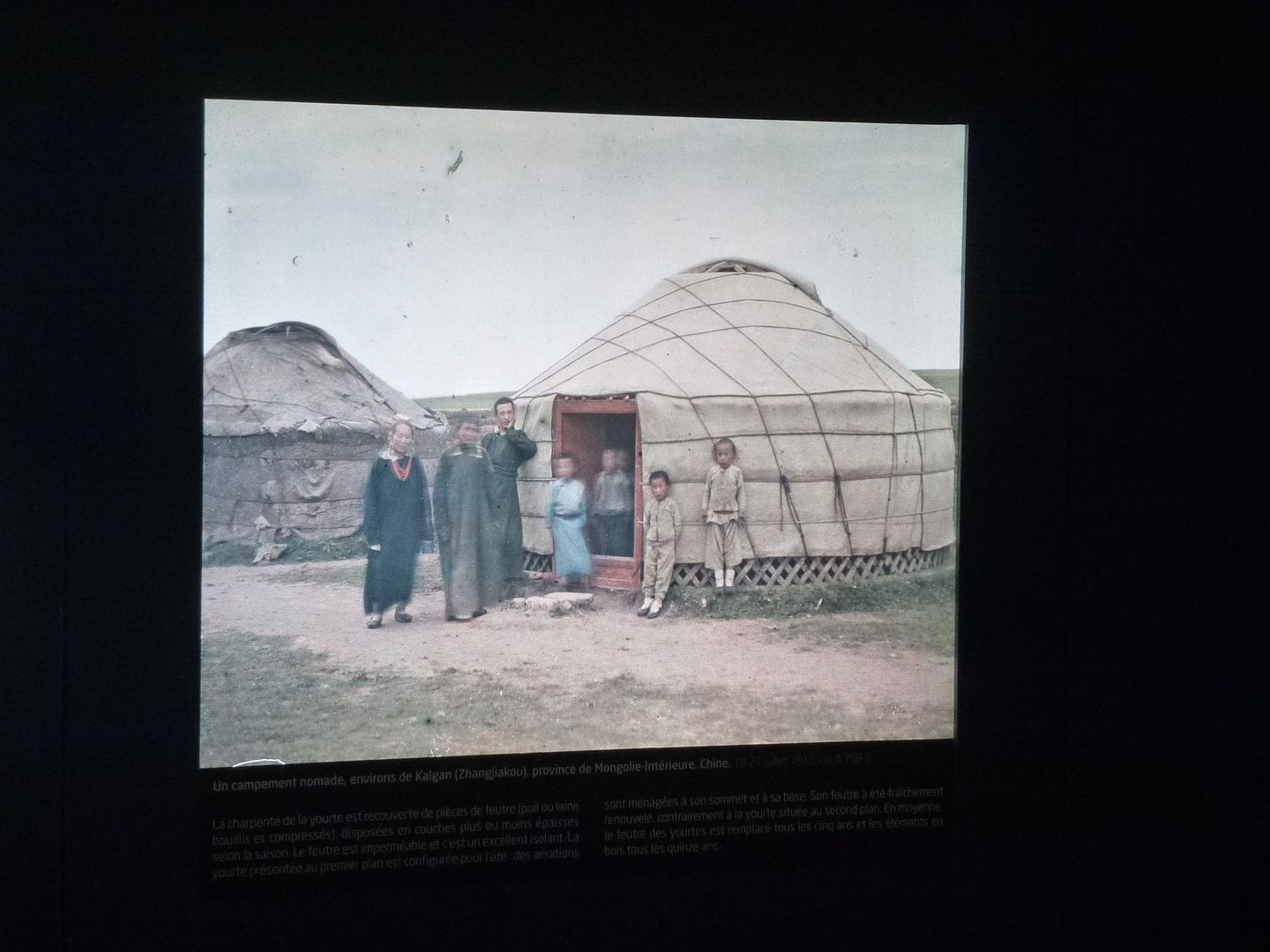
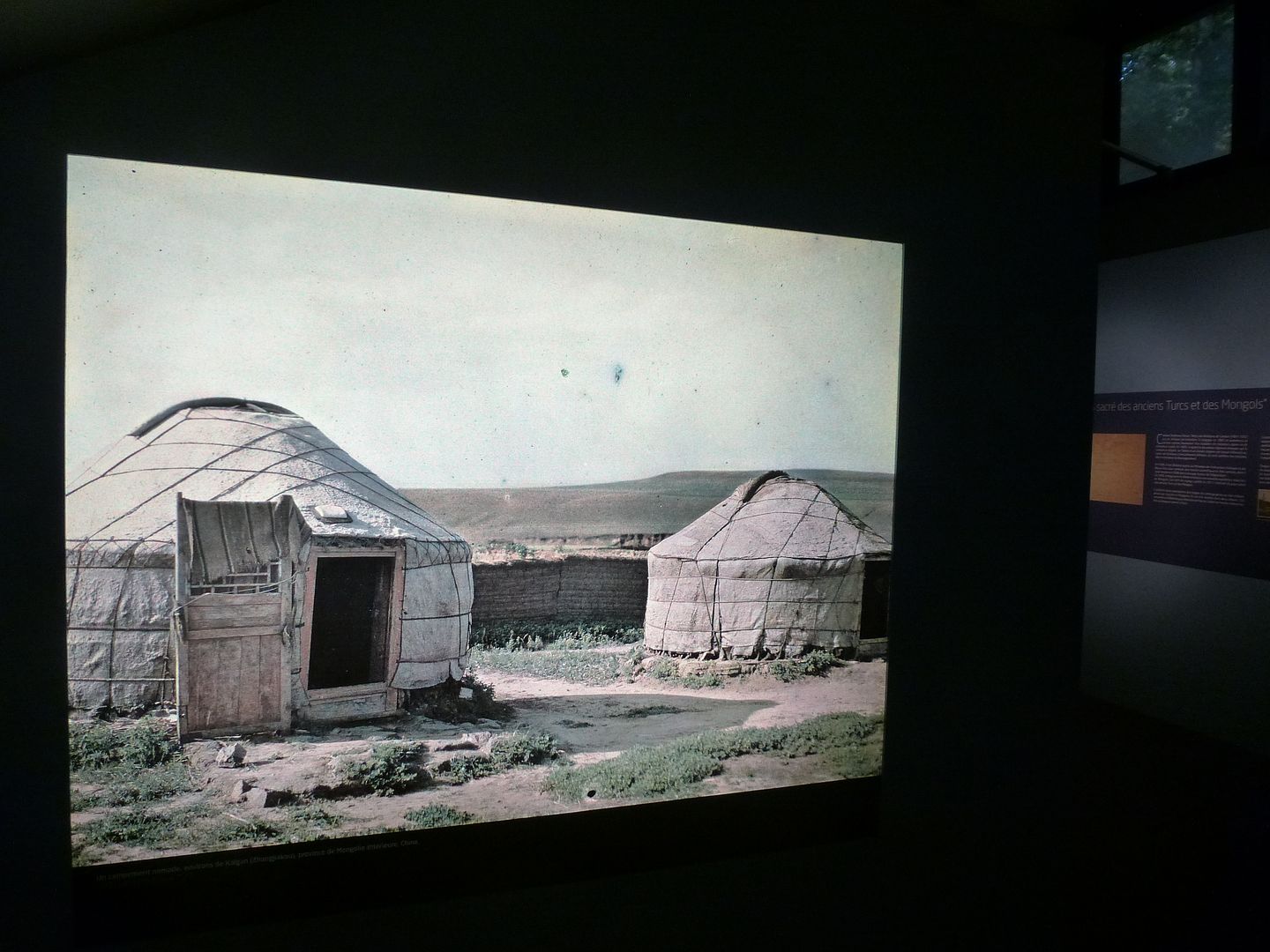
Obviously many improvements have been made, but I still find it extraordinary that colour attempts were made so long ago.
If you're afraid of getting lost in the suburbs, you shouldn't be. Here is a photo of the entrance, and the second photo shows just how close it is to the metro station.
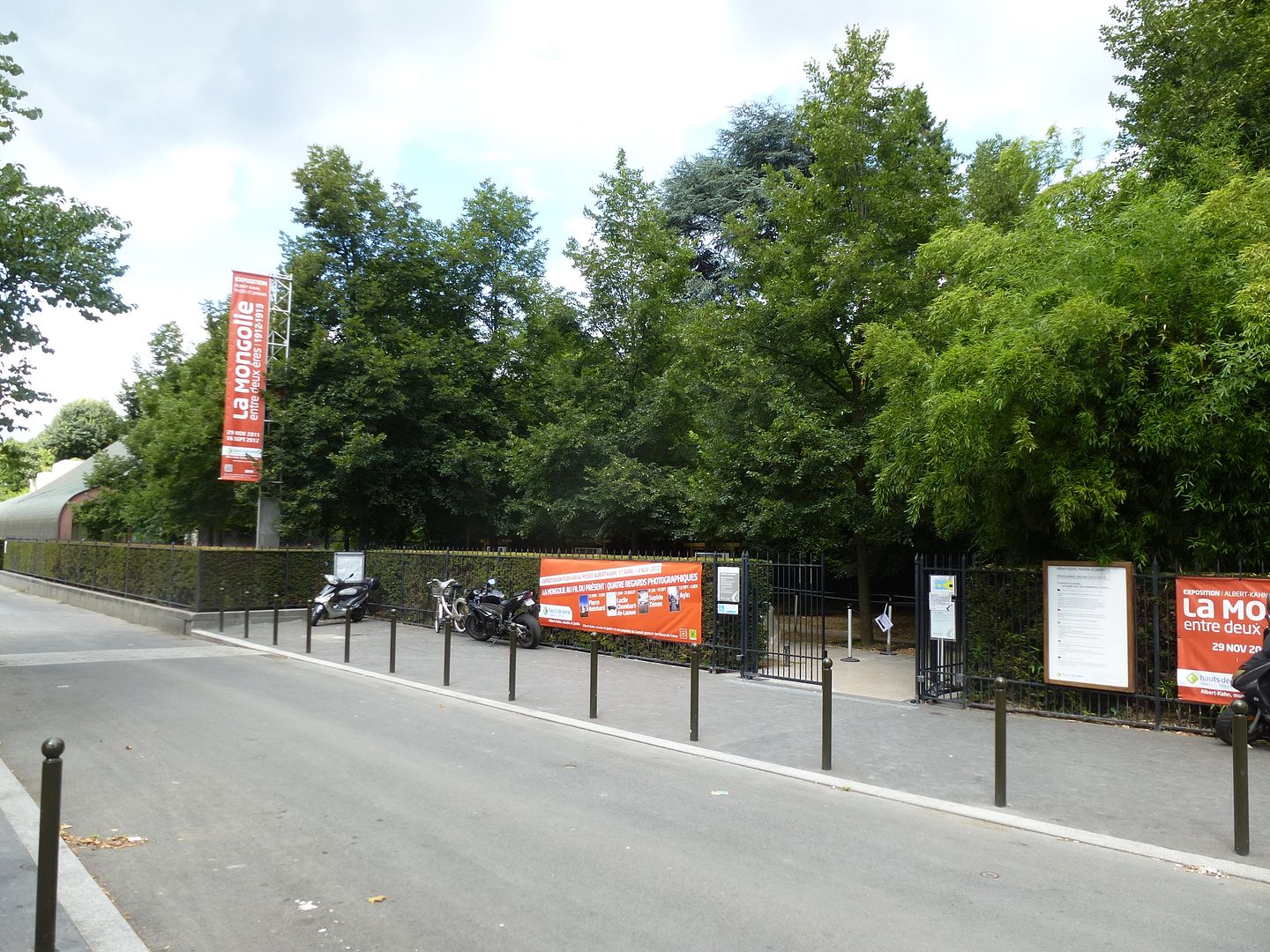
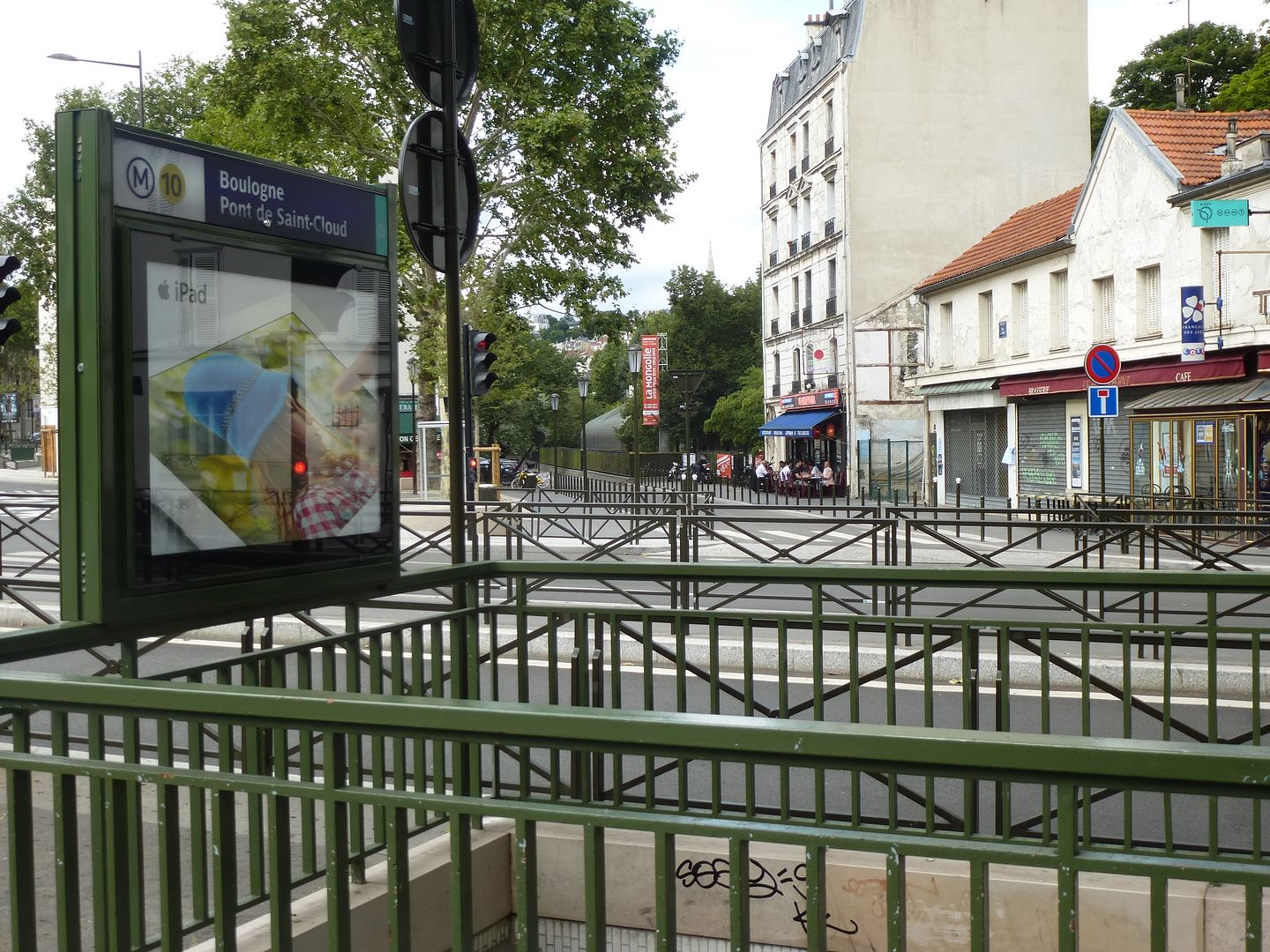
 But anyway, any time you are in Boulogne Billancourt, these signs are everywhere.
But anyway, any time you are in Boulogne Billancourt, these signs are everywhere.
He was born in Alsace in 1860 in a cattle family, and his mother died when he was 10 year old, the year the Alsace and Moselle were annexed to Germany. The family moved west to stay French and settled in the Marais in Paris when Albert was 16. Perhaps already understanding things to come, it was at age 19 that he became Albert Kahn -- his birth name was Abraham.
He worked at various jobs, went to university, and entered the banking profession. He was very much ahead of his time in terms of globalisation because he became very wealthy in 1893 by speculating on gold and diamonds in the Transvaal and founded his own bank in 1898. Still totally global, he invested massively in the Far East and more particularly Japan. He became friends with the ambassador of Japan, so much so that he even came to the notice of the Japanese imperial family.
Banking and finance was not at all his principal passion, however. In 1893 he rented a mansion in Boulogne, just outside of Paris. In 1895, he bought it along with 4 adjoining parcels of land and started building a garden. He continued buying the surrounding land until 1910 -- another 20 parcels and the houses that were on them. And his garden grew.
First there was the French garden, including a conservatory and then an ornamental orchard. Next came the English garden and then the Japanese garden. Japanese gardens were all the rage, because his neighbour Edmond de Rothschild already had one. But he brought gardeners directly from Japan to create his garden and even imported Japanese houses to place in it, including a tea pavilion. The largest addition was a 5-story pagoda, which was destroyed by lightning in 1952.
He was not finished yet, because he added woods to the garden. There was the "blue forest" with cedars from the Atlas mountains and Colorado spruce, which he hoped would symbolise harmony between the African and American continents (you can't get everything right!). He created a forest from the beloved Vosges mountains of his youth, even going so far as to have two sides to it -- fir and spruce with granite on the side representing Lorraine and pine and sandstone to represent the Alsatian slopes. There was also the"golden forest" with birch trees, a meadow and a swamp. These were his "gardens of the world" and of course he invited all of the personalities of the time to come and see what he had done. A rich man's folly.
But wait... the gardens were not even his principal interest. He really had a lot of money, so he made a trip to Japan in 1897 where he found his friend the former ambassador and various nobility. At the University of Tokyo, he was presented with 3 golden bowls, a gift from the Emperor himself.
And in 1898, he created a system of incredible travel grants. Young future professors -- both men and women -- were given the means to travel the world for more than a year in order to gain first hand knowledge about the planet. In 1907, he extended these grants to scholars from Japan, Germany, Great Britain and Japan. The recipients were frequently invited to Boulogne to share with the other what they had learned and seen.
But there was still more to come. In November 1908, Albert Kahn left on a voyage to Japan and China, via the United States, and brought along stereoscopic cameras and Lumière motion picture cameras to capture what he would see. He already understood that the old world was disappearing and needed to be documented.
In fact, after his return from the first trip, he left again in 1909 to South America, where he visited Uruguay, Argentina and Brazil, this time accompanied by professional photographers and film makers. The photographs were by a revolutionary new process -- autochromes, also invented by the Lumière brothers. Colour photography in 1909! And until 1931, he continued to send other photographers around the world to capture "the aspects, the practices and the fashions of human activities which will fatally disappear within a matter of years." Autochromes were made of China, Mongolia, the British Raj (India and Pakistan), as well as 20 countries of Europe, including France.
The Albert Kahn collection consists of 72,000 autochromes (largest collection in the world), 4000 black & white photographs and about 100 hours of films from 50 countries. Albert Kahn called this collection "the archives of the planet."
Meanwhile, he heavily financed the University of Paris, but his main interest, just like the contestants in the Miss America pageant, was world peace. This was because of the trauma he experienced from the war of 1870. During the peace conference of 1919, he hosted the Japanese delegation at his residence and took Crown Prince Hirohito to visit his ancestal Alsatian village of Weitbruch.
The world has no place for dreamers. His entire forture was wiped out in the stock market crash of 1929. All of his possessions were seized by his creditors and the government. The government bought the house, gardens, and image collection in 1936 and 1939. The gardens were already opened to the public in 1937. He was allowed to continue living in his house, however.
But in 1940, he died (age 80) right after France surrendered to Germany. So much for world peace. Everything that was left was scattered to various places -- the French national library, the national archives, etc. -- or confiscated by the Nazis since they were "Jewish war spoils," and what the Nazis had taken was later taken by the Soviet Union.
Everything was taken except the image collection, which the woman in charge somehow managed to keep. And so all of that is still in Boulogne. So the gardens are combined with an image museum, displaying various elements of the autochromes and films month after month. At the moment, the autochromes being displayed are from Mongolia around 1912, a lost world in colour. However, there are computer stations at the disposal of the public to allow one to look at anything in the entire collection at will.
I have perhaps babbled on long enough, since the whole point is to show you some of the gardens.
Here is the basic layout for a start.
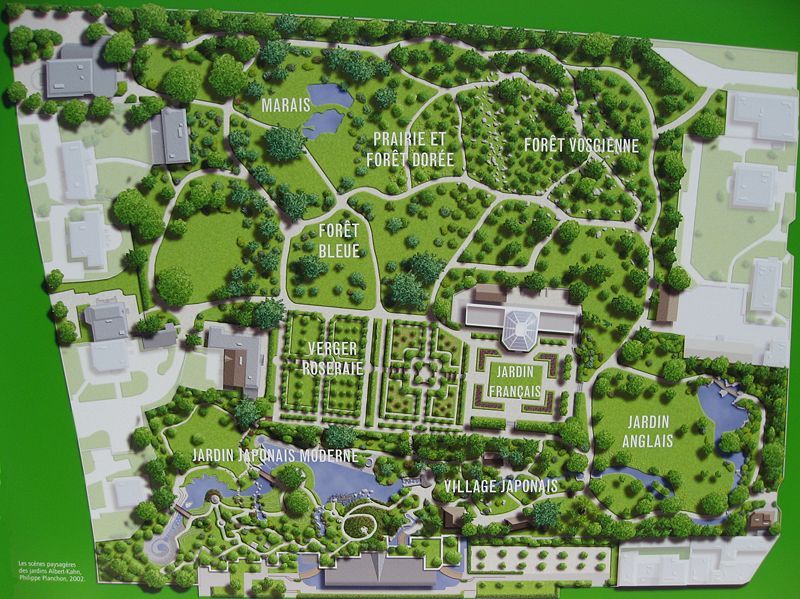
This is the first thing you see coming out of the museum building.
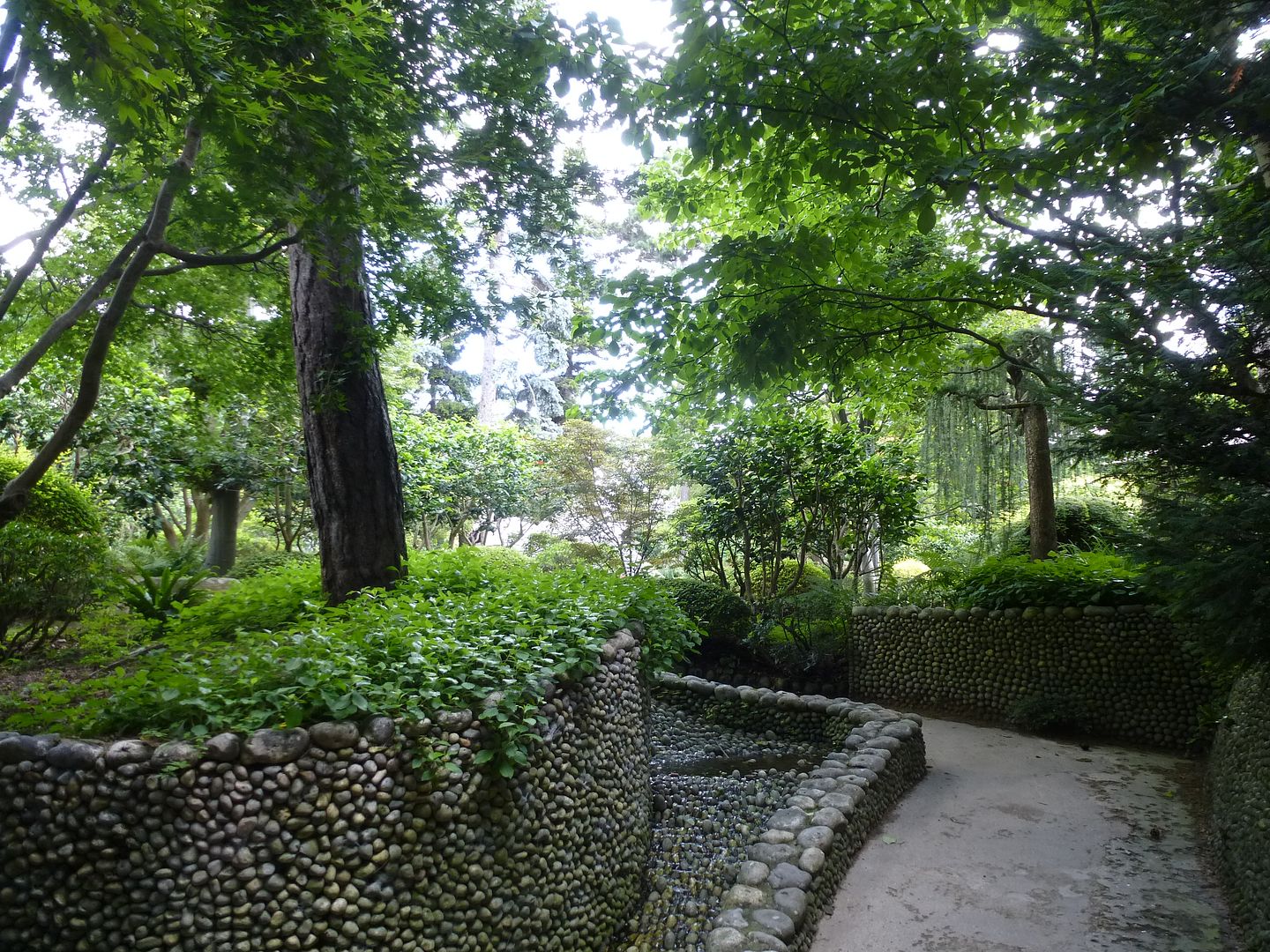
And so I started wandering through the Japanese garden...
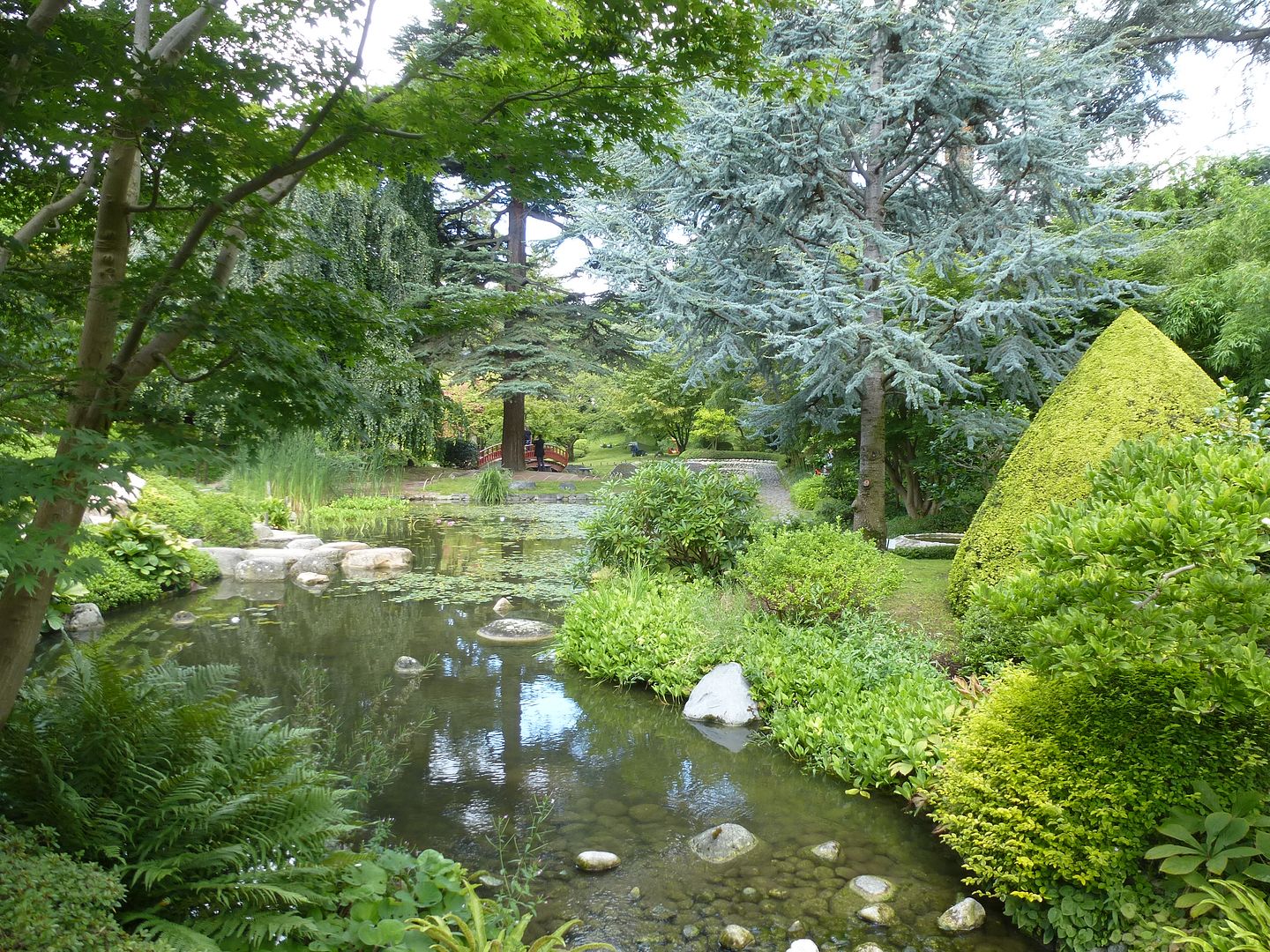
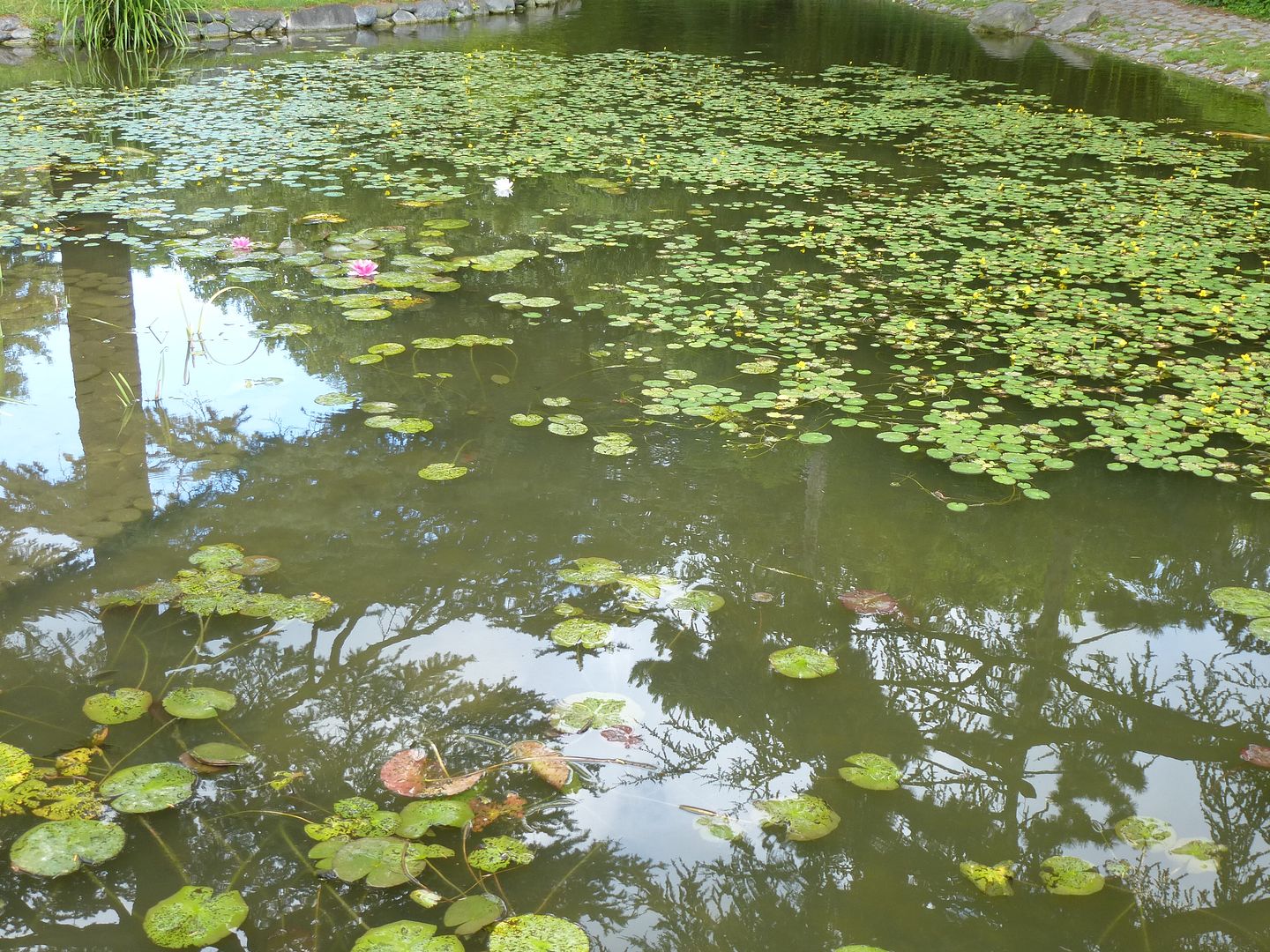
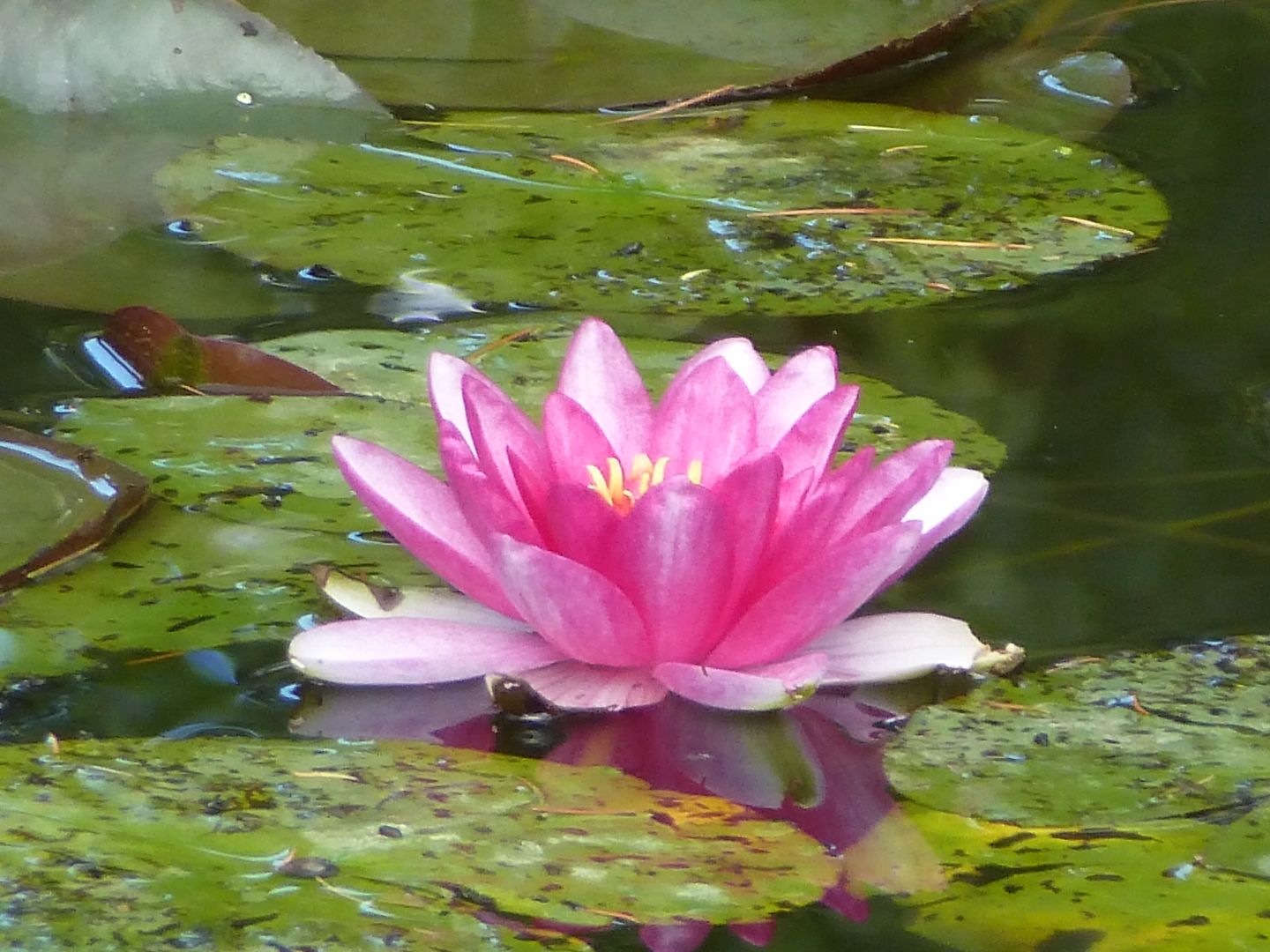

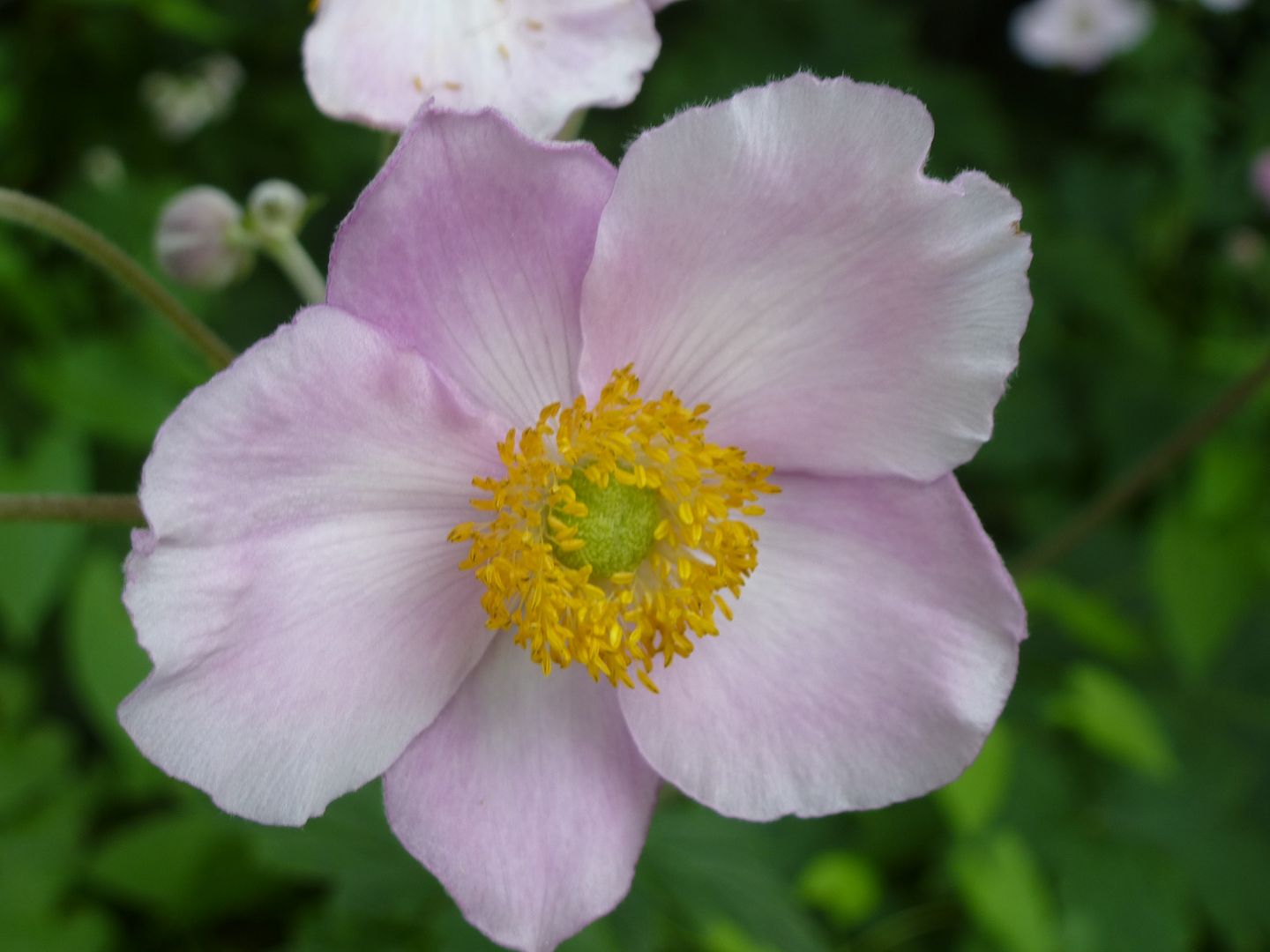
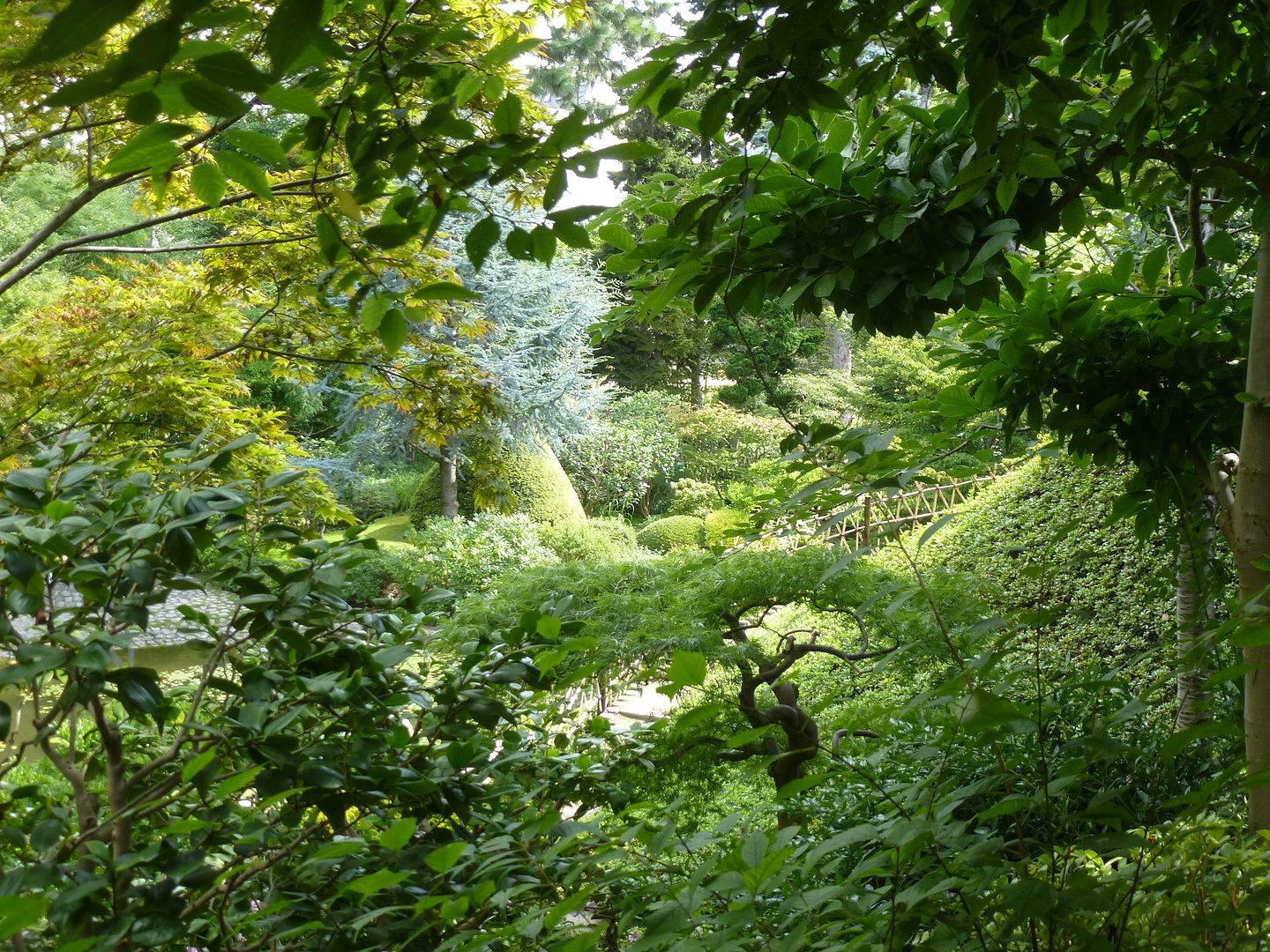

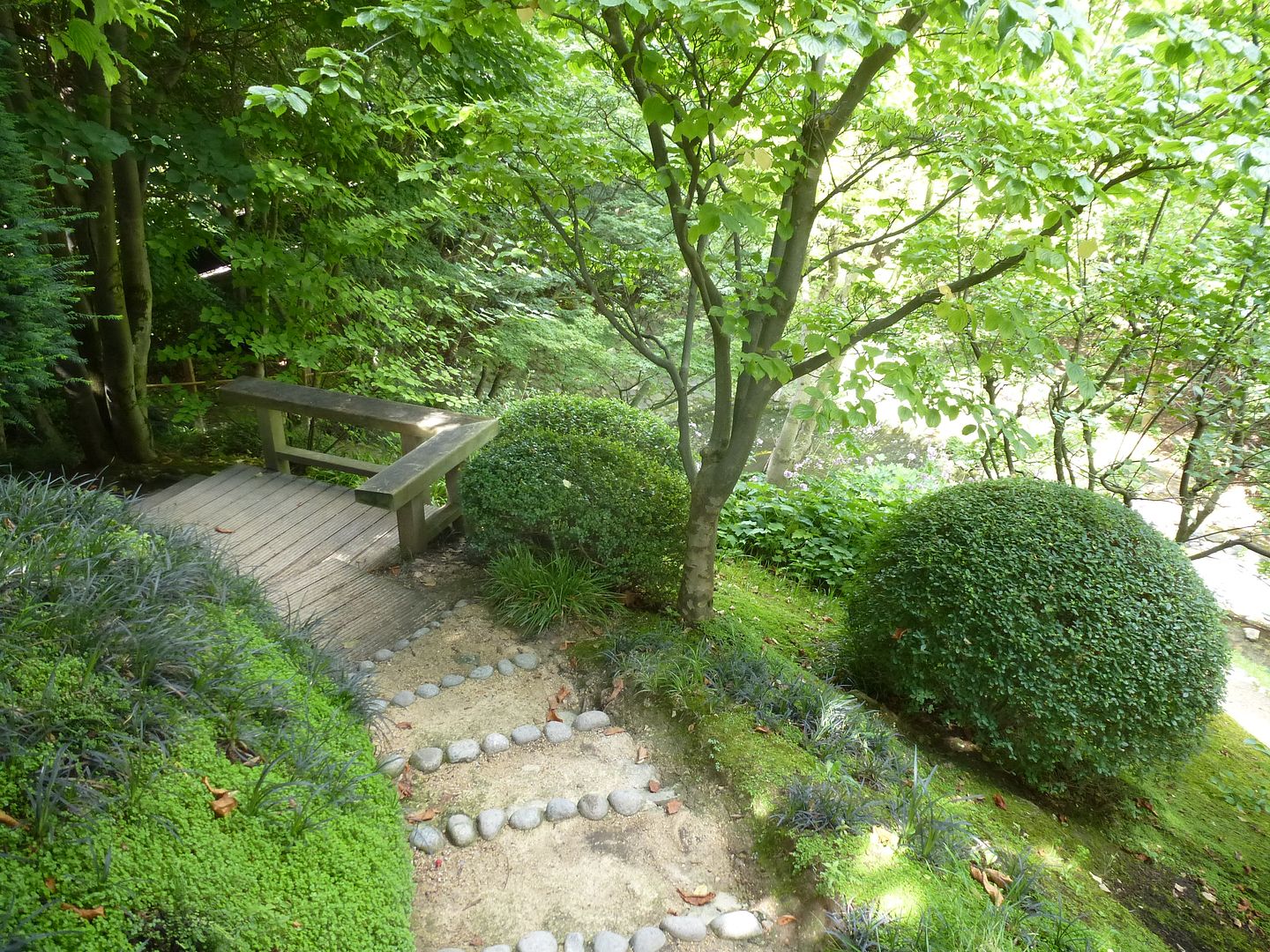
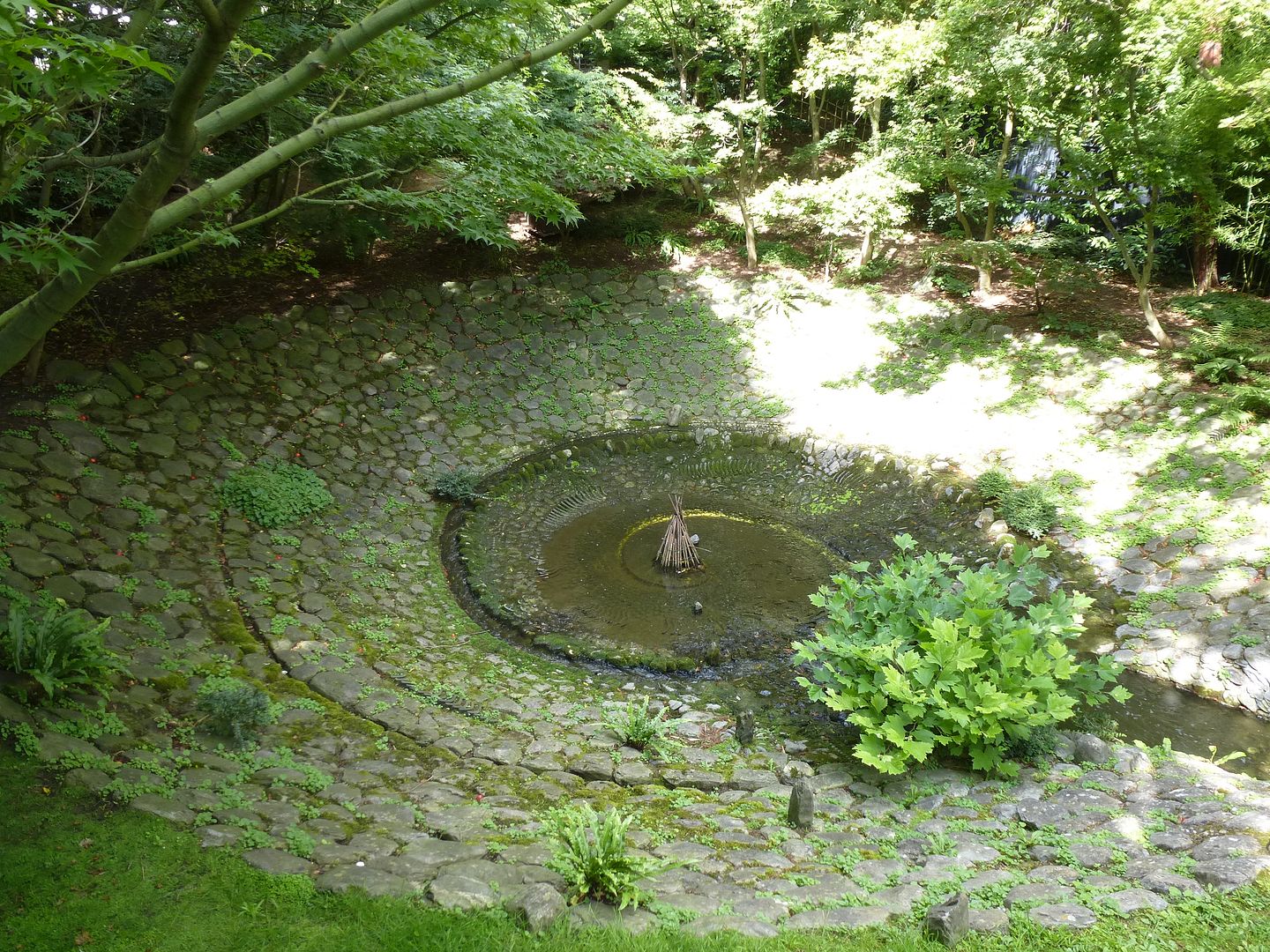
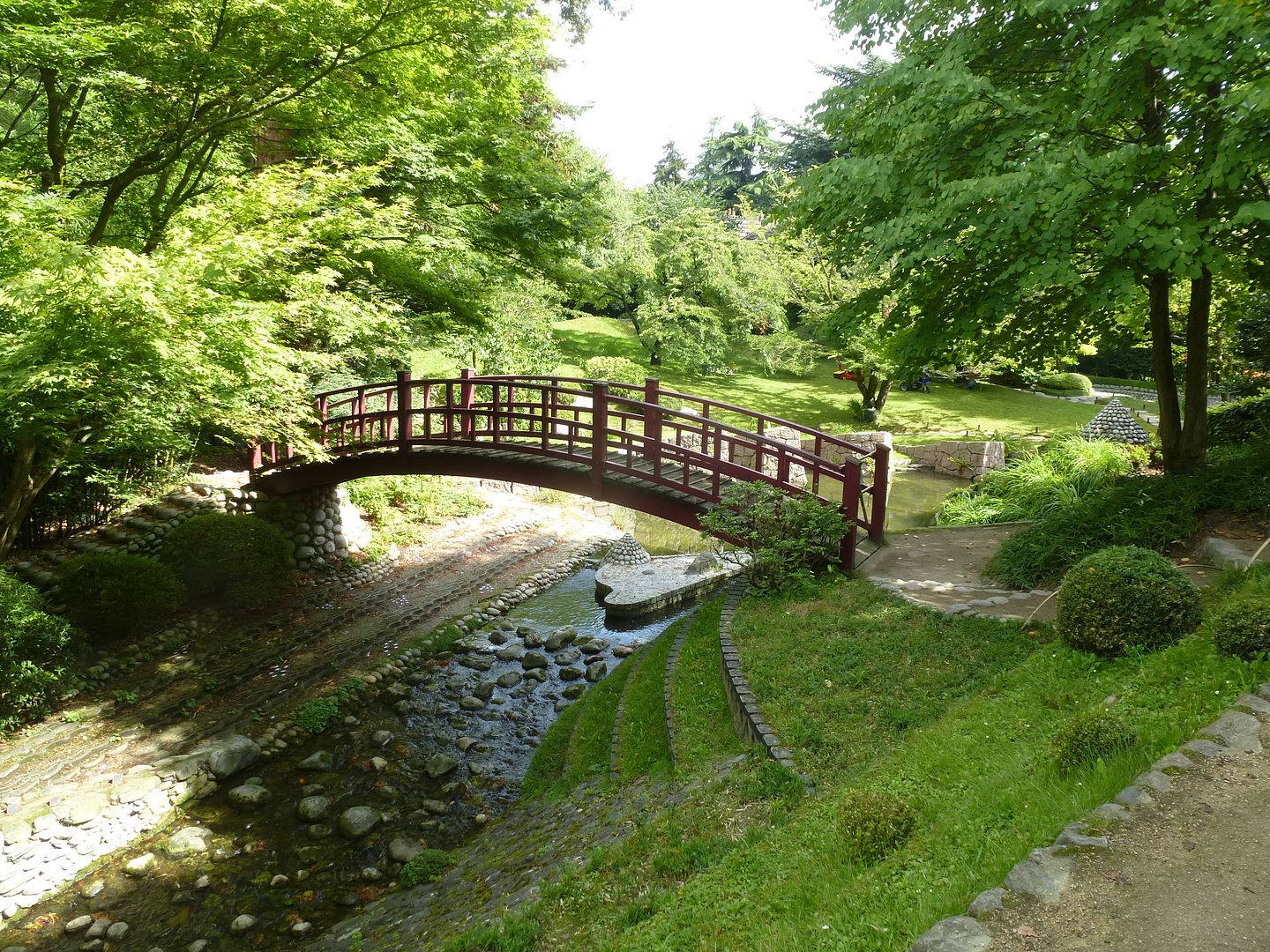
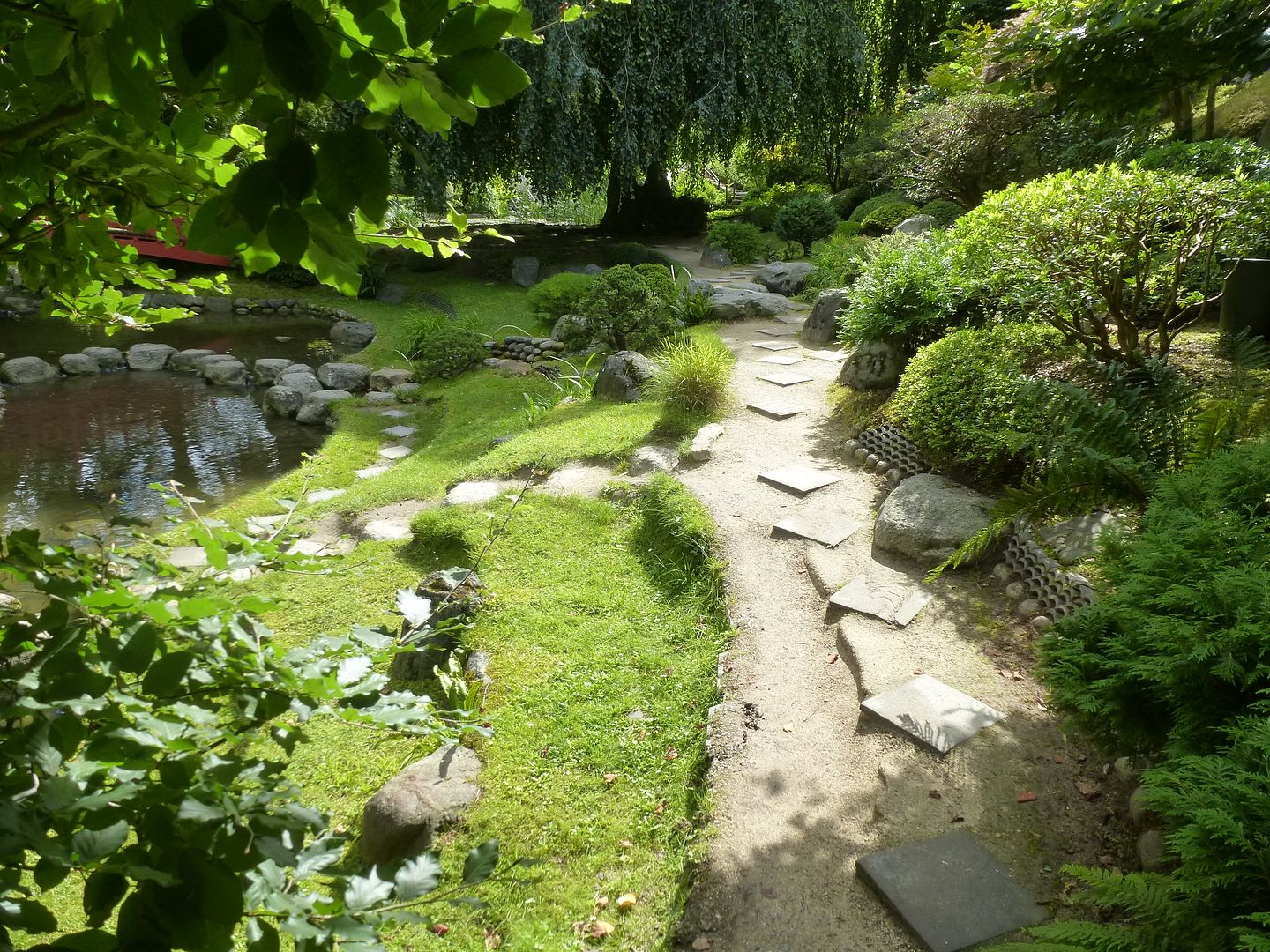
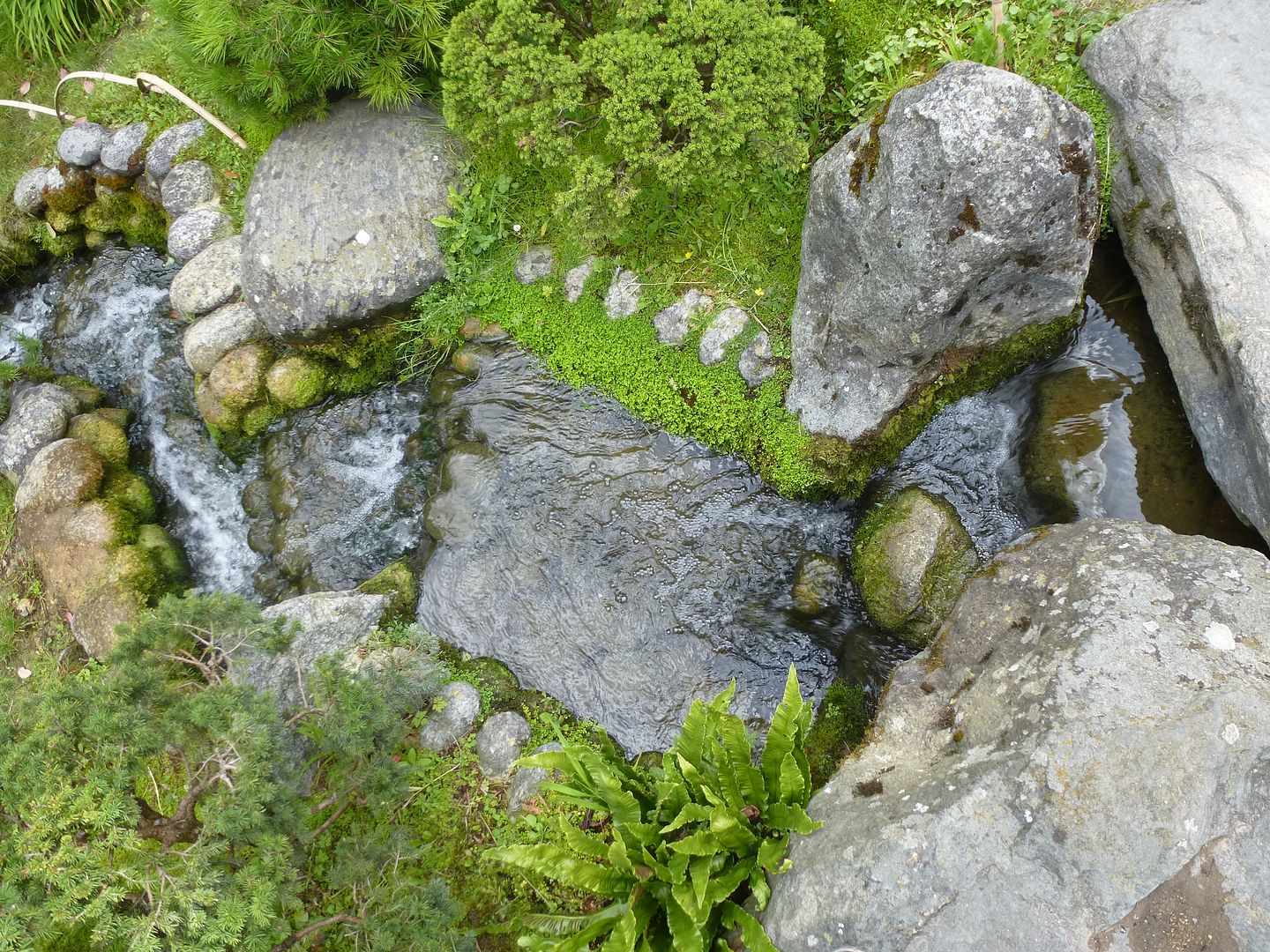
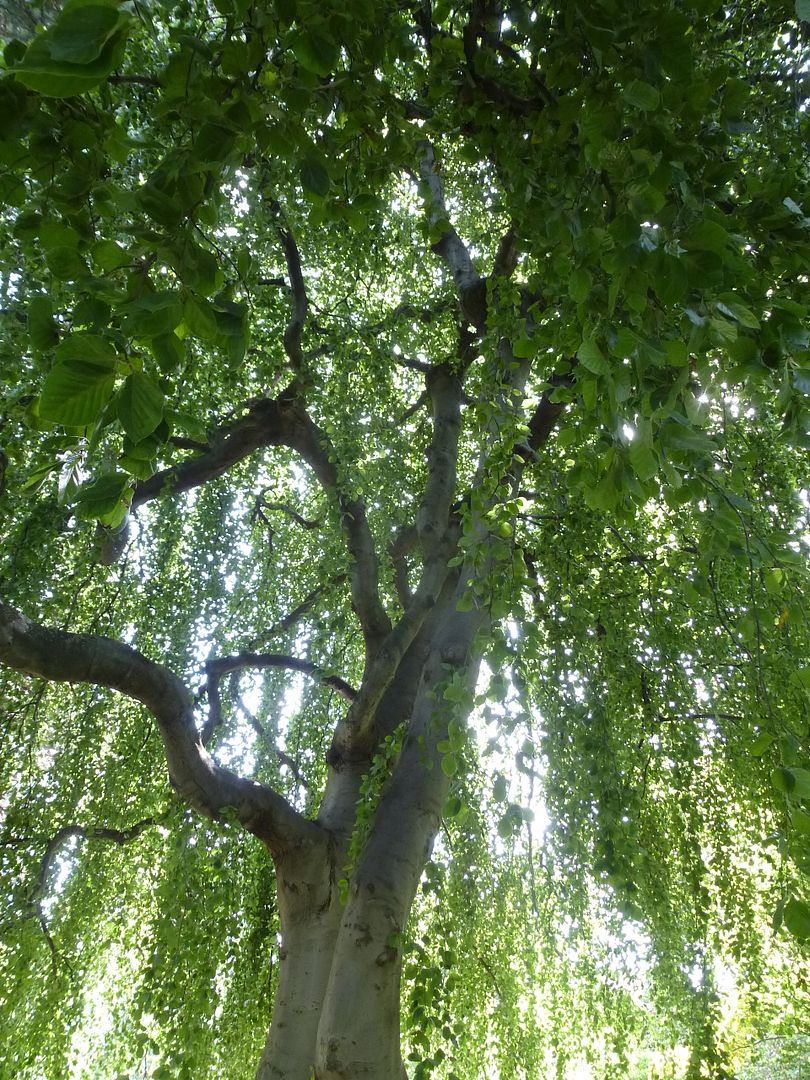
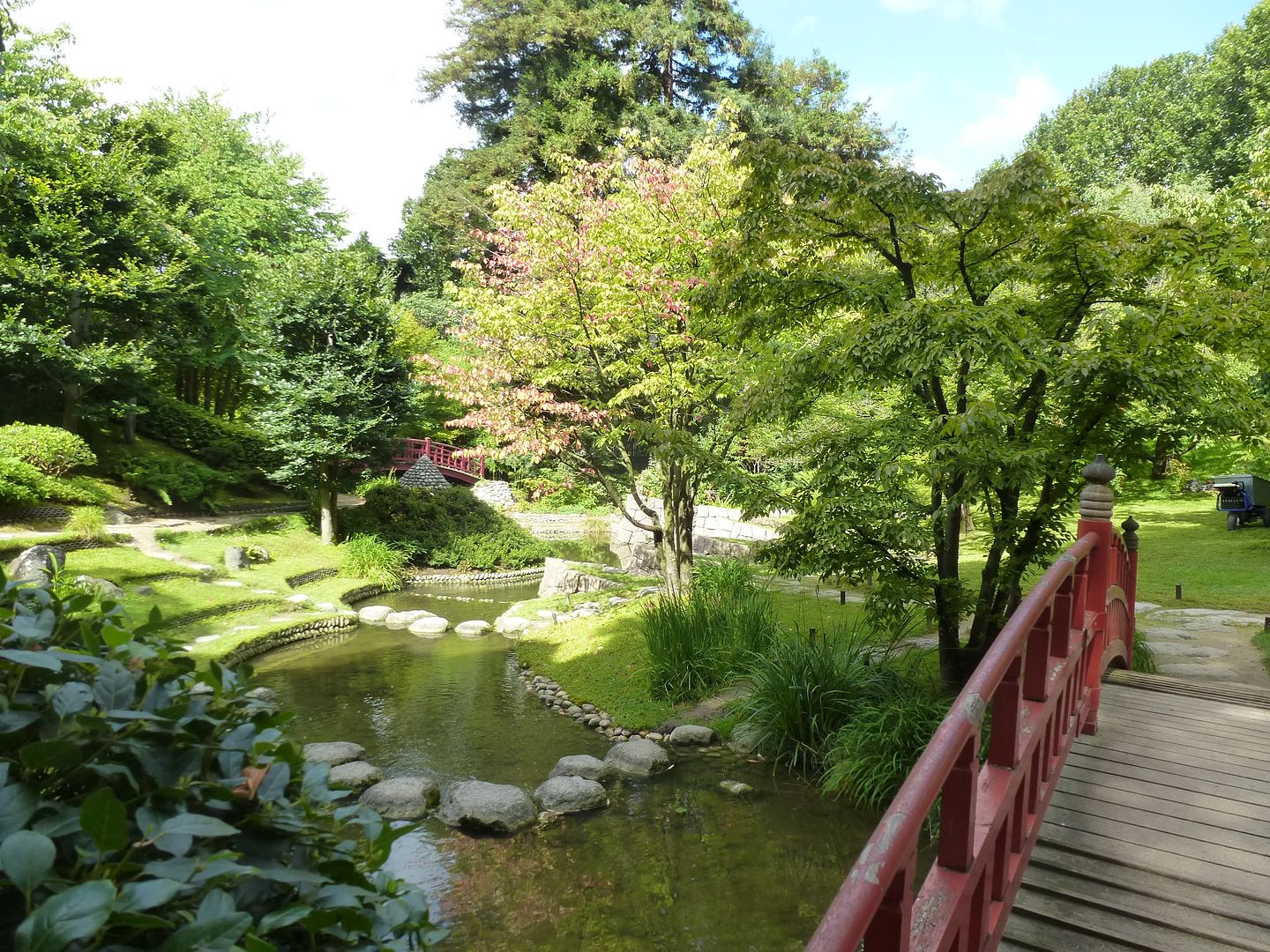

This is the first thing you see coming out of the museum building.

And so I started wandering through the Japanese garden...














I did not always follow the logical path to stay in the correct area and just went from surprise to surprise.
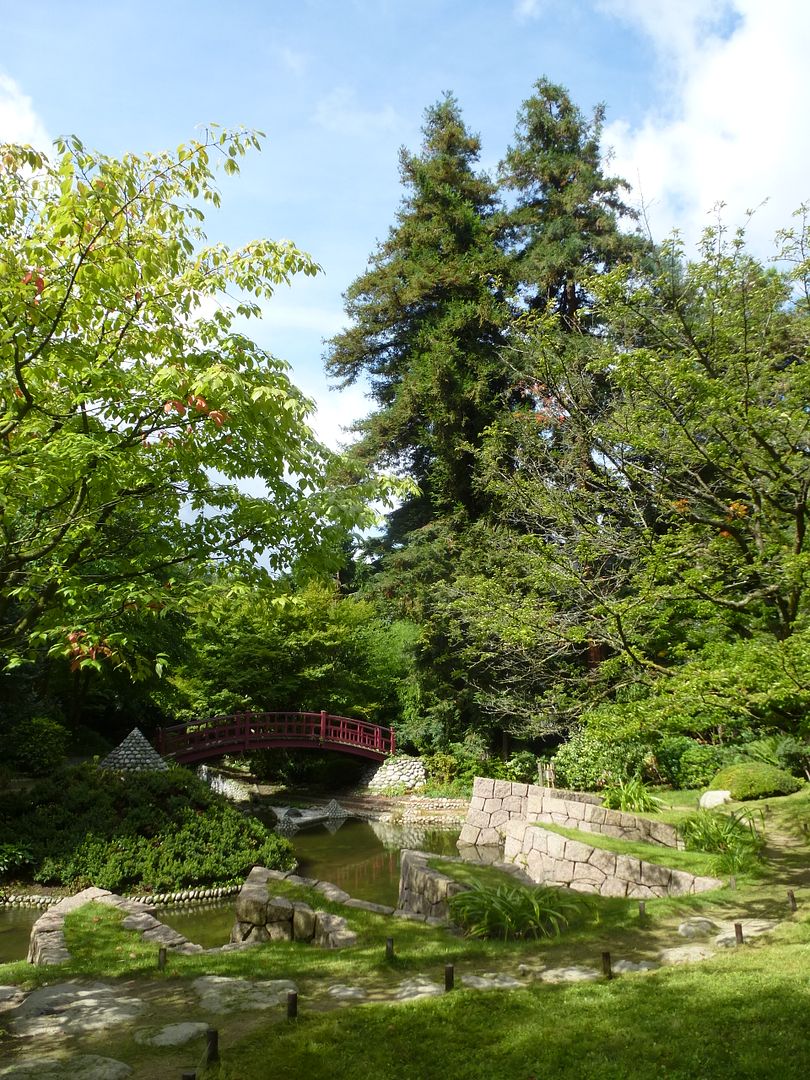
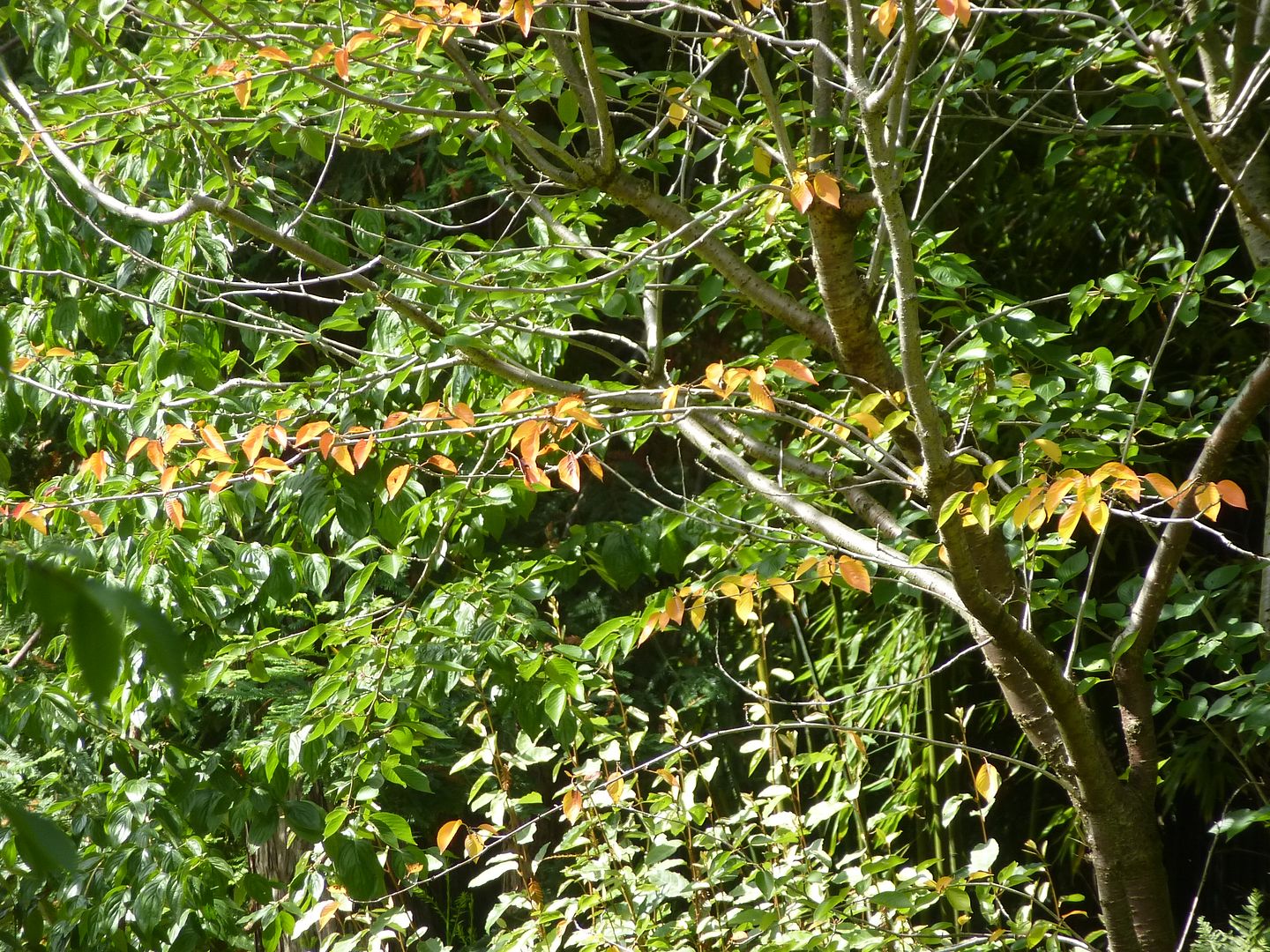
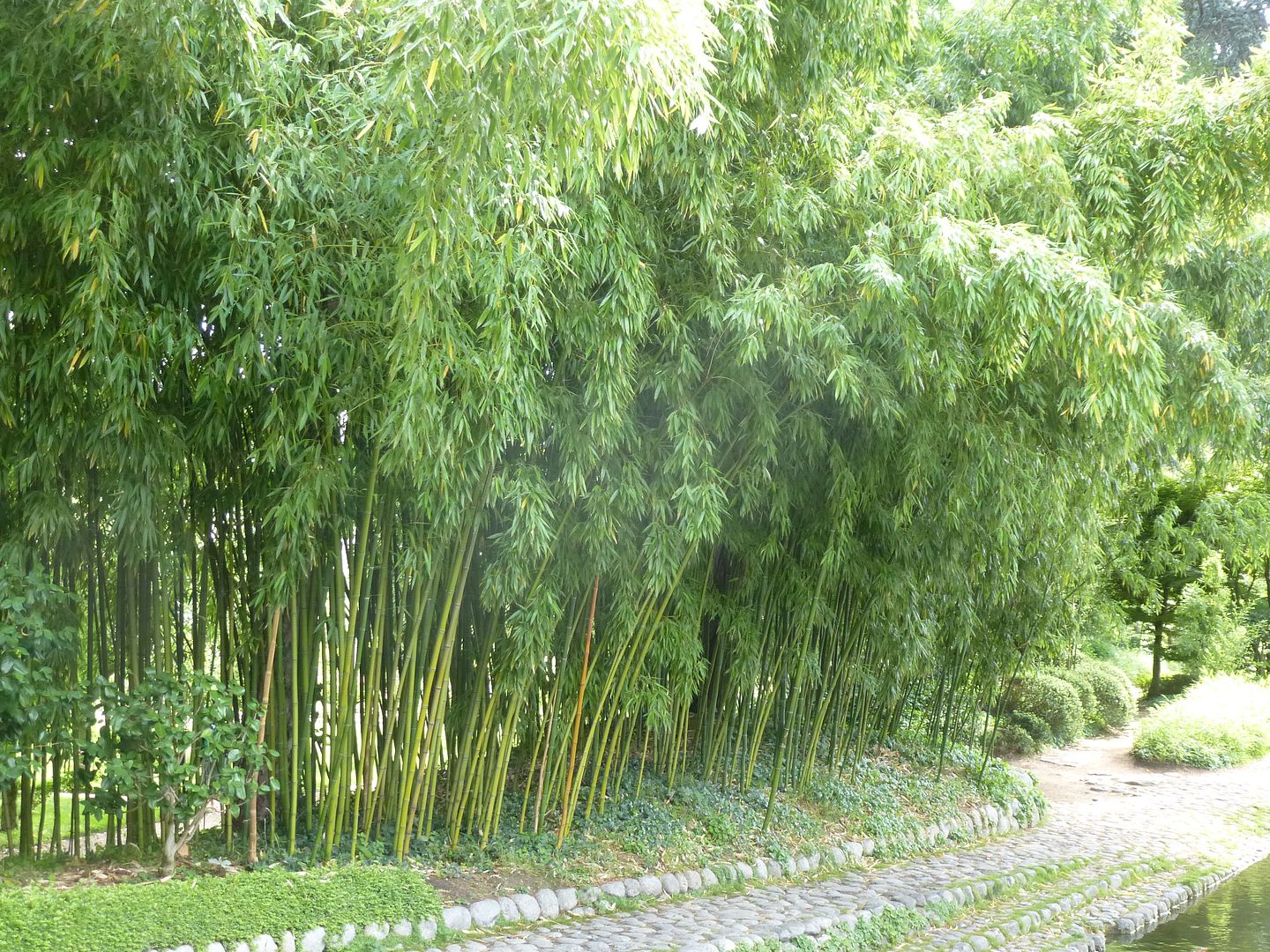
This gate implied that I was leaving the Japanese garden.

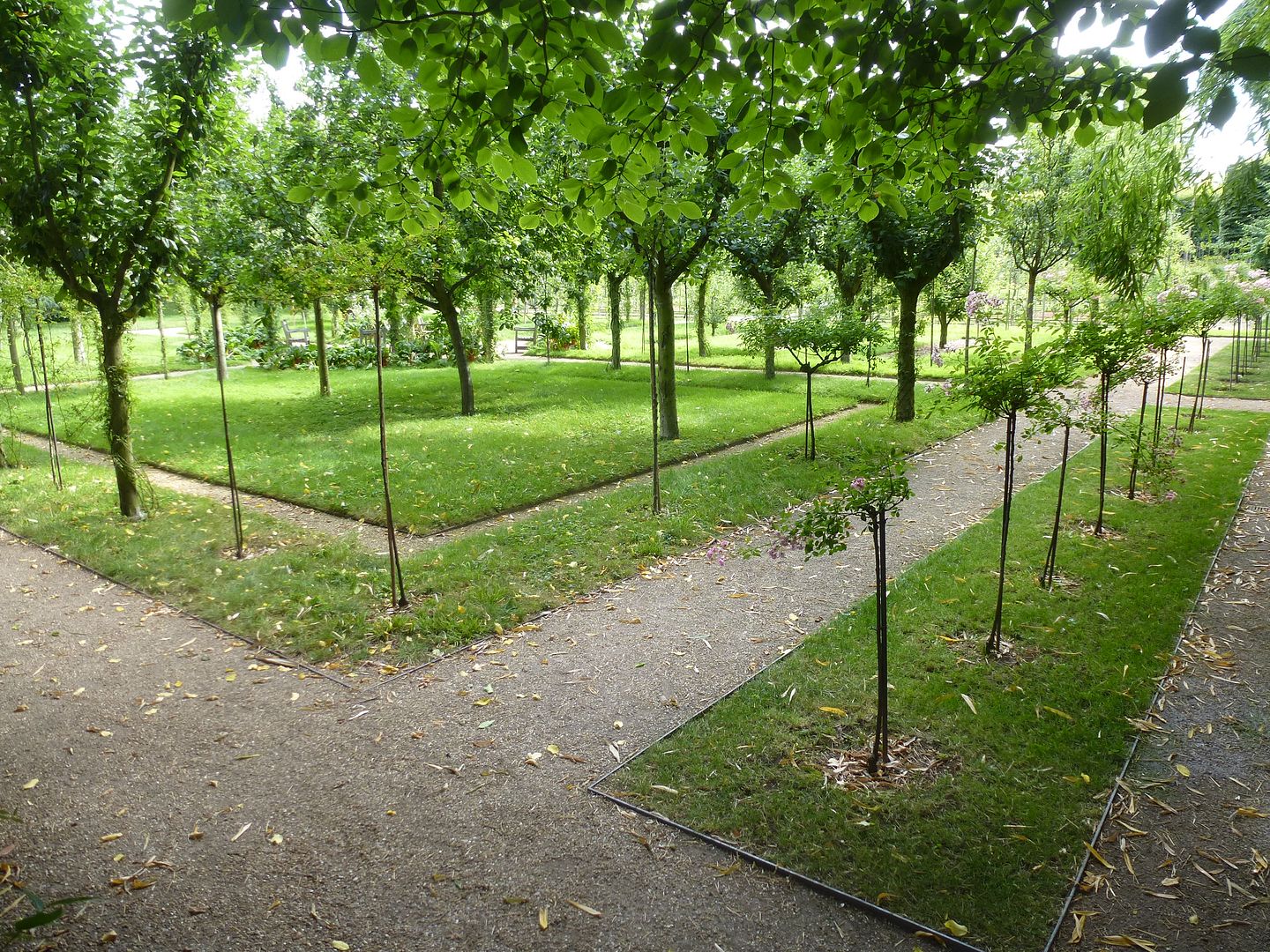
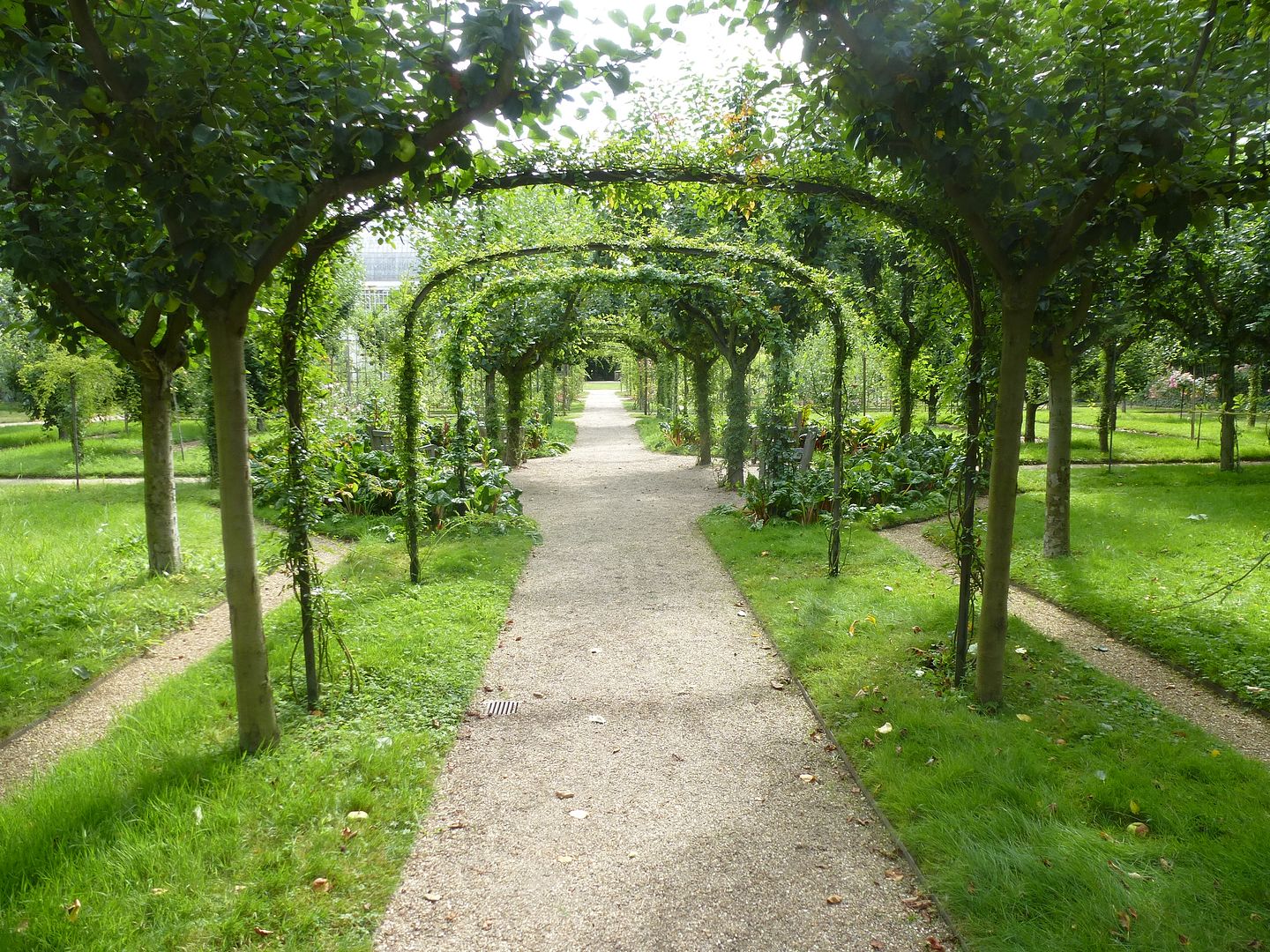
Okay, I was on the edge of the French garden, but I veered off for the time being.
Ah, the edge of the blue forest...!
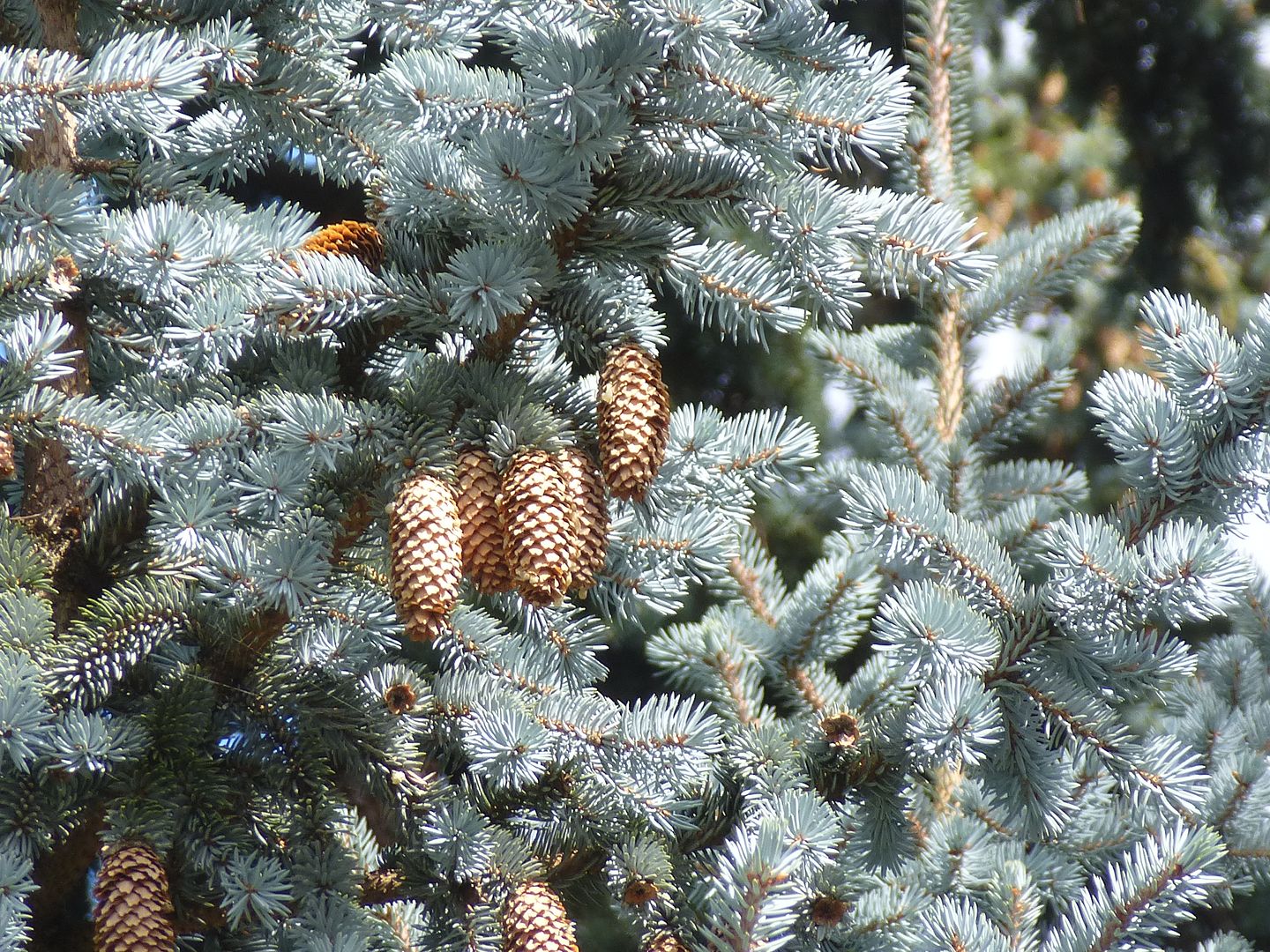
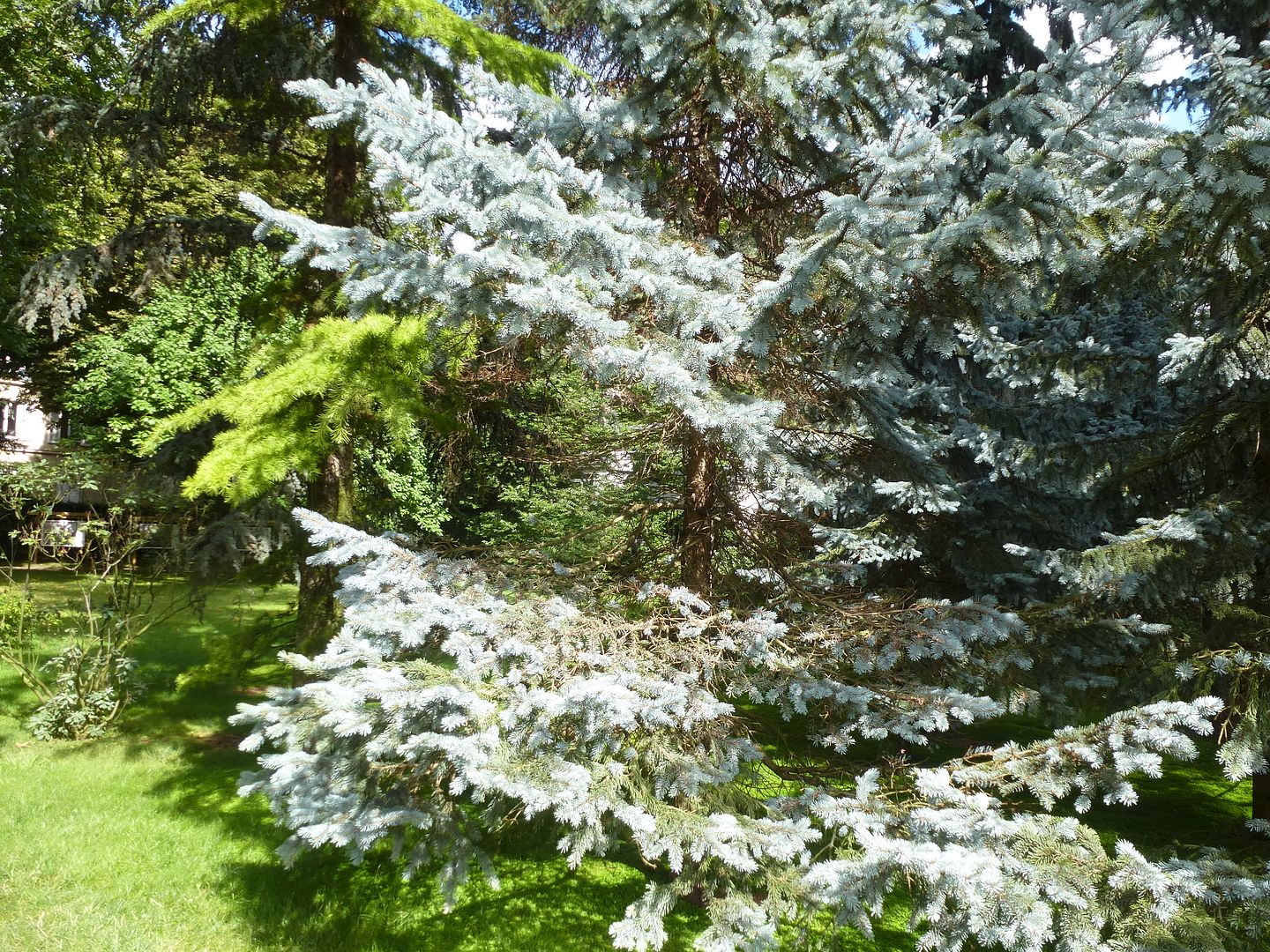
But I decided to see the prairie first.
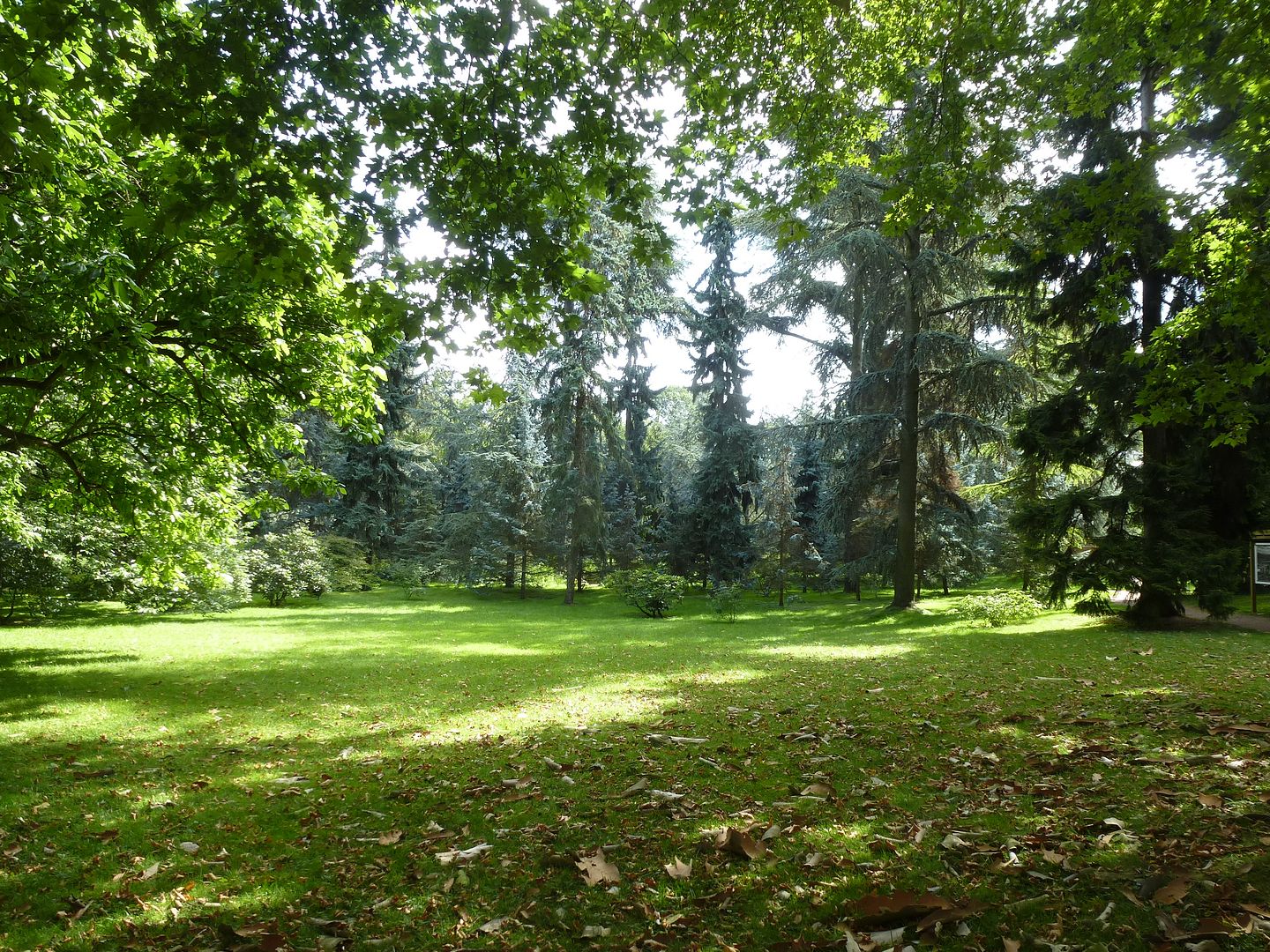
There were some b&w prints of Mongolia to try to entice people to visit the exhibition in the museum.
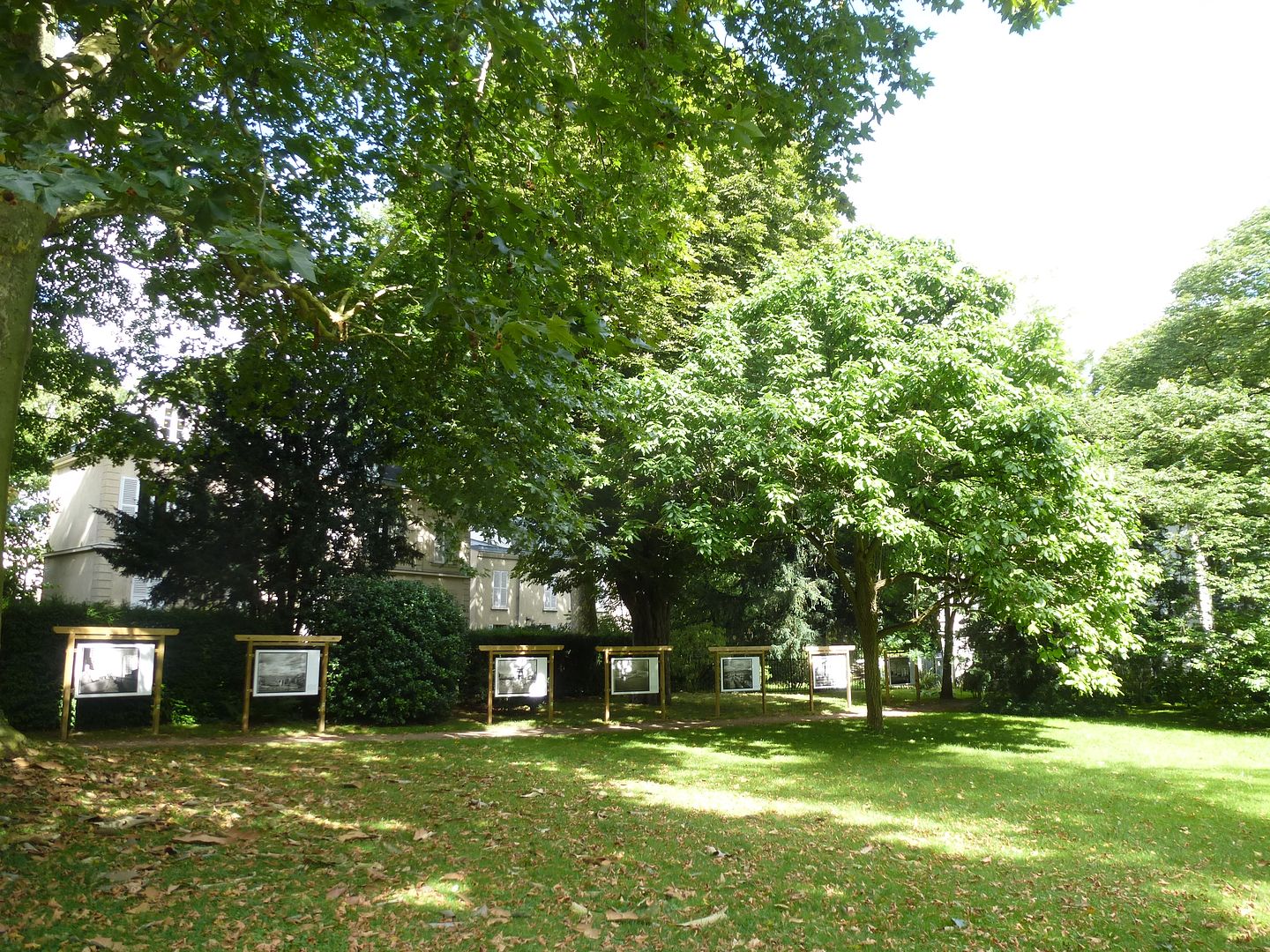
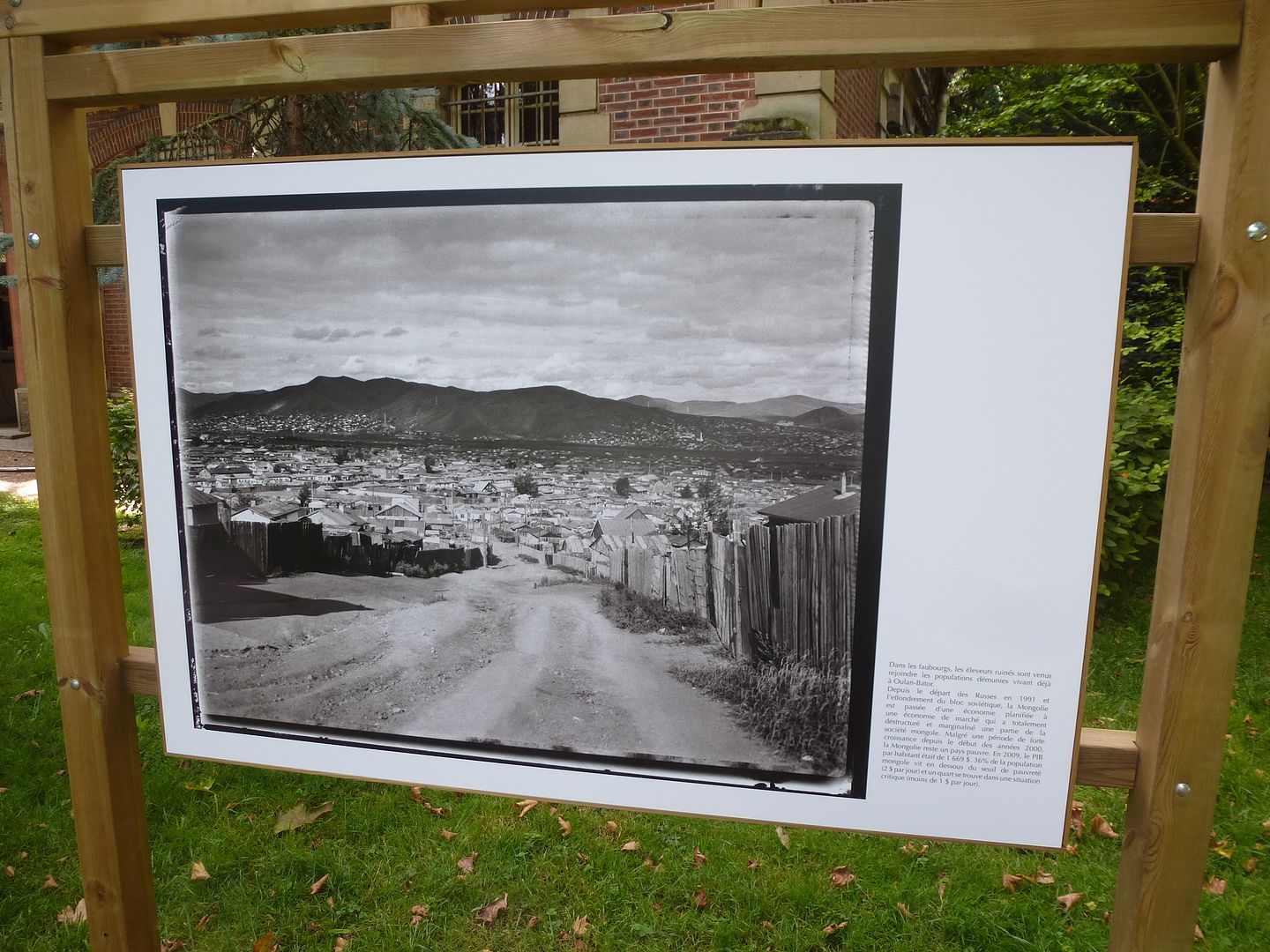

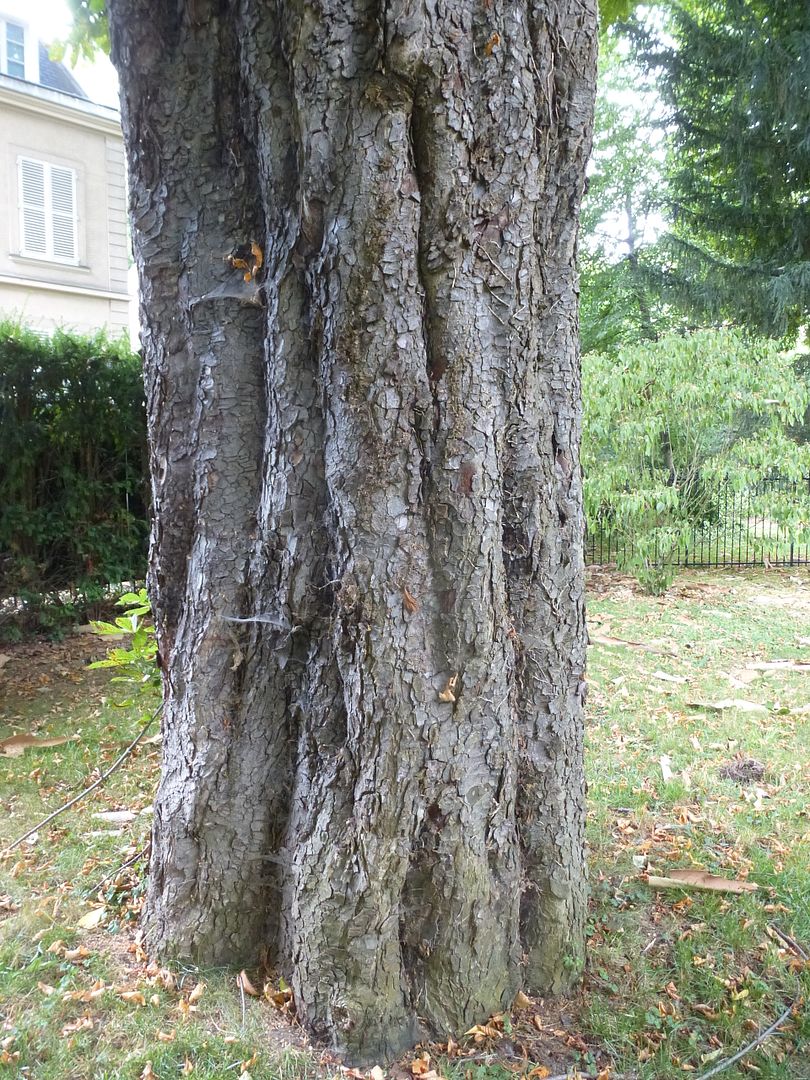
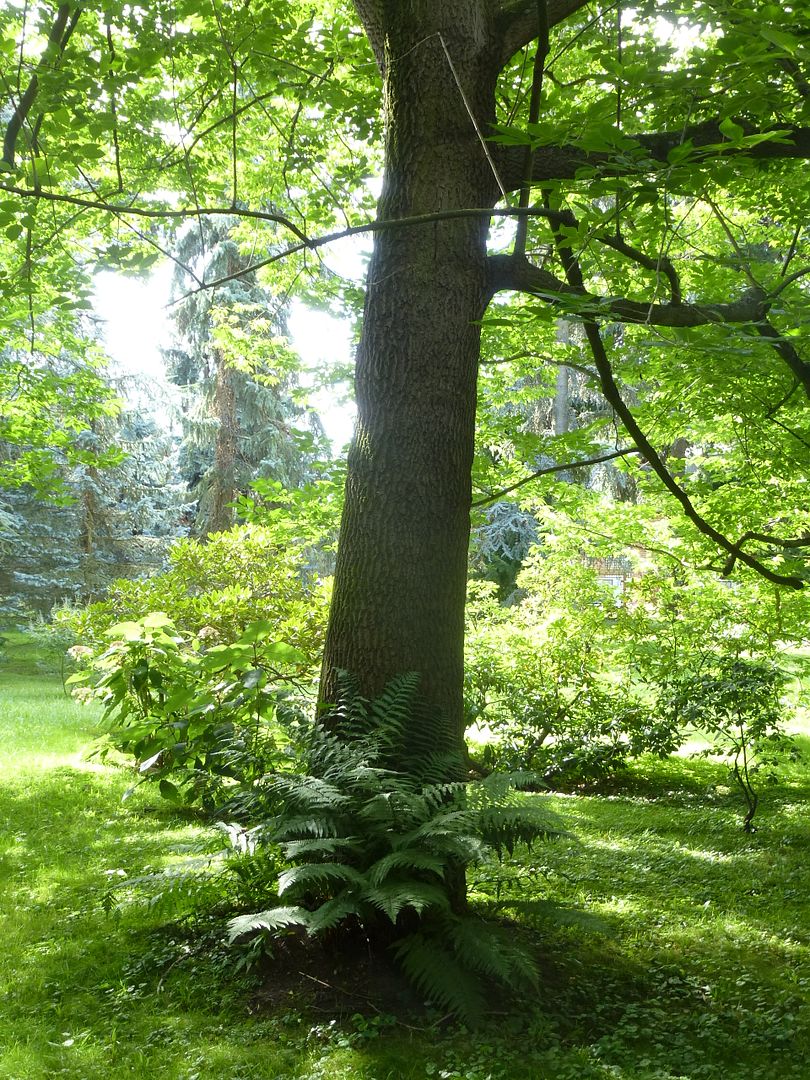

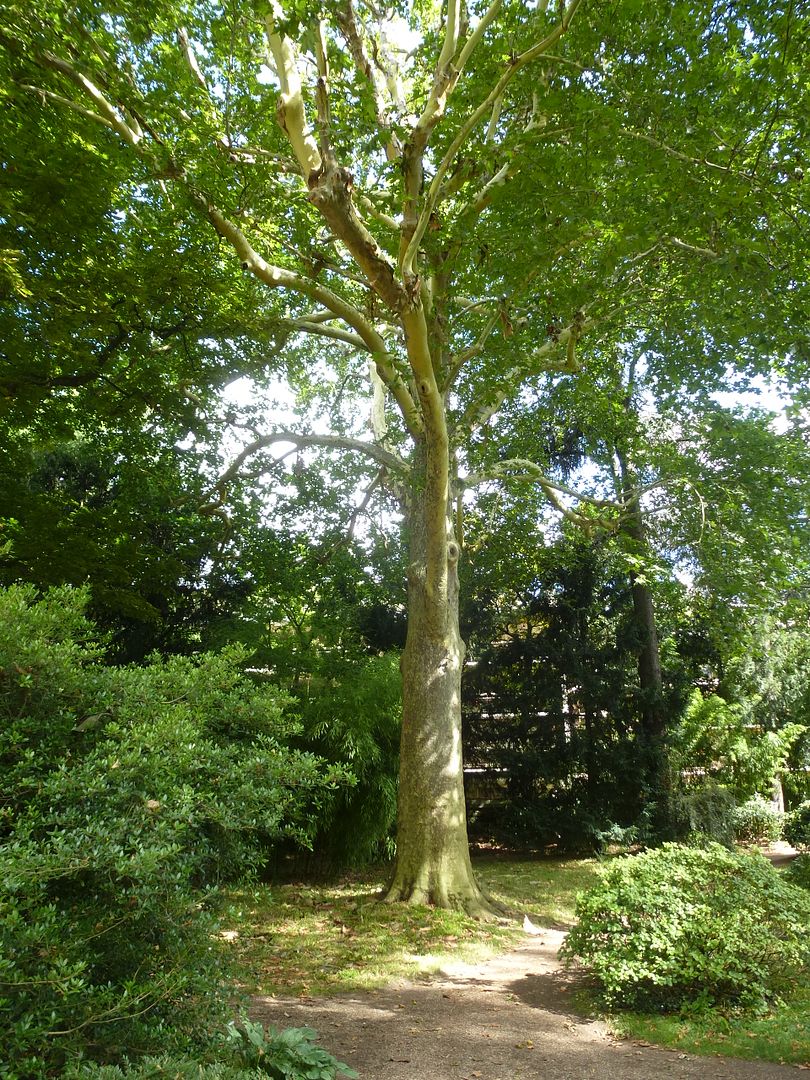
There were administrative offices in a corner.
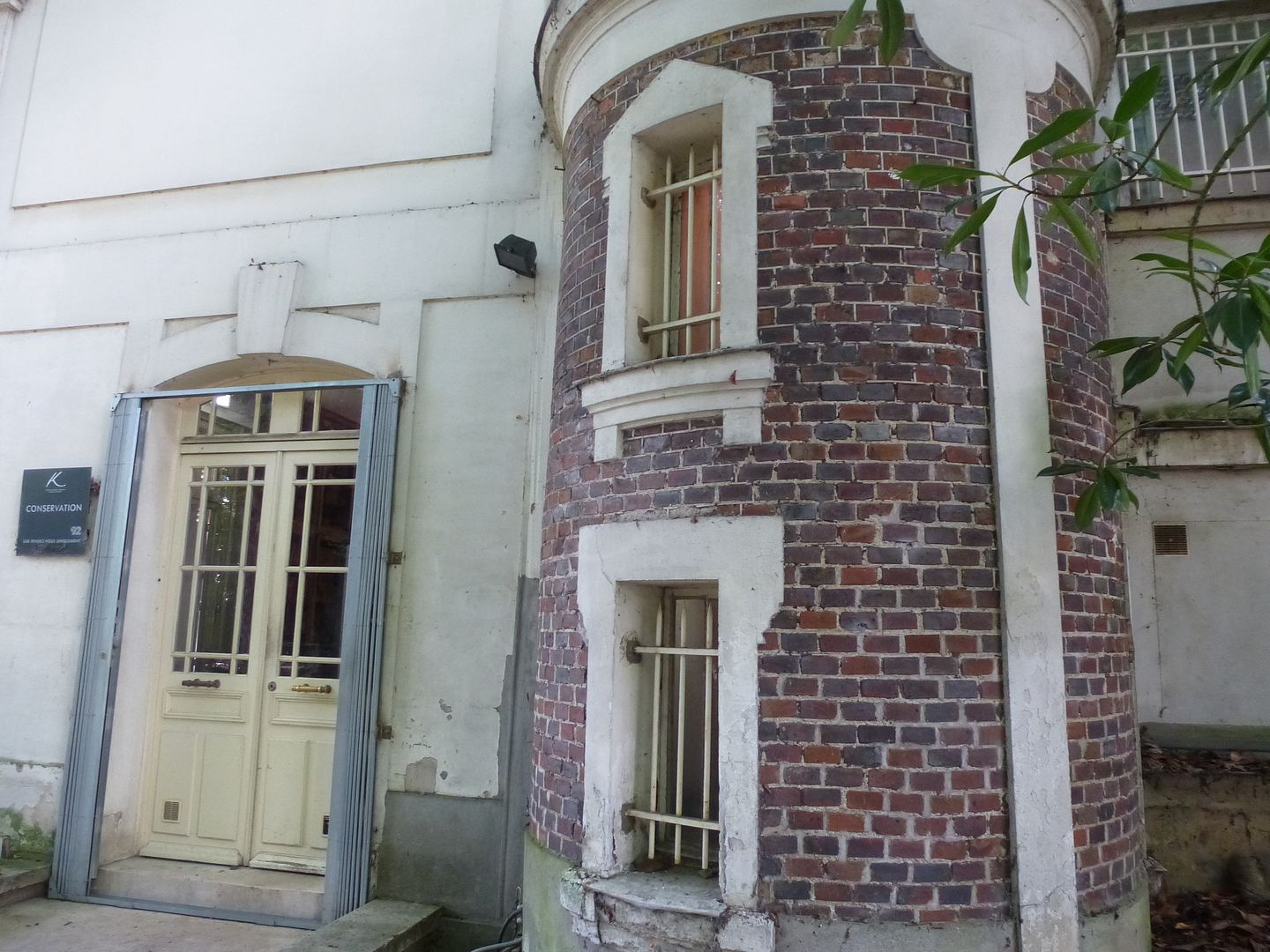
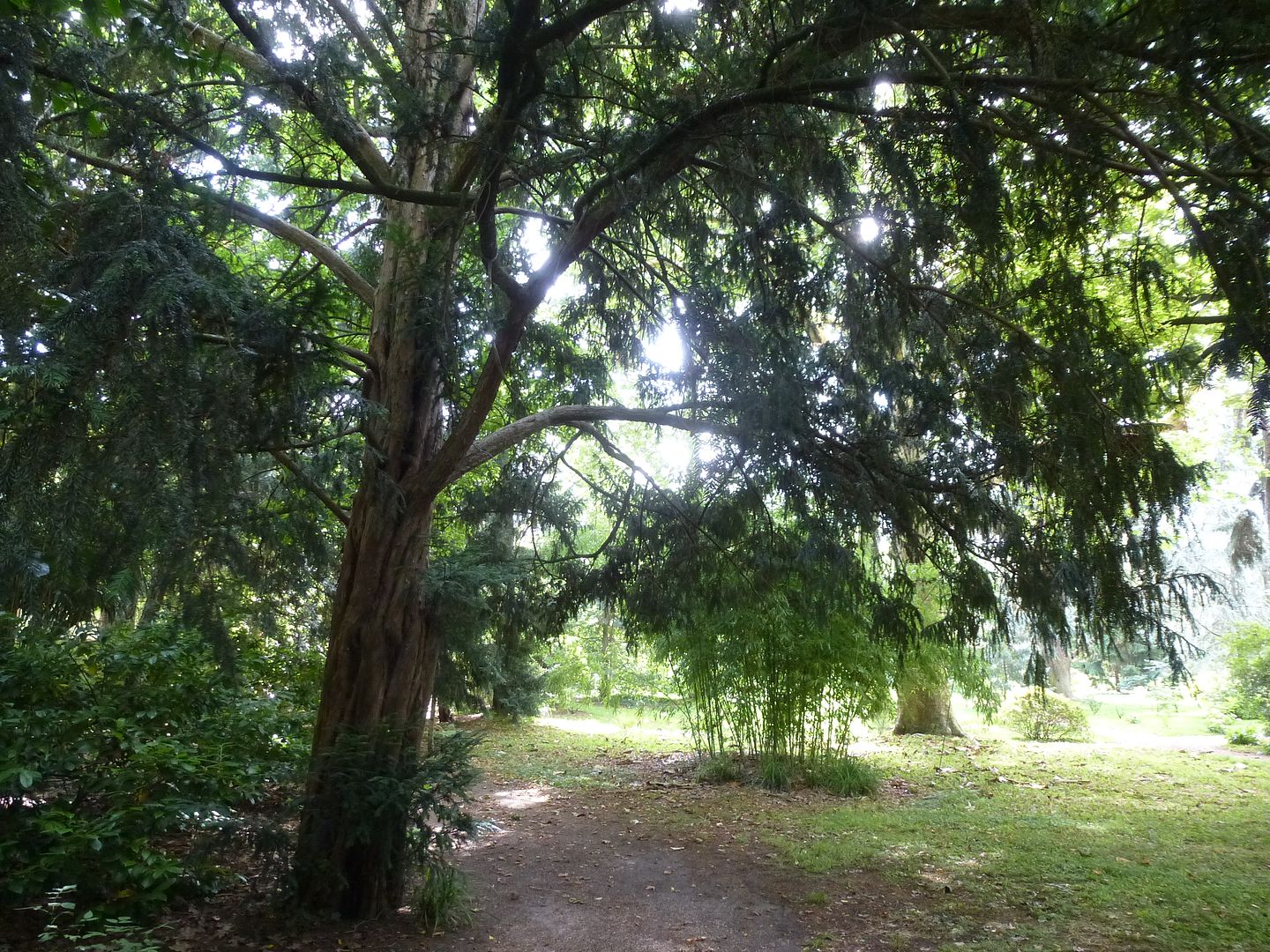
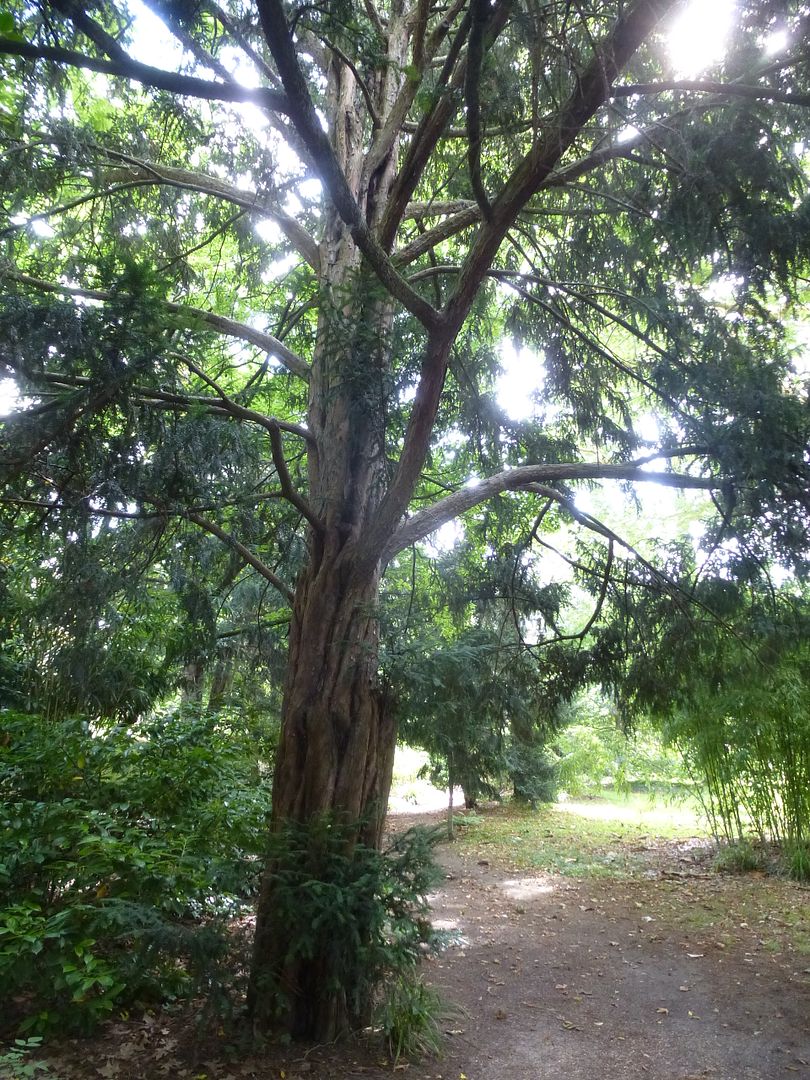
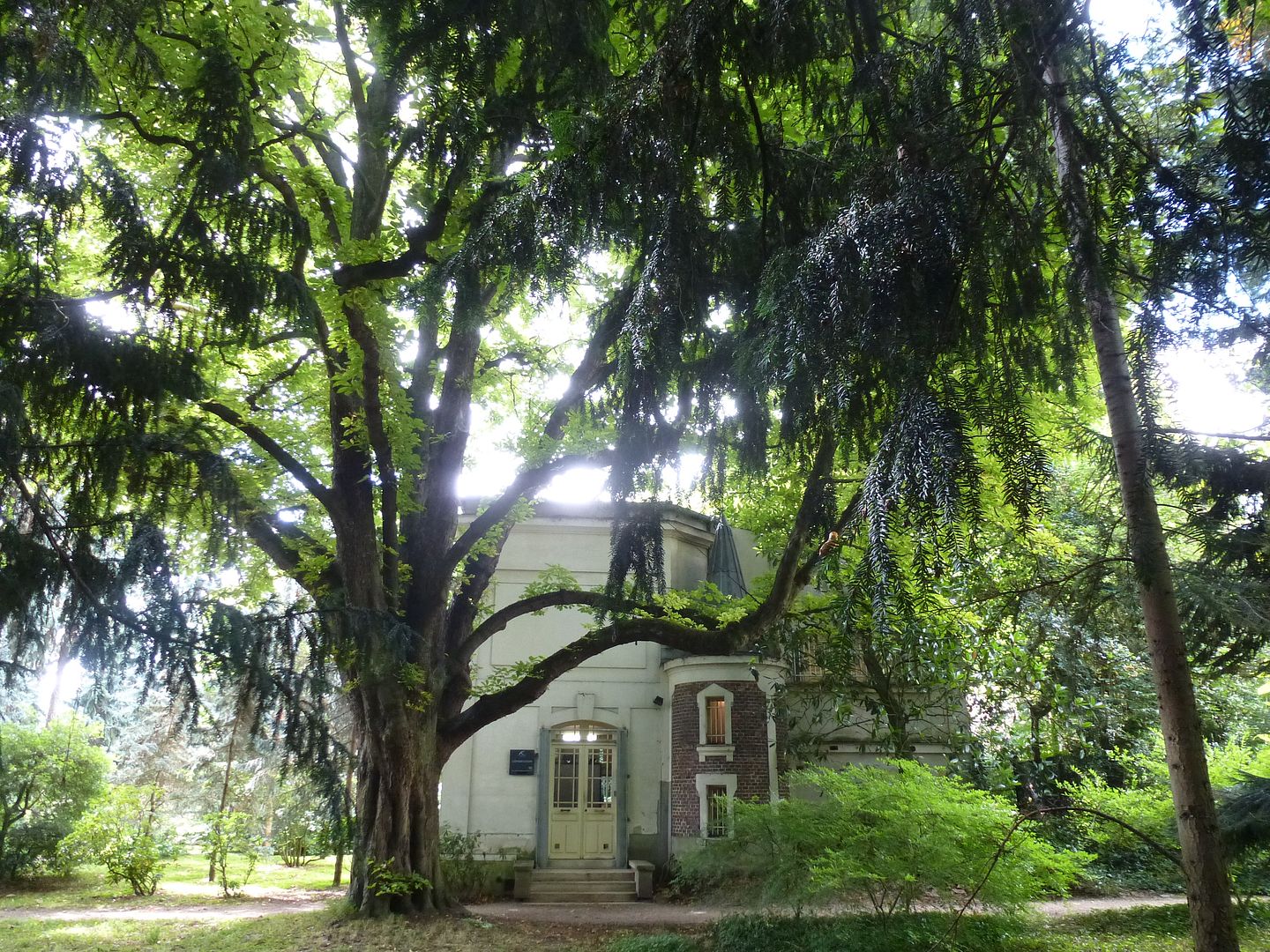
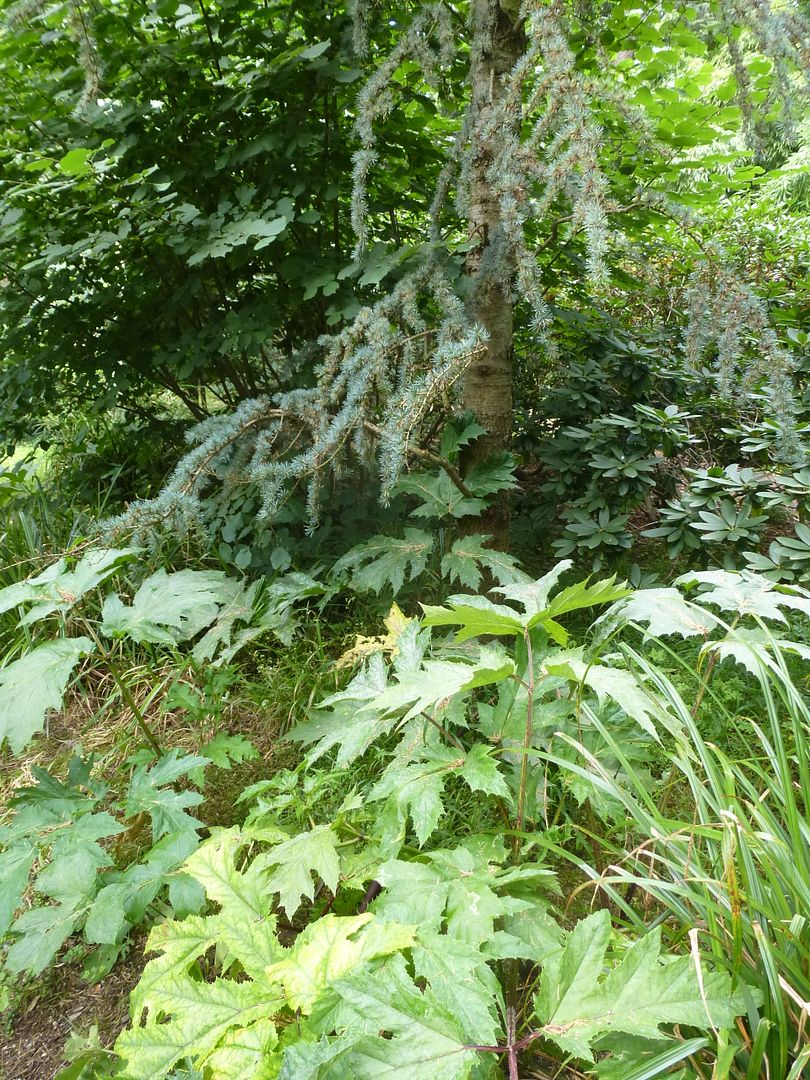
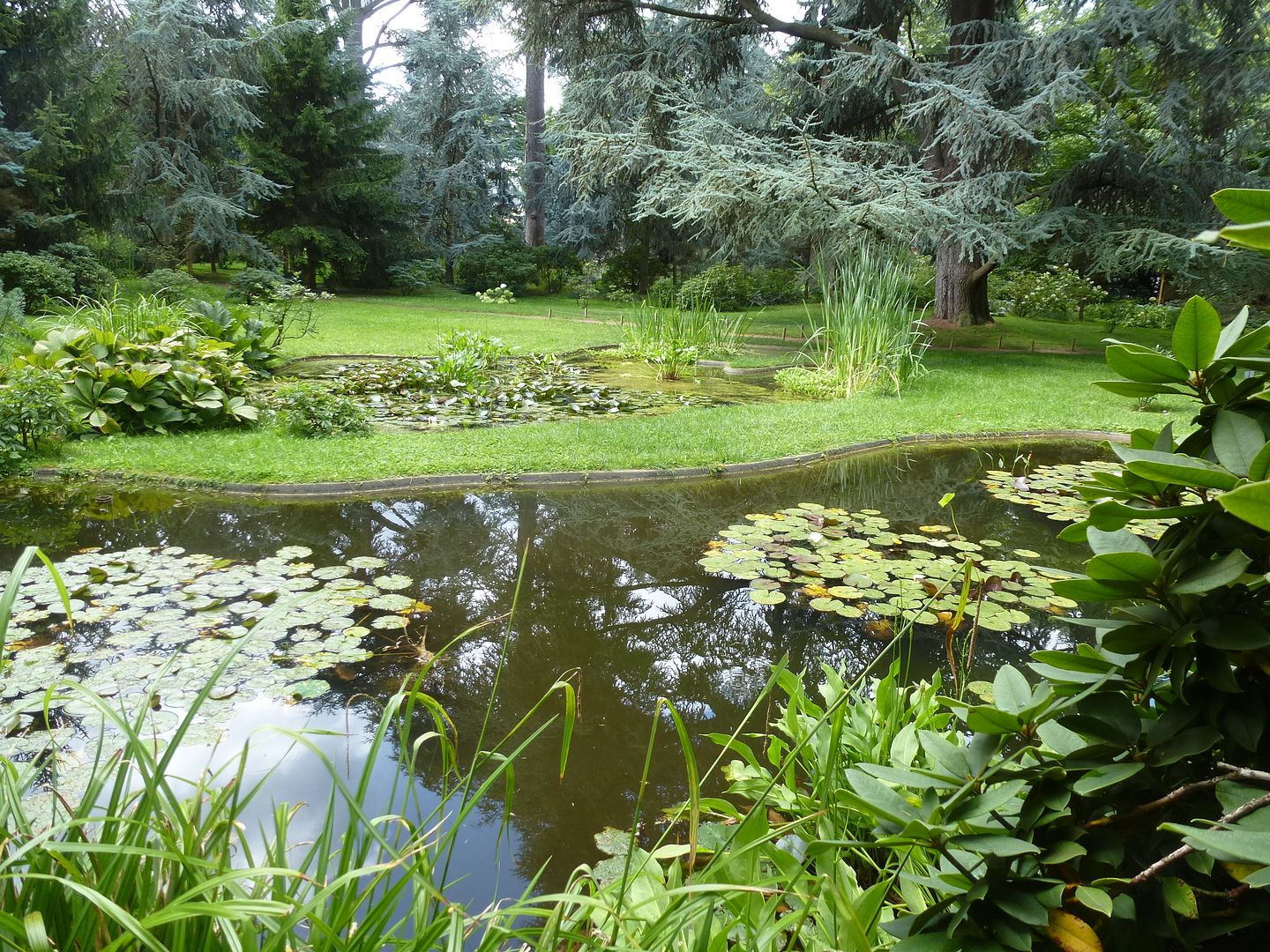




This gate implied that I was leaving the Japanese garden.



Okay, I was on the edge of the French garden, but I veered off for the time being.
Ah, the edge of the blue forest...!


But I decided to see the prairie first.

There were some b&w prints of Mongolia to try to entice people to visit the exhibition in the museum.







There were administrative offices in a corner.







I entered the Vosgian forest.
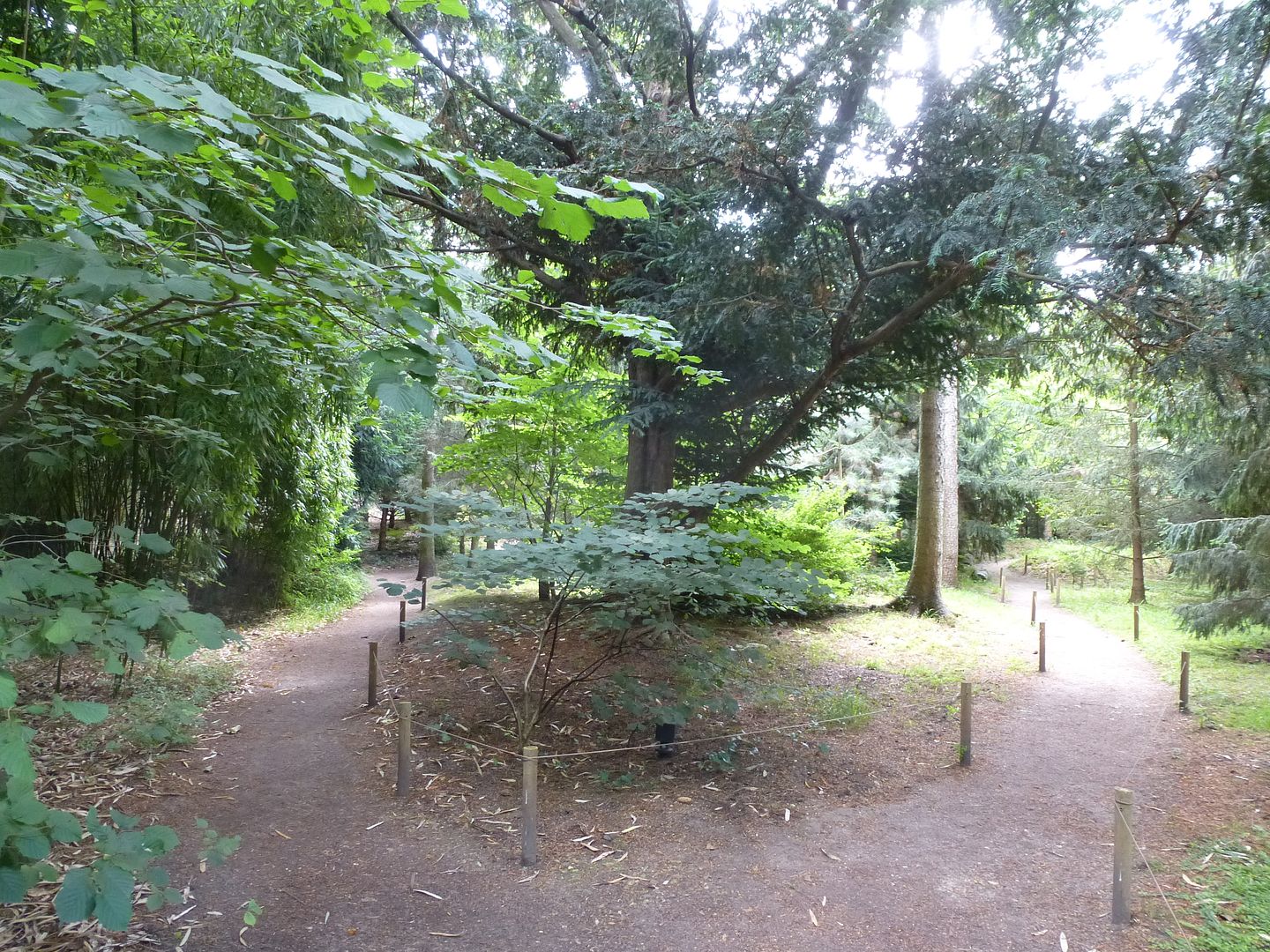
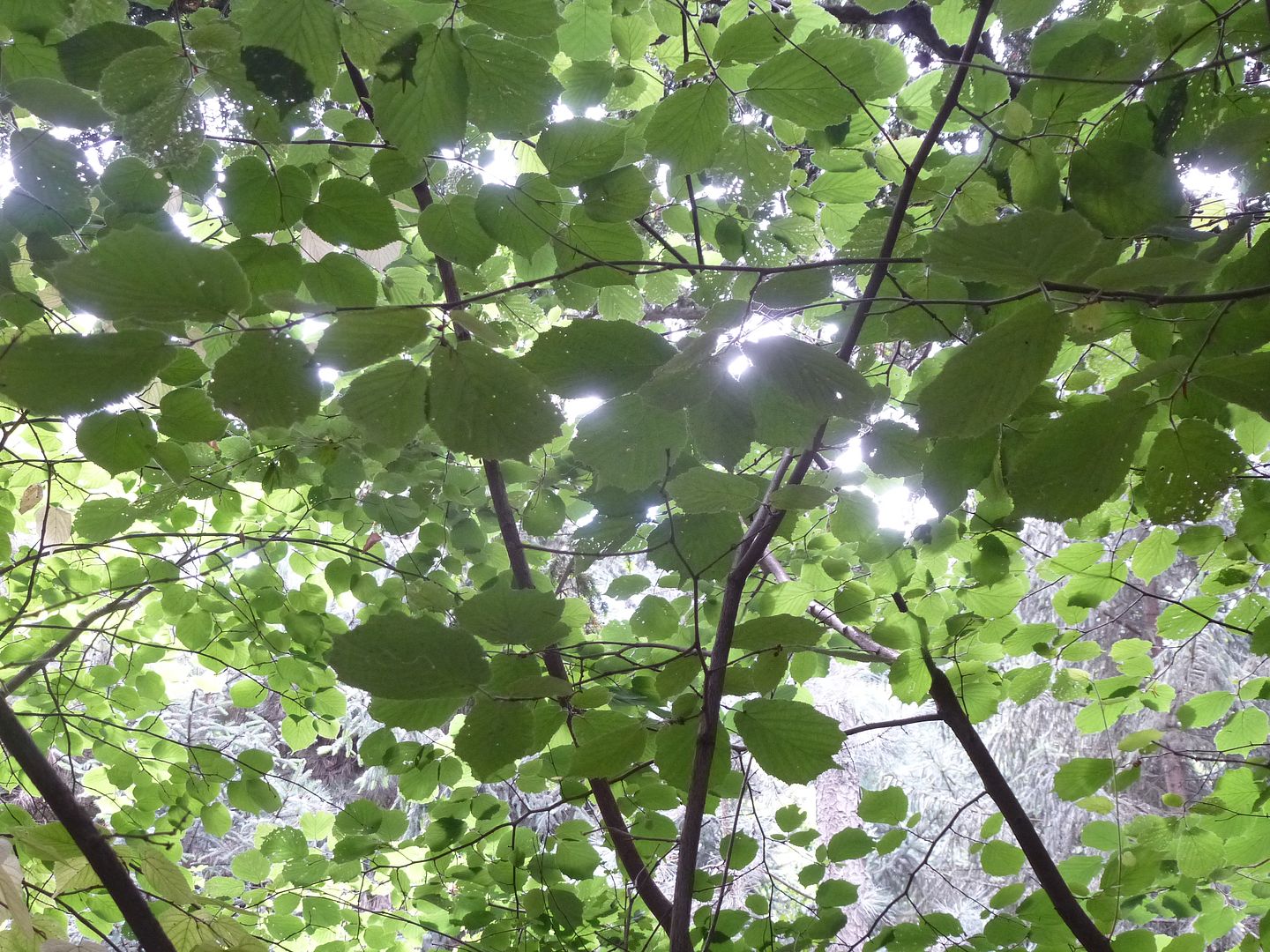

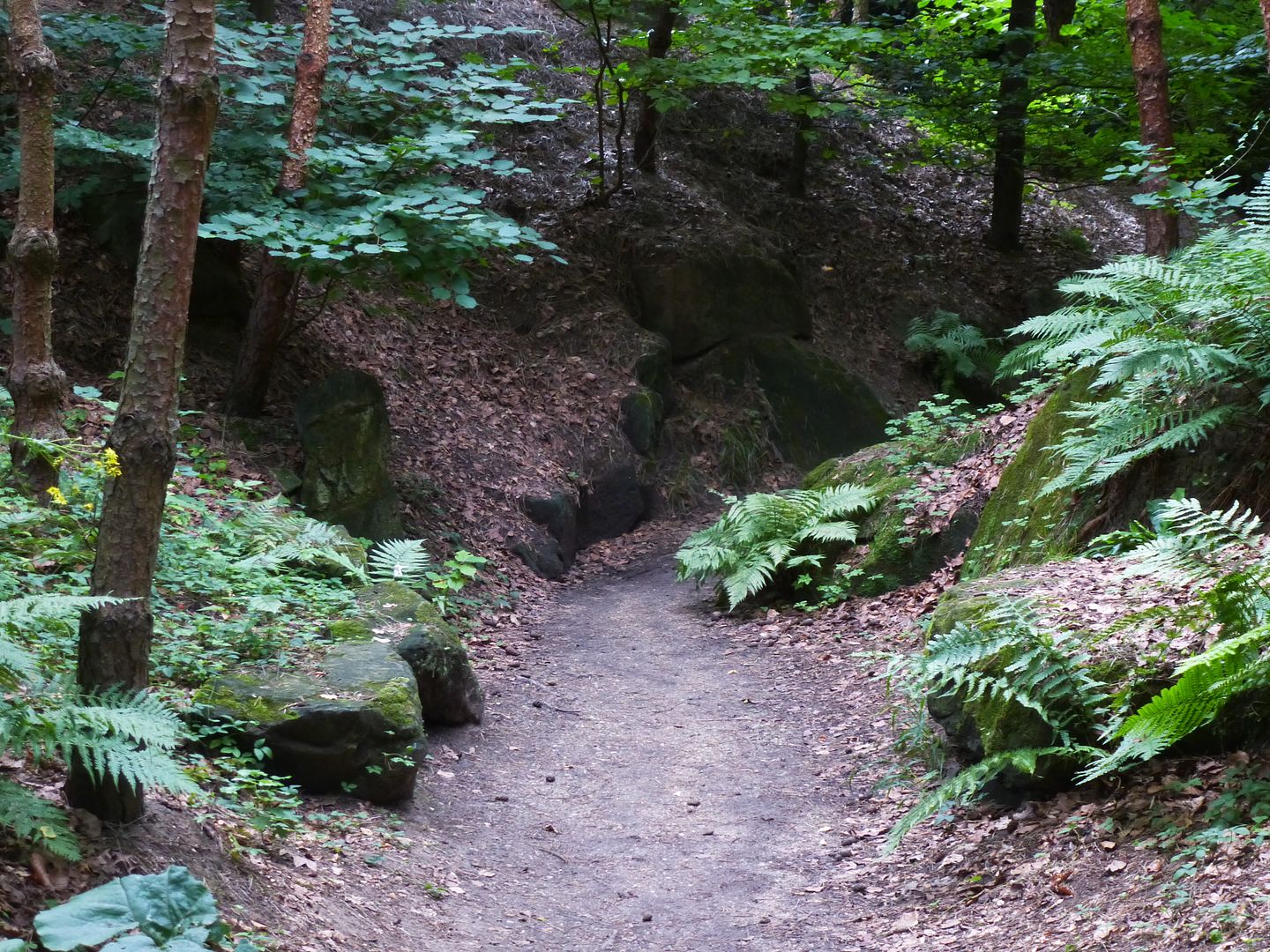


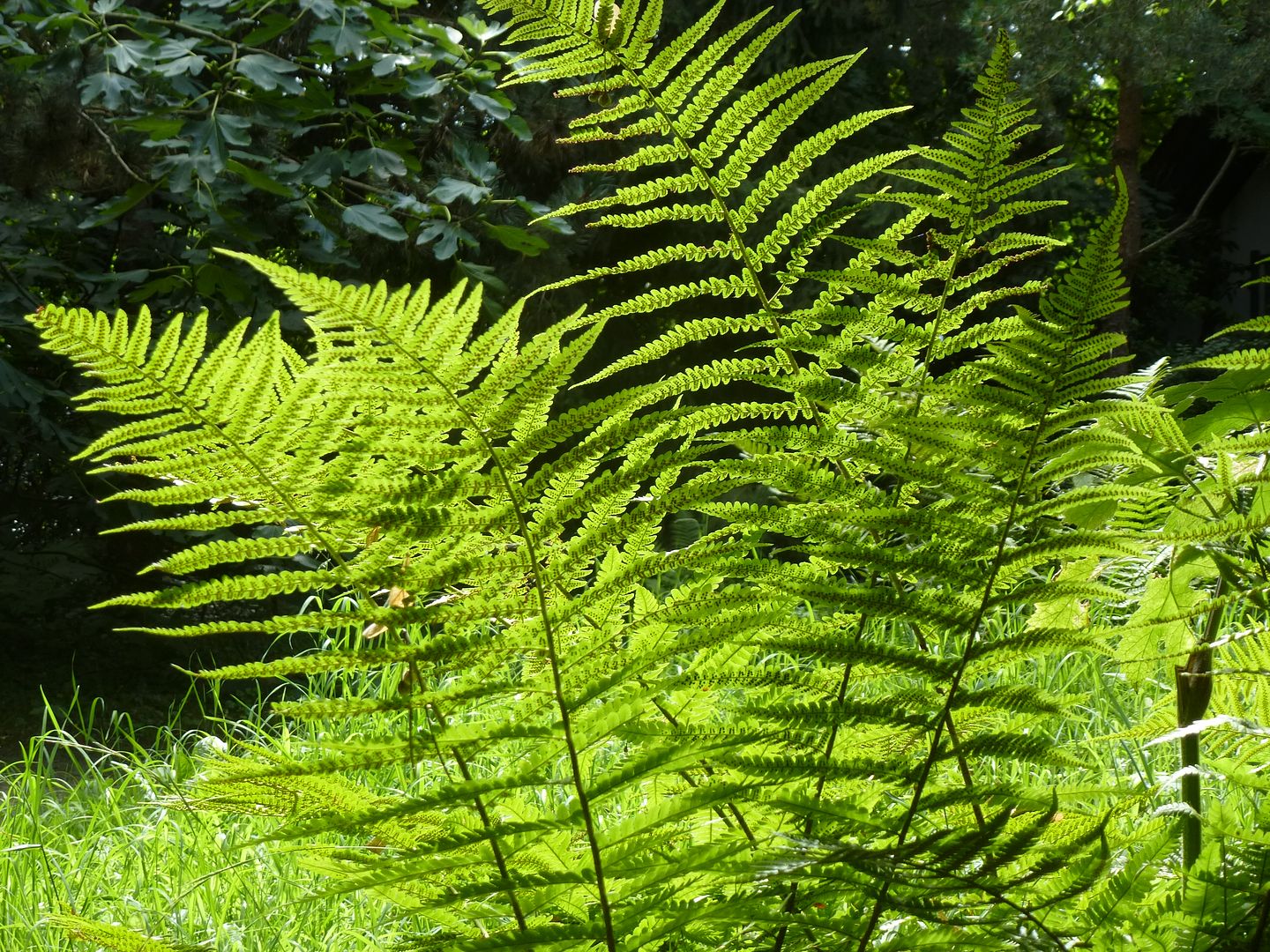
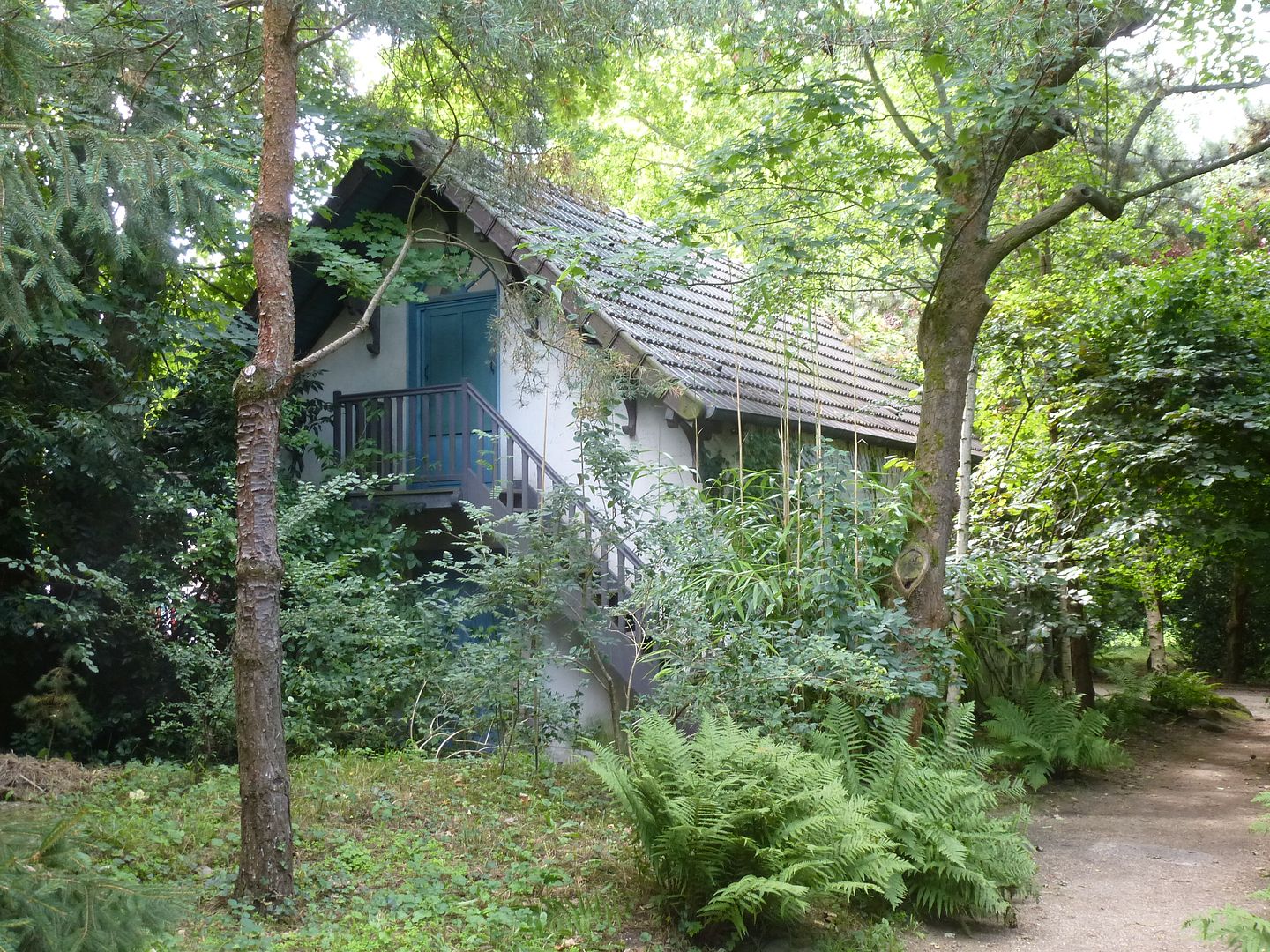
A path led me back to the formal French garden, so I decided that it was time to look at it.

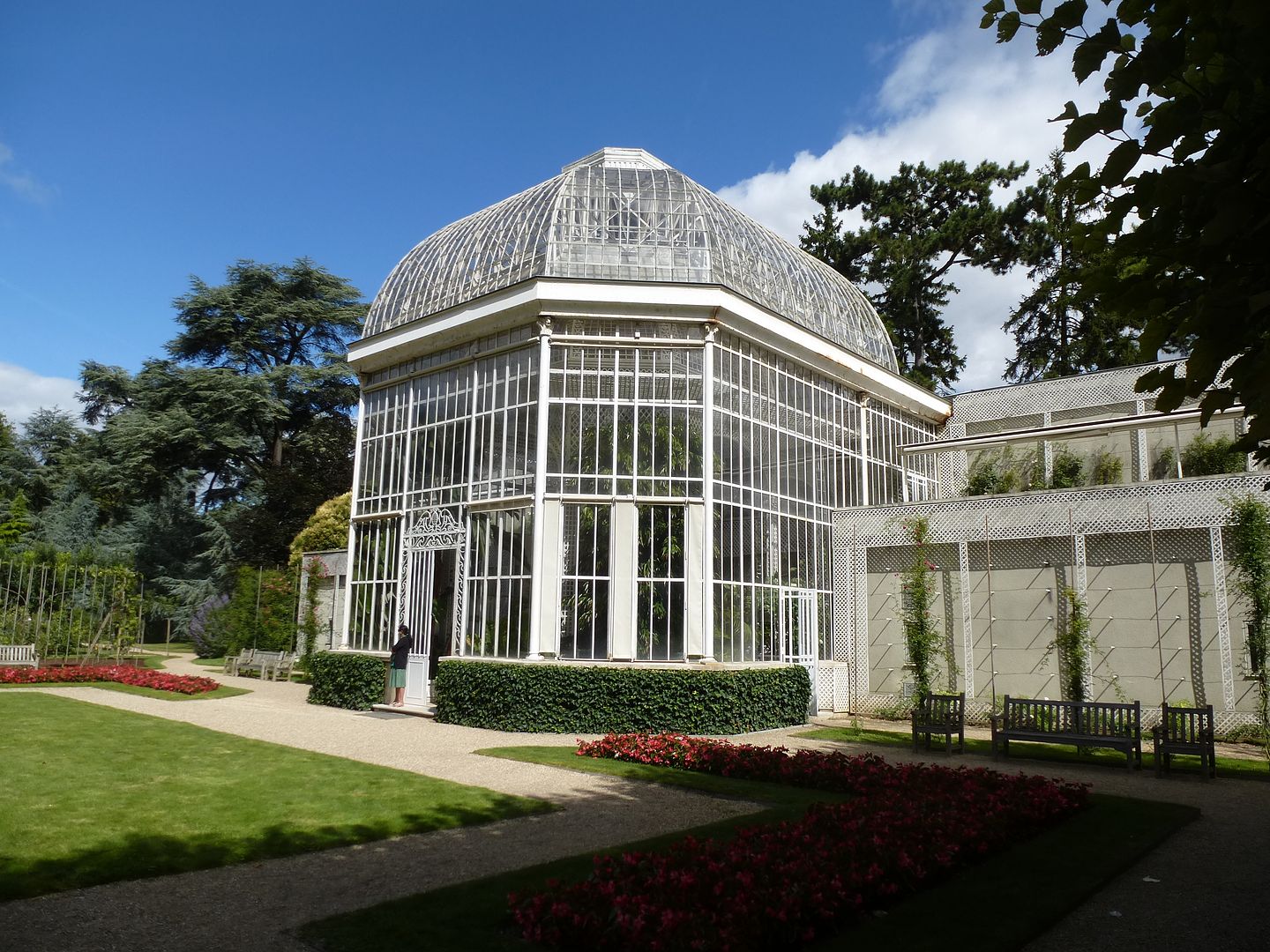

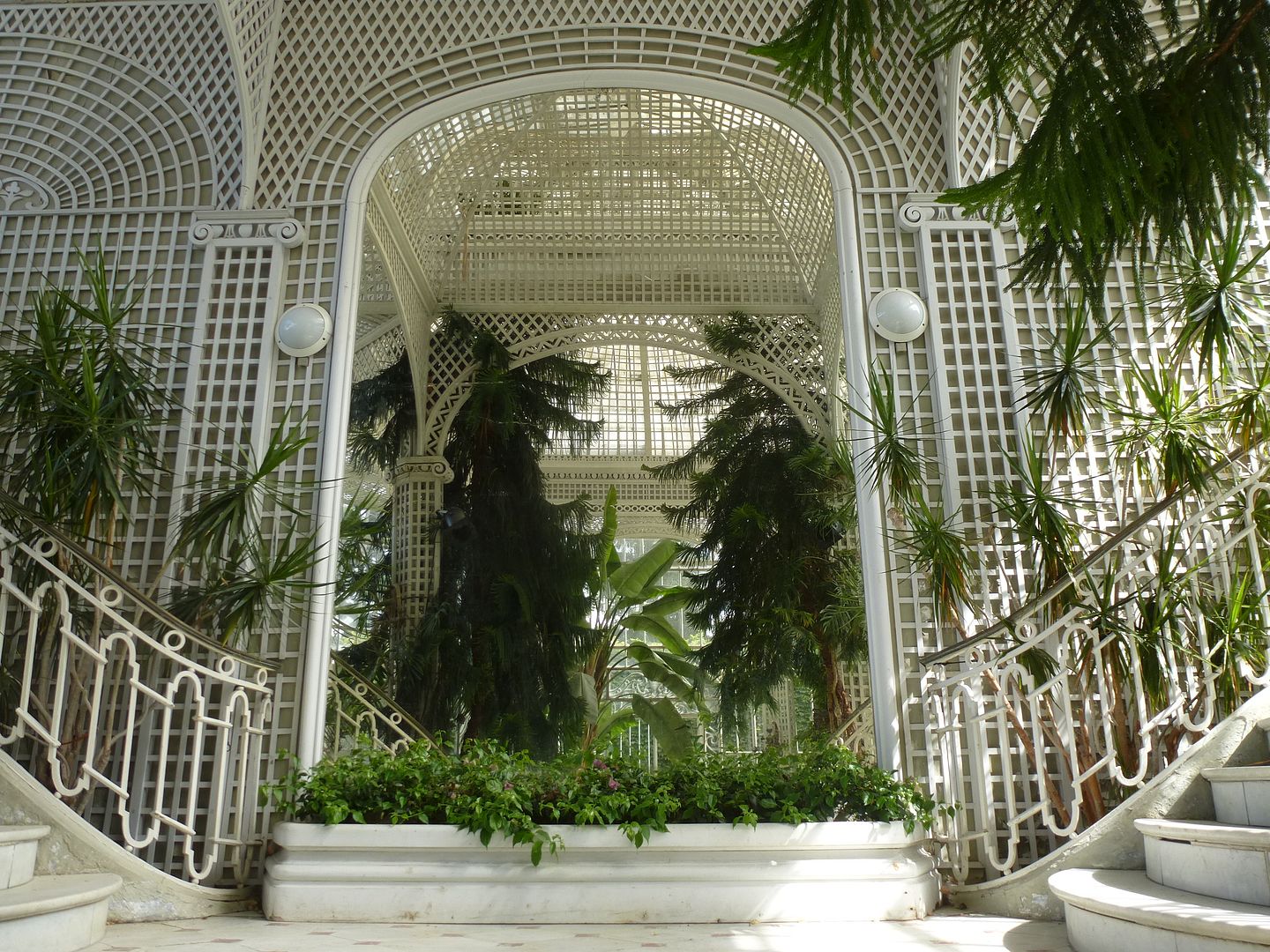
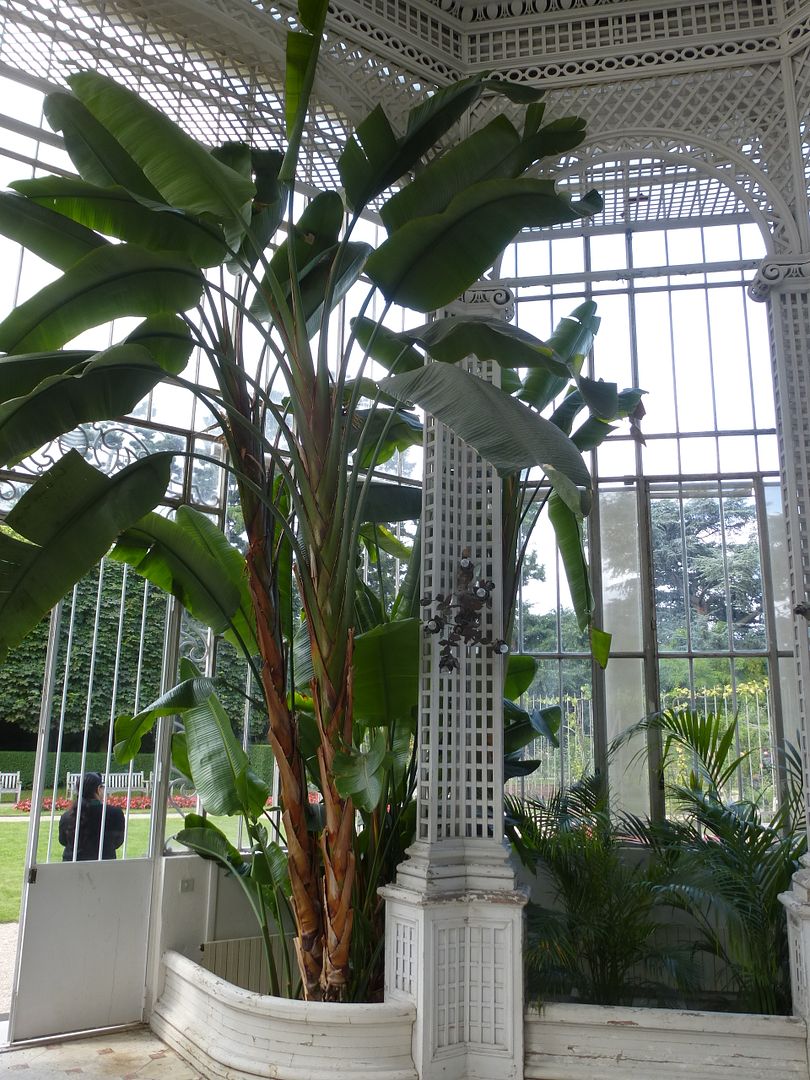

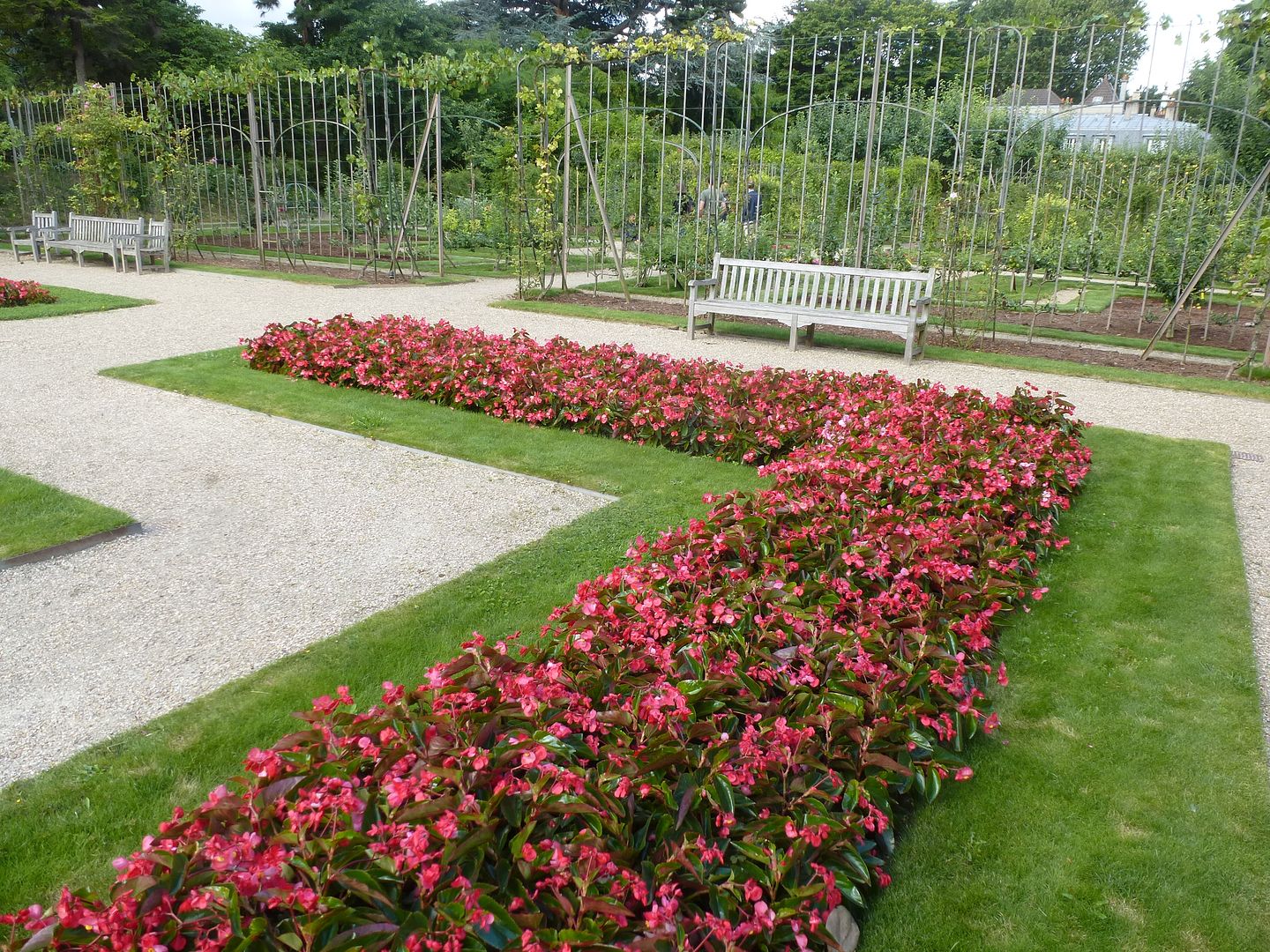
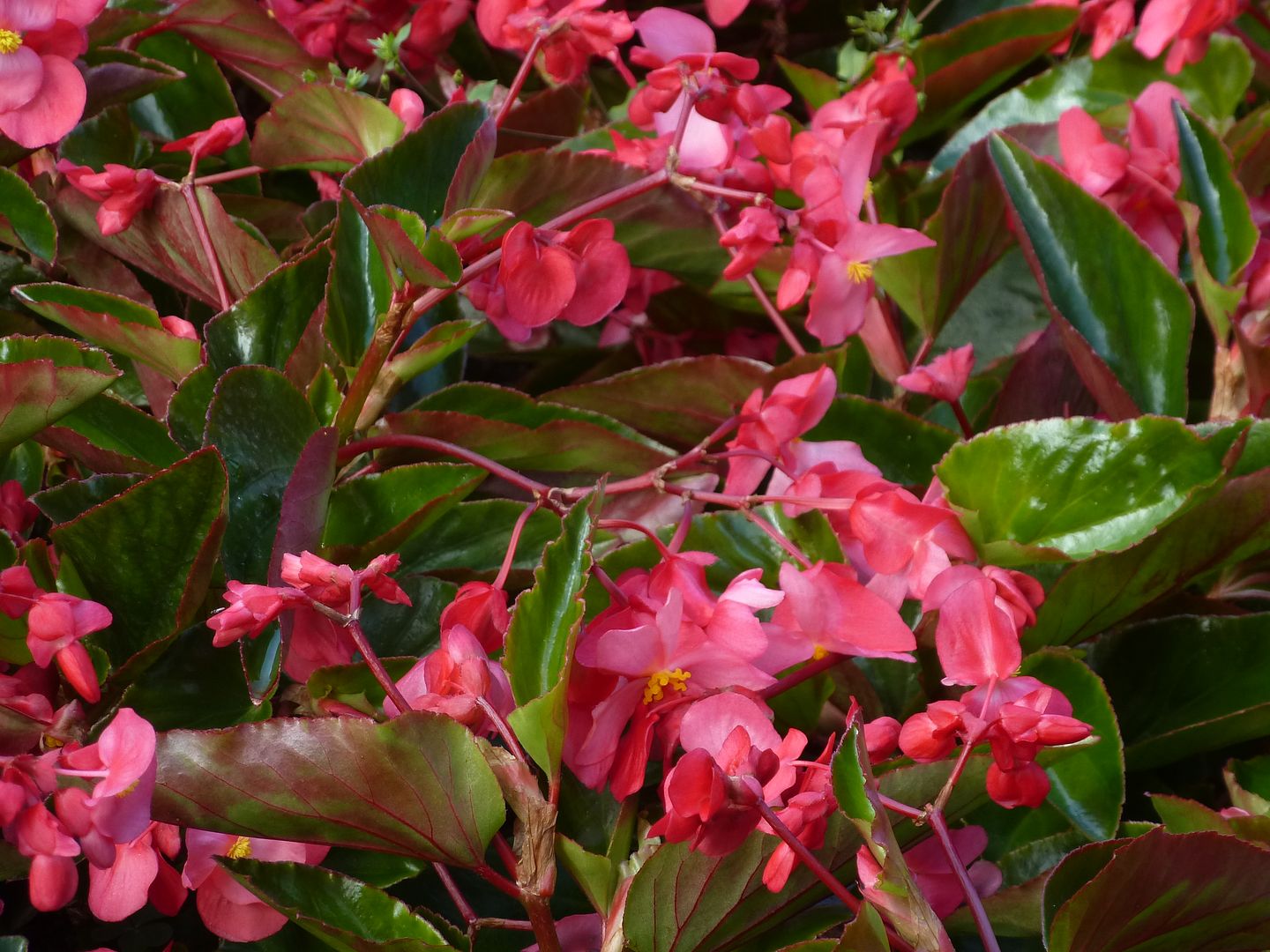
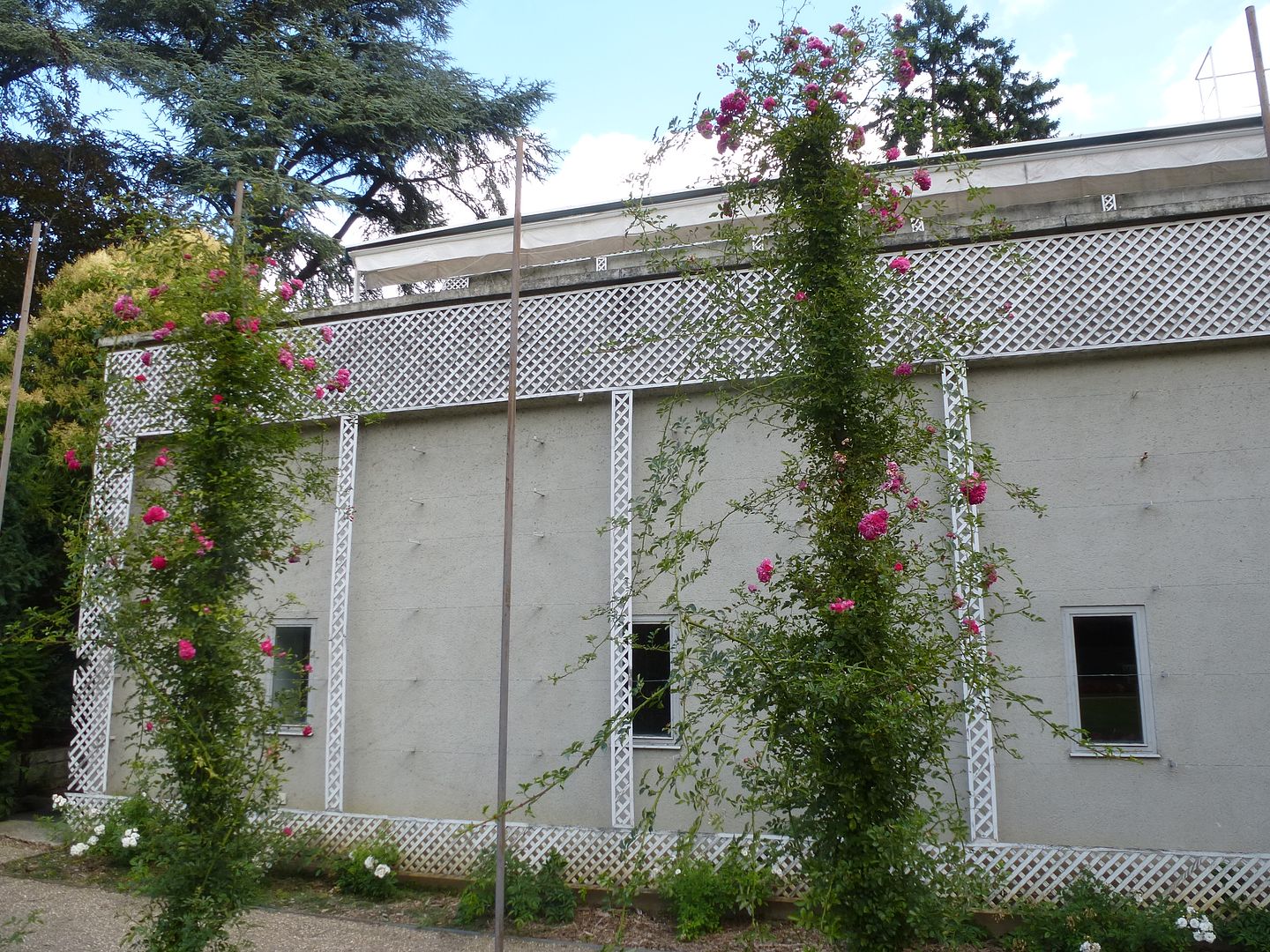
I agree that formal French gardens can be boring except as a space filler on the way to somewhere else.

Ornamental orchards are a bit disturbing.
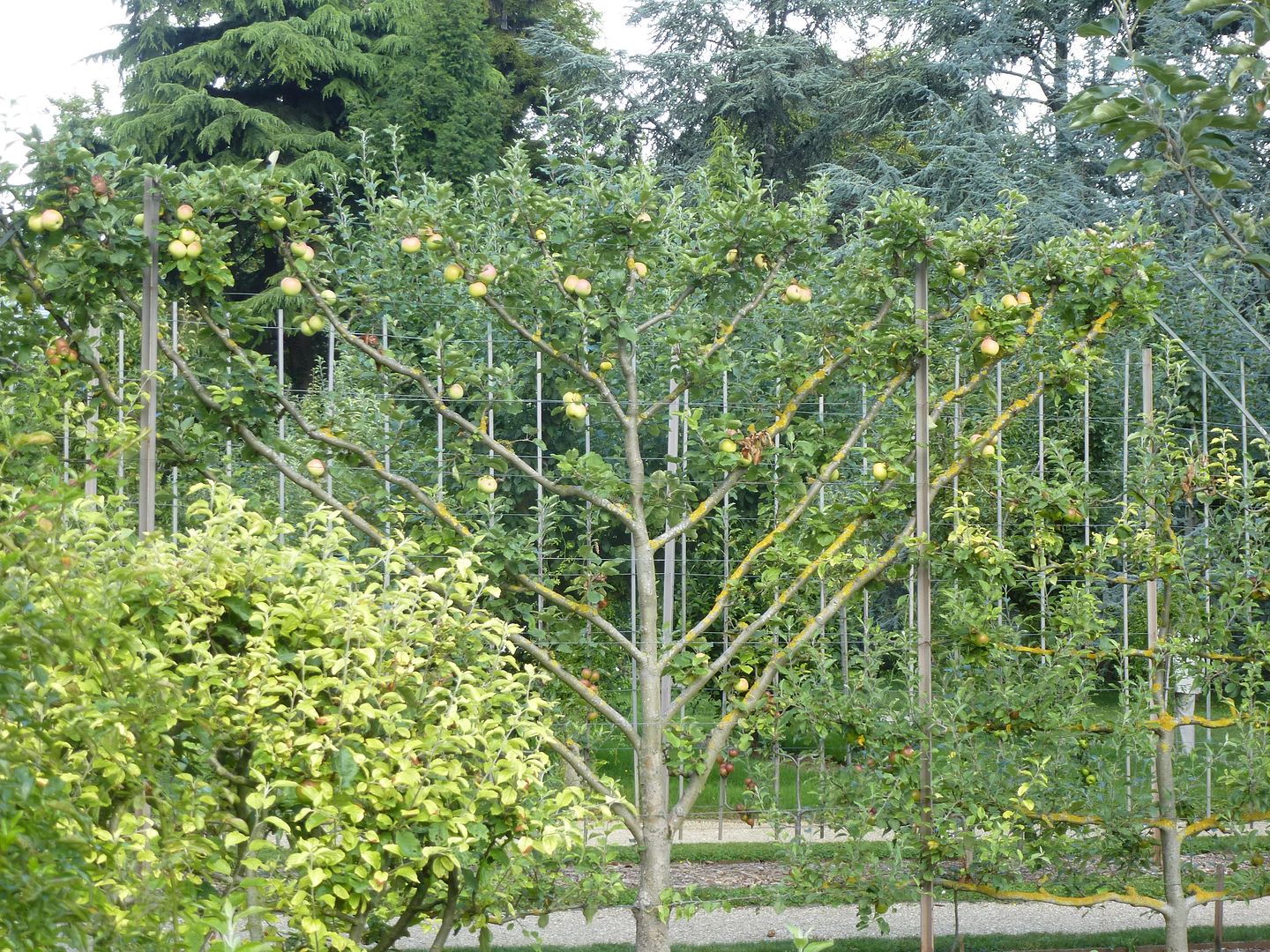

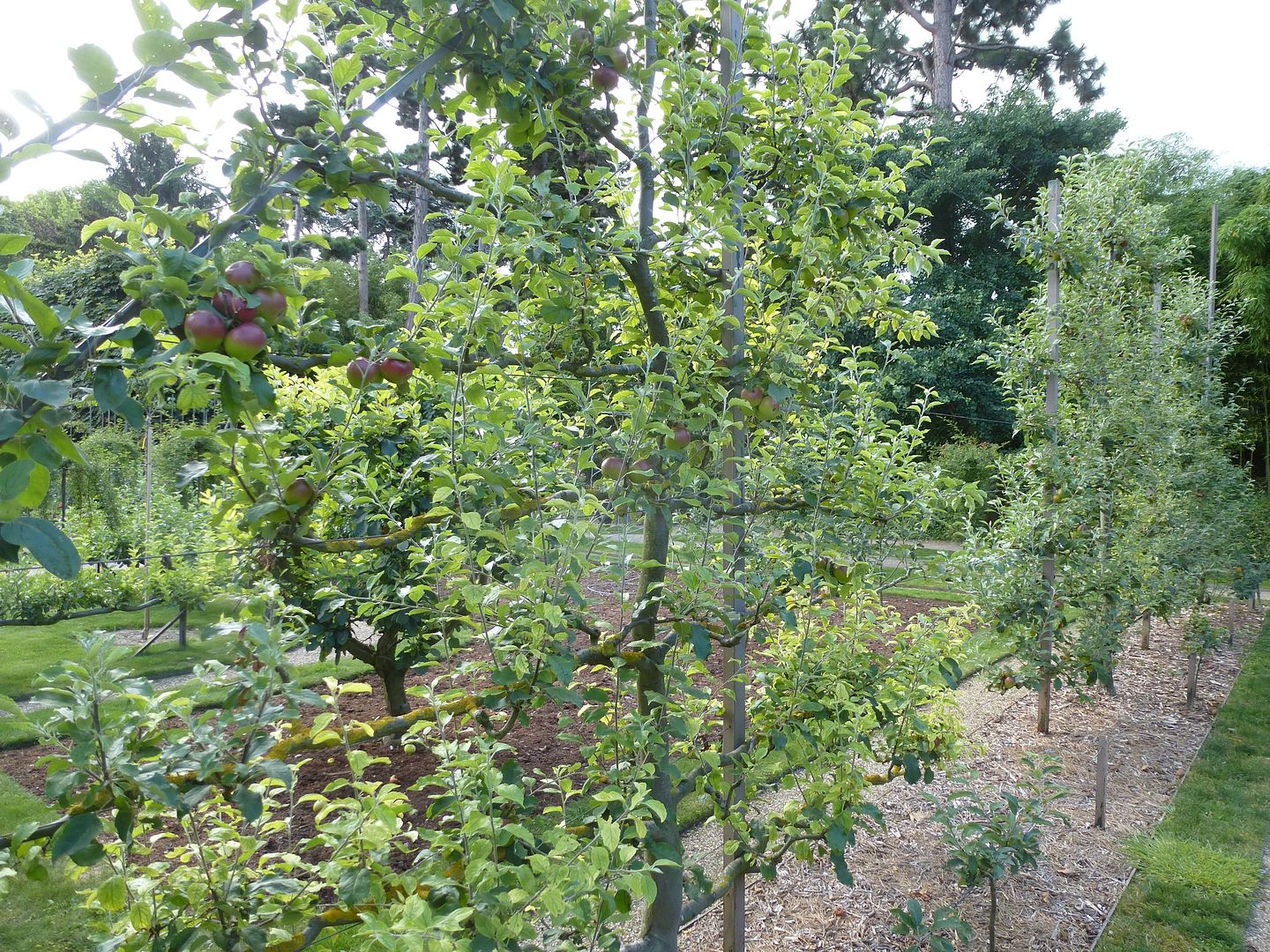
This little thing must be exhausted trying to produce all that fruit.









A path led me back to the formal French garden, so I decided that it was time to look at it.









I agree that formal French gardens can be boring except as a space filler on the way to somewhere else.

Ornamental orchards are a bit disturbing.



This little thing must be exhausted trying to produce all that fruit.

There will always be a few roses blooming until the frost hits, but June is the month for roses.
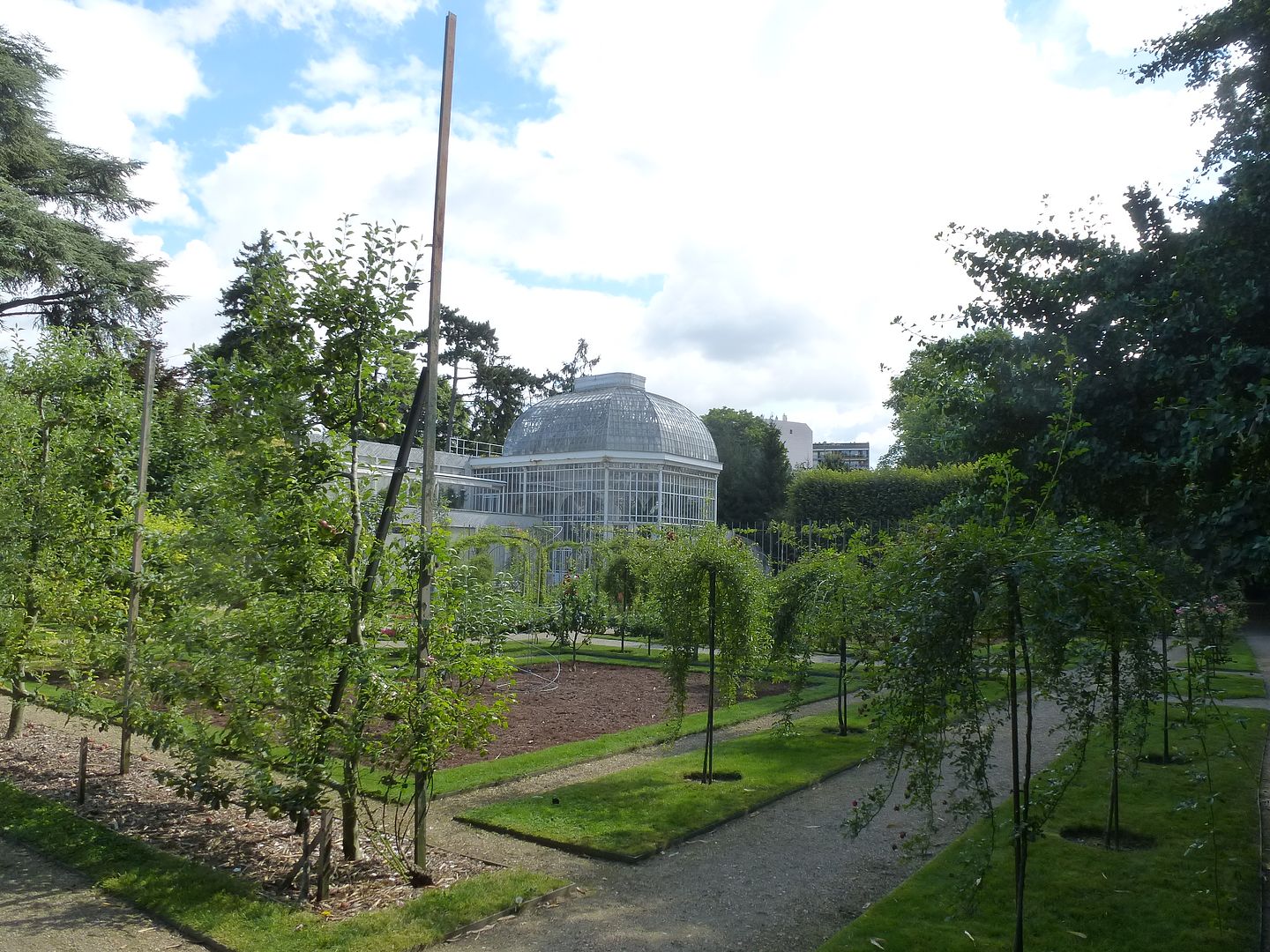
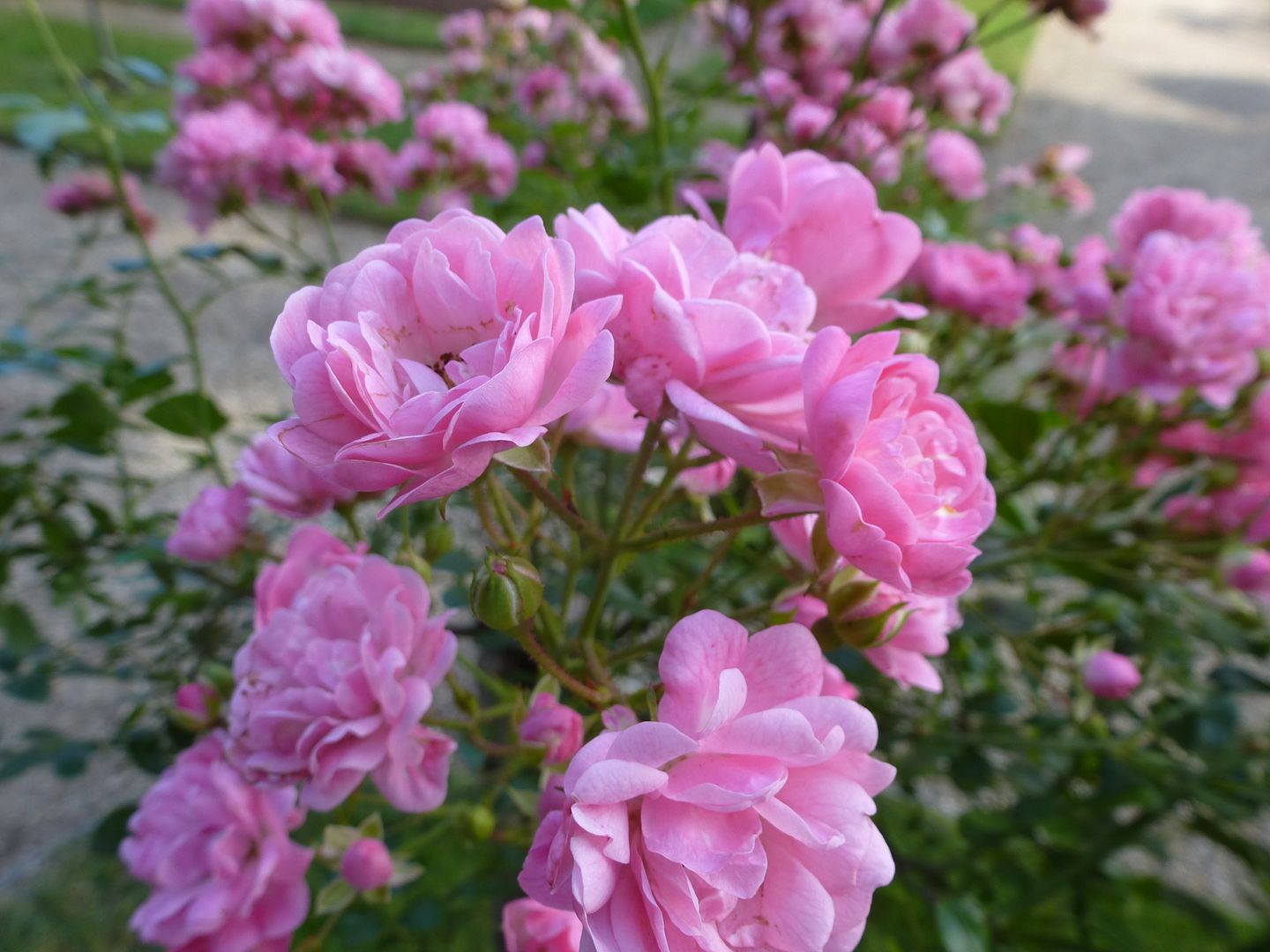
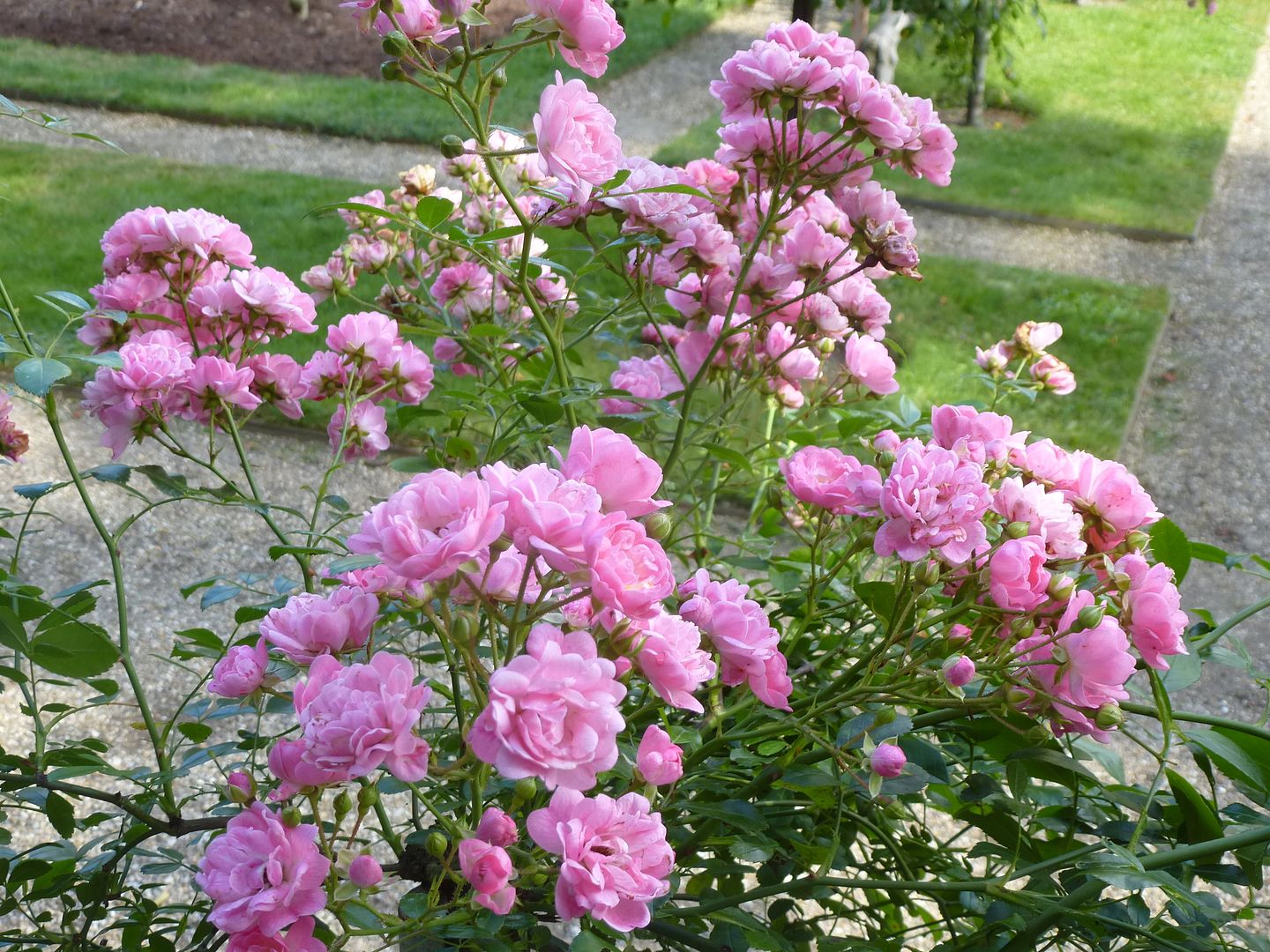
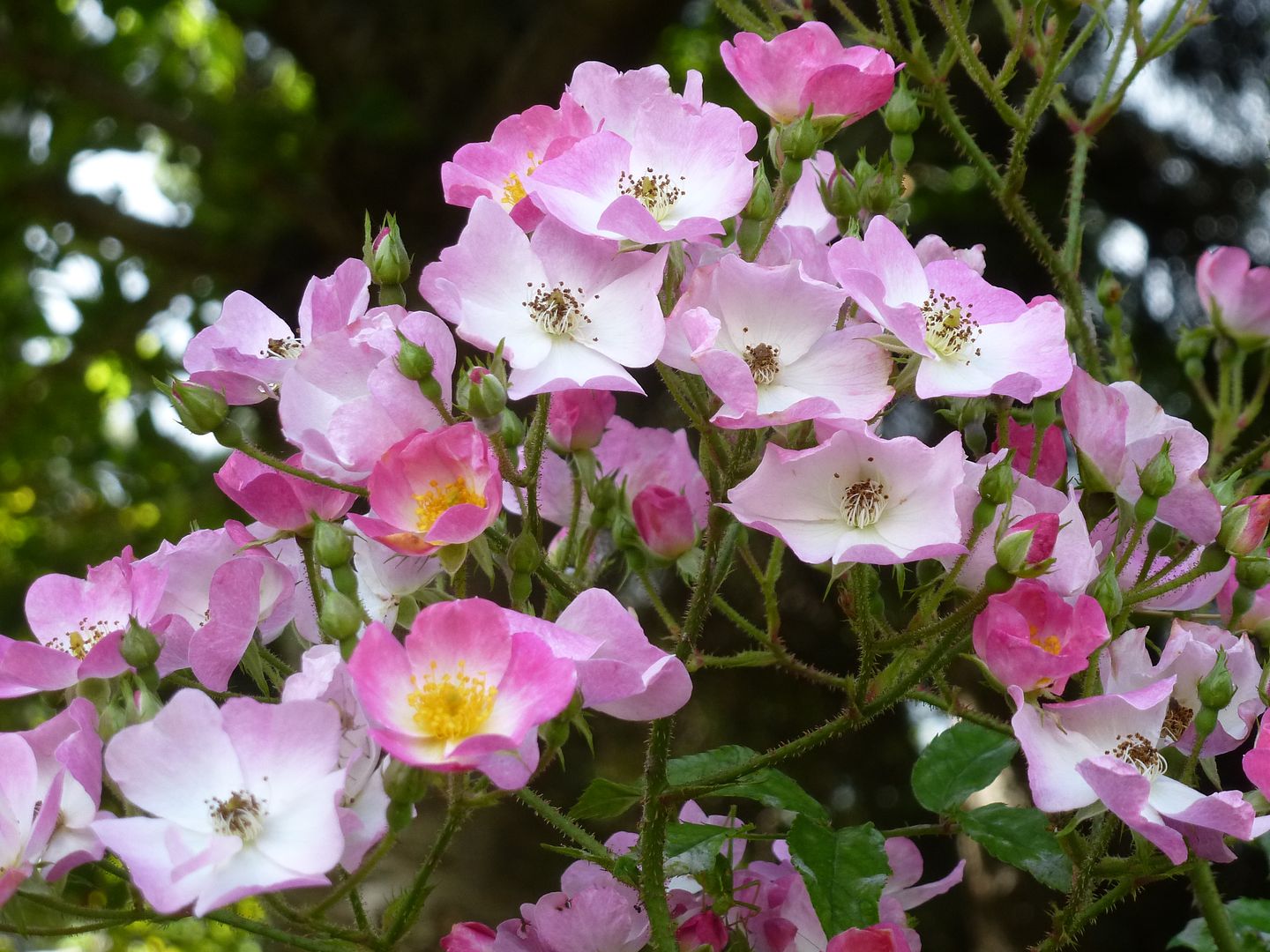

Considering the age factor of a lot of visitors, I'm sure the various seats get a lot of use.
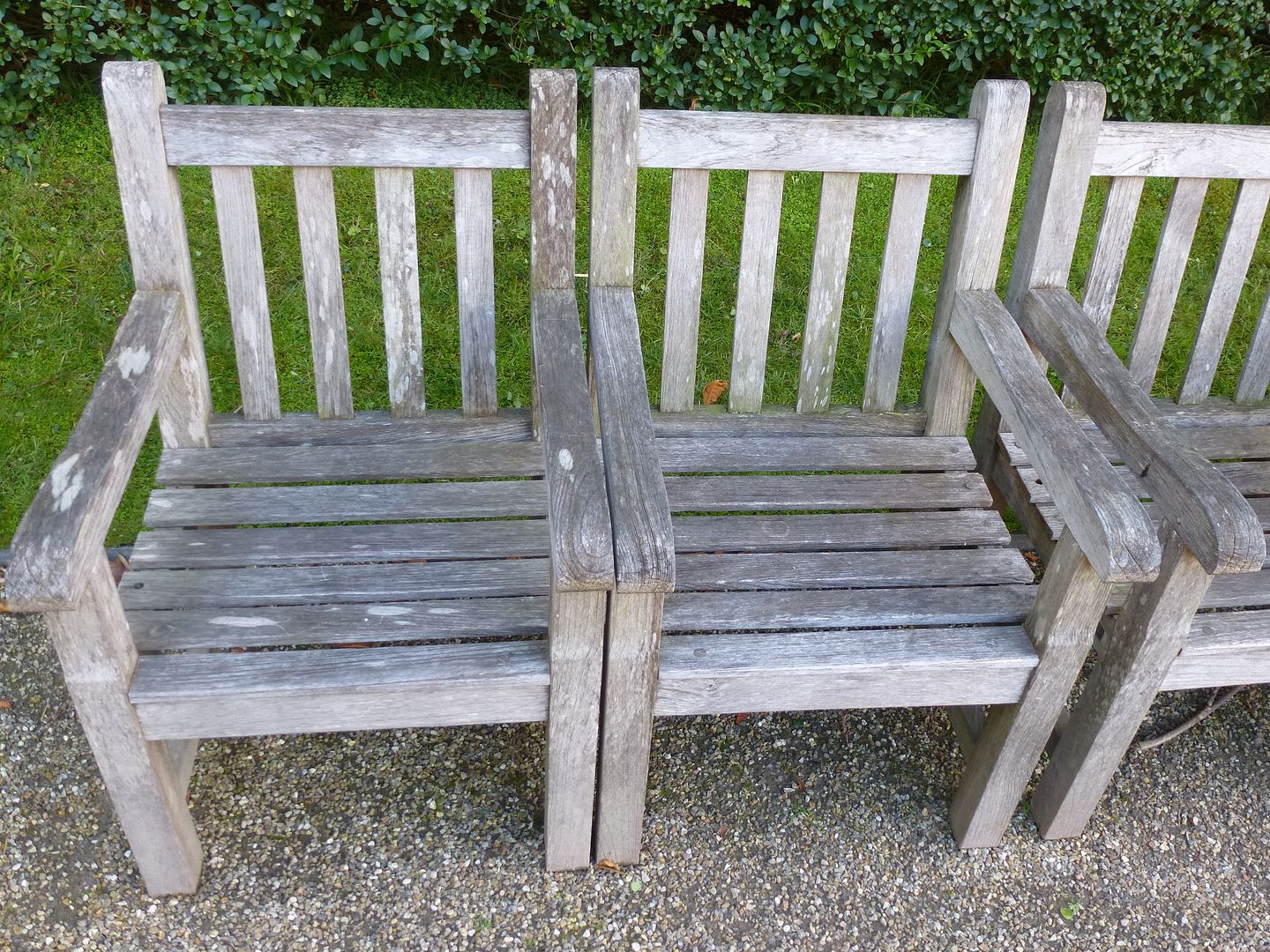
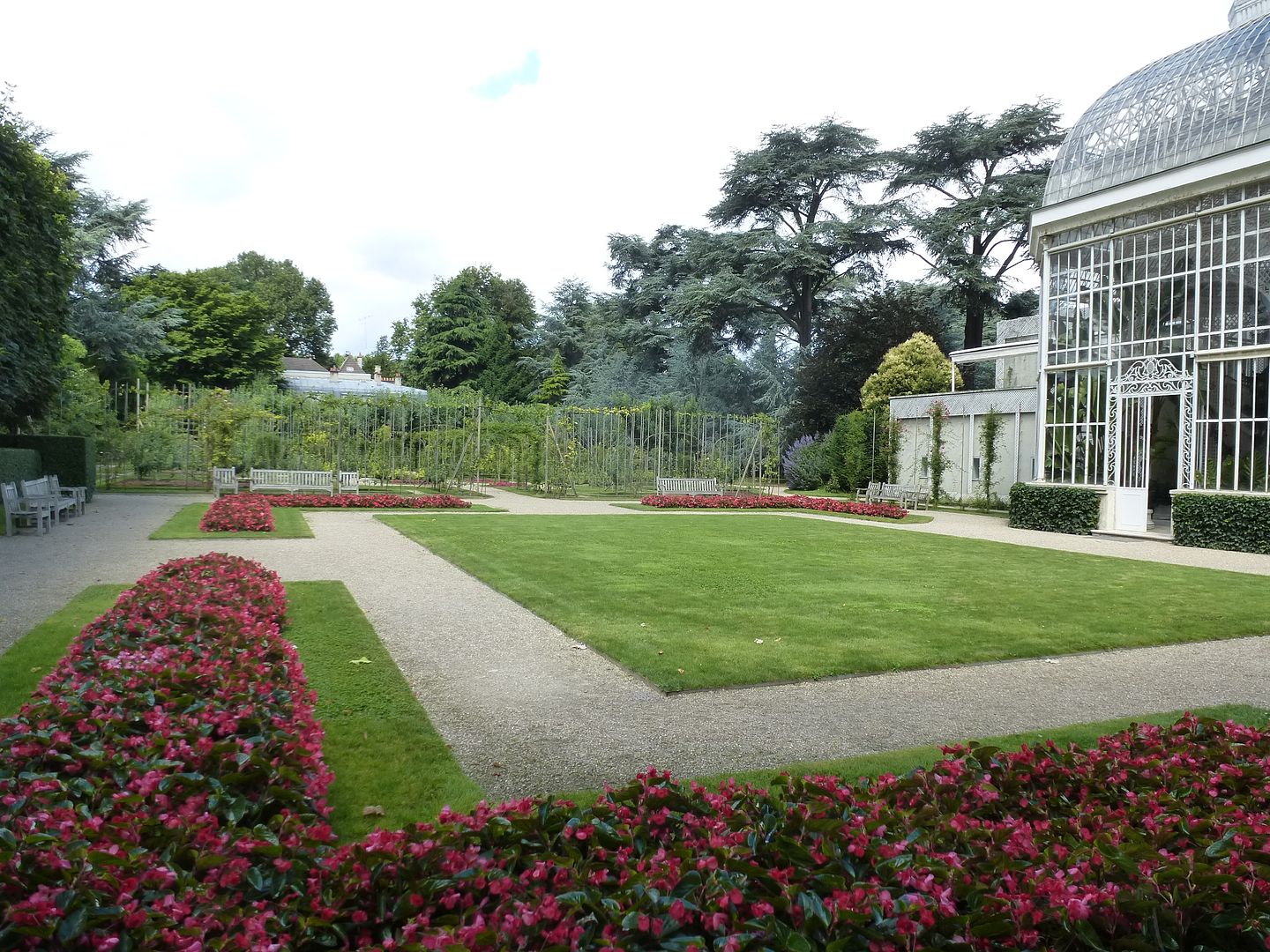
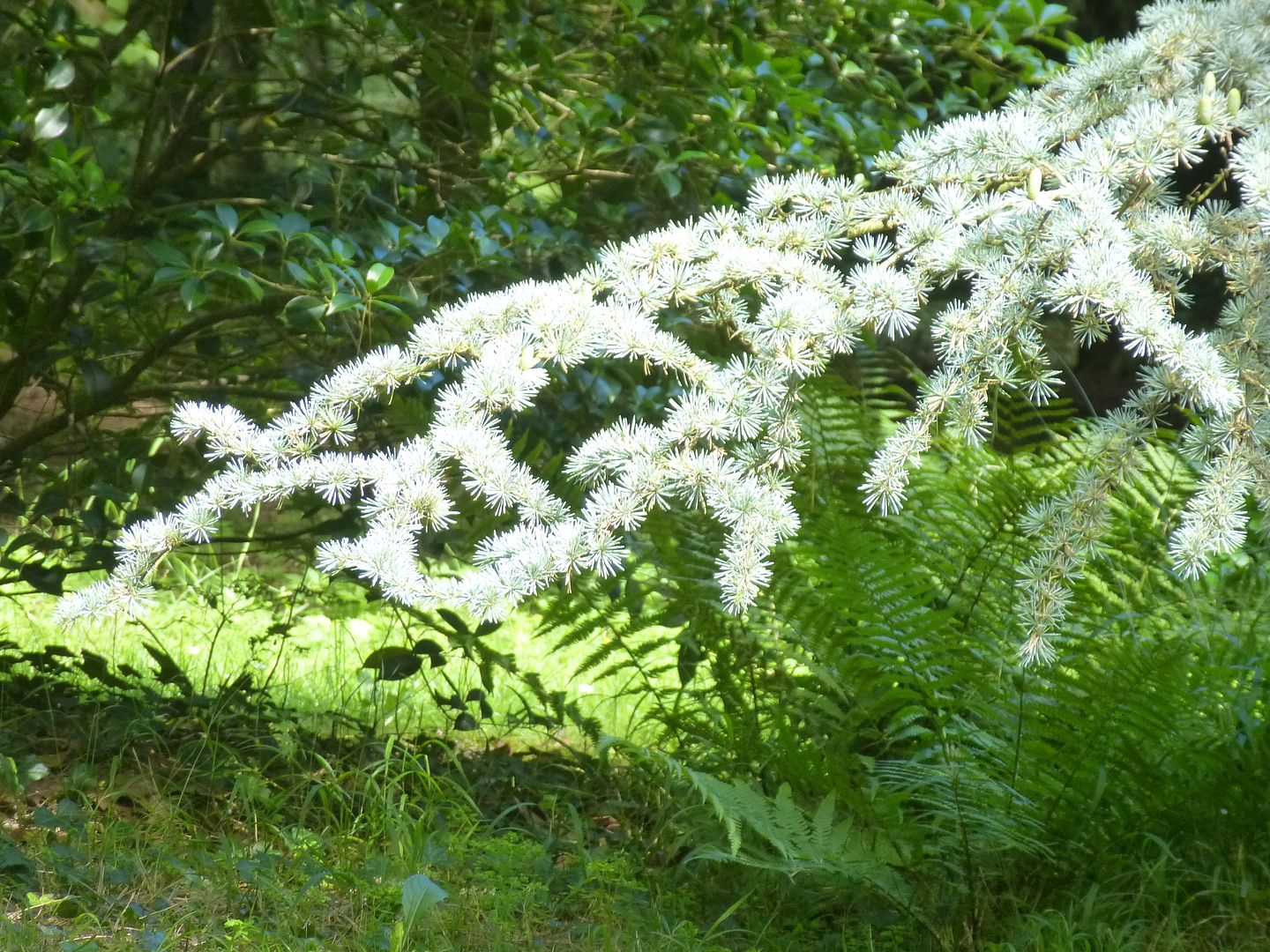
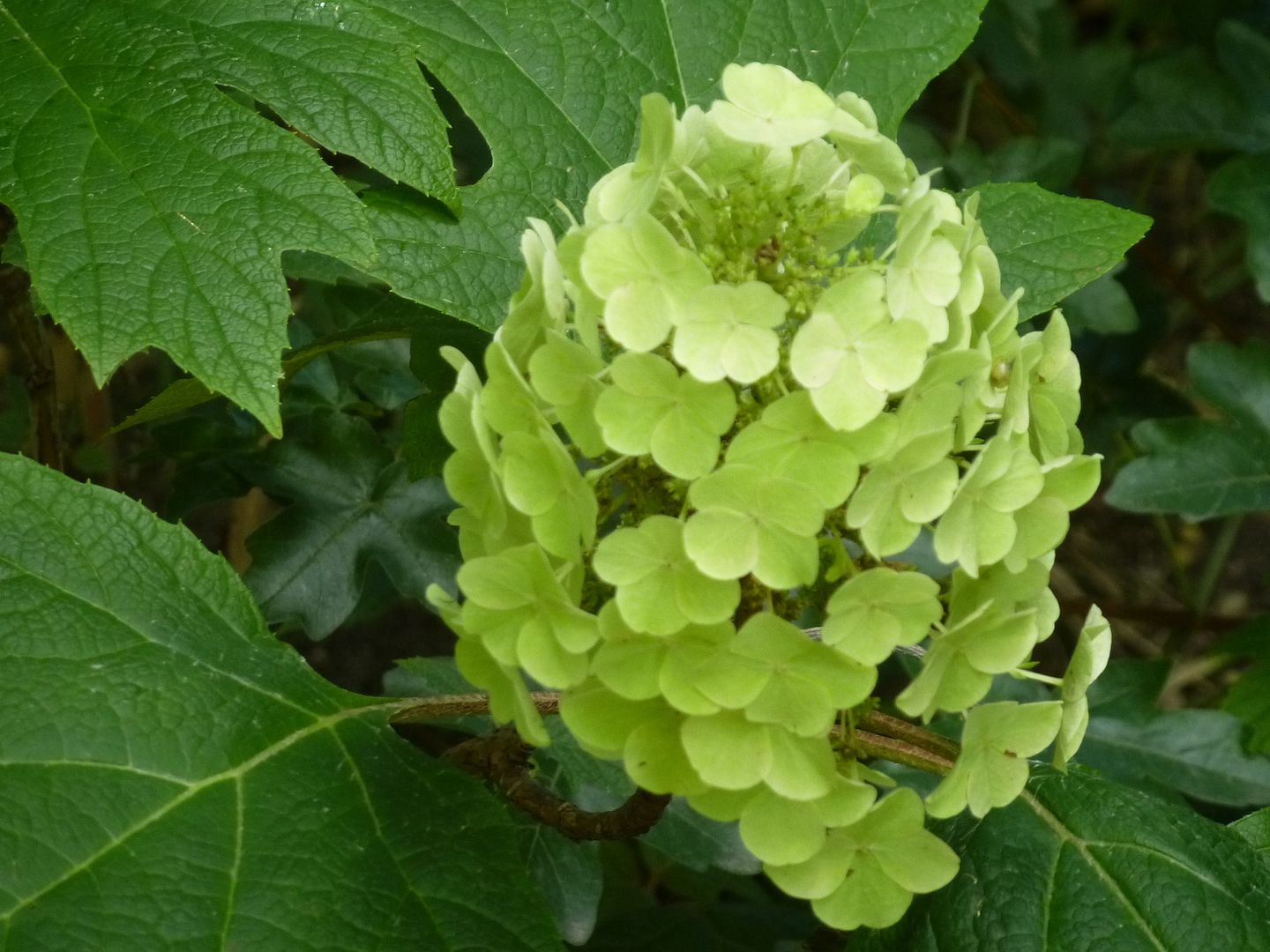
Don't you just love looking overhead in a garden like this?
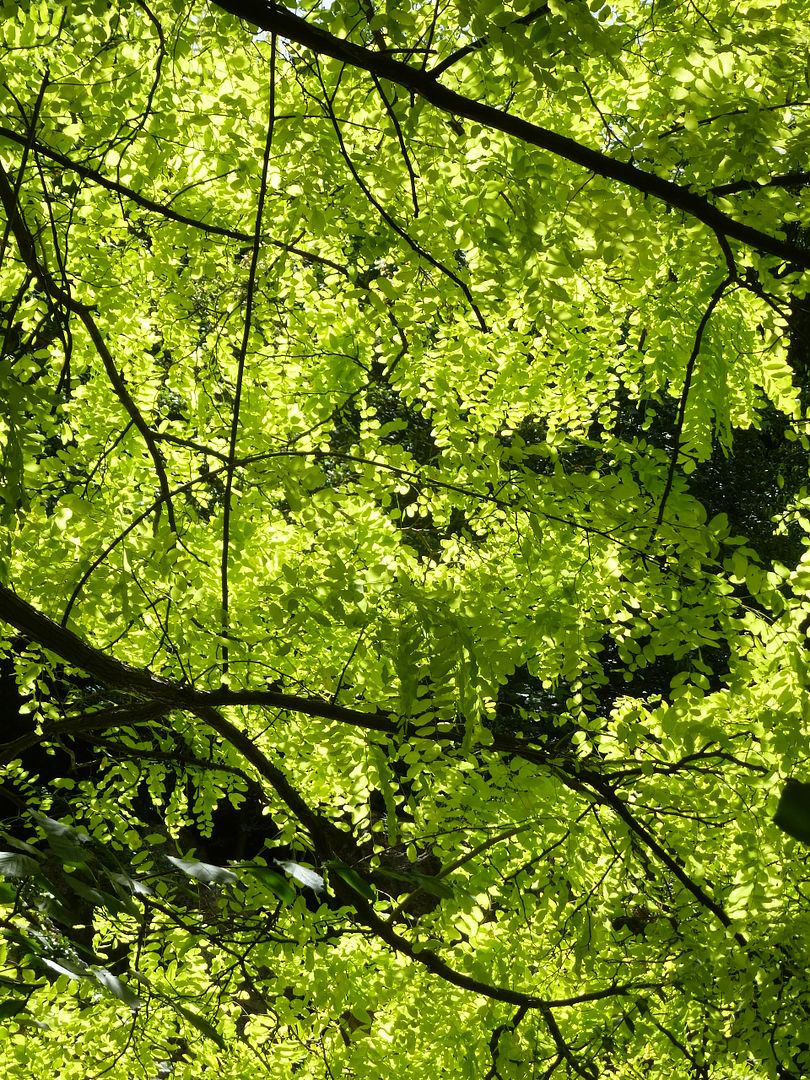
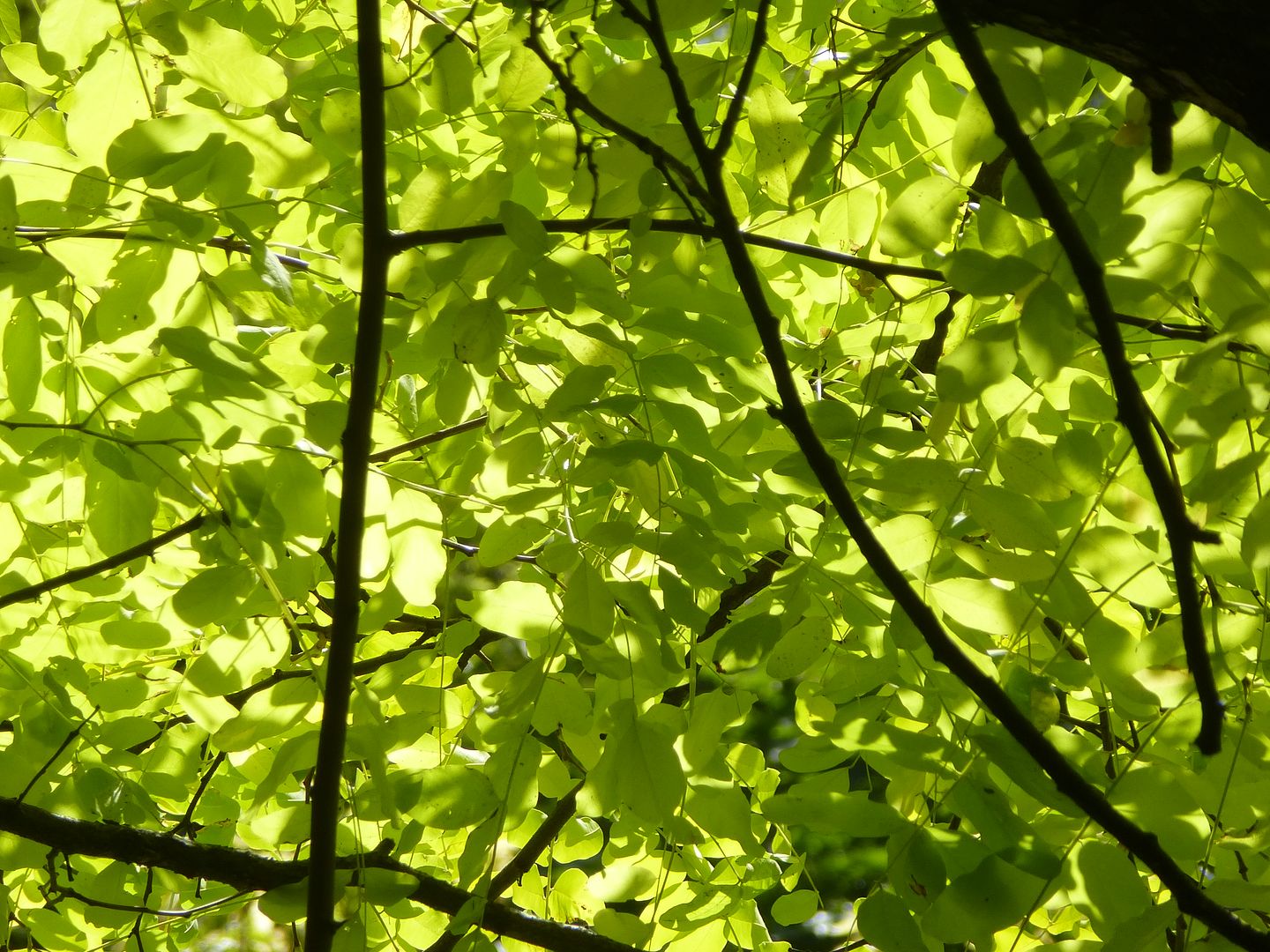
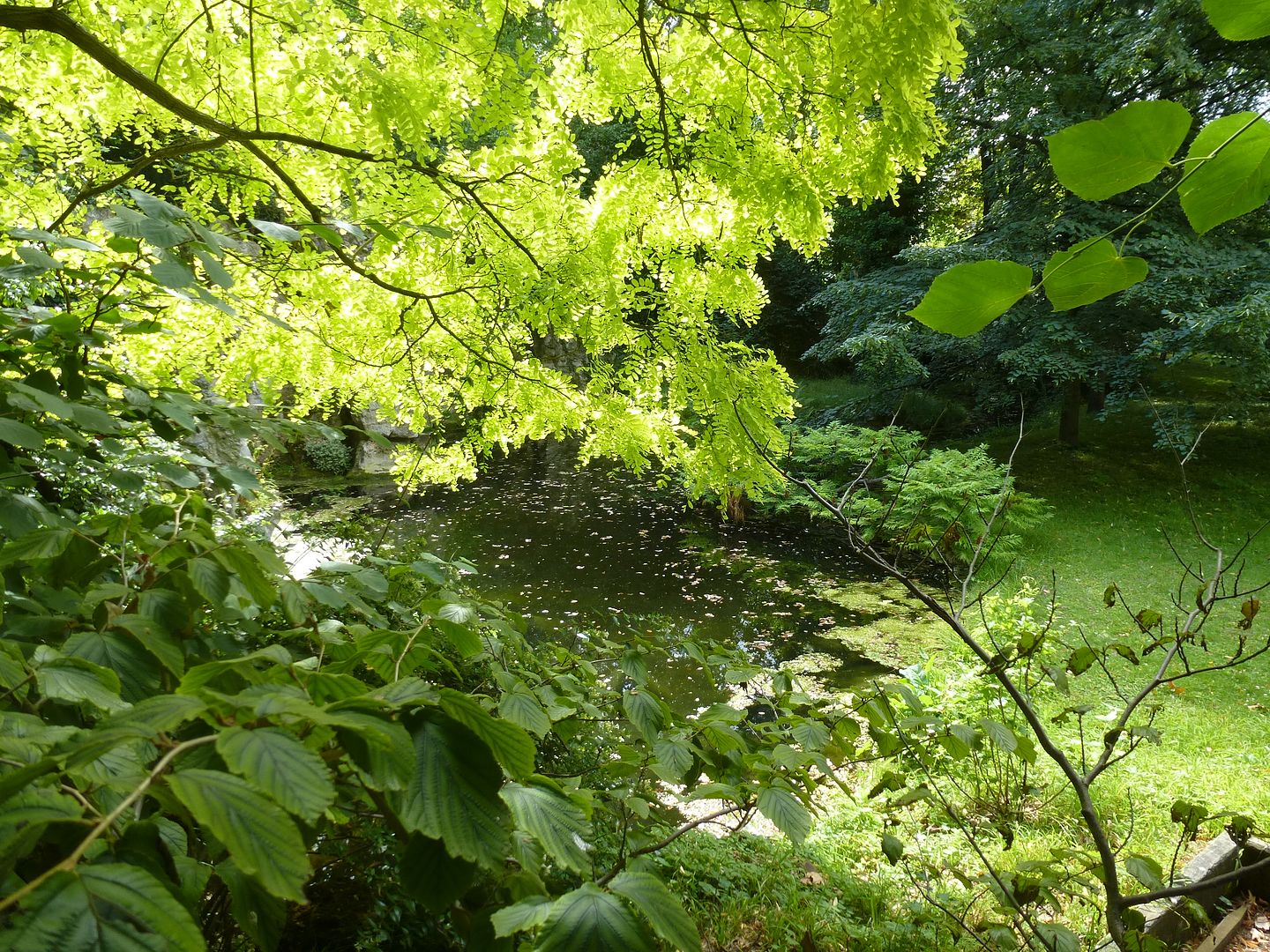
This way to the English garden.
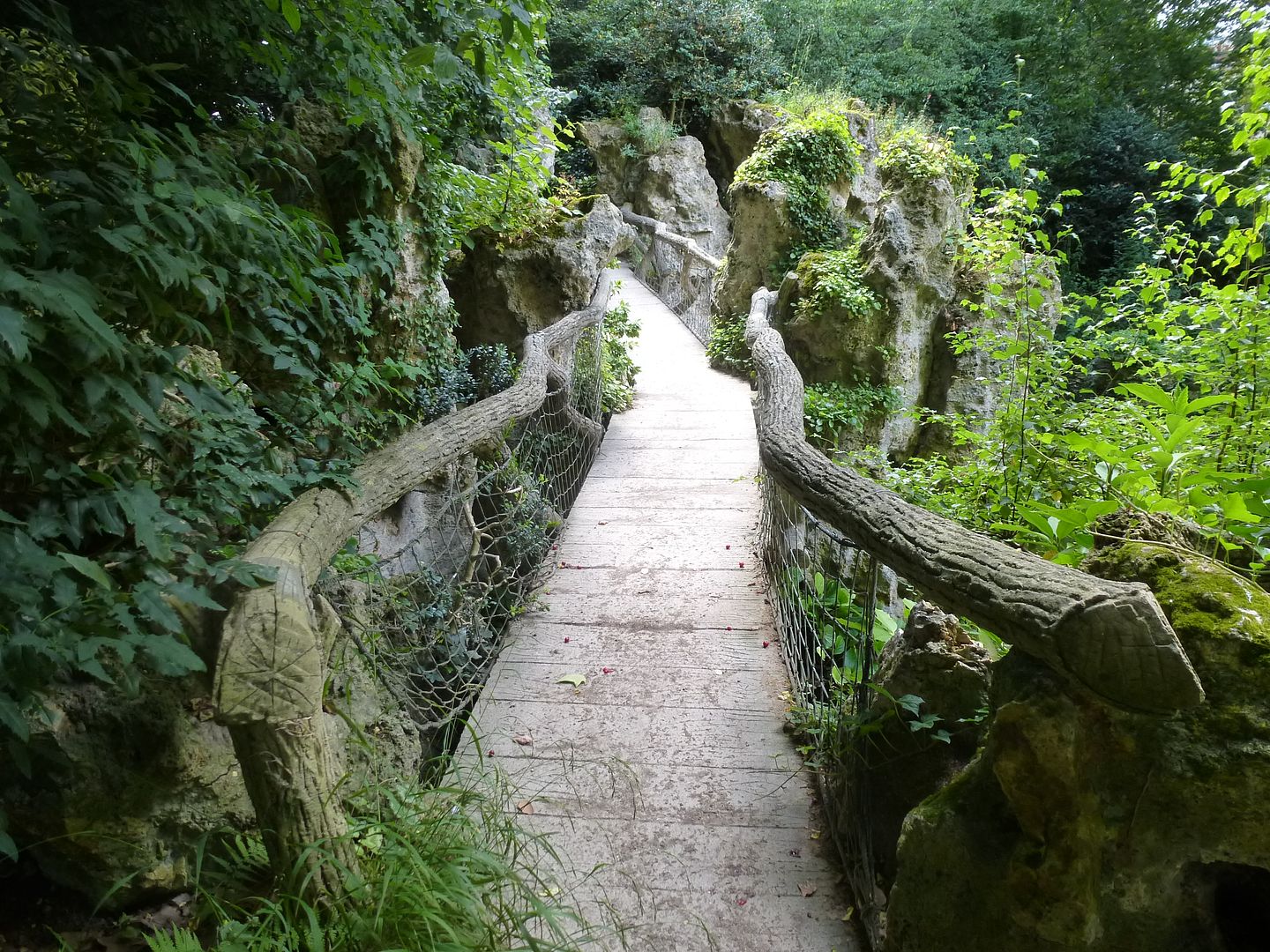





Considering the age factor of a lot of visitors, I'm sure the various seats get a lot of use.




Don't you just love looking overhead in a garden like this?



This way to the English garden.

"English garden" just means meadows and bushes to the French.
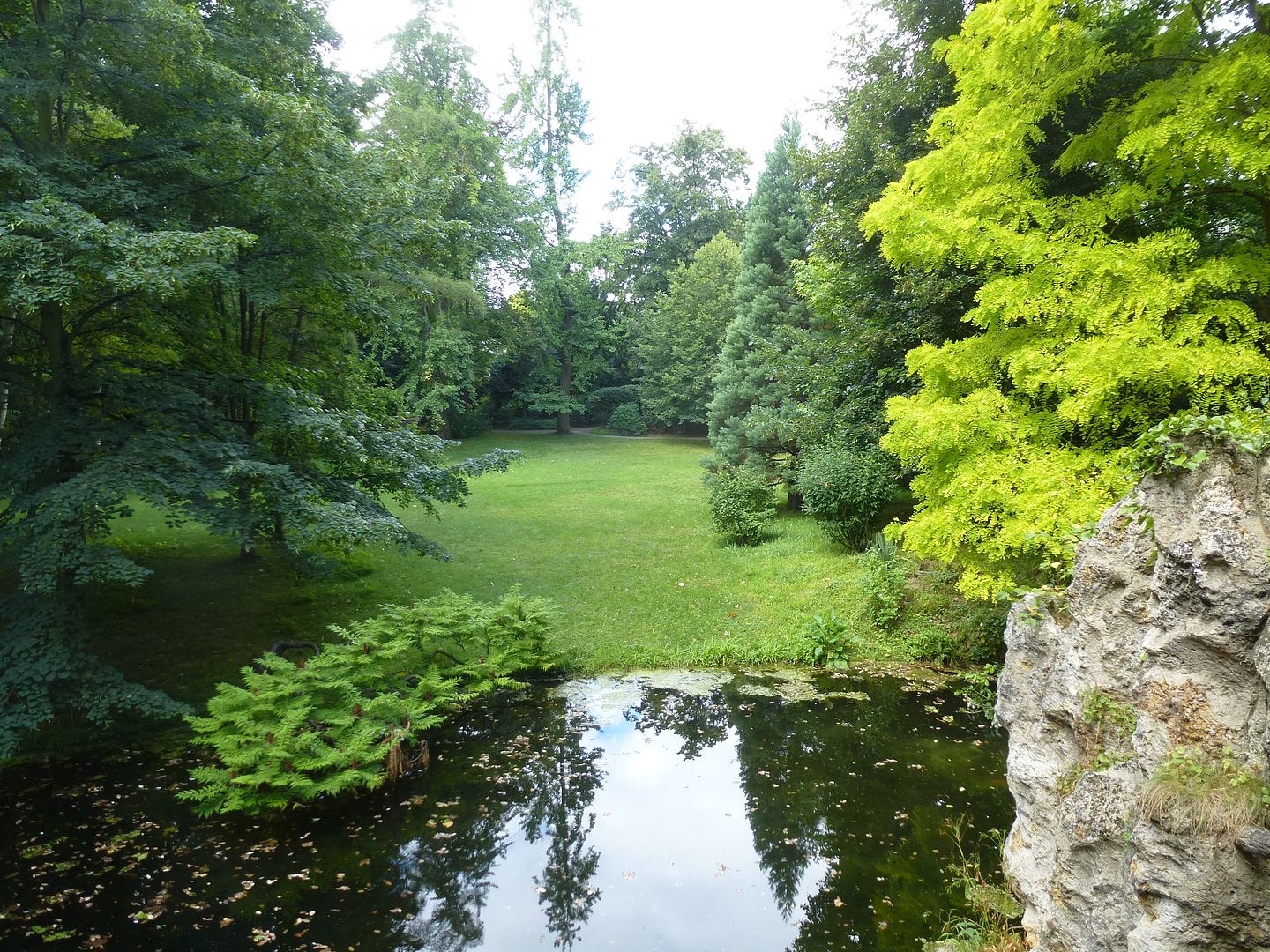
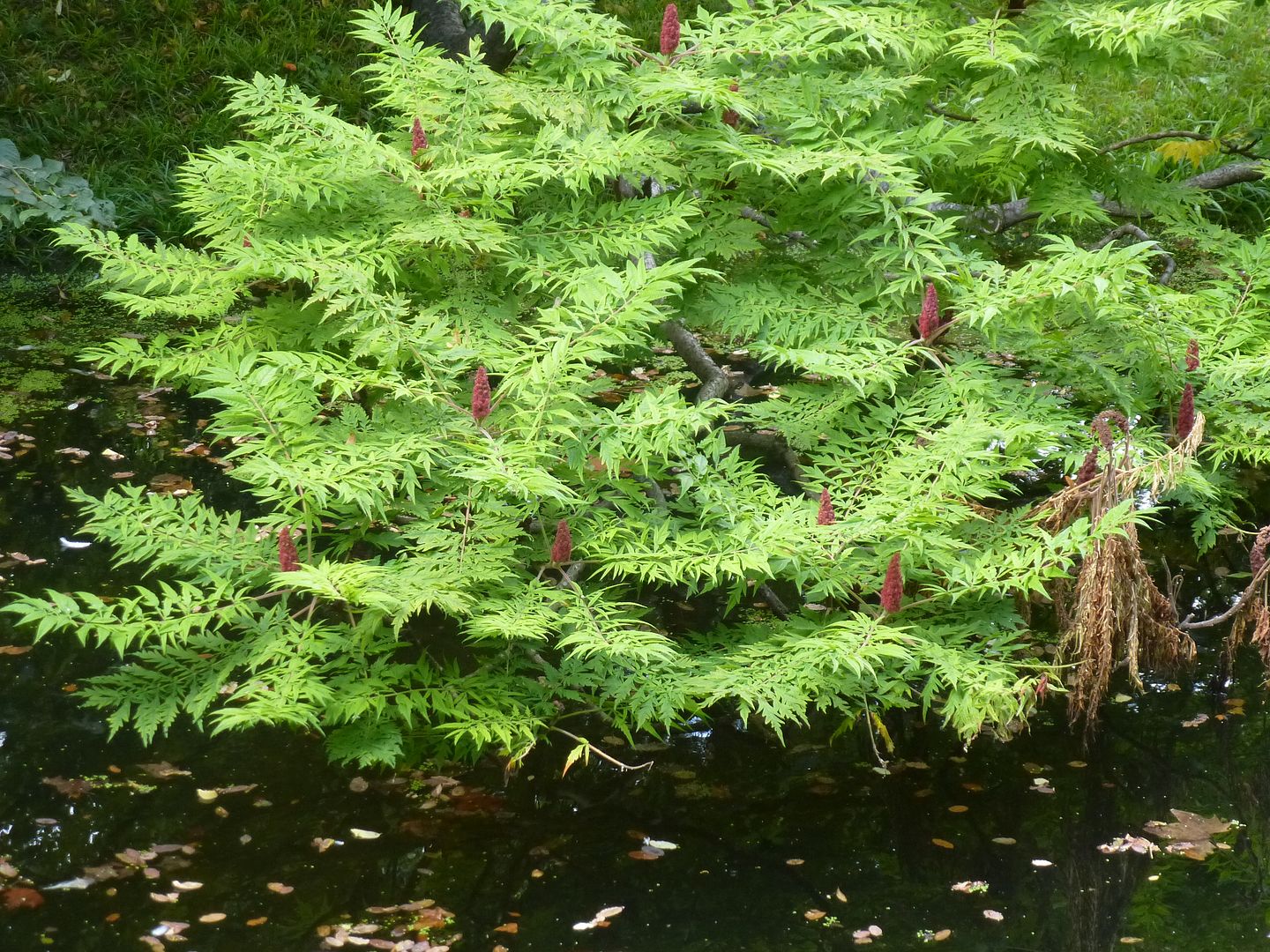

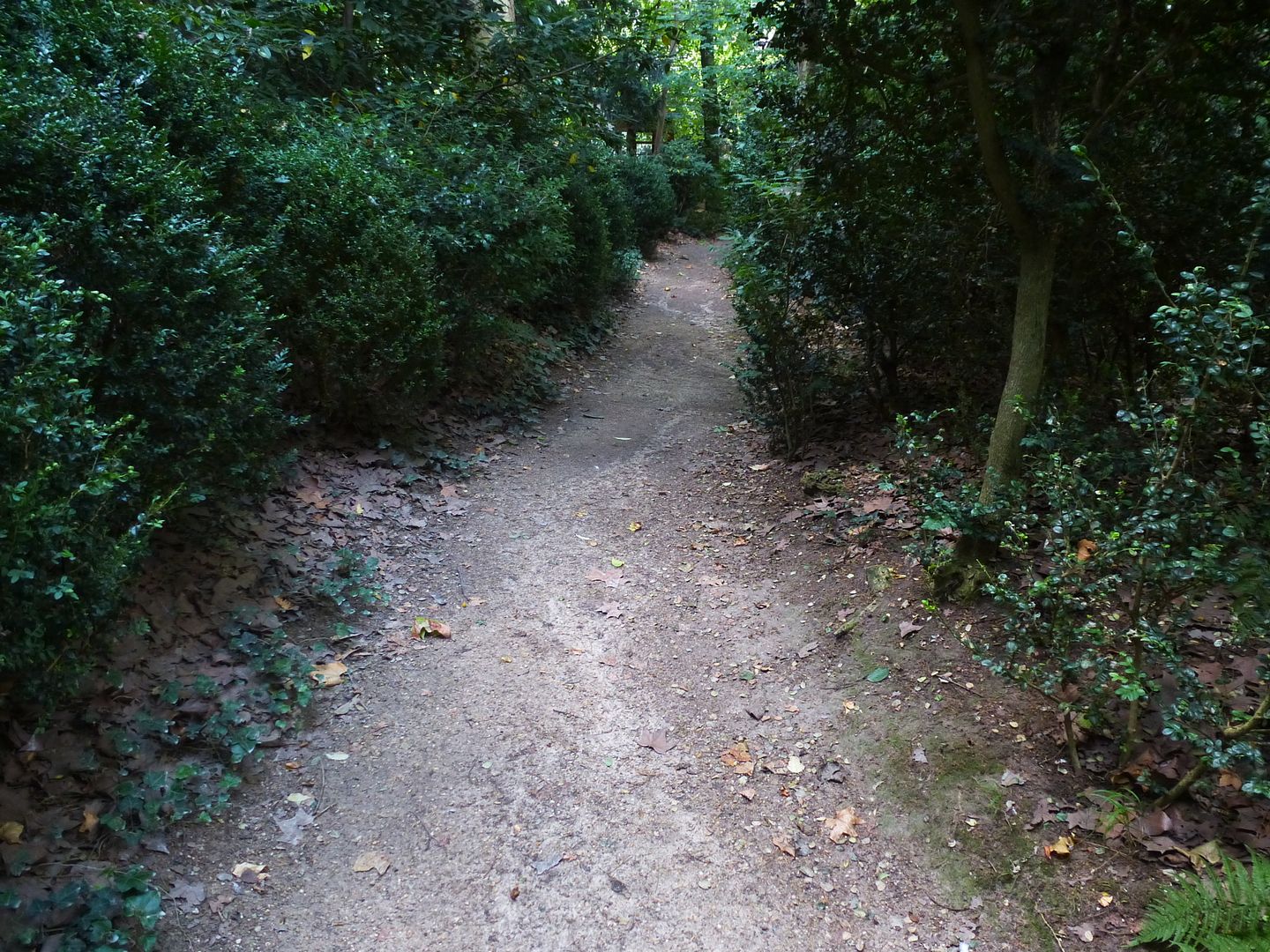
I suddenly heard annoying street noise in this oasis of tranquility, over there somewhere.
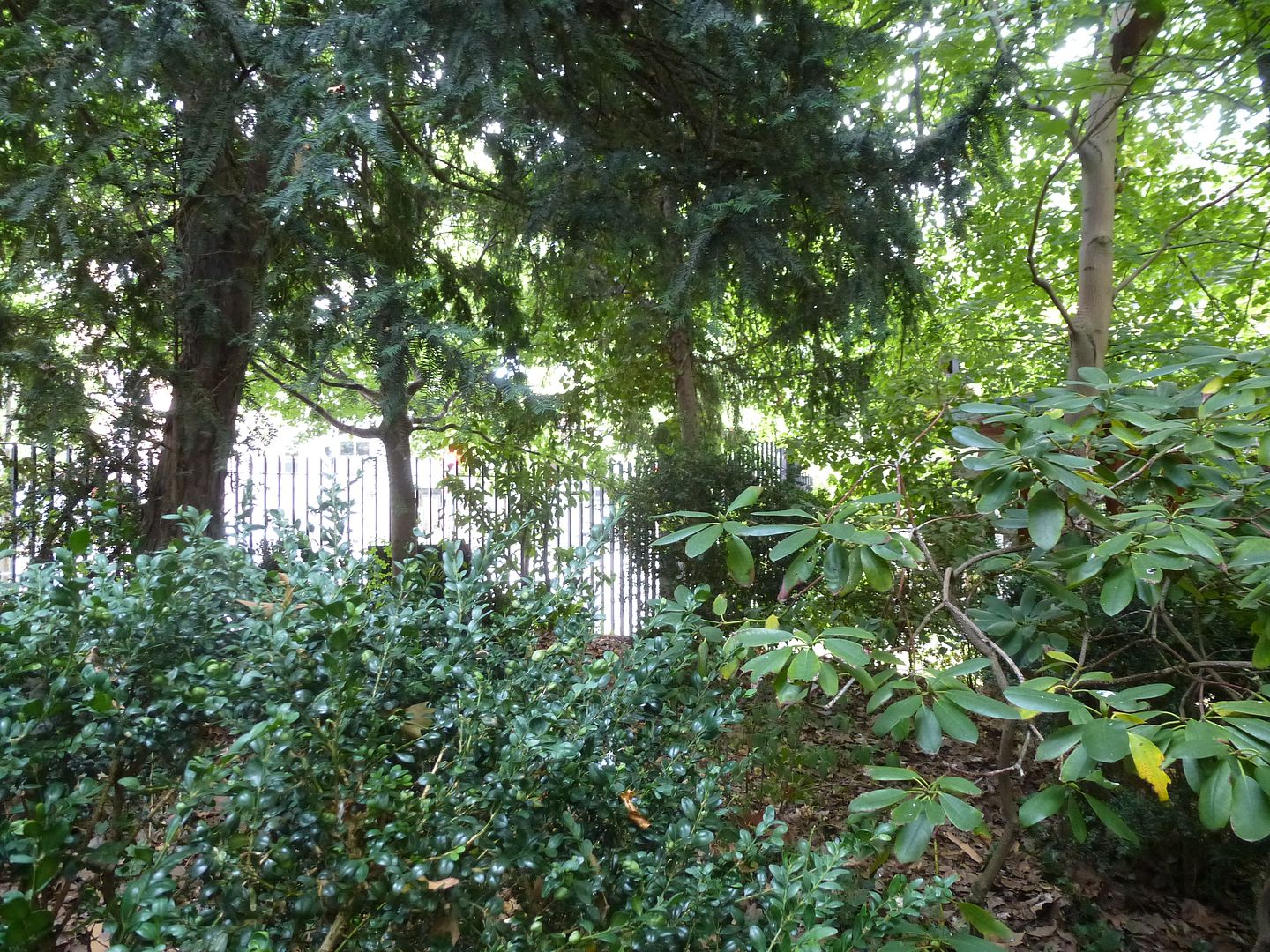
A few steps later, I saw that there was a secondary entrance to the gardens which is probably open on special days.
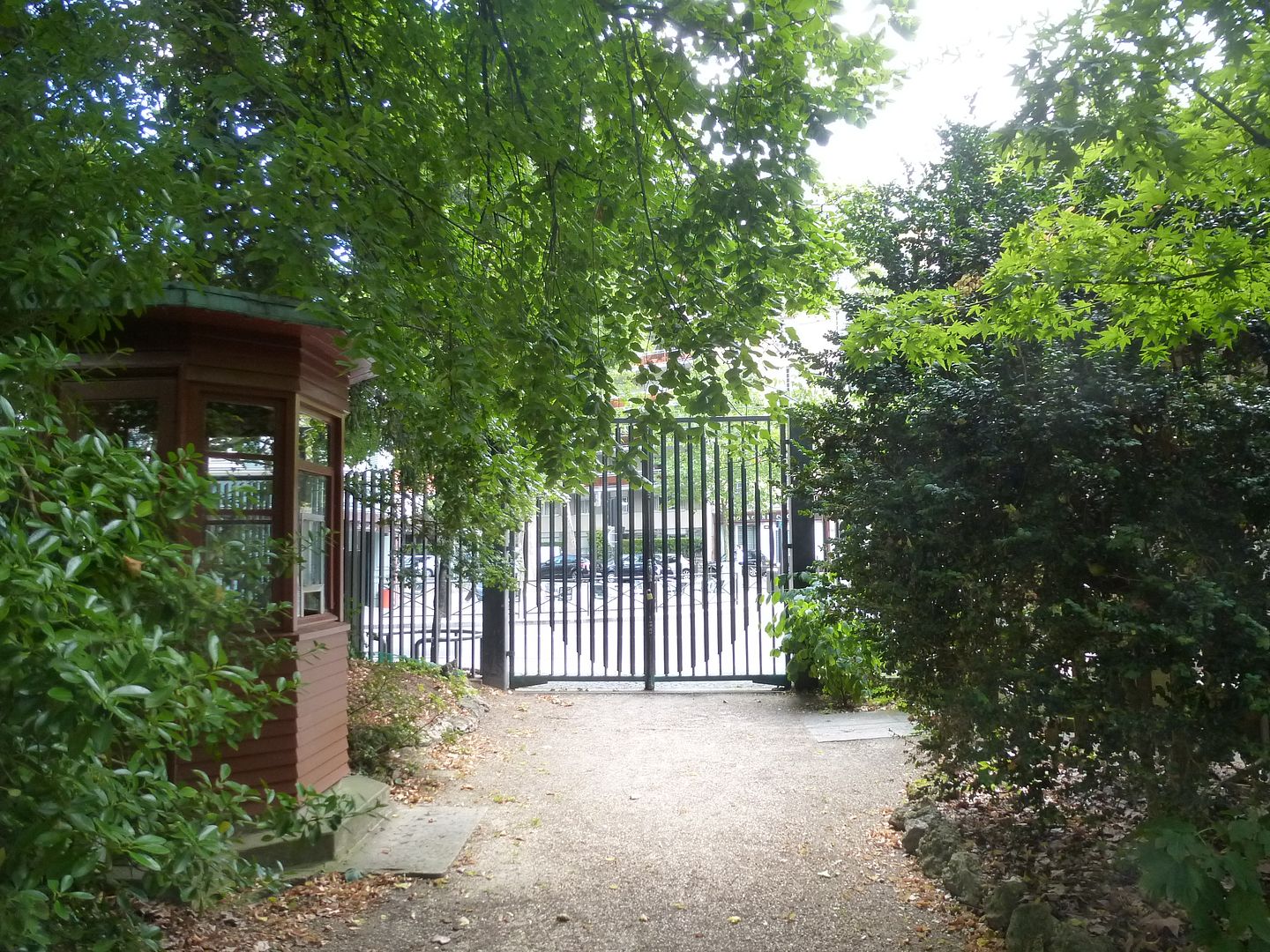
I don't think that dogs are allowed now, but they probably were in the past.
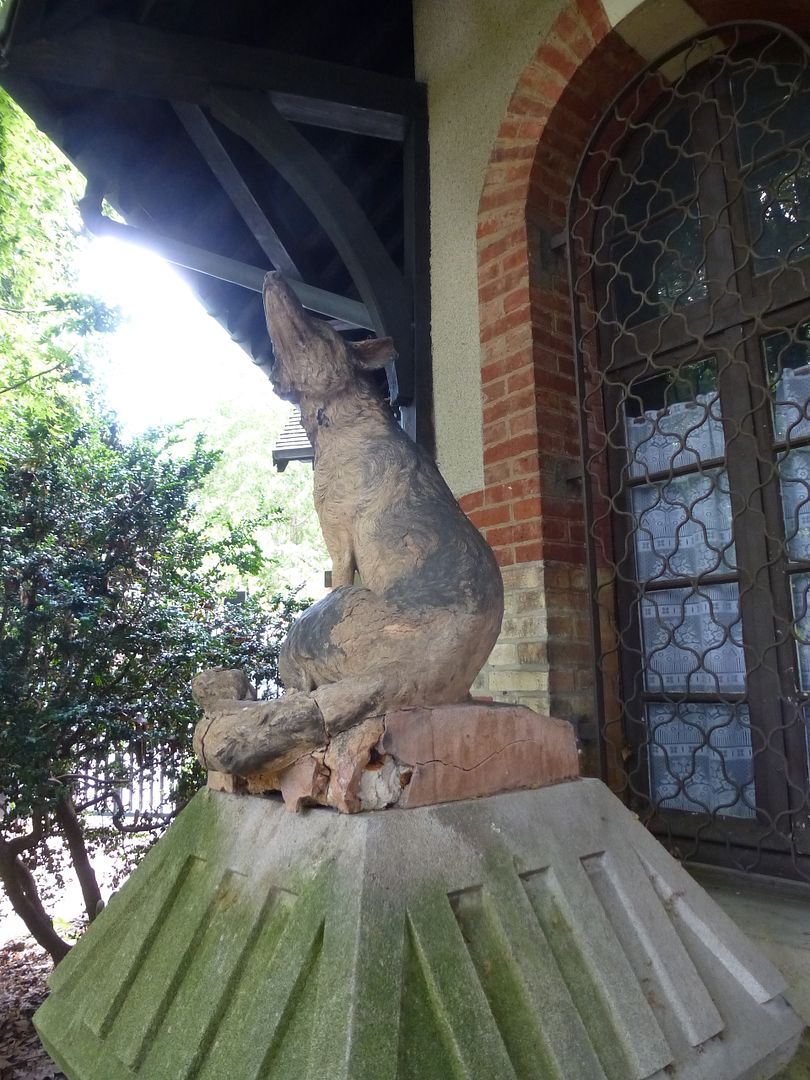
That would explain this lovely dog drinking fountain, now in disuse.
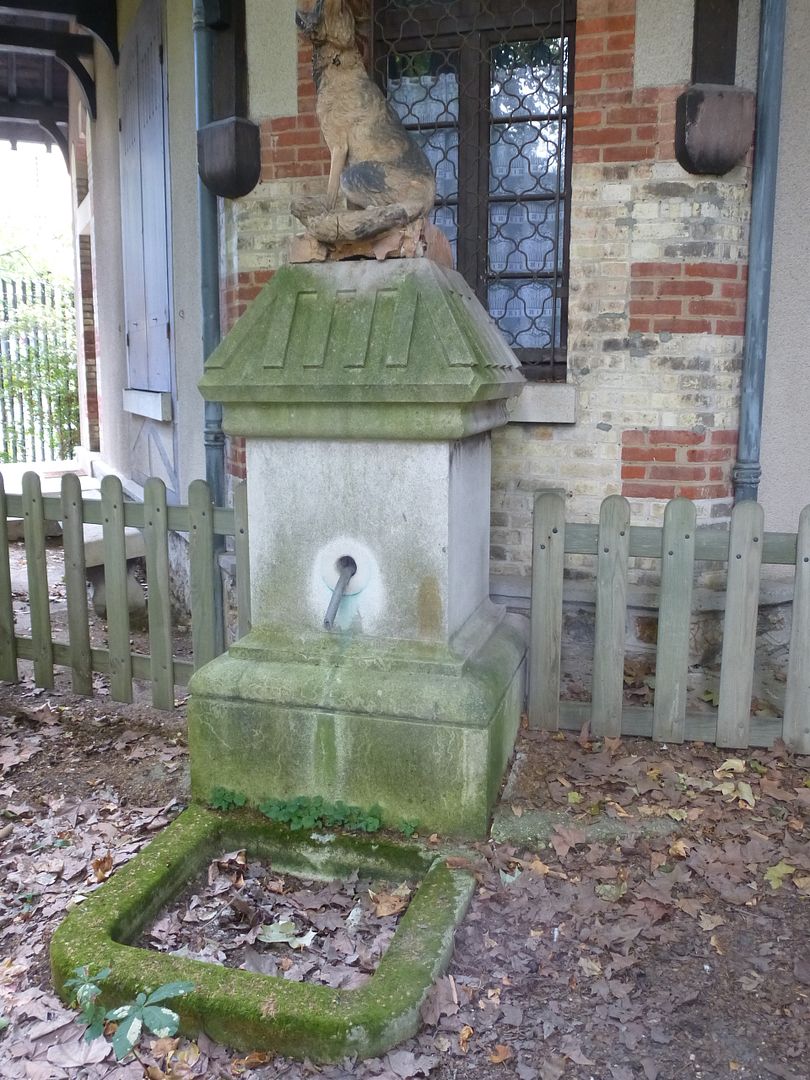
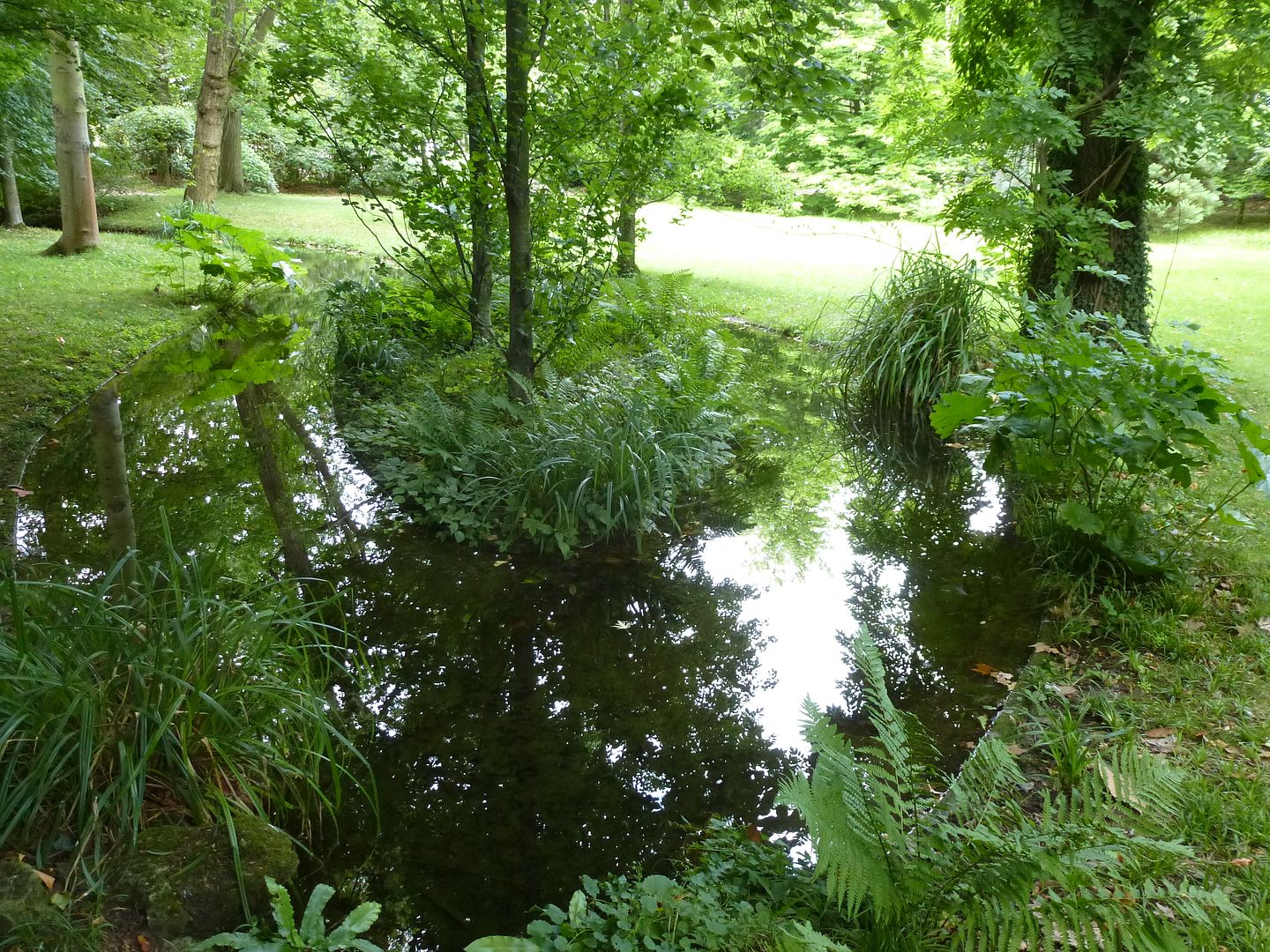
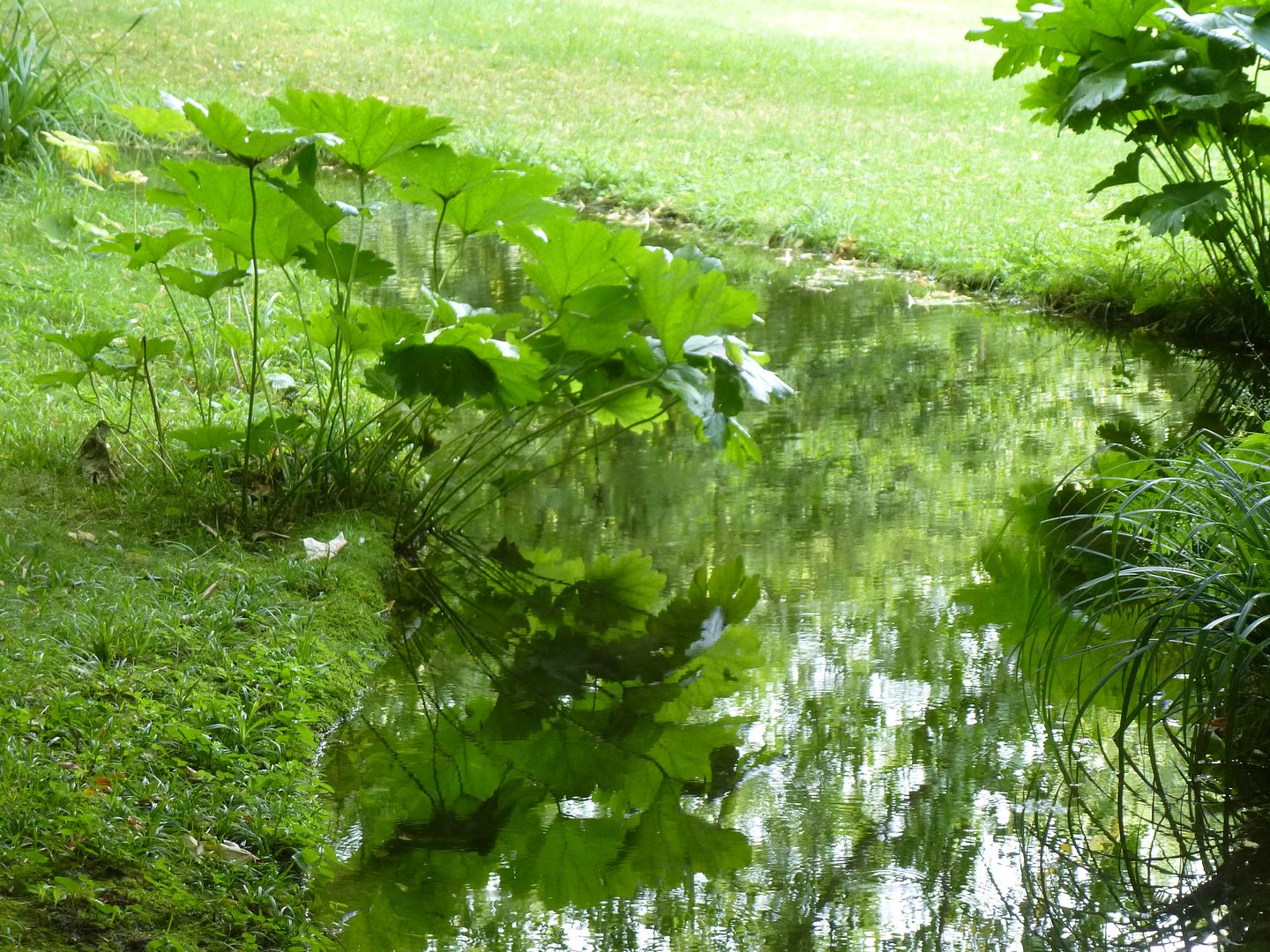
I think I see the entrance to the Japanese village in the distance.
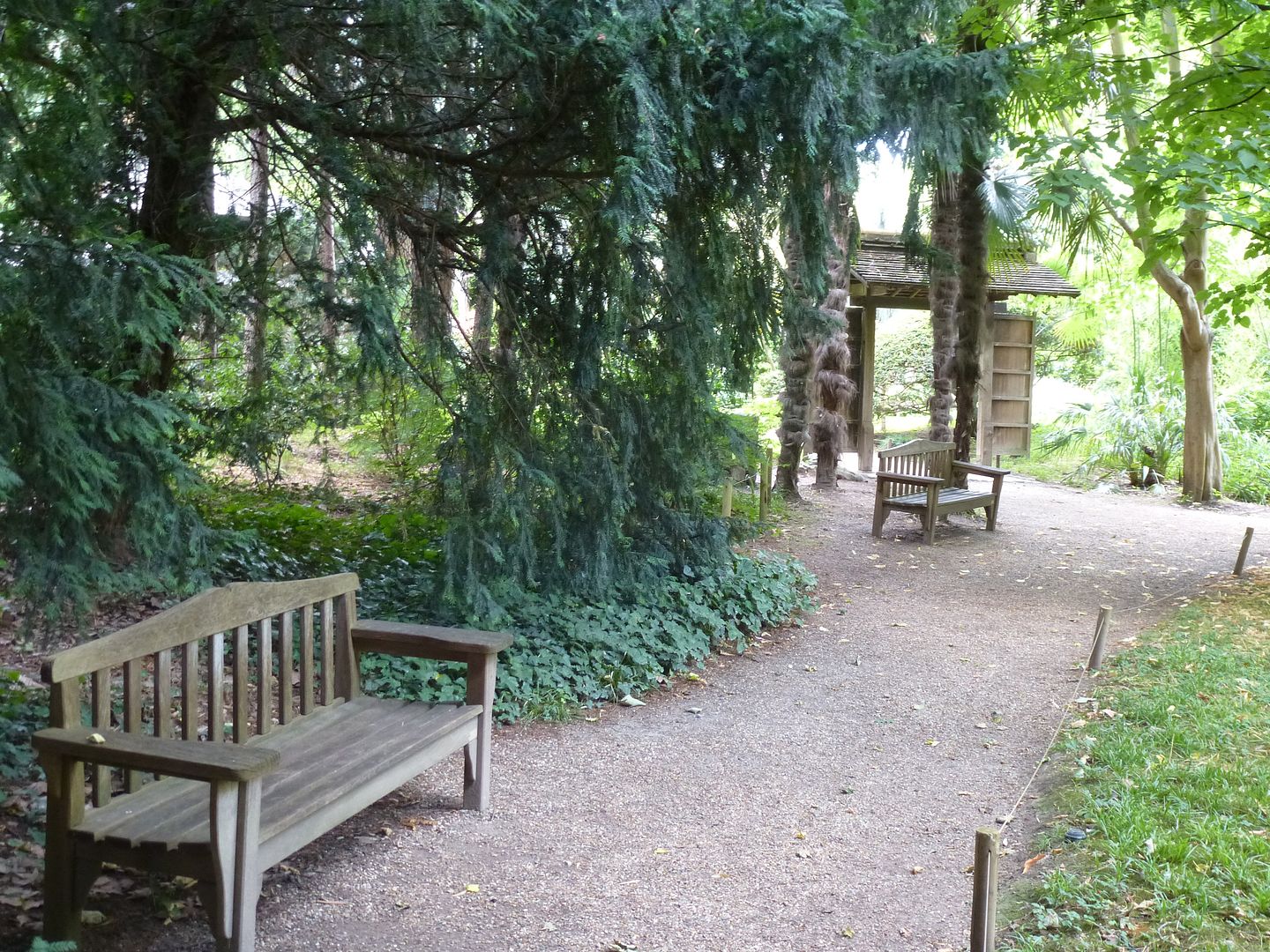
A final (fake) well
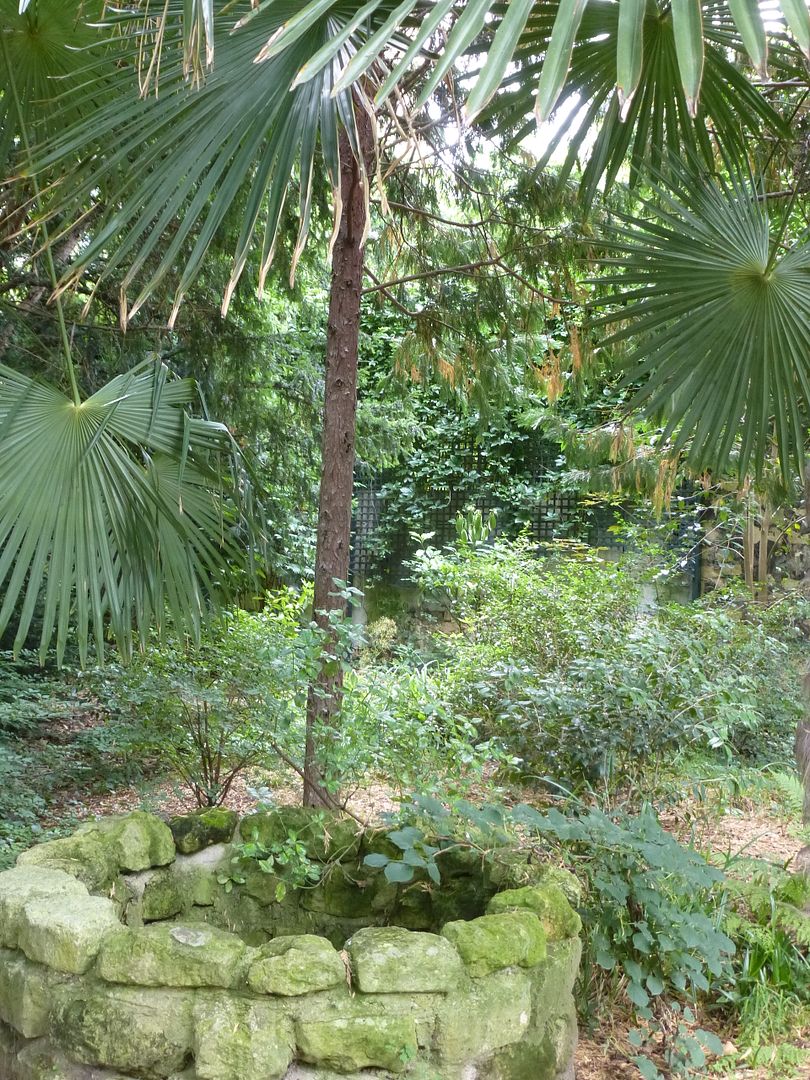
And I am back in Japan.
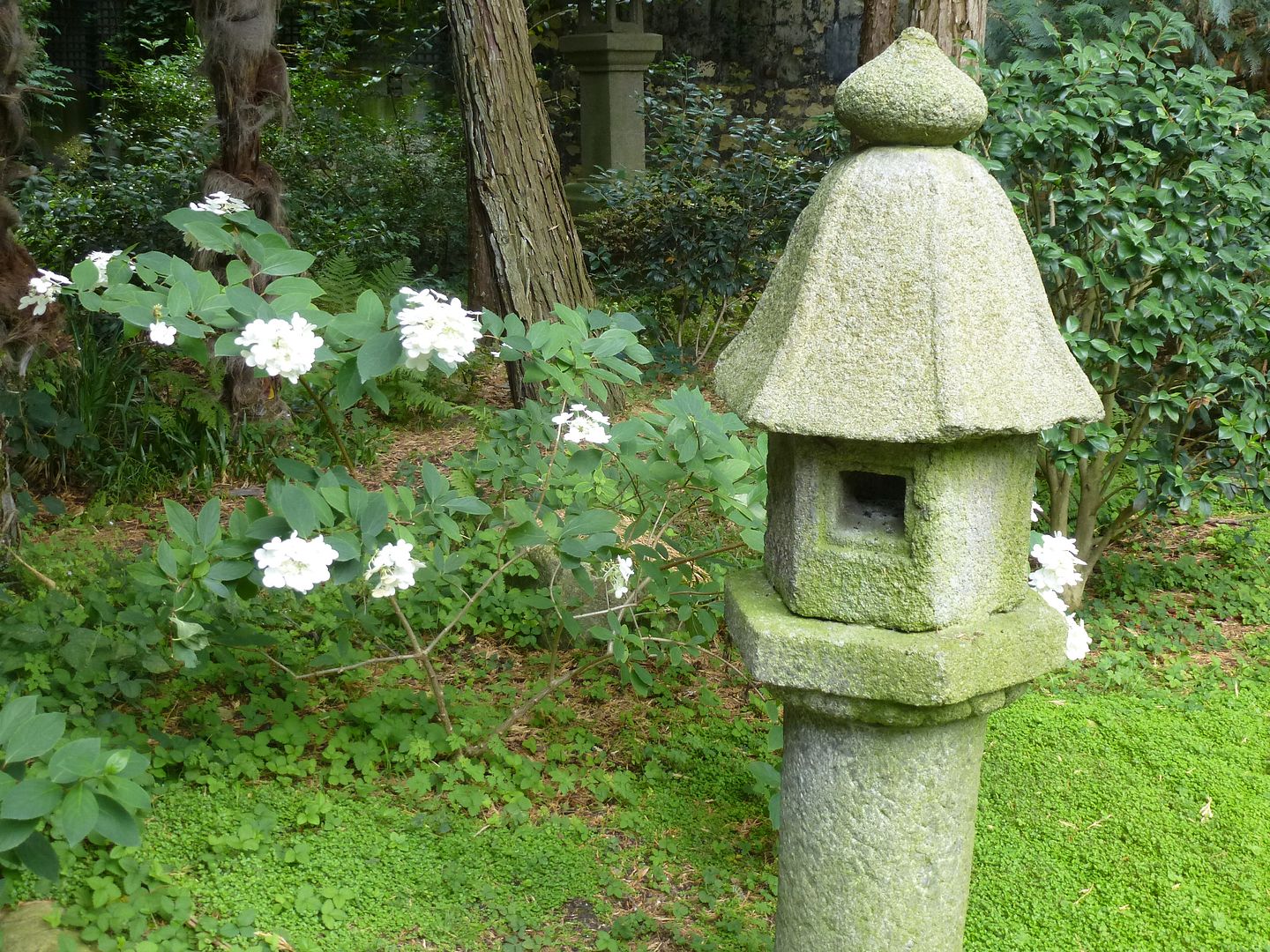




I suddenly heard annoying street noise in this oasis of tranquility, over there somewhere.

A few steps later, I saw that there was a secondary entrance to the gardens which is probably open on special days.

I don't think that dogs are allowed now, but they probably were in the past.

That would explain this lovely dog drinking fountain, now in disuse.



I think I see the entrance to the Japanese village in the distance.

A final (fake) well

And I am back in Japan.

So, here is the "Japanese village" section.

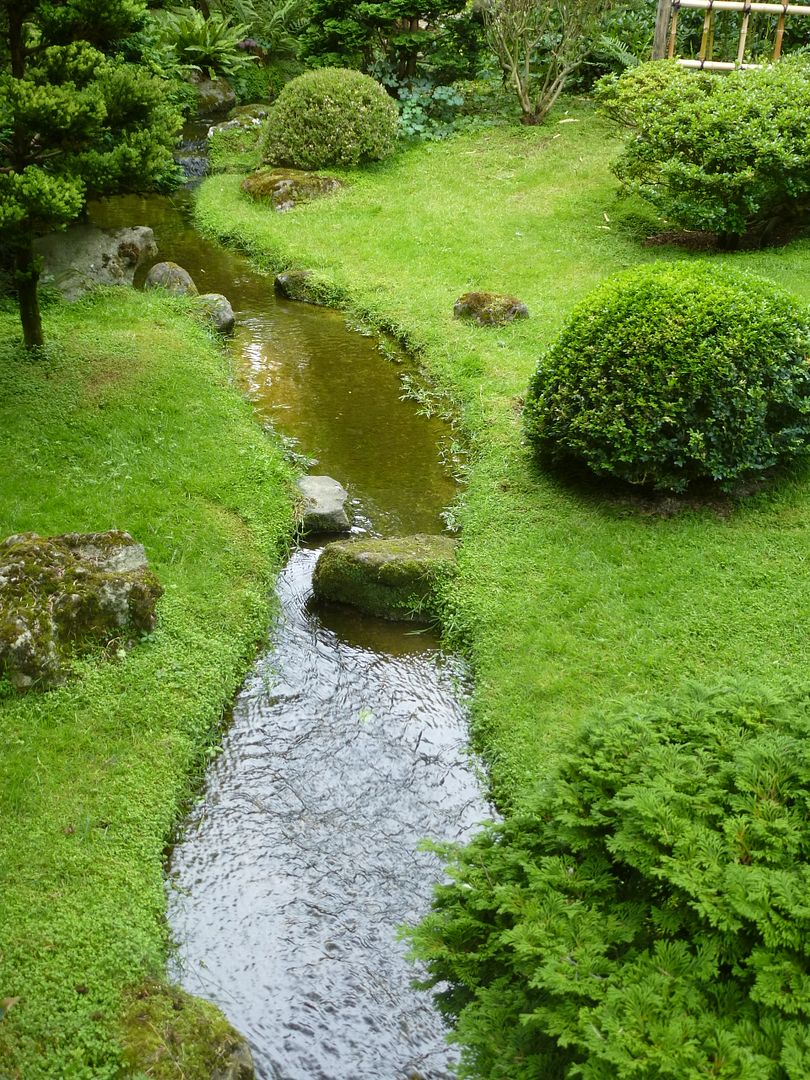
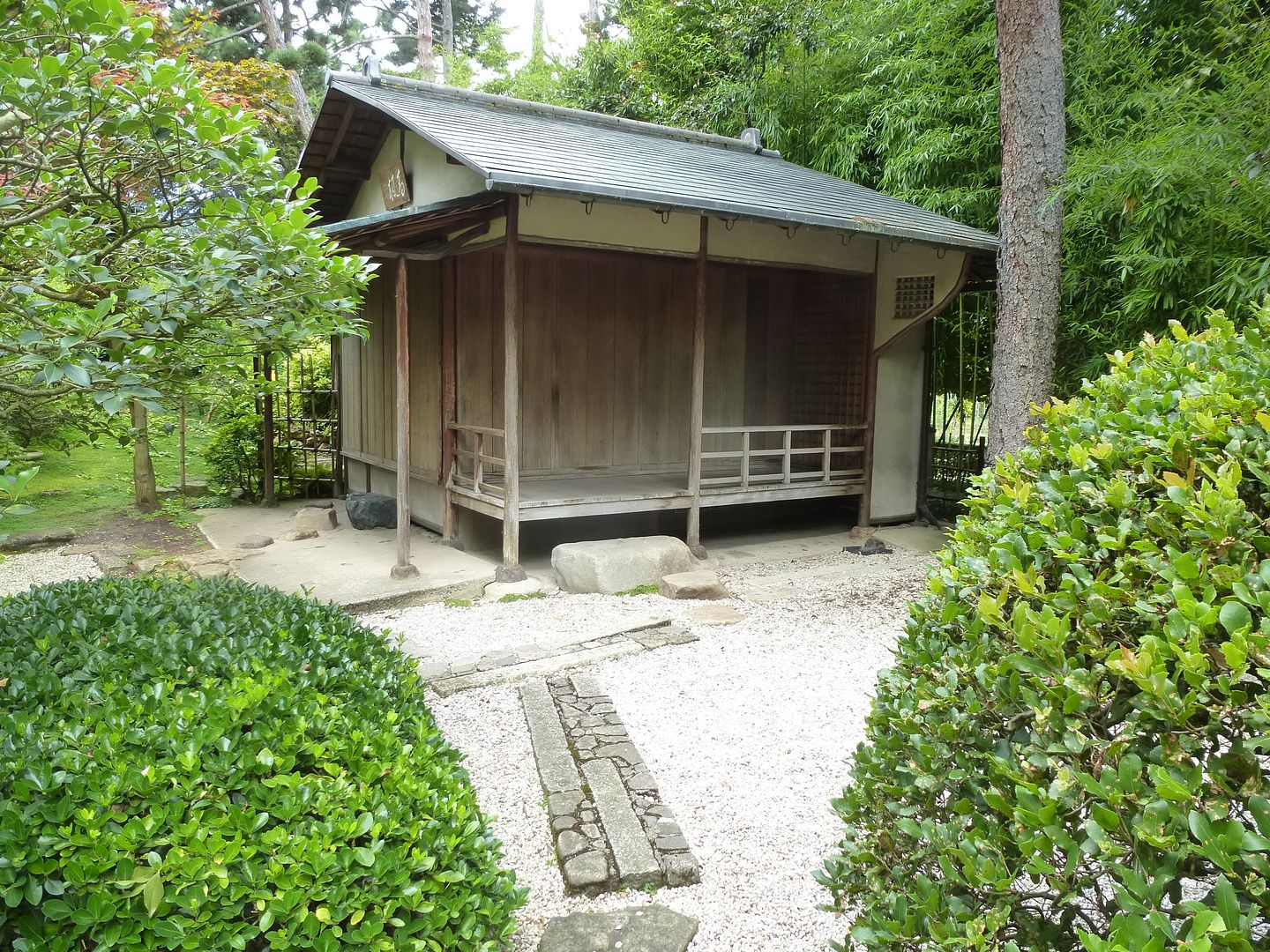
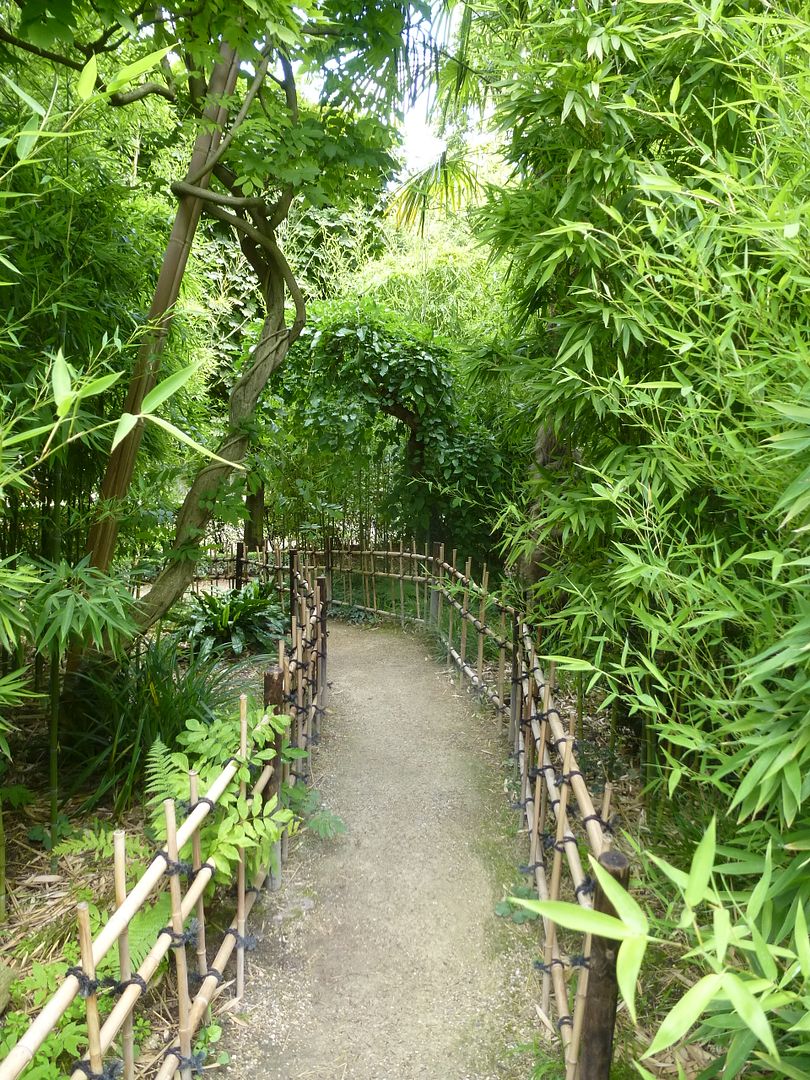

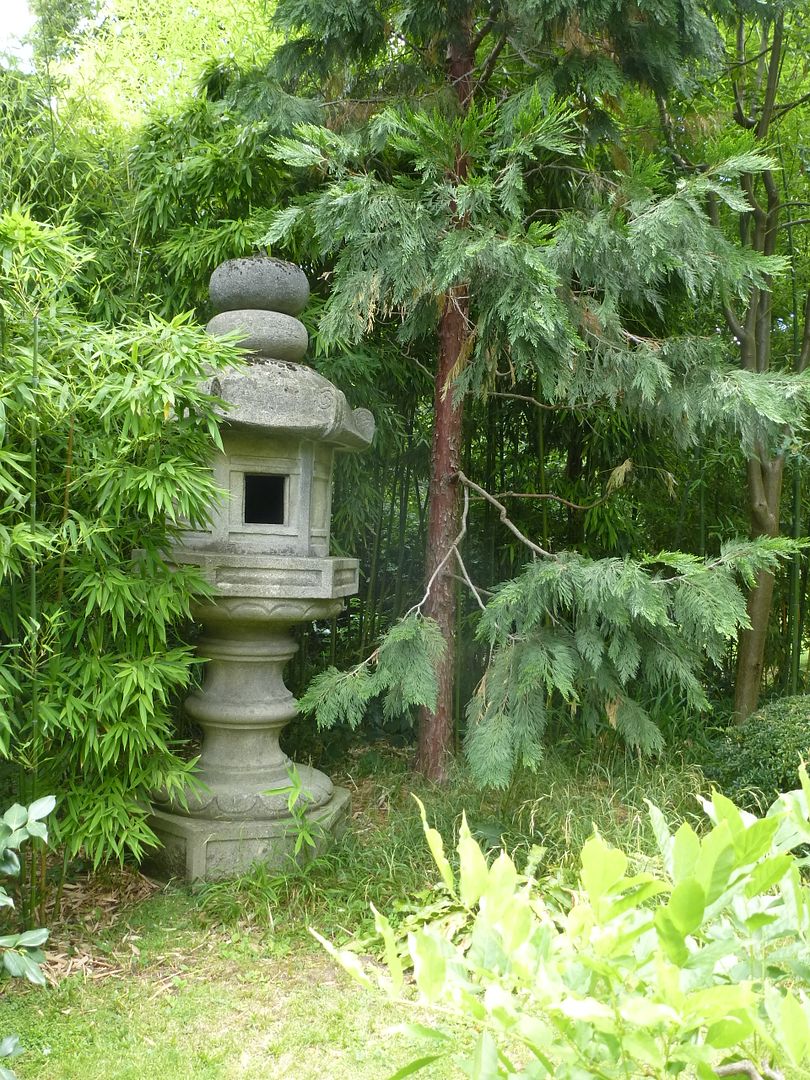
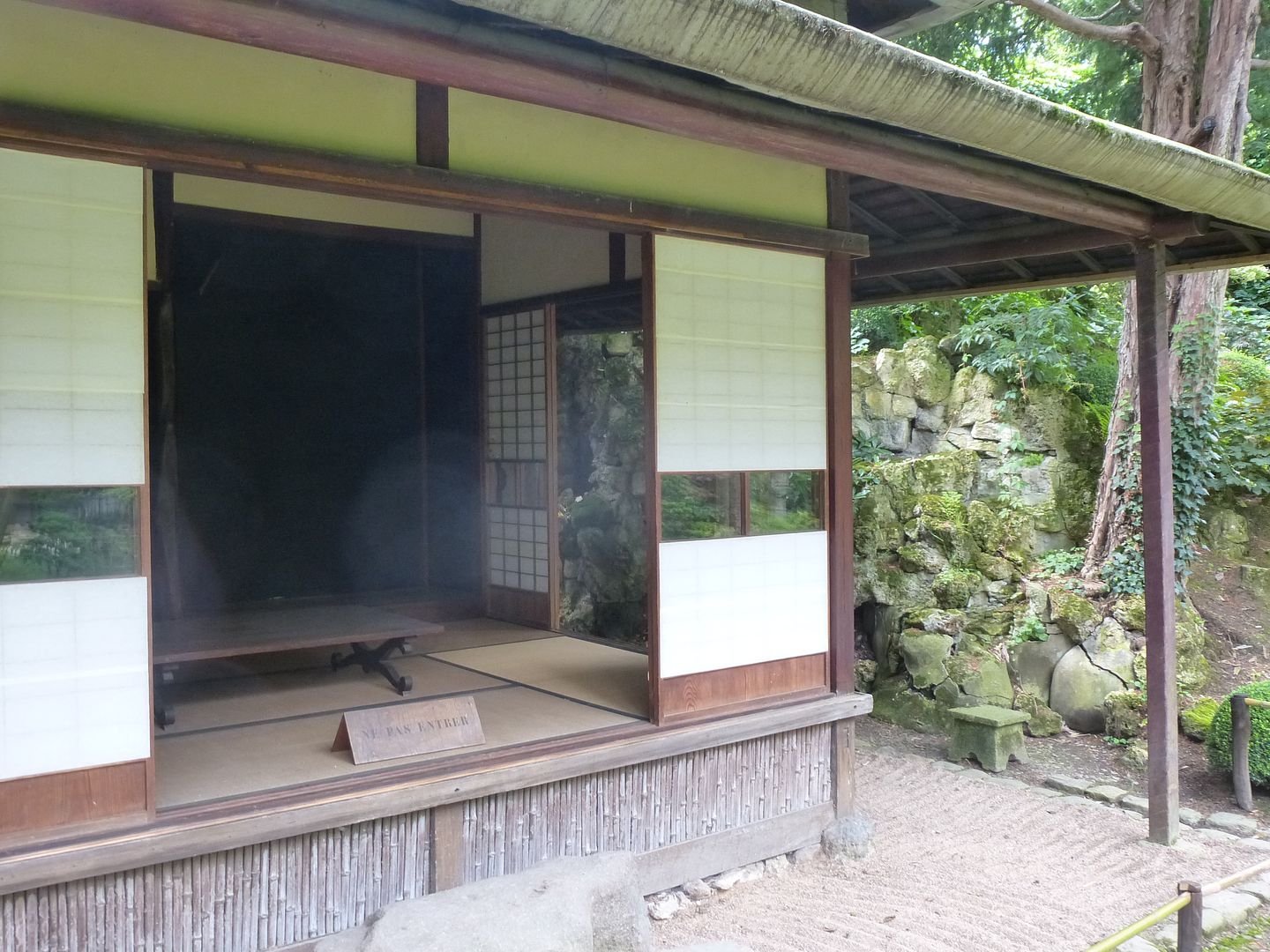
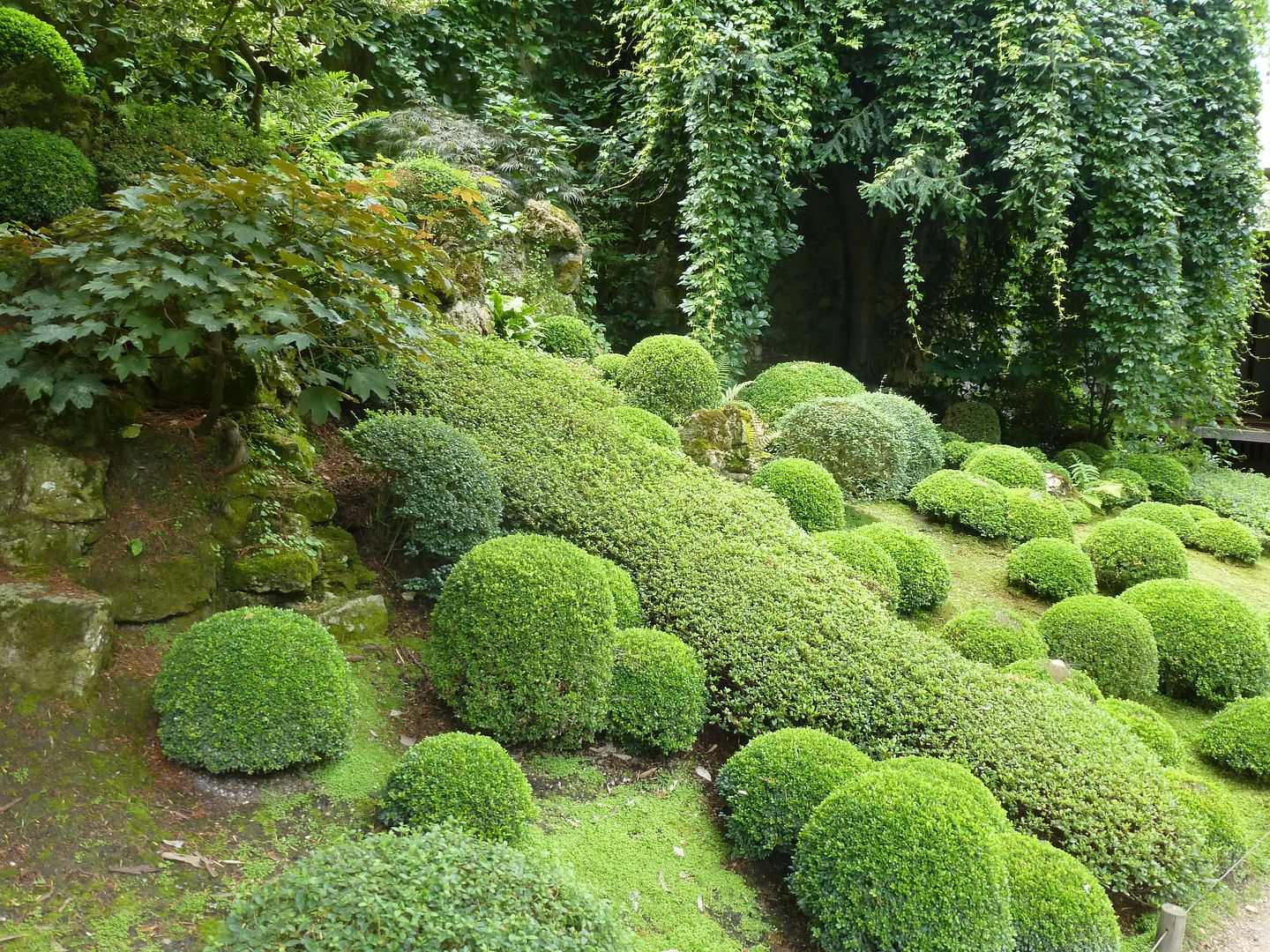
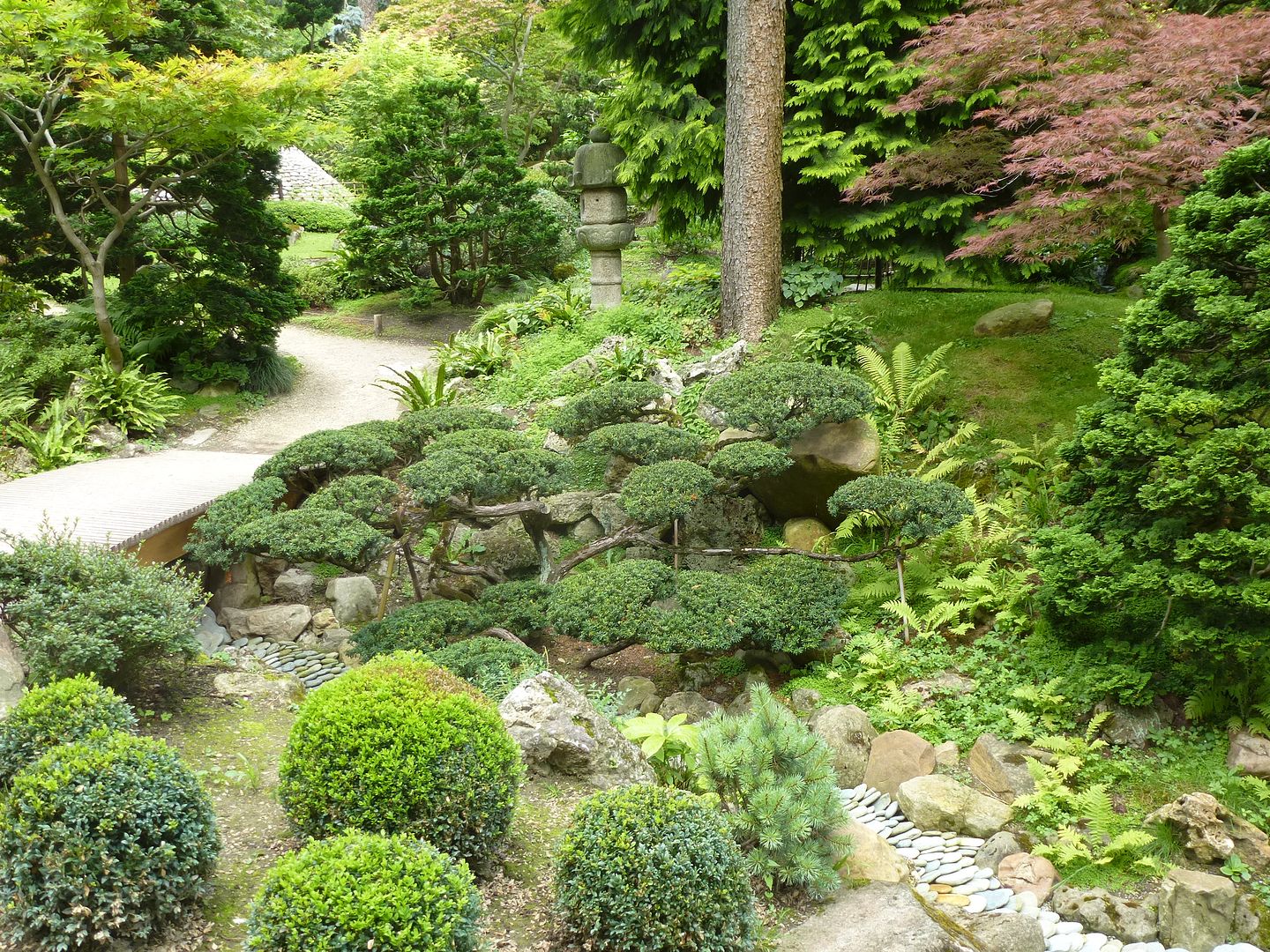
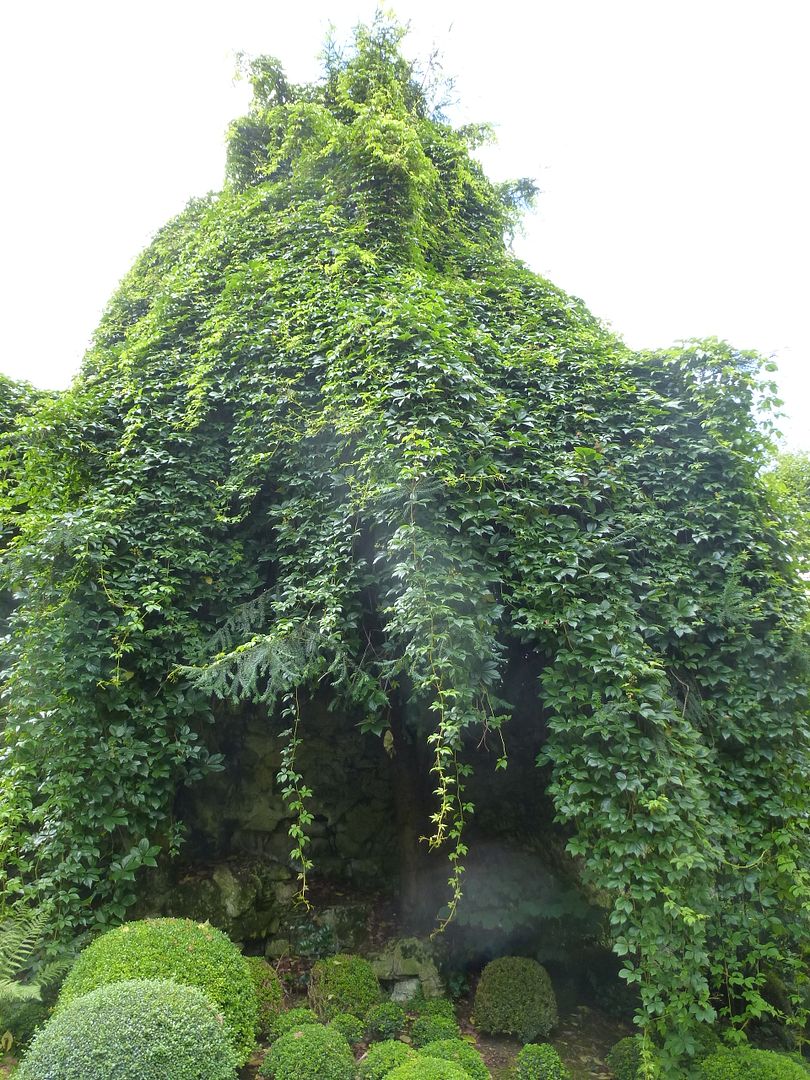
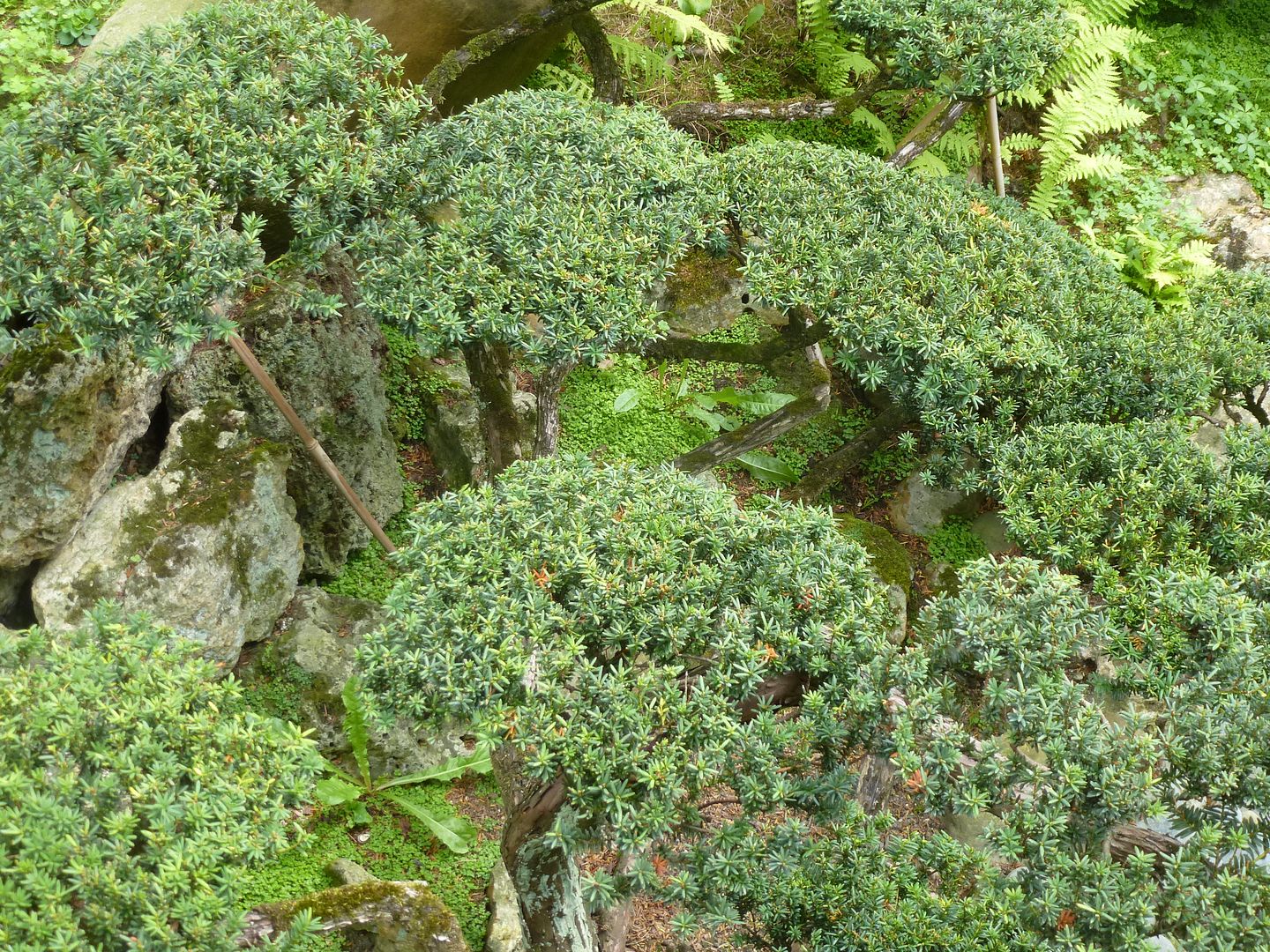
The Japanese houses are 100 years old and yet their lines are so modern!


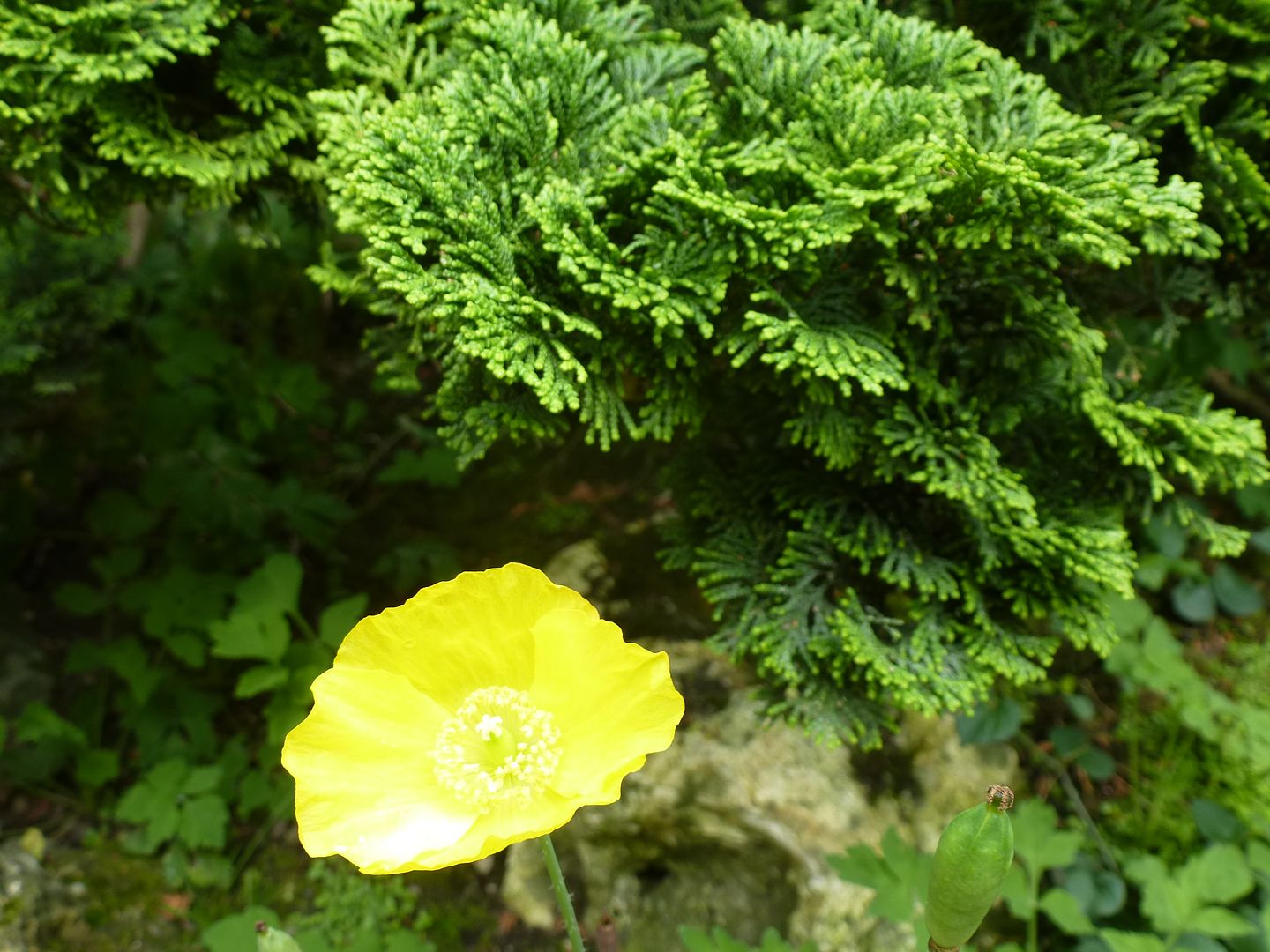
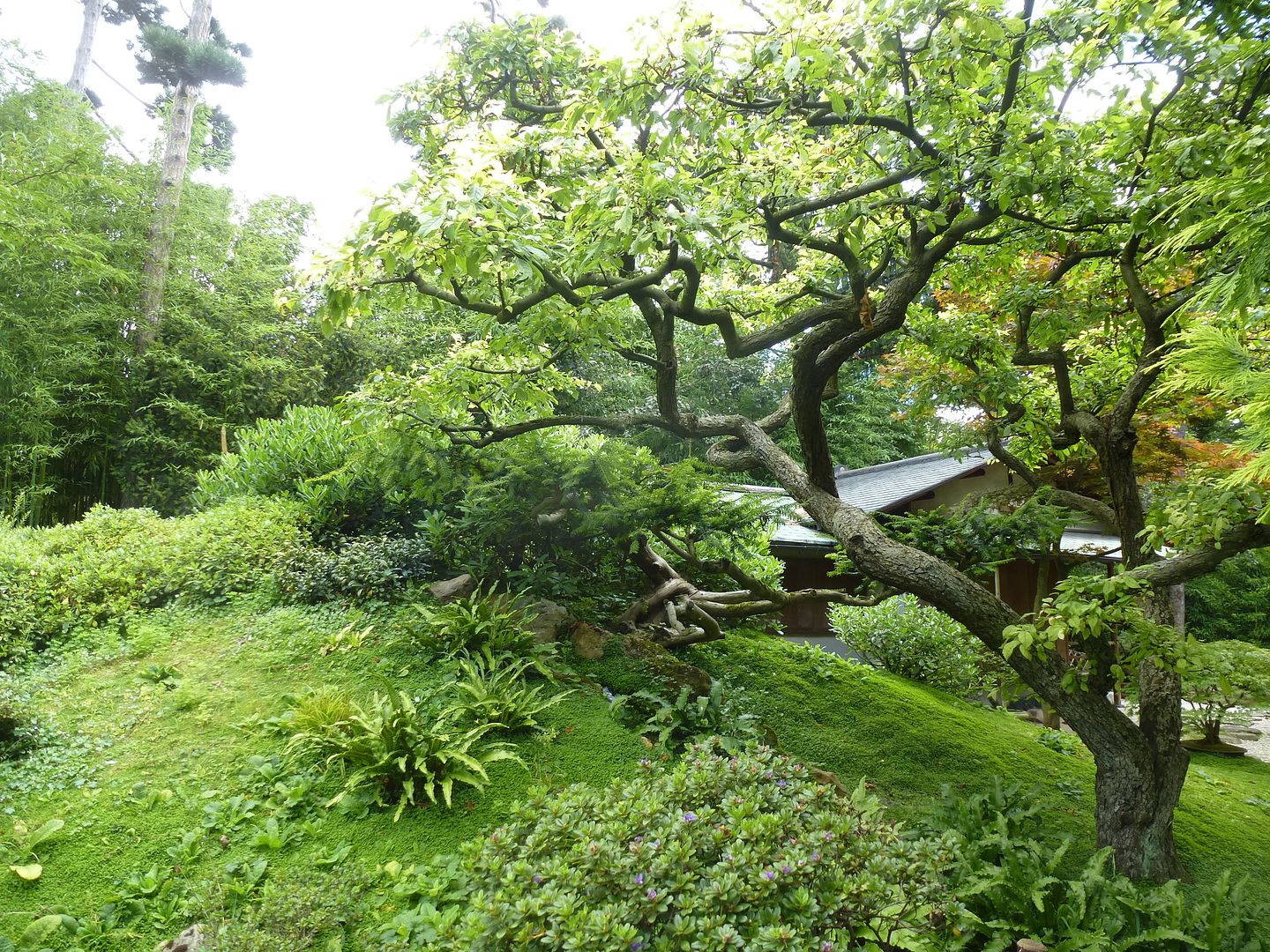
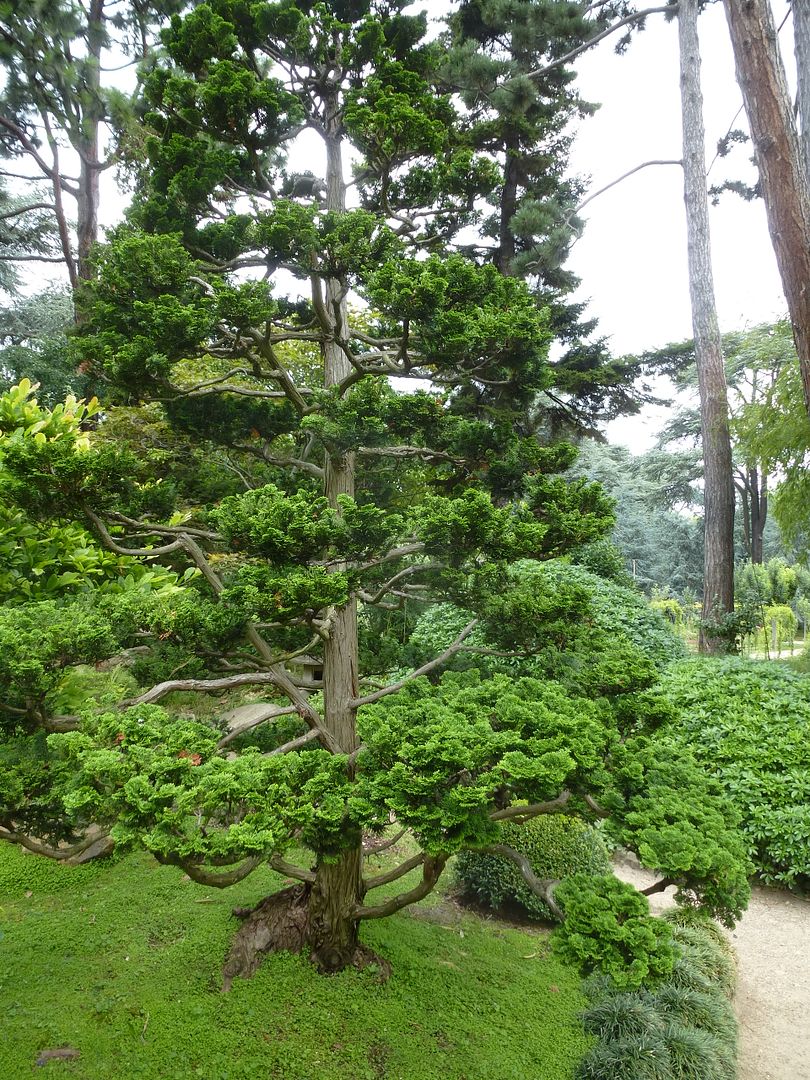
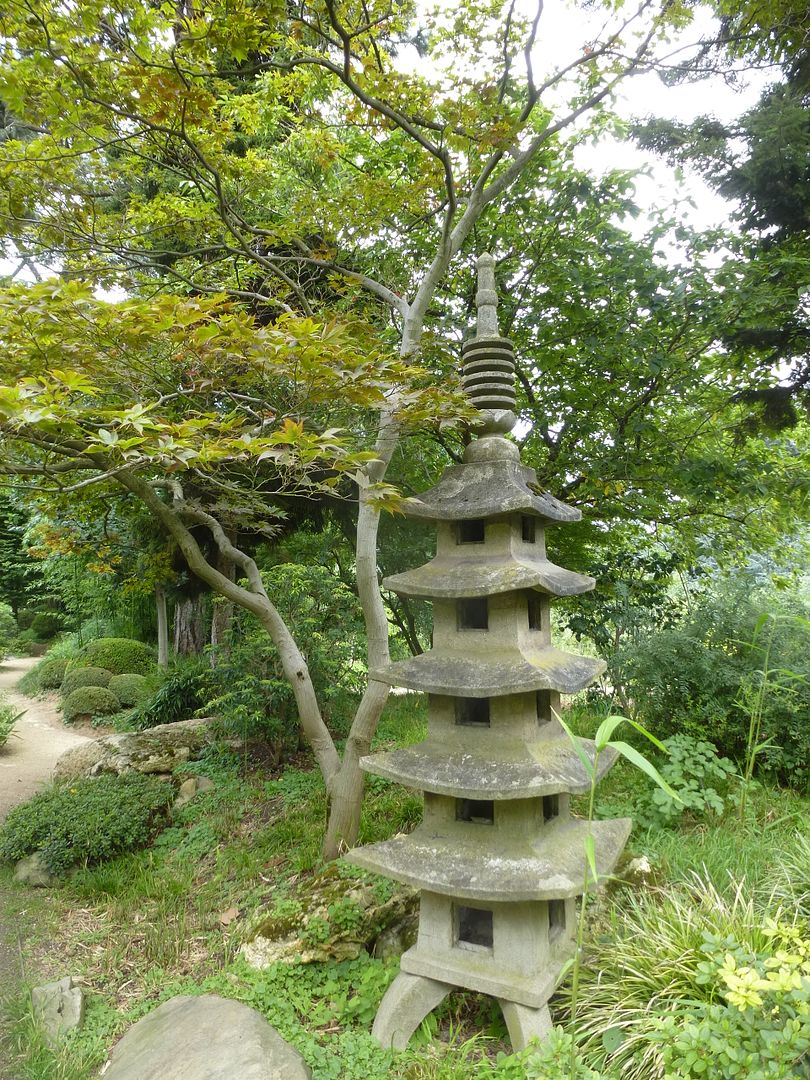
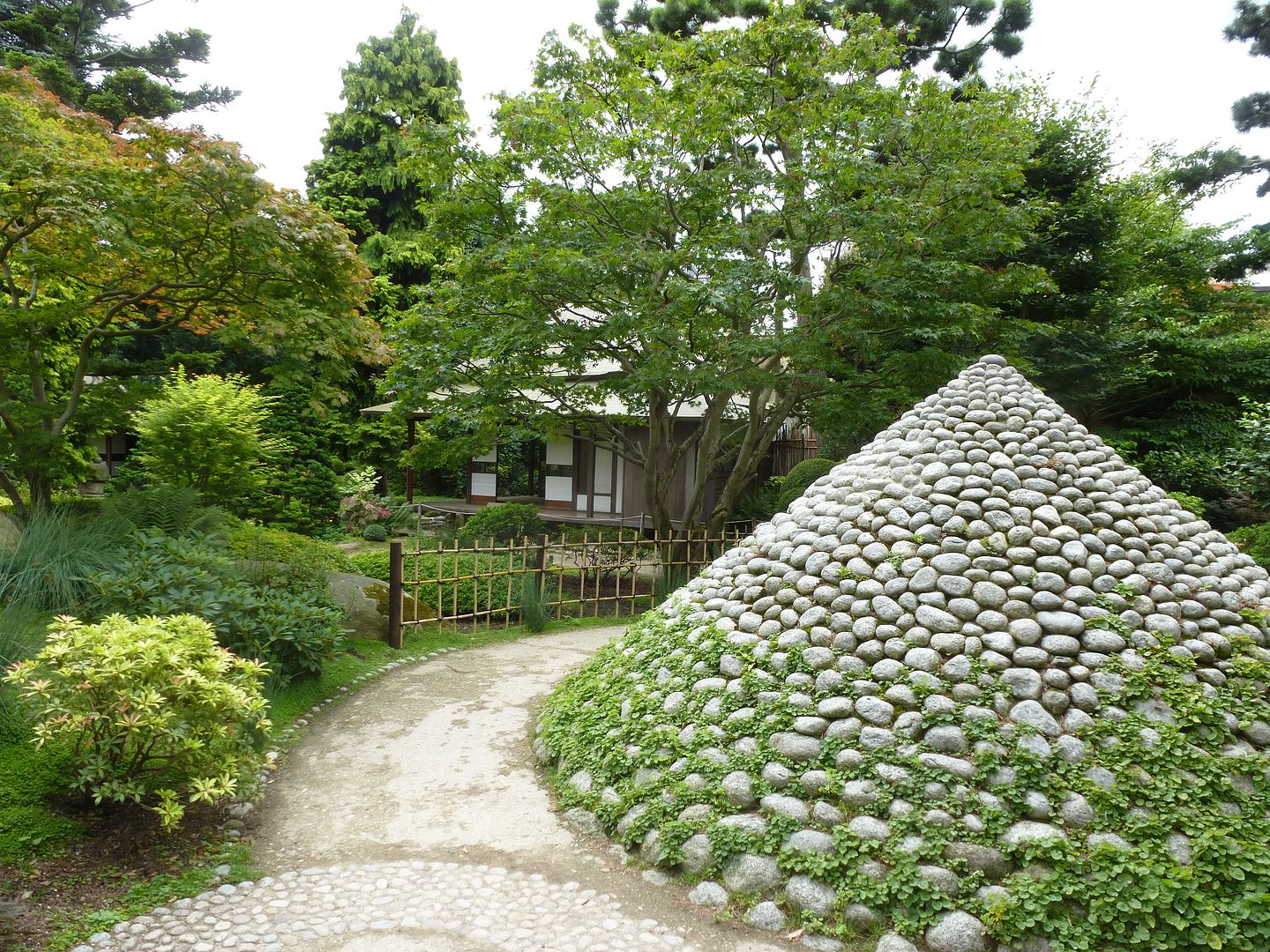
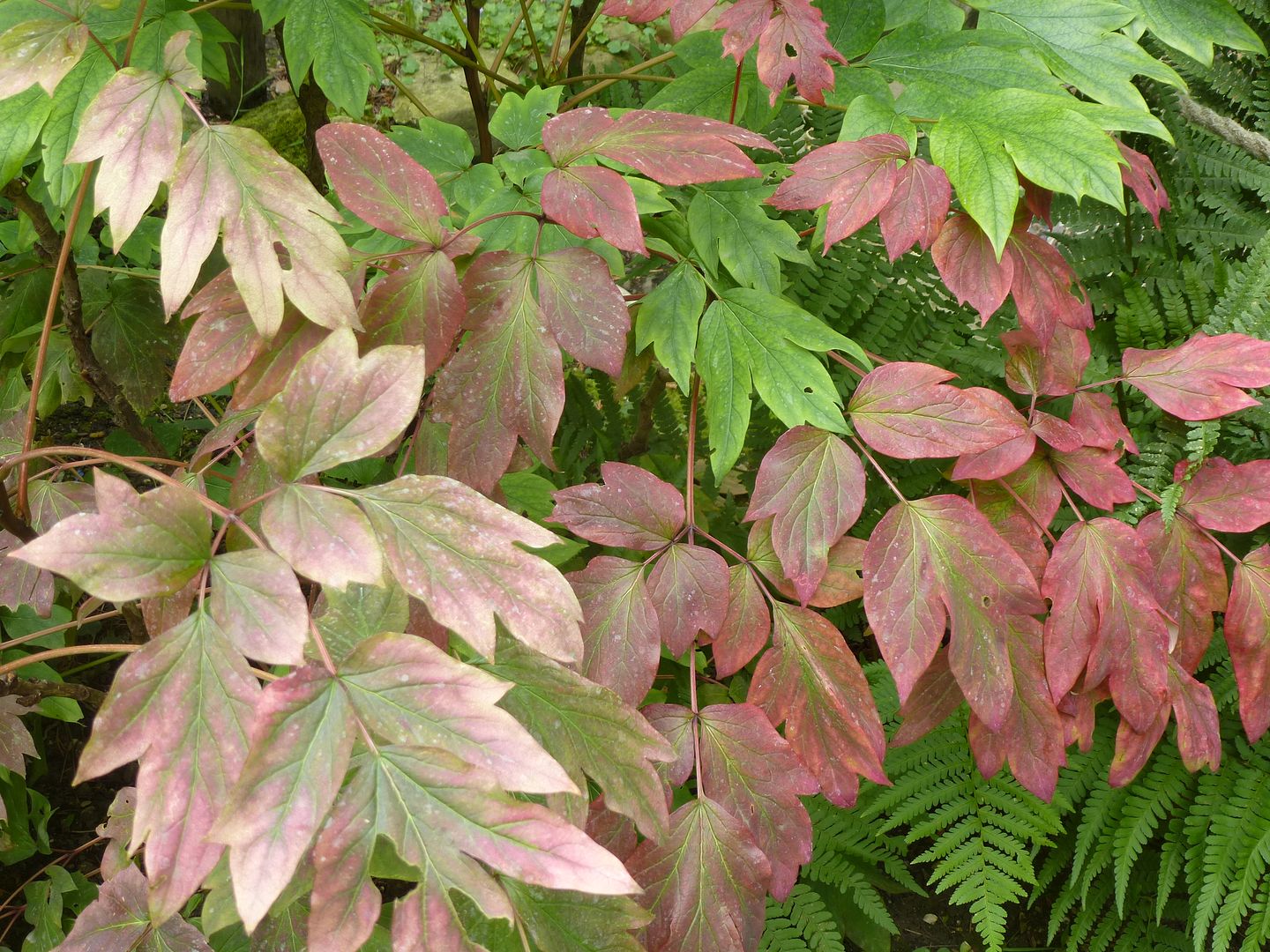

I dunno. For some reason, I have the impression that Albert Kahn would have never added a cactus garden.

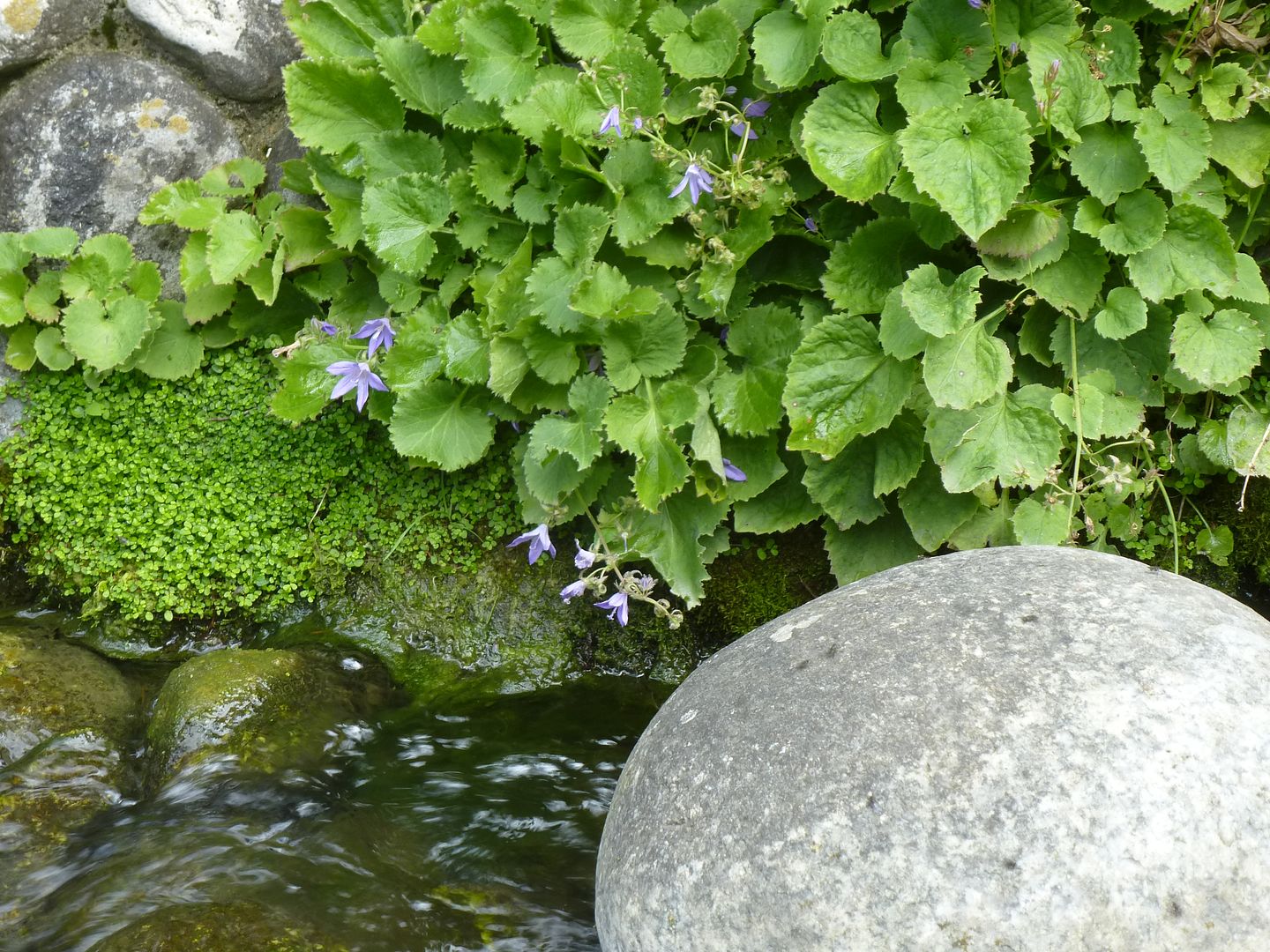
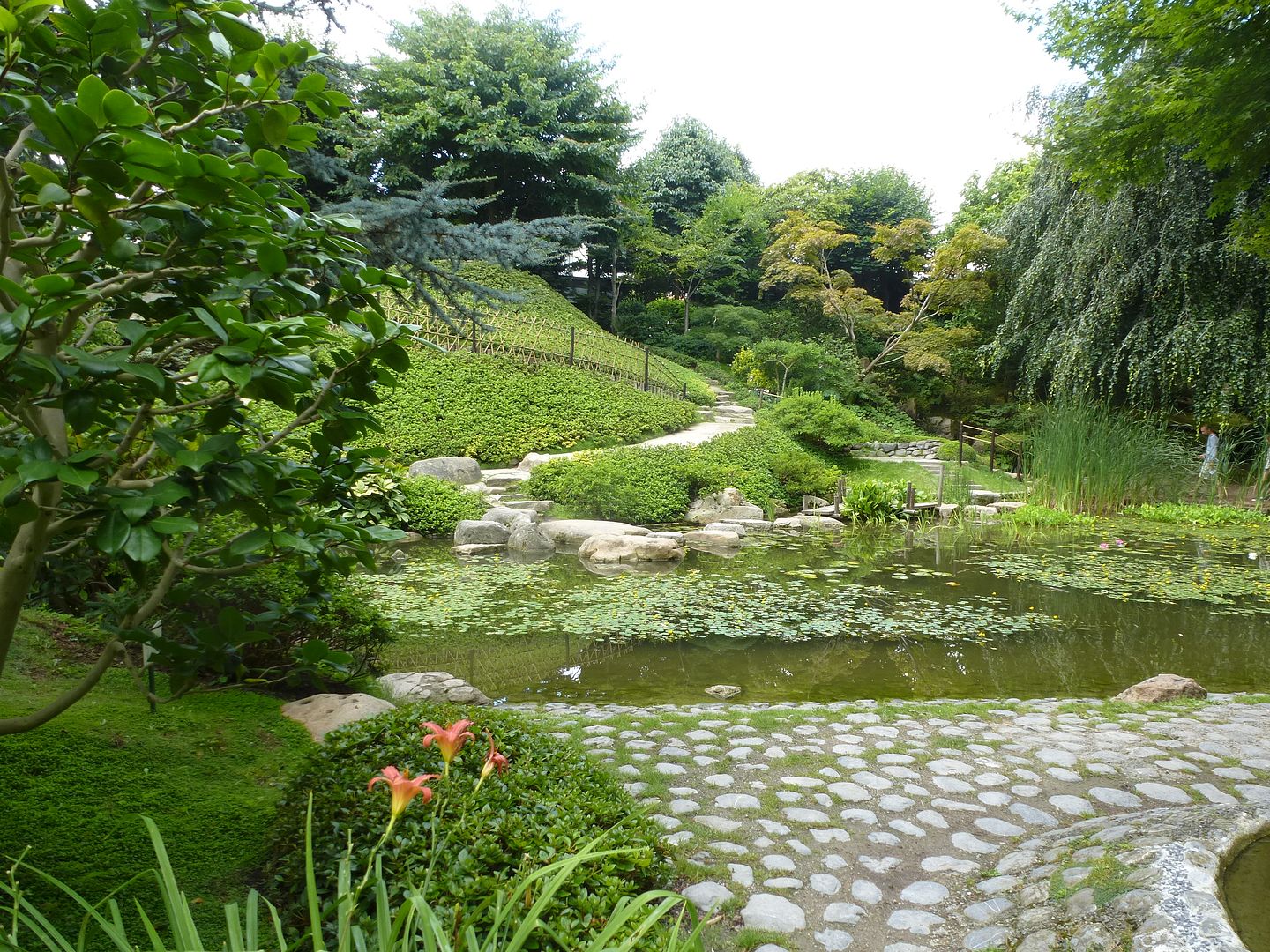
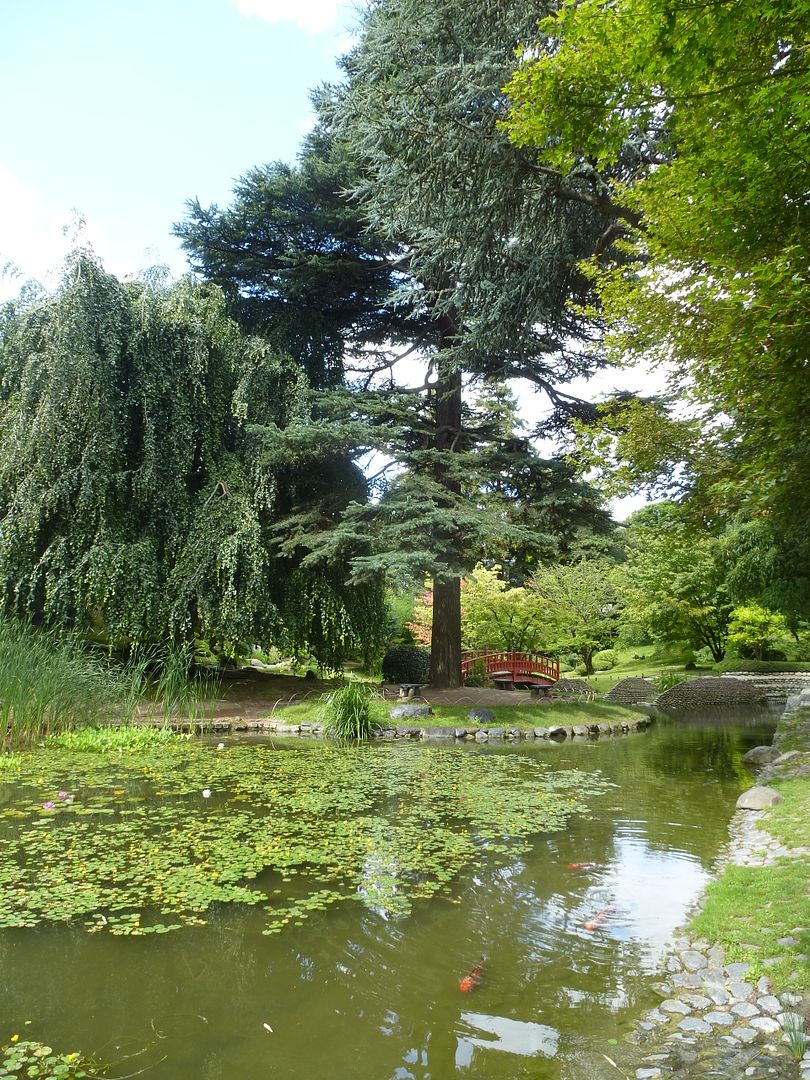
These fat goldfish could hardly fit under the water.
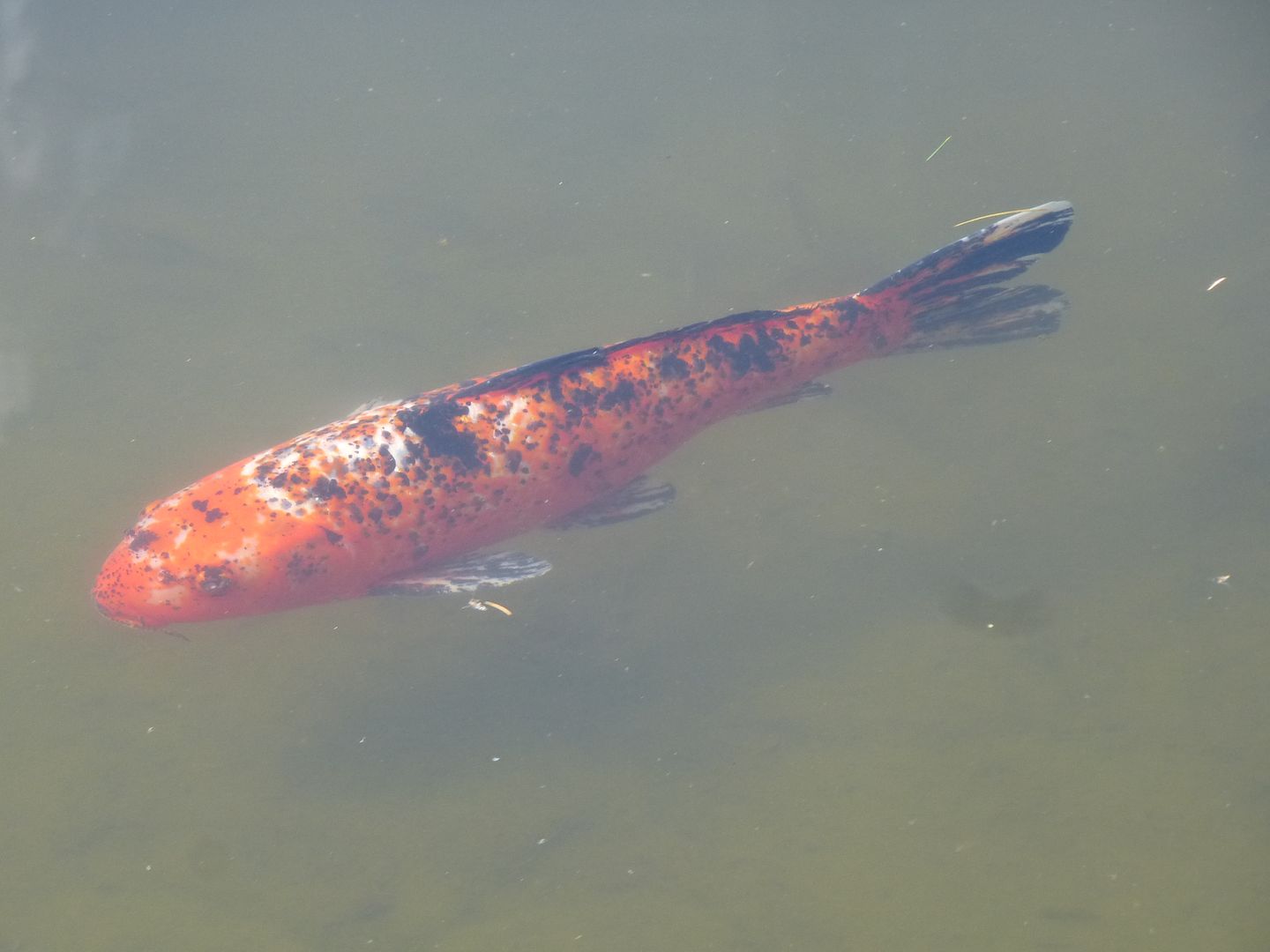

Proof at last that I was not all alone in the gardens!
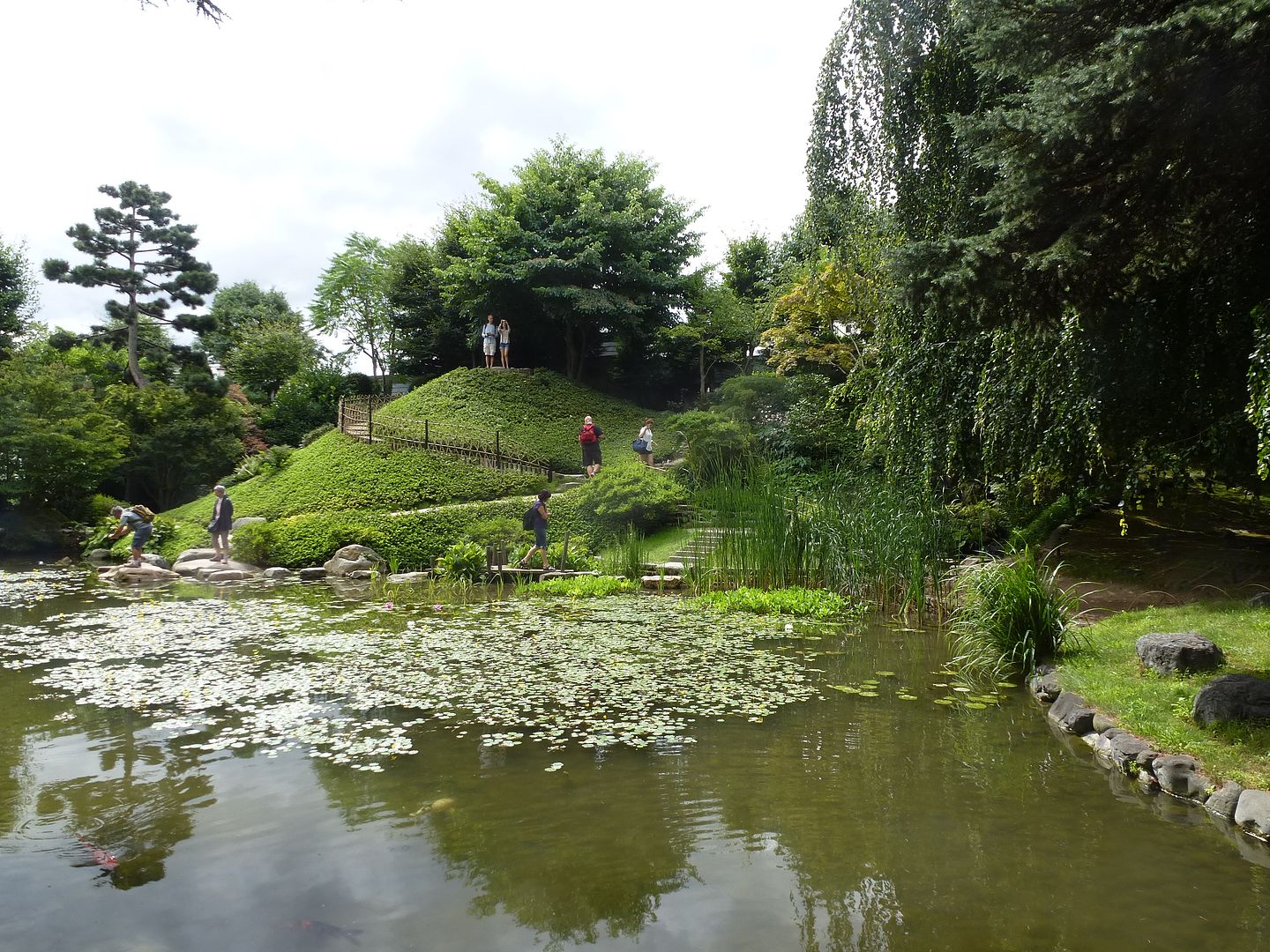
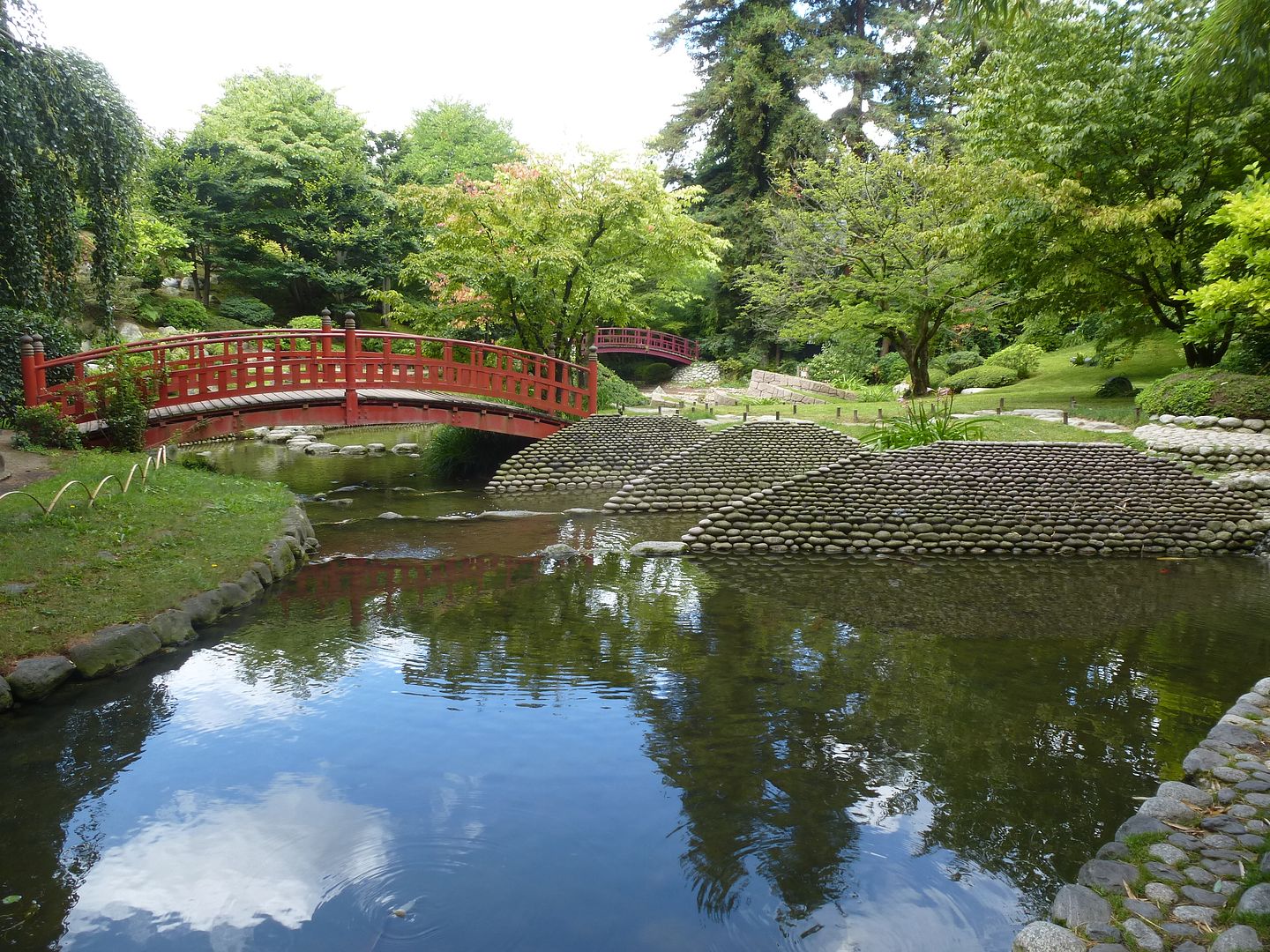
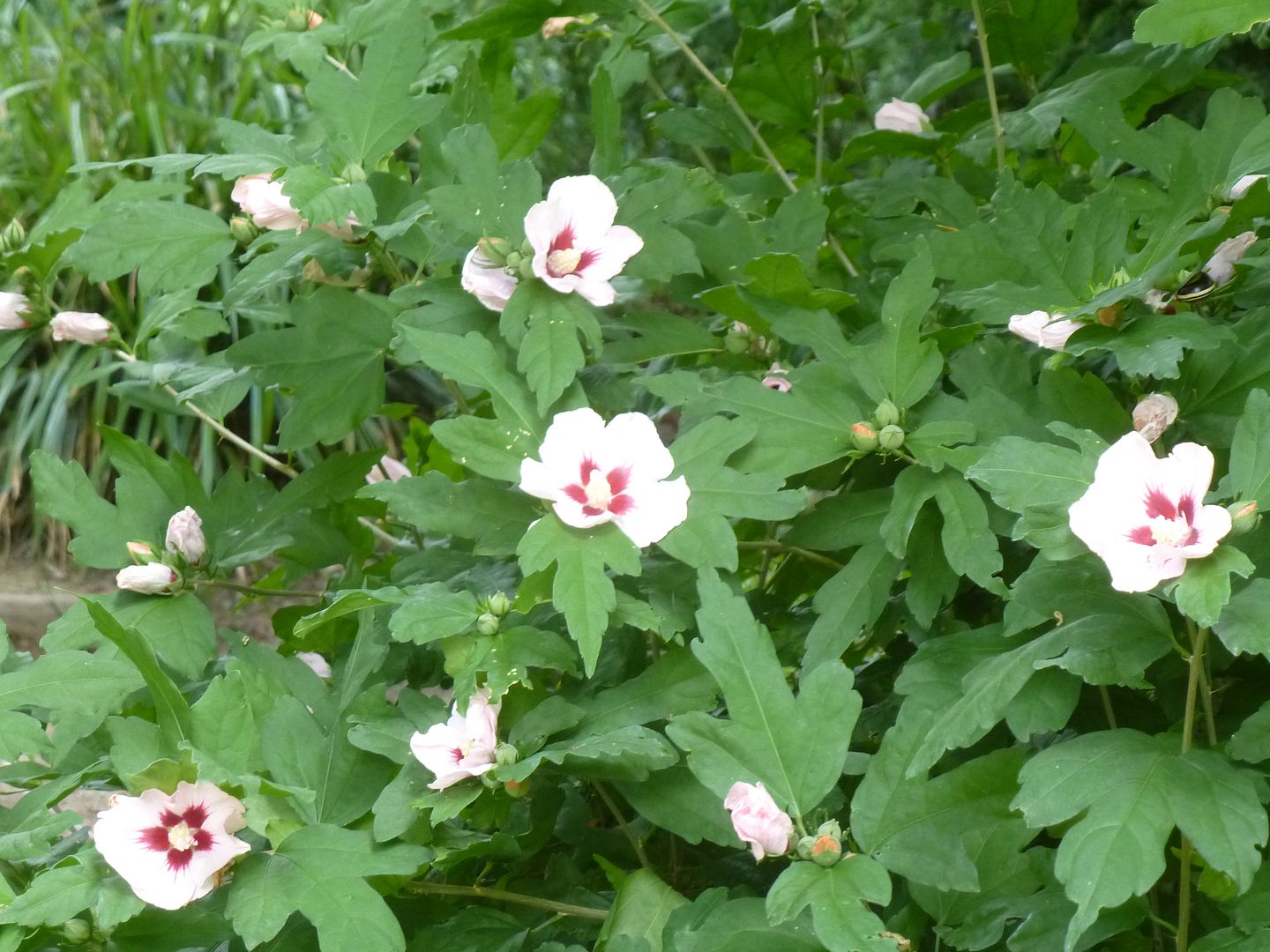
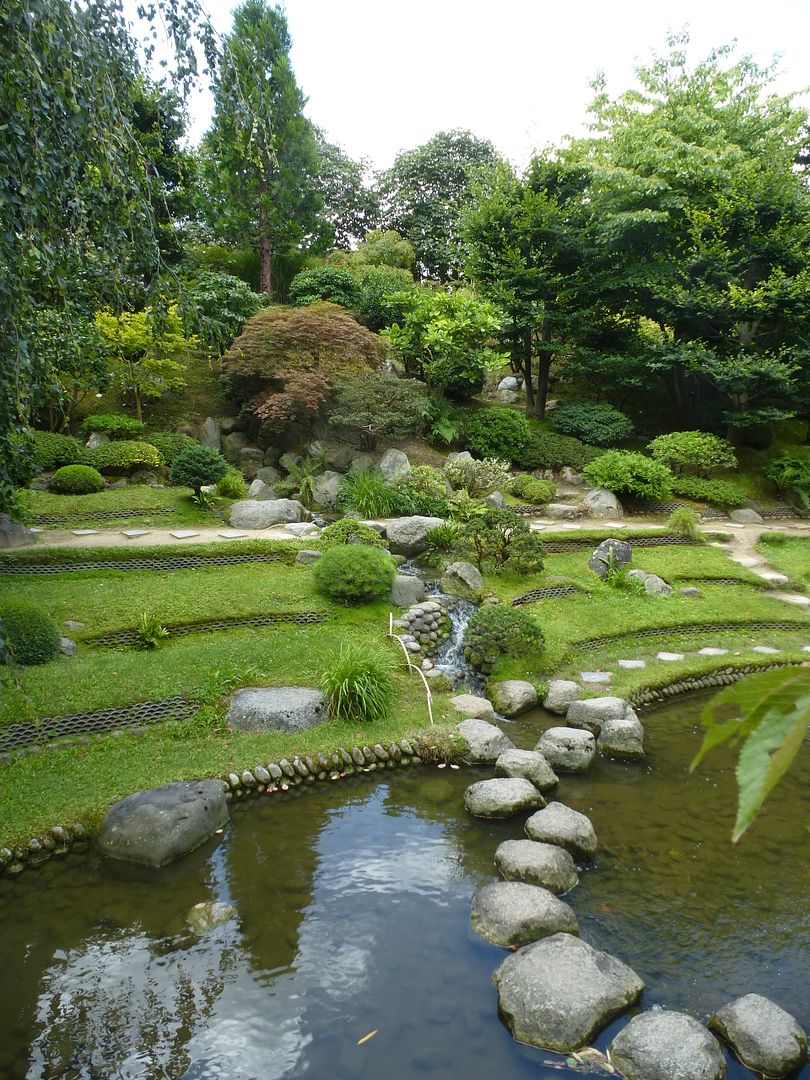
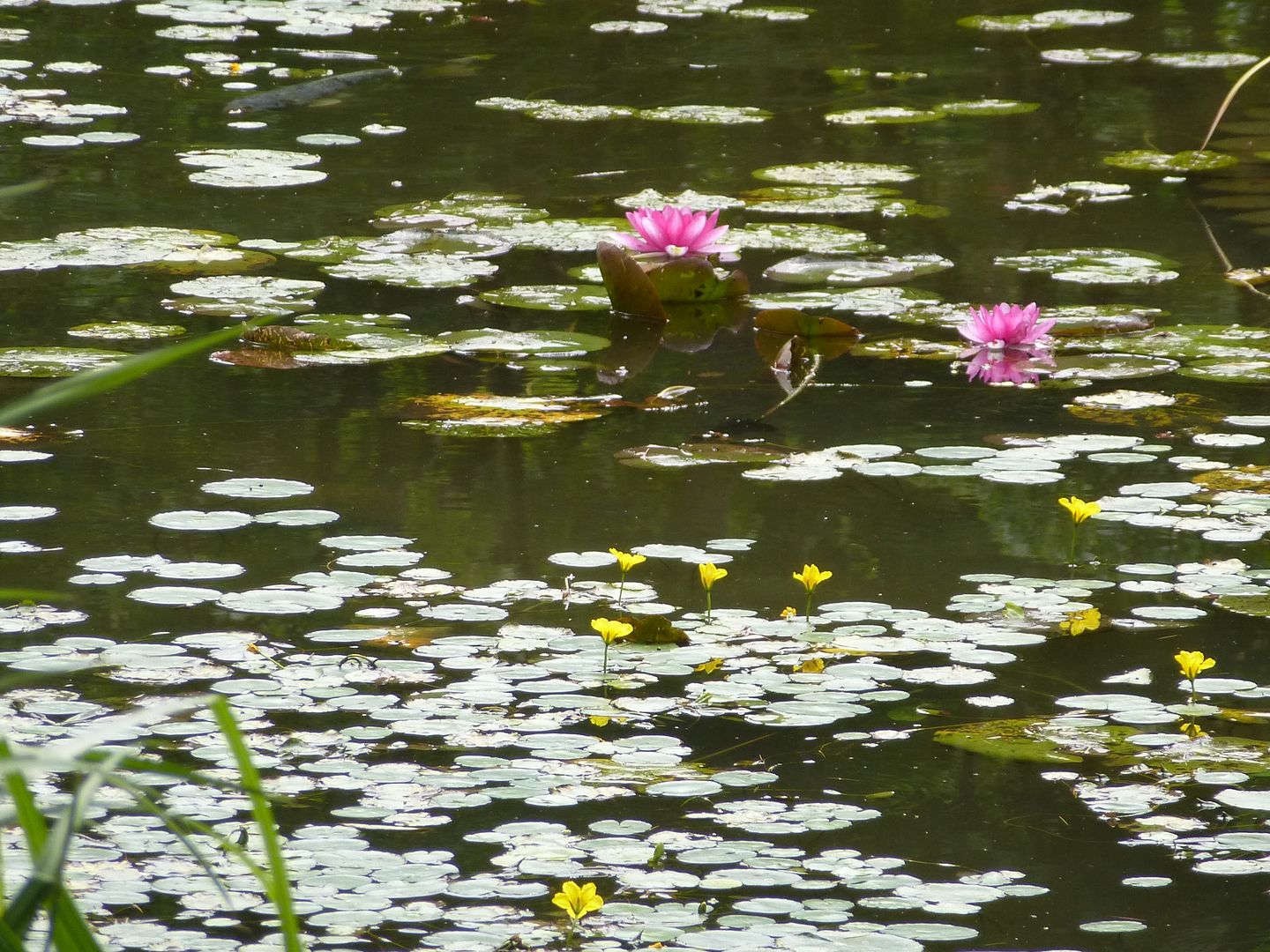
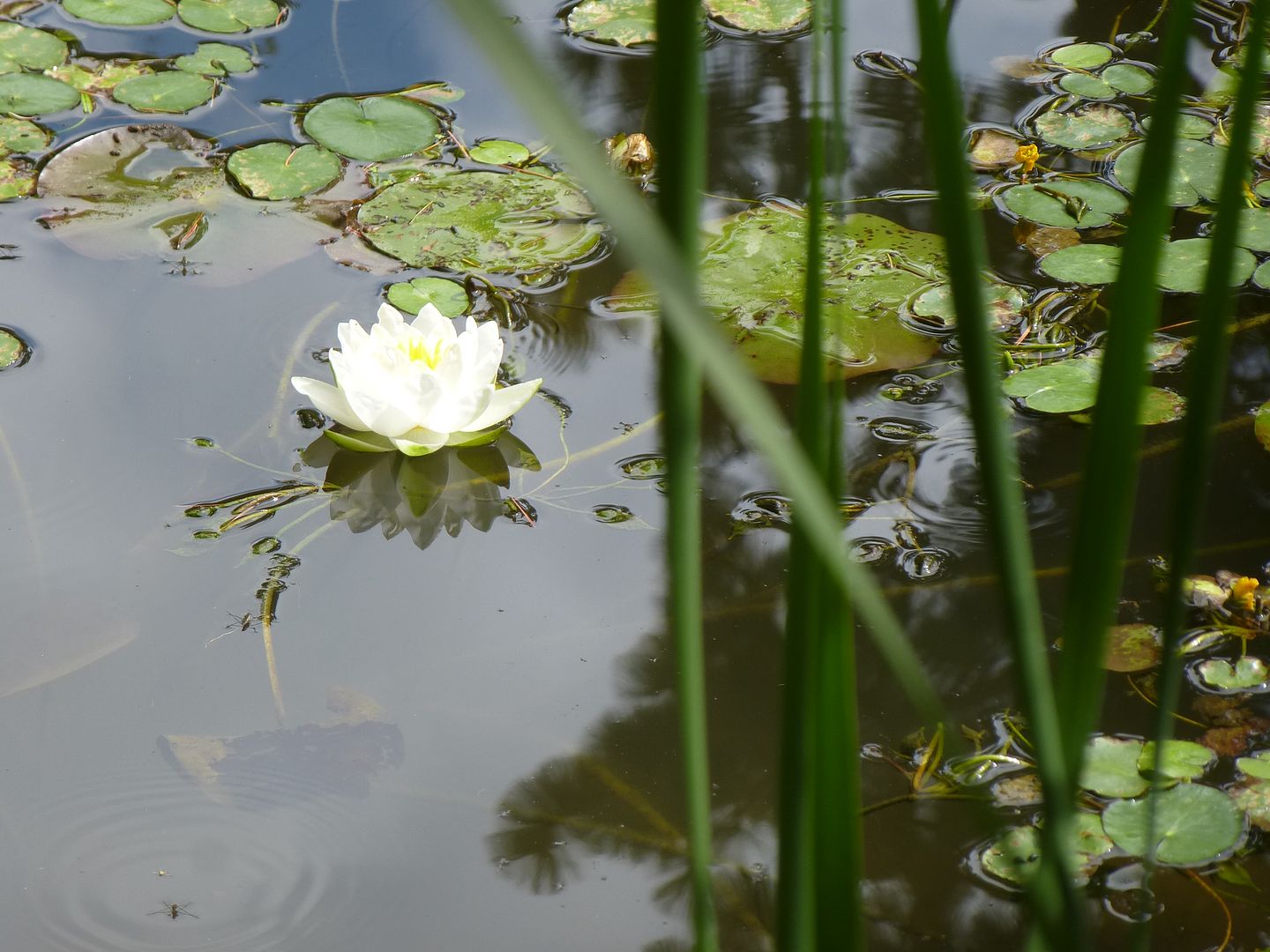
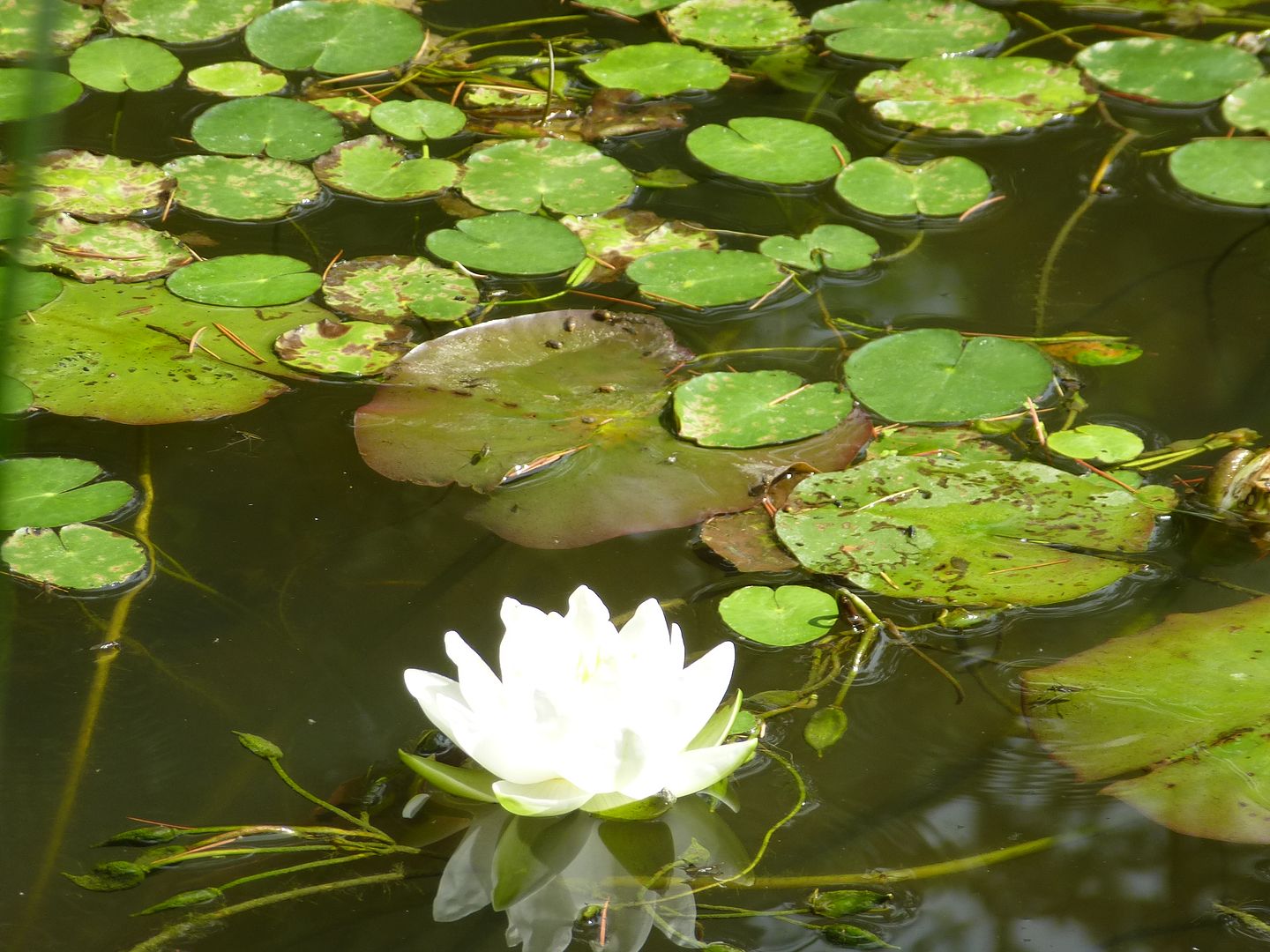











The Japanese houses are 100 years old and yet their lines are so modern!









I dunno. For some reason, I have the impression that Albert Kahn would have never added a cactus garden.




These fat goldfish could hardly fit under the water.


Proof at last that I was not all alone in the gardens!







I knew there was one section that I had not yet properly visited, but what else might I have missed? I pulled out my map (you get a good brochure with the 3€ entrance fee) to look at where I had been and where I might go, because I knew that I had only walked on maybe half of the paths in the gardens.
One thing that I really like about the gardens is that they have not been made too "safe" with guard rails everywhere and a completely secure path. There is quite clearly the possibility of tripping and falling if you take some of the more uneven passages. But of course there are plenty of completely flat areas as well so that people with mobility issues are not deprived of anything.




This is the view from that hill that the people were on.




The English meadow does indeed remind me of the park where David Hemmings photographed the mysterious activities of Vanessa Redgrave in Blow Up.

Today only a magpie was going about its business.

I was drawn back into the Vosges area, which had the most magnificent aroma.


In 1999, most of this section was destroyed by Lothar, the same storm that devastated the real Vosges forests a few hours later. I made a report about it with a few pictures a couple of years ago, because my grandmother and all of her ancestors were from the Vosges. Anyway, they have replanted, and fir trees grow quite quickly -- which is also why they are so fragile in high winds.




Leaving the Vosges I passed through the corner of the golden forest of birch...

... to finally visit the blue forest properly.







And had I paid enough attention to the marsh? Probably not.






Now that I have tried everybody's patience with my disorganisation, I will wrap this up.
I just glanced at a few more things on my way out.
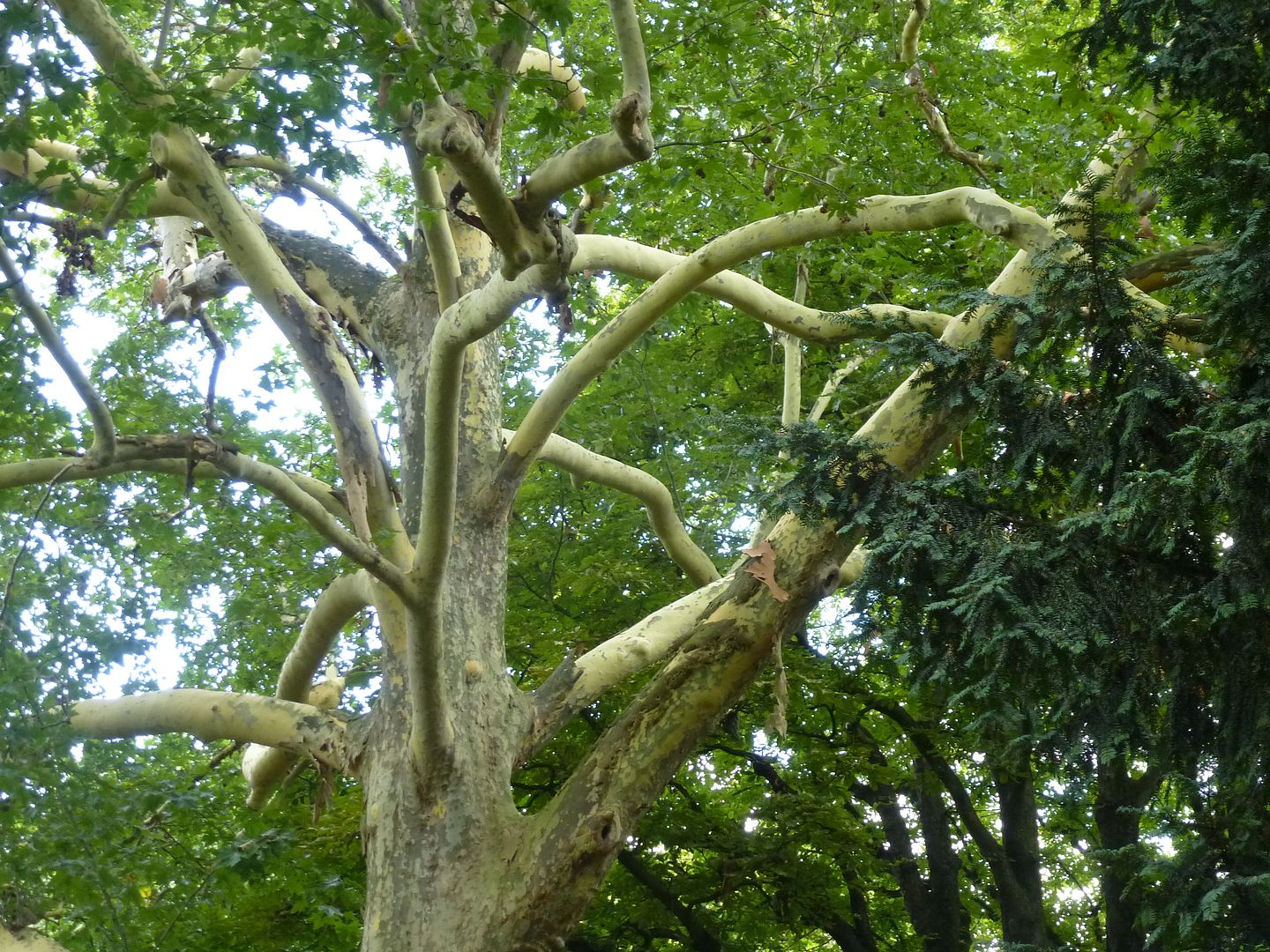
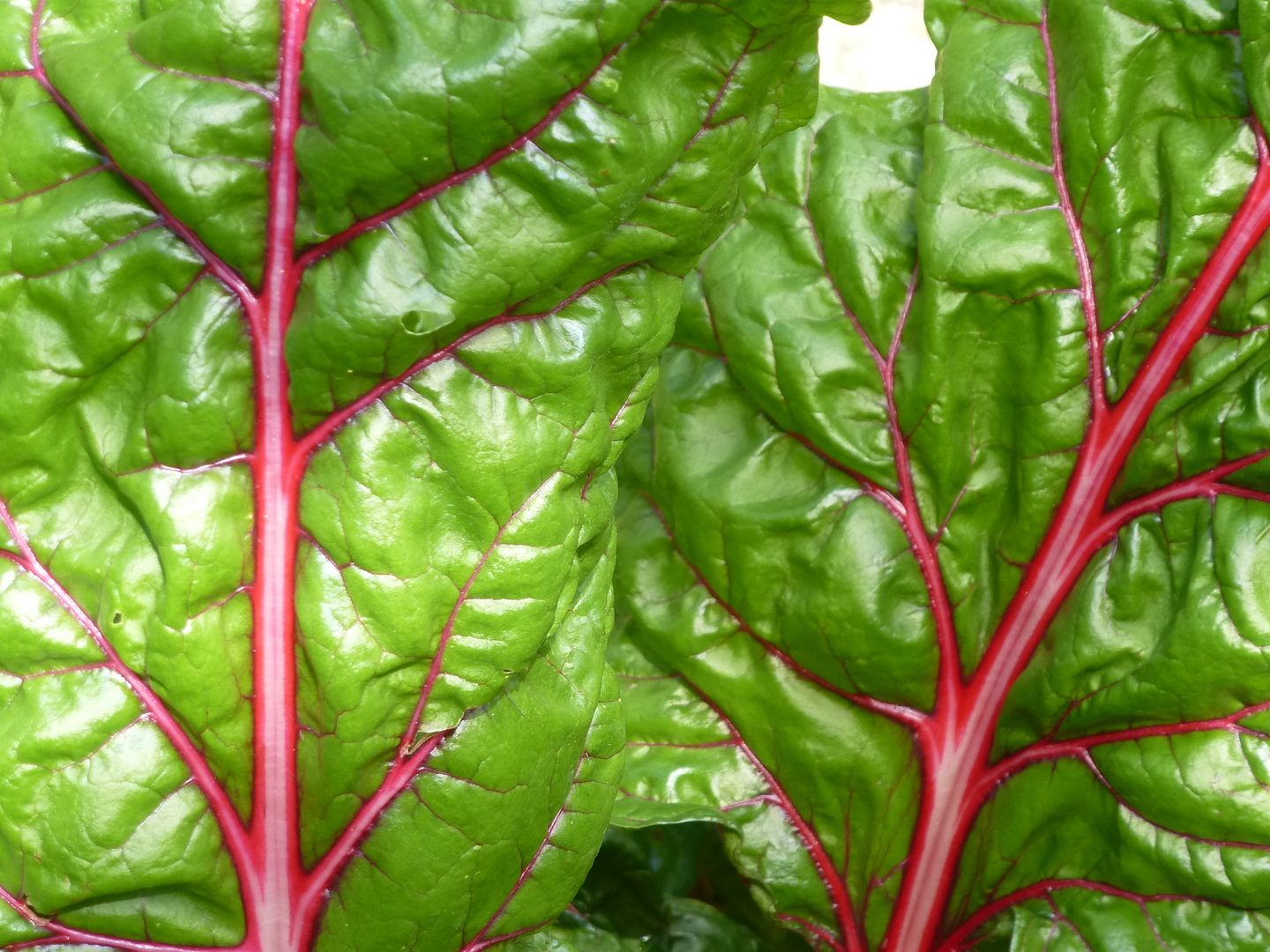
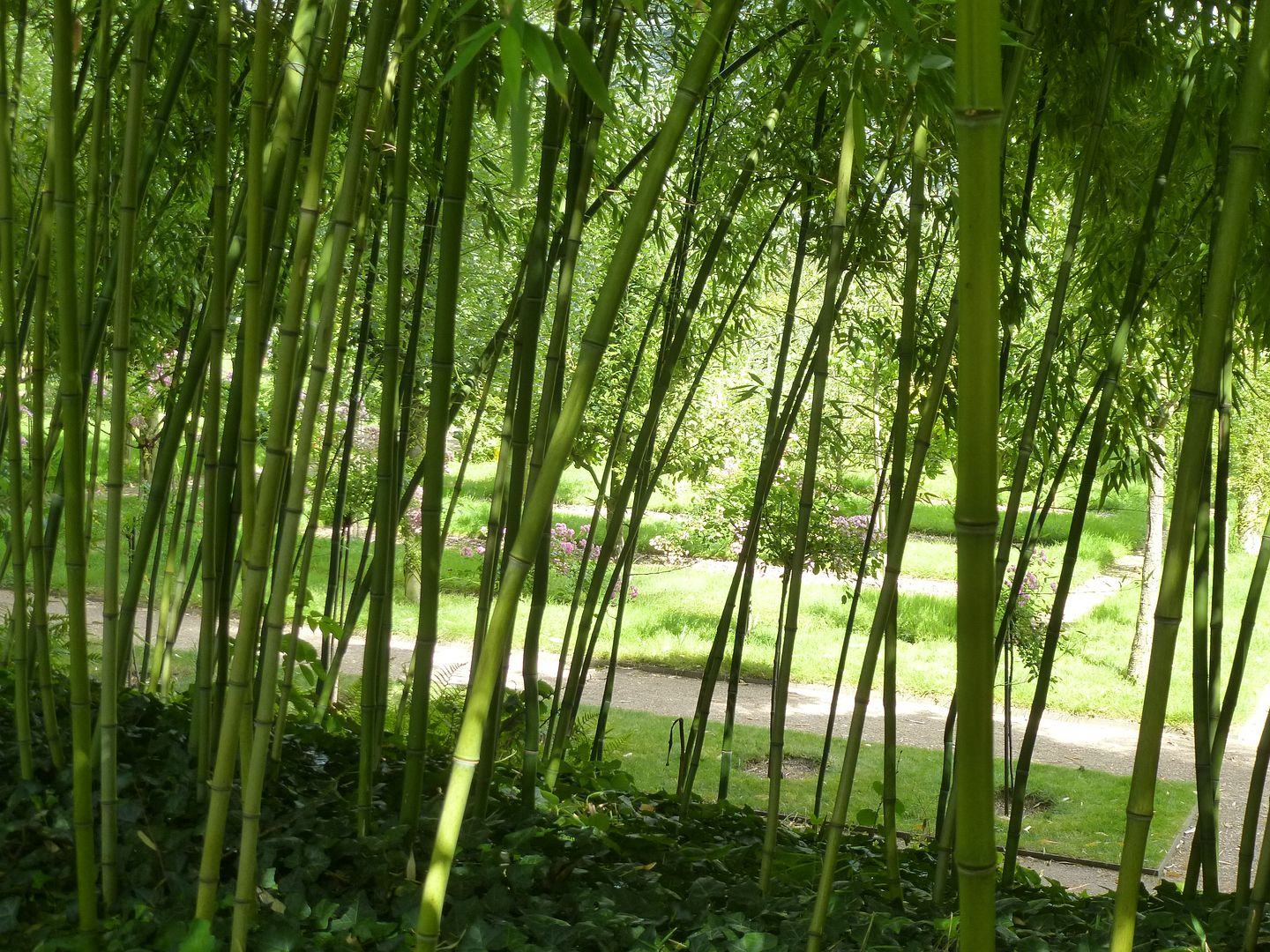
I should mention that there were a lot of busy gardeners doing this sort of stuff.
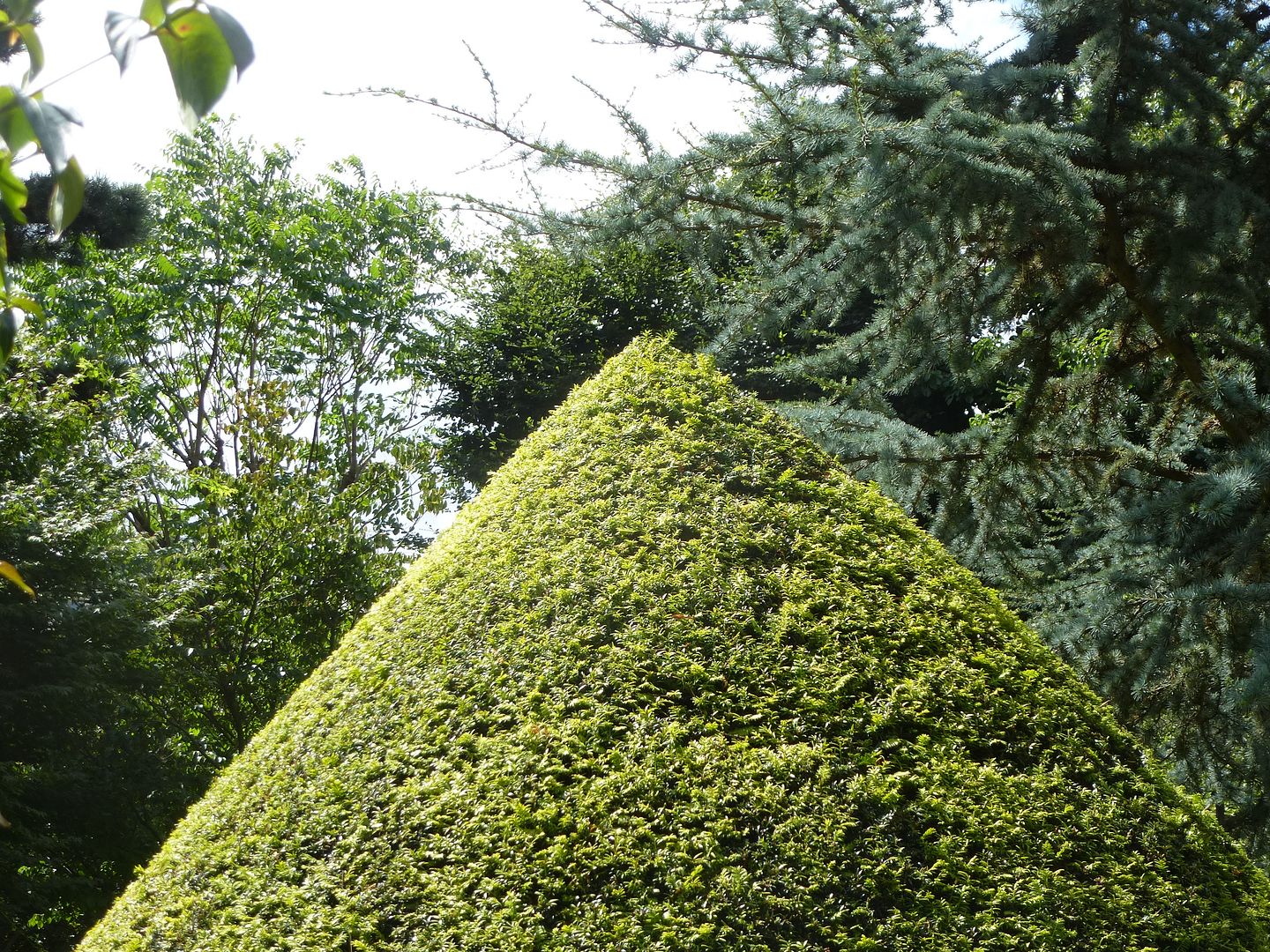
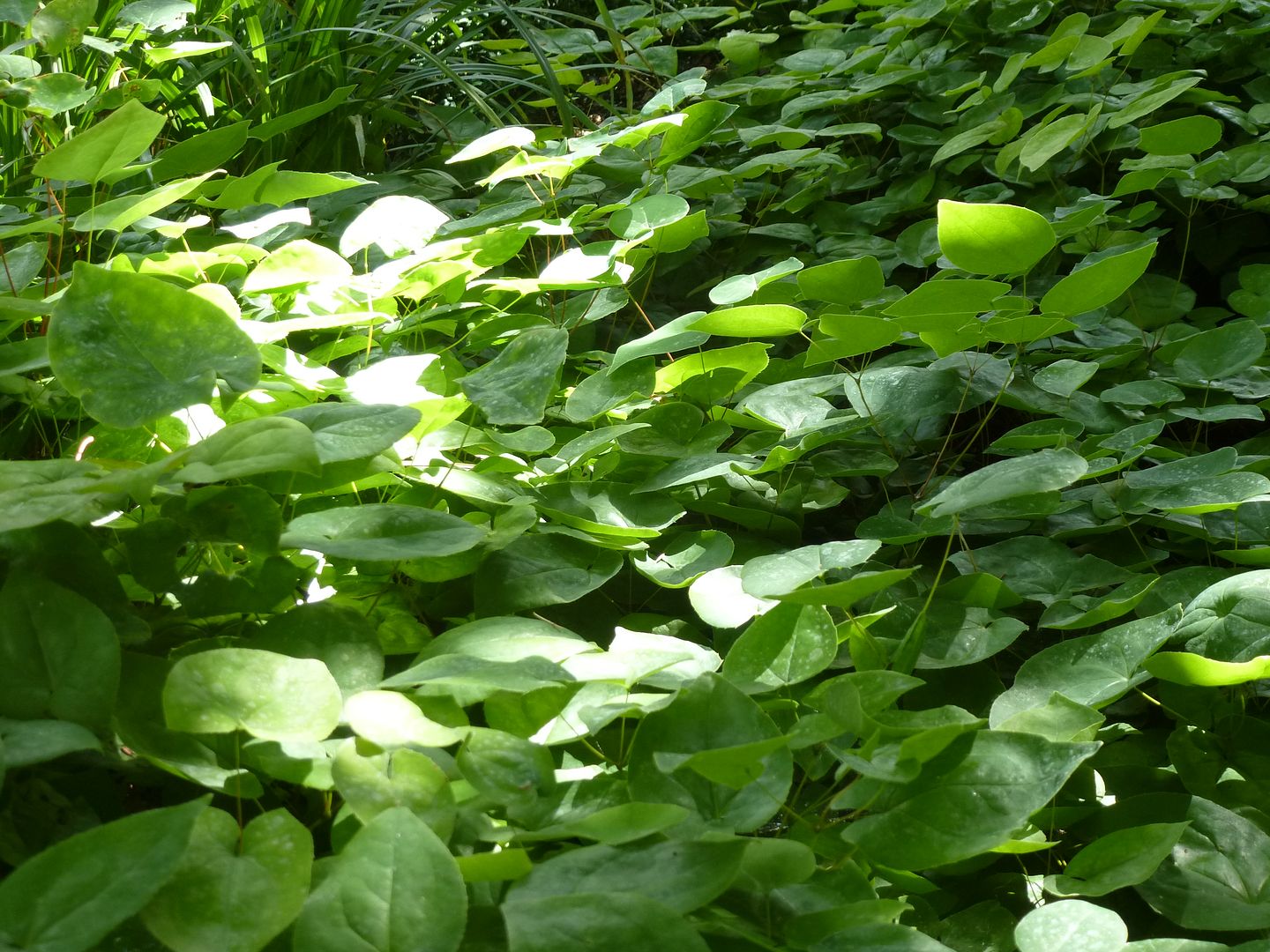



I should mention that there were a lot of busy gardeners doing this sort of stuff.


Just inside the door, there was a big sign indicating the upcoming garden season 2012-2013. However, my picture is pretty bad, so it's probably better to check the details on the Albert Kahn website.

The small museum is obviously worth a glance.


There are just a few small objects to help illustrate the autochromes.

And what did colour photographs look like 100 years ago?


Obviously many improvements have been made, but I still find it extraordinary that colour attempts were made so long ago.
This is the entrance building and museum, so obviously not Albert Kahn's house.
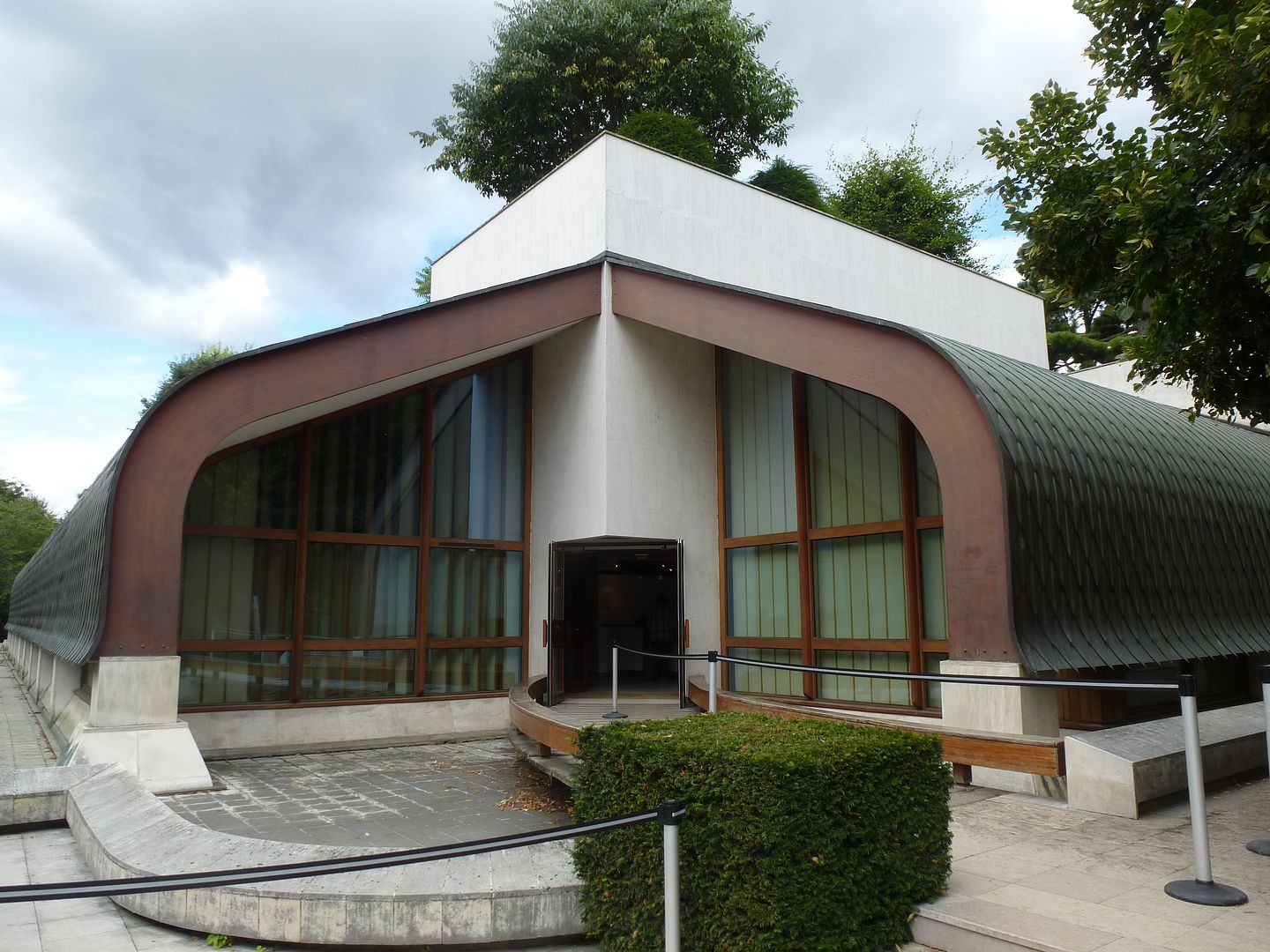
Japanese restaurants are available next door. One was closed for August.

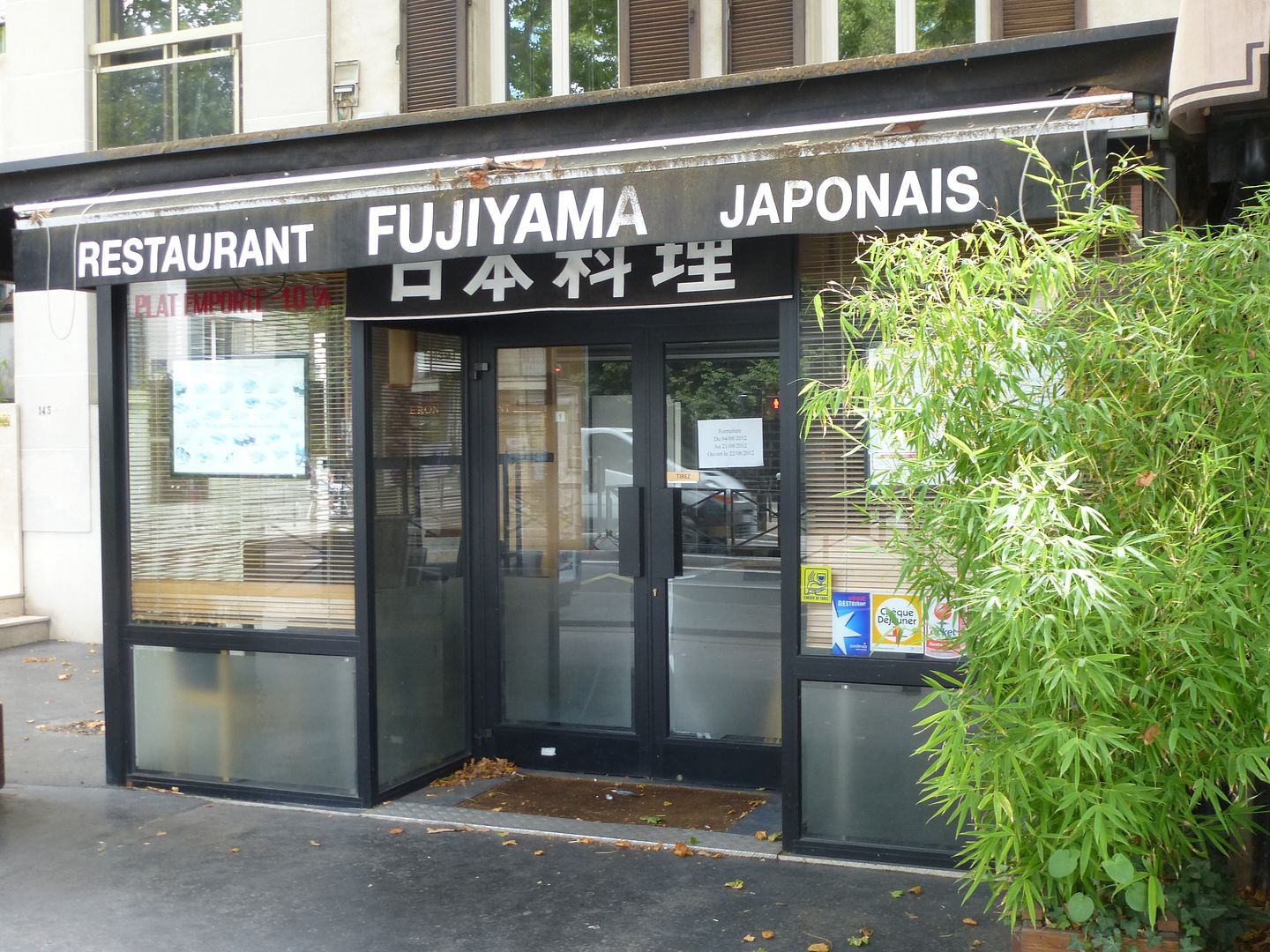

Japanese restaurants are available next door. One was closed for August.


If you're afraid of getting lost in the suburbs, you shouldn't be. Here is a photo of the entrance, and the second photo shows just how close it is to the metro station.










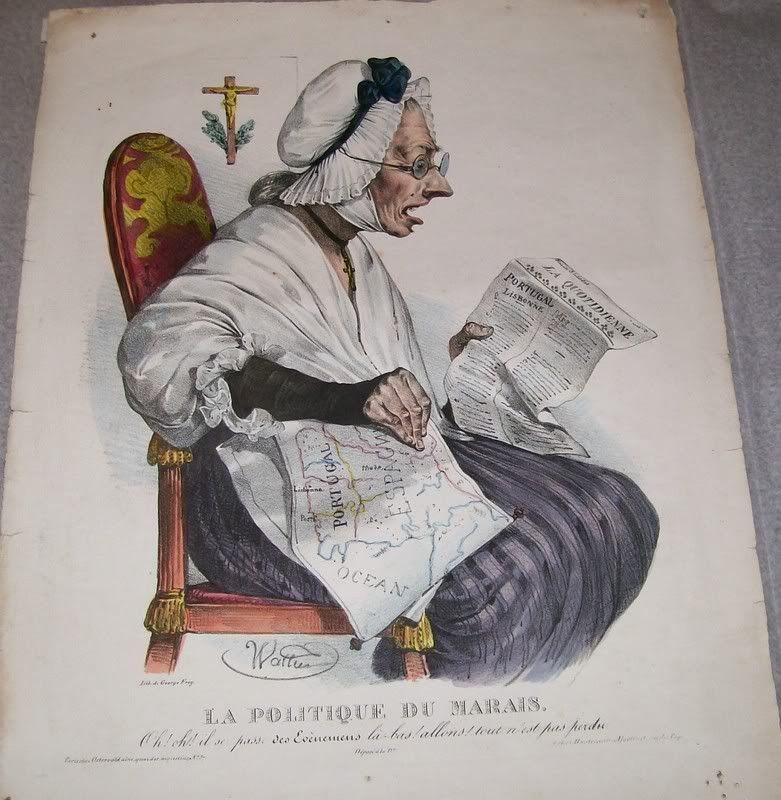


 Let the riot begin! LOL -
Let the riot begin! LOL -  hahahha
hahahha